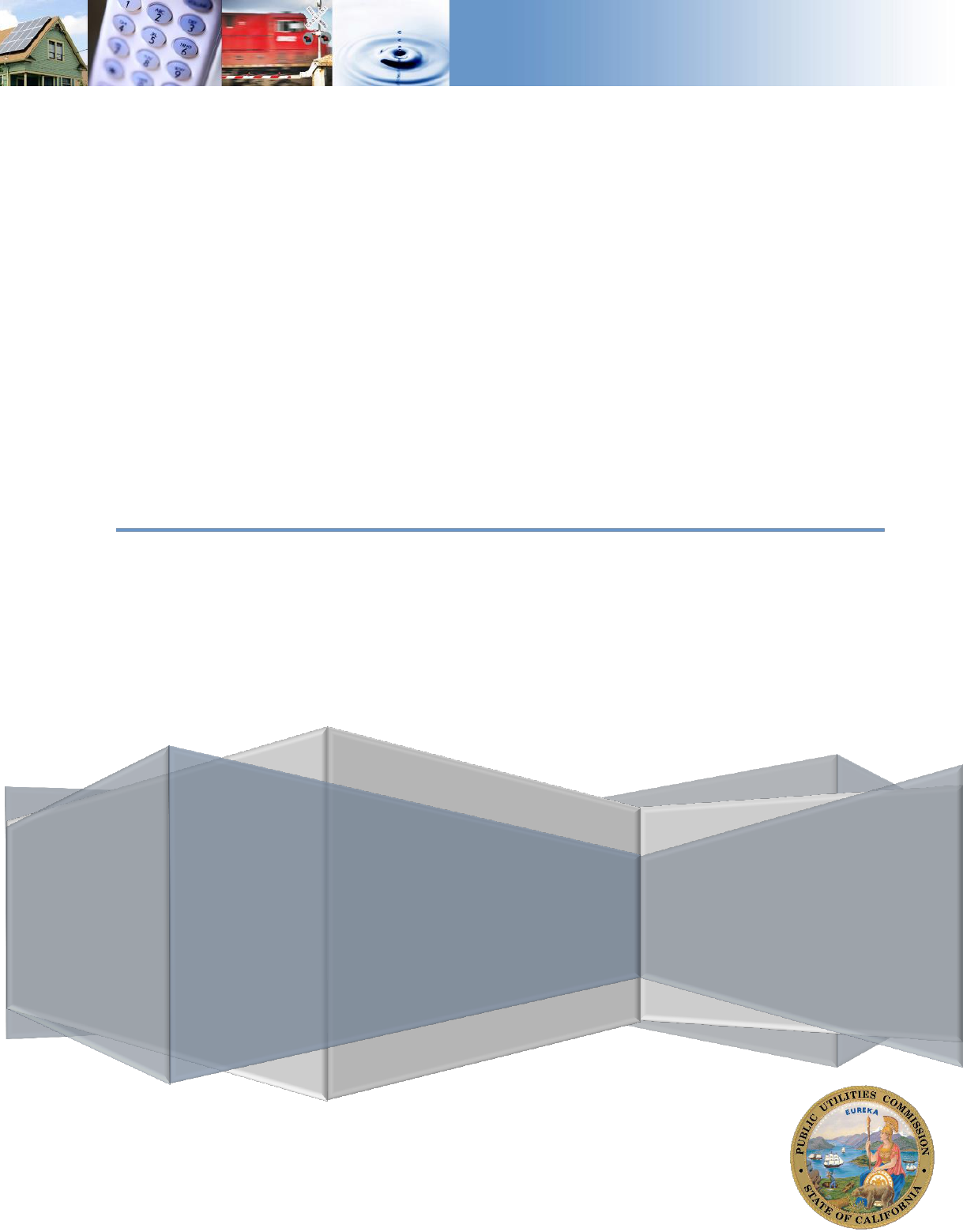
May 2018
Energy Efficiency Portfolio
Report
CALIFORNIA PUBLIC UTILITIES COMMISSION

Energy Efficiency Report | 1
Table of Contents
Acronyms ............................................................................................................................................................................. 7
Executive Summary ............................................................................................................................................................ 8
Scope of California’s Energy Efficiency Programs ................................................................................................... 8
Portfolio Impacts and Success of the 2013-2015 Energy Efficiency Programs .................................................. 8
Introduction ....................................................................................................................................................................... 13
Scope of this Report .................................................................................................................................................... 13
Organization of this Report ........................................................................................................................................ 14
Evaluation Methodology and Terminology ............................................................................................................. 14
2013-2015 Portfolio Overview ....................................................................................................................................... 16
Goals and Overview of 2013-2015 Portfolio Activities ......................................................................................... 16
Impacts of the 2013-2015 Energy Efficiency Portfolio ......................................................................................... 17
Common Challenges across the Portfolio ................................................................................................................ 25
Residential .......................................................................................................................................................................... 26
Overview ........................................................................................................................................................................ 26
Estimated Savings ........................................................................................................................................................ 26
Residential Energy Efficiency Programs .................................................................................................................. 27
Highlights....................................................................................................................................................................... 27
Findings .......................................................................................................................................................................... 28
Path to Statewide Goals .............................................................................................................................................. 30
Commercial ........................................................................................................................................................................ 32
Overview ........................................................................................................................................................................ 32
Estimated Savings ........................................................................................................................................................ 33
Commercial Programs ................................................................................................................................................. 33
Highlights....................................................................................................................................................................... 34
Findings .......................................................................................................................................................................... 35
Path to Statewide Goals .............................................................................................................................................. 36
Institutional Partnerships ................................................................................................................................................. 38
Overview ........................................................................................................................................................................ 38
Estimated Savings ........................................................................................................................................................ 38
Institutional Partnership Programs ........................................................................................................................... 39
Highlights....................................................................................................................................................................... 40
Energy Efficiency Report | 2
Findings .......................................................................................................................................................................... 40
Industrial and Agriculture ................................................................................................................................................ 41
Overview ........................................................................................................................................................................ 41
Estimated Savings ........................................................................................................................................................ 41
Industrial & Agricultural Programs ........................................................................................................................... 42
Highlights....................................................................................................................................................................... 43
Findings .......................................................................................................................................................................... 43
Path to Statewide Goals .............................................................................................................................................. 45
Heating, Ventilation, and Air Conditioning .................................................................................................................. 46
Overview ........................................................................................................................................................................ 46
Estimated Savings ........................................................................................................................................................ 47
HVAC Energy Efficiency Programs ......................................................................................................................... 47
Highlights....................................................................................................................................................................... 48
Findings .......................................................................................................................................................................... 48
Path to Statewide Savings ........................................................................................................................................... 51
Lighting ............................................................................................................................................................................... 52
Overview ........................................................................................................................................................................ 52
Estimated Savings ........................................................................................................................................................ 53
Lighting Programs ........................................................................................................................................................ 53
Findings .......................................................................................................................................................................... 54
Path to Statewide Goals .............................................................................................................................................. 56
Zero Net Energy / New Construction ......................................................................................................................... 57
Overview ........................................................................................................................................................................ 57
Estimated Savings ........................................................................................................................................................ 58
Zero Net Energy / New Construction Programs .................................................................................................. 58
Highlights....................................................................................................................................................................... 59
Findings .......................................................................................................................................................................... 59
Path to Statewide Goals .............................................................................................................................................. 60
Codes and Standards ........................................................................................................................................................ 62
Overview ........................................................................................................................................................................ 62
Estimated Savings ........................................................................................................................................................ 63
Codes and Standards Programs ................................................................................................................................. 63
Highlights....................................................................................................................................................................... 64
Energy Efficiency Report | 3
Findings .......................................................................................................................................................................... 67
Path to Statewide Goals .............................................................................................................................................. 68
Integrated Demand-Side Management .......................................................................................................................... 69
Overview ........................................................................................................................................................................ 69
Estimated Savings ........................................................................................................................................................ 69
IDSM Programs............................................................................................................................................................ 69
Highlights....................................................................................................................................................................... 70
Findings .......................................................................................................................................................................... 70
Path to Statewide Goals .............................................................................................................................................. 71
Workforce Education & Training .................................................................................................................................. 72
Overview ........................................................................................................................................................................ 72
Estimated Savings ........................................................................................................................................................ 72
WE&T Programs ......................................................................................................................................................... 72
Highlights....................................................................................................................................................................... 73
Findings .......................................................................................................................................................................... 74
Path to Statewide Goals .............................................................................................................................................. 75
Marketing, Education, and Outreach ............................................................................................................................ 76
Overview ........................................................................................................................................................................ 76
Estimated Savings ........................................................................................................................................................ 76
Marketing, Education, and Outreach Programs ...................................................................................................... 76
Highlights....................................................................................................................................................................... 77
Findings .......................................................................................................................................................................... 79
Path to Statewide Goals .............................................................................................................................................. 83
Emerging Technologies ................................................................................................................................................... 84
Overview ........................................................................................................................................................................ 84
Estimated Savings ........................................................................................................................................................ 84
Emerging Technologies Programs ............................................................................................................................ 85
Highlights....................................................................................................................................................................... 85
Findings .......................................................................................................................................................................... 85
Path to Statewide Goals .............................................................................................................................................. 87
Local Government Partnerships .................................................................................................................................... 88
Overview ........................................................................................................................................................................ 88
Energy Efficiency Report | 4
Estimated Savings ........................................................................................................................................................ 89
Local Government Partnership Programs ............................................................................................................... 89
Highlights....................................................................................................................................................................... 90
Findings .......................................................................................................................................................................... 90
Path to Statewide Goals .............................................................................................................................................. 93
Regional Energy Networks & Community Choice Aggregators .............................................................................. 94
Overview ........................................................................................................................................................................ 94
Estimated Savings ........................................................................................................................................................ 95
Overview of Non-IOU Programs ............................................................................................................................. 96
Highlights....................................................................................................................................................................... 97
Findings .......................................................................................................................................................................... 98
Finance.............................................................................................................................................................................. 101
Overview ...................................................................................................................................................................... 101
Estimated Savings ...................................................................................................................................................... 101
Energy Efficiency Financing Programs .................................................................................................................. 101
Highlights..................................................................................................................................................................... 105
Findings ........................................................................................................................................................................ 106
Path to Statewide Goals ............................................................................................................................................ 107
Public Utilities Code 913.9 Report ............................................................................................................................... 108
Glossary ............................................................................................................................................................................ 110
Appendices ....................................................................................................................................................................... 115
Appendix A: IOU Savings Compared to CPUC Savings Goals ......................................................................... 115
Appendix B: Energy Savings by Sector and End Use .......................................................................................... 119
Appendix C: Emissions Reductions ........................................................................................................................ 129
Appendix D: Cost-Effectiveness Results ............................................................................................................... 131
Appendix E: Program Level Detail – Net Lifecycle kW, kWh, Therms ........................................................... 134
Appendix F: Ex-Post Gross Lifecycle Savings by Sector, GWh, MMTherms ................................................ 135
Appendix G: Processing and Updating Utility Claim Data with Evaluation Results Data ........................... 143
Appendix H: Evaluation Decision Framework .................................................................................................... 146
Appendix I: Order-Independent Impacts of Ex Post Parameter updates on Ex Ante Reported Parameters.
....................................................................................................................................................................................... 159
Appendix J: Chapter Data Overlaps ....................................................................................................................... 170

Energy Efficiency Report | 5
Tables & Figures
Table ES-1: Energy Efficiency Savings Goals ............................................................................................................... 8
Table ES-2: 2013-2015 Energy Efficiency Programs Energy and Emissions Savings ............................................ 9
Table ES-3: Total Resource Cost by Year .................................................................................................................... 11
Table 1: 2013-2015 IOU Program Goals ...................................................................................................................... 16
Table 2: Savings, Emissions, and Cost-Effectiveness of 2013-2015 Portfolio ....................................................... 18
Table 3: Goals for the 2013-2015 Portfolio ................................................................................................................. 19
Table 4: Residential Sector Savings Snapshot .............................................................................................................. 26
Table 5: Commercial Building Types by Square Footage ......................................................................................... 32
Table 6: Commercial Sector Savings Snapshot ............................................................................................................ 33
Table 7: Institutional Partnerships Programs Savings Snapshot ............................................................................... 39
Table 8: Institutional Partnerships - Resource Partnerships ...................................................................................... 39
Table 9: Institutional Partnerships - Non-Resource Partnerships ............................................................................ 40
Table 10: Industrial and Agriculture Sector Savings Snapshot* ................................................................................ 41
Table 11: HVAC Program Savings Snapshot* ............................................................................................................. 47
Table 12: Lighting Savings Snapshot ............................................................................................................................. 53
Table 13: Zero Net Energy Programs Savings Snapshot ........................................................................................... 58
Table 14: 2013-2015 Codes and Standards Portfolio Goals ...................................................................................... 62
Table 15: Table 14: 2013-2015 Codes and Standards Savings Snapshot ................................................................. 63
Table 16: Title 20 Standards ............................................................................................................................................ 65
Table 17: Federal Standards ............................................................................................................................................ 65
Table 18: Title 24 Standards ............................................................................................................................................ 66
Table 19: Codes and Standards ....................................................................................................................................... 66
Table 20: Compliance Improvement Training Classes ............................................................................................... 67
Table 21: Marketing, Education & Outreach Objectives ........................................................................................... 77
Table 22: Emerging Technologies Program Budget by IOU .................................................................................... 84
Table 23: Local Government Partnerships Savings Snapshot ................................................................................... 89
Table 24: RENs and CCAs Savings Snapshot ............................................................................................................. 95
Table 25: Subprograms Included in the EM&V Studies ............................................................................................ 98
Table 26: On-Bill Financing Loan fund Activities from Program Inception to December 31, 2015 ............... 104
Table 27: OBF Loans Issued Statewide ...................................................................................................................... 104
Table 28: Statewide Lending by Market ...................................................................................................................... 105
Table 29: Cumulative Loan Defaults and Partial Payments since Inception through 2015 ............................... 106
Table A-1: Statewide Energy Savings for 2013-2015 Portfolio: Goals, Reported, Evaluated ............................ 115
Table A-2: PG&E Energy Savings for 2013-2015 Portfolio ................................................................................... 116
Table A-3: SCE Energy Savings for 2013-2015 Portfolio ........................................................................................ 116
Table A-4: SCG Energy Savings for 2013-2015 Portfolio ....................................................................................... 117
Table A-5: SDG&E Energy Savings for 2013-2015 Portfolio ................................................................................ 117
Table B-1a: 2013-2015 Statewide First Year Energy Savings by Sector ................................................................ 120
Table B-1b: 2013-2015 Statewide Lifecycle Energy Savings by Sector .................................................................. 121
Table B-2a: 2013-2015 First Year Savings by Sector and Program Administrator .............................................. 122
Table B-2b: 2013-2015 Lifecycle Savings by Sector and Program Administrator ............................................... 123
Table B-3a: 2013-2015 Statewide First Year Energy Savings by End Use ............................................................ 124
Energy Efficiency Report | 6
Table B-3b: 2013-2015 Statewide Lifecycle Savings by End Use ........................................................................... 125
Table B-4a: 2013-2015 Statewide First Year Savings by Sector and End Use ...................................................... 126
Table B-4b: 2013-2015 Statewide Lifecycle Savings by Sector and End Use ....................................................... 127
Table C-1a: Evaluated First Year Emissions Reductions by Program Administrator ......................................... 128
Table C-1b: Evaluated Lifecycle Emissions Reductions by Program Administrator .......................................... 129
Table D-1: IOU Reported and Commission Evaluated Cost Effectiveness - with and without Codes &
Standards (C&S) .............................................................................................................................................................. 131
Table H-1: Impact Evaluation Reports by Program Year(s) Studied ..................................................................... 145
Table H-2: Ex-Post Targeted ESPI Classifications and Uncertain Measures and Evaluation Reports ............ 146
Table H-3: Impact Evaluation Reports by Program Year(s) Studied ..................................................................... 152
Table H-4: Ex-Post Targeted ESPI Classifications and Uncertain Measures and Evaluation Reports ............ 153
Table J-1: Savings Impacts of Lighting and HVAC Measures on Market Sectors ............................................... 169
Figure ES-1: 2013-2015 Energy Efficiency Goal Attainment by IOU .................................................................... 10
Figure 1: 2013-2015 Energy Efficiency Goal Attainment by IOU ........................................................................... 19
Figure 2: Annual IOU Portfolio Cost Effectiveness Ratios (2013-2015) ................................................................ 20
Figure 3: Portfolio Cost-Effectiveness Ratios, Including Codes & Standards ....................................................... 21
Figure 4: Percentage of Electricity Savings by End Use ............................................................................................. 23
Figure 5: Percentage of Natural Gas Savings by End Use ......................................................................................... 24
Figure 6: Percent of 2013-2015 Evaluated Net Energy Savings from Lighting Measures by Sector .................. 53
Figure 7: Percent of Energy Savings by Lighting Measure ........................................................................................ 54
Figure 8: Codes and Standards Advocacy Program Evaluation Protocol ............................................................... 64
Figure 9: Summary of SW ME&O Objectives and Associated Objectives ............................................................. 78
Figure 10: SW ME&O Program Performance Against Approved Metrics ............................................................. 80

Energy Efficiency Report | 7
Acronyms
C & S Codes and Standards
CCA Community Choice Aggregator
CEC California Energy Commission
CLEESP California Long-Term Energy Efficiency Strategic Plan (Strategic Plan)
CO2 Carbon Dioxide
CPUC California Public Utilities Commission
EMT Energy Management Technology
EUC Energy Upgrade California
ETP Emerging Technologies Program
EM&V Evaluation, Measurement, and Verification
GWh Gigawatt-hours
HVAC Heating, Ventilation, Air Conditioning
IDSM Integrated Demand Side Management
IOU Investor-owned utility
MCE Marin Clean Energy
ME&O Marketing, Education, & Outreach
MMBTU Million British Thermal Units
NTGR Net to Gross Ratio
NOx Nitrogen Oxide
PA Program administrator
PIP Program Implementation Plan
PG&E Pacific Gas & Electric
REN Regional Energy Network
SCE Southern California Edison
SCG Southern California Gas Company
SDG&E San Diego Gas & Electric
SEM Strategic Energy Management
TRC Total Resource Cost
ZNE Zero Net Energy

Energy Efficiency Report | 8
Executive Summary
Scope of California’s Energy Efficiency Programs
The California Public Utilities Commission’s (CPUC) Energy Efficiency Portfolio Report summarizes the
achievements of California’s energy efficiency programs implemented from the start of 2013 through 2015.
These programs help California become more energy efficient by reducing electricity and natural gas
consumption while collectively resulting in significant reductions to California’s greenhouse gas emissions.
Energy savings were measured through more than 100 evaluation studies conducted across the set of more
than 400 programs that constituted the 2013-2015 energy efficiency program portfolio. These studies verified
the energy savings and accurately measured the progress toward meeting state energy efficiency and climate
goals. The success of energy efficiency programs affects the future need for additional power plants and
related energy infrastructure. Accurate measurement of the savings impact of California’s energy efficiency
programs, through these evaluation studies, is therefore of critical importance to planning California’s energy
future. Impact evaluations of programs take place after the program year of interest has concluded. These
evaluation studies can take a year or more to complete, with additional time needed for data processing. The
CPUC thus received data from the last of the 2015 impact evaluations in mid-2017. Compilation and analysis
of the full program cycle data set, along with writing itself, were then conducted to produce this report.
While the CPUC provides direction and oversight for the energy efficiency programs, the programs
themselves are implemented and administered by program administrators (PAs). Program administrators in
the 2013-2015 energy efficiency portfolio included the four major investor-owned utilities (IOUs): Pacific
Gas & Electric (PG&E), Southern California Edison (SCE), Southern California Gas Company (SCG), and
San Diego Gas & Electric (SDG&E), as well as two regional energy networks, BayREN and SoCalREN, and
one community choice aggregator, Marin Clean Energy (MCE).
The 2013-2015 portfolio cycle is the last cycle to follow the 3-year program cycle structure. In 2013, the
CPUC issued the “Order Instituting Rulemaking Concerning Energy Efficiency Rolling Portfolios, Policies,
Programs, Evaluation, and Related Issues.” The Rolling Portfolio framework is envisioned as a long-term
(e.g. 10-year) authorization and planning framework for energy efficiency programs after 2015. The CPUC is
currently in the process of implementing this new framework.
Portfolio Impacts and Success of the 2013-2015 Energy Efficiency Programs
The CPUC considers a portfolio successful if the program meets the energy savings goals set at the beginning
of the program and is cost-effective. The effectiveness of the energy efficiency portfolio is measured via four
distinct metrics (corresponding units in parentheses):
energy savings (electricity in GWh and natural gas in MM therms)
peak electricity demand savings (MW)
emissions savings (tons of CO2 and tons of NOx)
Cost-effectiveness (overall dollar savings of from the program exceeds the program costs)
Throughout this document, there is a distinction made between “net” and “gross” savings. This distinction
refers to the fact that some program incentives are provided to customers who would have adopted the

Energy Efficiency Report | 9
energy efficiency equipment or practice even without at utility program. The gross savings estimate includes
these so-called free riders (i.e., gross savings estimates simply represent the estimated savings per EE widget
times the number of rebates provided for the EE widget), whereas the net savings estimates back out savings
attributed to these free riders to determine what savings occurred as a result of the EE program’s existence.
The discussion of energy savings at the portfolio level focuses on evaluated gross savings because the 2013-
2015 portfolio goals were set for evaluated gross savings. In individual sector or program chapters, however,
the default savings values discussed are evaluated net savings, in order to focus the discussion on the savings
that occurred as a direct result of program impacts and because cost-effectiveness is calculated based on net
savings.
Table ES-1: Energy Efficiency Savings Goals
2013-2015 Energy Efficiency Portfolio Goals
Electric
(GWh)
Demand
(MW)
Natural
Gas
(MM
Therms)
Program Goals
Gross
4,410
830
130
Codes and Standards Goals
1,756
243
7
Combined Goals
6,166
1,073
137
For the 2013-2015 portfolio, the CPUC goals for the energy efficiency program were a reduction in electricity
usage of 4,410 GWh and 130MMtherms in gas usage. The CPUC allowed program administrators to include
low-income program savings in their goal attainment numbers, but established separate codes and standards
savings goals.
1
Table ES-1 shows the breakdown of savings goals for the program portfolio and codes and
standards. The combined goals are shown for illustrative purposes only.
The 2013-2015 Energy Efficiency Portfolio surpassed electricity savings goals while staying
within budget
The 2013-2015 energy efficiency programs served an important role in California’s energy sector, providing
large amounts of evaluated and verified energy savings and, by extension, avoiding large quantities of
greenhouse gases and particulate emissions. These programs achieved all of this while staying within the
allocated 3-year budget for the portfolio ($2.6 billion in expenditures out of a budget of $2.7 billion).
The energy and emissions savings accrued by the portfolio over the 3-year program cycle are shown in Table
ES-2. The realization rate is the ratio of evaluated savings to savings reported (pre-evaluation) by the Program
Administrator. It is an important metric in determining the accuracy of reporting and energy savings
estimates.
1
Decision 12-11-015, “Decision Providing Guidance on 2013-2014 Energy Efficiency Portfolios and 2012 Marketing, Education, and
Outreach” Date of Issuance: 18 May 2012, p.87
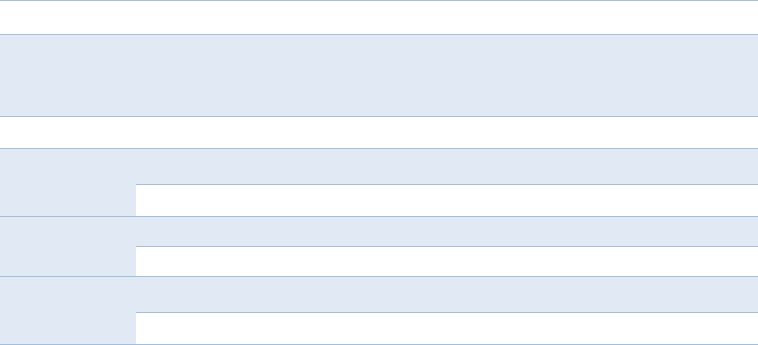
Energy Efficiency Report | 10
Table ES-2: 2013-2015 Energy Efficiency Programs Energy and Emissions Savings
(1)
Energy Savings
Emissions
(2)
Electric
(GWh)
Demand
(MW)
Natural
Gas
(MM
Therms)
CO
2
(Million
Tons)
NOx
(1000
Pounds)
Goals
Gross
4,410
830
130
Evaluated
Portfolio
Savings
Gross
5,070
954
100
7,053
2,607
Net
3,230
624
67
4,102
1,568
Realization
Rate
(3)
Gross
93%
94%
76%
Net
83%
87%
75%
Codes &
Standards
Savings
(4)
Gross
12,282
2,267
93
Net
3,597
546
39
(1) First-year savings. Program savings do not include low-income savings or Codes & Standards
savings. Program savings are used to calculate cost-effectiveness and to calculate emissions
savings.
(2) Emissions are not calculated for low-income programs or Codes and Standards savings
(3) Realization rate describes the ratio of evaluated savings to savings reported (pre-evaluation) by
the Program Administrator.
(4) See the Codes & Standards chapter for more information on Codes & Standards savings and
programs
The 2013-2015 energy efficiency portfolio surpassed the electricity savings goals set by the CPUC, as shown
in Figure ES-1. The 2013-2015 energy efficiency program portfolio saved 5,070 gigawatt-hours of electricity,
954 megawatts of demand, and 100 million therms of natural gas, exclusive of the savings attributed to the
codes & standards and low-income programs. These savings are equivalent to avoiding the annual electricity
consumption of over 790,000 average California residences and the annual natural gas consumption of over
323,000 average California homes.
The Commercial customer sector surpassed the Residential sector as the largest share of electric savings,
compared to the 2010-2012 energy efficiency portfolio. This shift is mostly due to the successful market
adoption of efficient lighting in the Residential sector. As market adoption grows, the available savings for
lighting measures in the Residential sector decrease.

Energy Efficiency Report | 11
Figure ES-1: 2013-2015 Energy Efficiency Goal Attainment by IOU
For the 2013-2015 program cycle, the CPUC allowed PAs to include low-Income program savings in the
goal attainment calculation. The above chart is based on evaluated gross savings includes REN and CCA
savings within their respective IOU counterpart count and low-income savings. Codes and Standards
savings are not included in this chart.
Natural gas savings achieved 88 percent of their CPUC-set savings goals for the portfolio. In keeping with
past trends, the industrial customer sector contributed the largest share of natural gas savings throughout the
program cycle.
The program administrators exceeded their program savings goals for electric savings and peak demand
savings (120 percent and 121 percent, respectively), and came close to the natural gas savings goal (88
percent).
2
Codes and Standards savings greatly exceeded goals. Electric codes and standards savings achieved
223 percent of the gigawatt-hour savings goal and 237 percent of the peak demand savings goal, while natural
gas savings were 186 percent of the codes and standards savings goal. Codes and Standards savings are shown
in Table ES-2.
In addition to determining the total savings achieved, evaluation studies also calculate how much of these
savings can be directly attributed to program interventions, rather than other factors such as normal market
adoption. Evaluations of the 2013-2015 program cycle determined that CPUC energy efficiency programs
were the driving force behind California’s energy savings. Two-thirds of the energy savings achieved during
the 2013-2015 period can be tied directly to the energy efficiency programs implemented by program
administrators.
3
2
See Appendix A for further information on Goal Attainment calculations and a breakdown of goals and savings by program
administrator.
3
This calculation is known as the net-to-gross ratio and is explained further in the glossary.
123%
141%
111%
122%
112%
103%
97%
48%
72%
120%
121%
88%
0%
20%
40%
60%
80%
100%
120%
140%
160%
GWh
MW
MM Therms
GWh
MW
MM Therms
GWh
MW
MM Therms
GWh
MW
MM Therms
GWh
MW
MM Therms
PGE SCE SDGE SCG Portfolio
2013-2015 Energy Efficiency Portfolio Percent Savings
Programs Goal Attainment

Energy Efficiency Report | 12
The evaluated Energy Efficiency Portfolio was not cost-effective for the 2013-2015 program cycle
In addition to energy savings goals, the portfolio is evaluated for its cost-effectiveness. The cost effectiveness
of the portfolio is evaluated using two different cost-effectiveness tests: the Total Resource Cost (TRC) and
Program Administrator Cost (PAC) tests (together, the “the dual test”).The TRC equation divides the dollars
saved from energy efficiency by the costs incurred by both the PA (IOU, REN, or CCA) and the program
participants (customers), combined. Generally, activities that pass the TRC test will pass the PAC test, making
TRC the de facto test of portfolio cost effectiveness.
The combined portfolio for all program administrators, excluding Codes & Standards, as measured by Total
Resource Cost test (TRC), was 1.17 in 2013, 0.99 in 2014, and 0.78 in 2015, as shown in Table ES-3.
4
The
evaluated portfolio TRC for the three year (2013-2015) period was 0.87. Some reduction in cost –
effectiveness was expected in 2015 as the program administrators began preparing for the new Rolling
Portfolio framework that is currently in the process of being implemented. As program administrators
transition to this new framework, it is expected to see positive cost-effectiveness impacts.
Table ES-3: Total Resource Cost by Year
Cost-effectiveness (Total Resource Cost)
2013-2015 Energy Efficiency Programs
2013
2014
2015
13-15 Program
Cycle
Evaluated Portfolio TRC
1.17
0.99
0.78
0.87
As noted previously, the CPUC does not include codes and standards savings or costs when determining
portfolio cost-effectiveness. Cost-effectiveness is calculated separately for the C&S programs and is
consistently very high. As noted in the guidance decision for this program cycle, the CPUC separated C&S
from the other programs in order to, “avoid the risk of overemphasis on codes and standards advocacy at the
expense of the utility programs that are needed to ensure technologies and building practices are available and
affordable as they become required by code.”
5
4
An evaluated TRC score of 1.0 or higher indicates a portfolio is cost effective, while a score lower than 1.0 indicates a portfolio is
not cost effective.
5
“Goals Proposal,” Attachment A of 2013-2014 Energy Efficiency Goals Ruling at 9.

Energy Efficiency Report | 13
Introduction
Scope of this Report
The CPUC’s Energy Efficiency Portfolio Report summarizes the achievements of the CPUC’s 2013-2015
energy efficiency programs, based on evaluation studies fielded during and after the three-year program cycle.
These programs help California become more energy efficient by reducing electricity and natural gas
consumption while, collectively, resulting in significant reductions in California’s greenhouse gas emissions.
The CPUC’s energy efficiency programs span a variety of economic sectors, encompassing residential homes
and commercial buildings, large and small appliances, lighting and HVAC end uses, industrial customers,
manufacturers, and agriculture. Within those sectors, efficiency programs achieve energy savings using a
number of different tools: financial incentives and rebates, research and development for energy efficiency
technologies, financing mechanisms, building codes and appliance standards development, and education and
public outreach.
The original guiding document for these programs is known as the California Long Term Energy Efficiency
Strategic Plan. This comprehensive plan is the state’s integrated framework of goals and strategies for saving
energy, covering government, utility, and private sector actions, and holds energy efficiency to its role as the
highest priority resource in meeting California’s energy needs.
6
Program administrators (PA) operate the energy efficiency programs ordered by the CPUC. PAs include the
IOU, regional energy networks (REN), and community choice aggregators (CCA).
7
The PAs are responsible
for implementing energy efficiency programs while the CPUC is responsible for guiding, overseeing, and
evaluating these activities to inform future policy direction, improve program design, and refine savings
estimates.
Specific guidance for the implementation of the 2013-2015 portfolio was administered to program
administrators through several CPUC decisions:
D.12-05-015, “Decision Providing Guidance on 2013-2014 Energy Efficiency Portfolios and 2012
Marketing, Education, and Outreach” (Proceeding R.09-11-014);
D. 12-11-015, “Approving 2013-2014 Energy Efficiency Programs and Budgets” (Proceeding
A1207001; A1207002; A1207003; A1207004);
D.14-10-046, “Decision Establishing Energy Efficiency Savings Goals and Approving 2015 Energy
Efficiency Programs and Budgets” (Proceeding R.13-11-005)
The Energy Efficiency Portfolio Report complies with Public Utilities Code section 913.5.
8
The CPUC issued
the last iteration of the Energy Efficiency Portfolio Report on March 2015 and summarized the 2010 – 2012
portfolio cycle. This report is based on the studies from the 2013-2015 portfolio cycle.
6
The California Long Term Energy Efficiency Strategic Plan can be accessed here: http://www.cpuc.ca.gov/General.aspx?id=4125
7
While the investor-owned utilities implement the bulk of energy efficiency programs statewide, the 2013-2015 portfolio cycle saw the
introduction of two new types of program administrators: regional energy networks and community choice aggregators.
8
Public Utilities Code 913.5: The CPUC shall submit a report to the Legislature by July 15, 2009, and triennially thereafter, on the
energy efficiency and conservation programs it oversees. The report shall include information regarding authorized utility budgets and

Energy Efficiency Report | 14
This report synthesizes and highlights the results from more than 100 evaluation studies conducted across a
set of more than 400 programs that constituted the 2013-2015 energy efficiency program portfolio. These
evaluation activities reviewed 65 percent of reported savings. Given the summary nature of this report,
readers are encouraged to return to the original source documents for a more comprehensive treatment of the
material summarized here, if interested in a particular sector or program area. The report provides references
to the original research described within and a list of impact evaluations is included in the appendices.
Organization of this Report
The report is organized into chapters that focus either on a customer sector (residential, commercial,
industrial, and agriculture) or on a crosscutting topic area (e.g. Codes and Standards, Lighting, HVAC) that
comprises an important program area. The inclusion of crosscutting topics as distinct chapters means that it
would be incorrect to sum the energy savings listed in each chapter to get the total portfolio savings. Each
chapter is simply a different view of a subset of the evaluation data. For instance, lighting programs’ energy
savings are addressed in their own chapter, although the savings from these end uses are included in relevant
customer sectors to show the contribution to lighting savings in that customer group. For synthesis of how
various sectors and end-uses affected the portfolio-level savings, please refer to the Overview sections below
or the Appendices.
The appendices to this report provide the detailed summaries of accomplishments by program administrator,
program, sector, and measure group. Detailed data on cost-effectiveness and emissions reductions impacts
are also provided in these appendices.
Evaluation Methodology and Terminology
The five evaluation, measurement, and verification (EM&V) research objectives for the portfolio are:
1. Savings Measurement and Verification
2. Program Evaluation
3. Market Assessment
4. Policy and Planning Support
5. Financial and Management Audits
These objectives are accomplished through three types of evaluation studies:
Impact Evaluations measure program impacts, estimating net changes in electricity usage, electricity
demand, usage of natural gas, and/or behavioral impacts that are expected to produce changes in
energy use.
9
Process Evaluations are systematic assessments of energy efficiency programs, products or services
for the purposes of identifying and recommending improvements that can be made to the program.
10
expenditures and projected and actual energy savings over the program cycle. (Added by renumbering Section 913.7 by Stats. 2016,
Ch. 842, Sec. 26. Effective January 1, 2017.)
9
California Public Utilities Commission, California Energy Efficiency Evaluation Protocols: Technical, Methodological, and Reporting Requirements
for Evaluation Professionals, April 2006 p.19
10
op. cit. note 9, p. 131

Energy Efficiency Report | 15
Market Studies gauge current market situations that inform savings baselines, identify and track
appropriate baseline metrics of market change, measure progress toward achieving long-term
Strategic Plan objectives, and inform estimates of remaining potential for energy efficiency.
Savings reported by the program administrators are evaluated and verified. Evaluated savings may differ from
reported savings because of a number of different factors including, the energy efficiency measure not being
installed properly, the use of incorrect hours of operation, or the use of incorrect baseline assumptions for
the reported values. In the 2013-2015 portfolio cycle, 69 percent of reported gross electricity savings and 68
percent of gross natural gas savings received some form of field evaluation. For the reported savings that are
not evaluated, the reported savings may be determined to be pass-through values using IOU-reported
savings.
11
Savings are reported as both gross savings and net savings. Gross savings are the savings, in total, that
occurred in a sector, program area, or portfolio. Net savings are the savings that are directly applicable to
program interventions, as in they would not have occurred if the program had not been implemented. The
difference between net and gross is attributed to free ridership, which describes savings that would have
occurred without program intervention.
A Note on the Numbers:
This report contains data on both the reported and evaluated, as well as gross and net, savings values. While
the reported savings are contained within tables and the appendices, any portfolio-level analysis in the
following chapters (e.g. percentage of portfolio calculations) is based on evaluated net savings values, except
where explicitly stated. The discussion of savings at the portfolio level focuses on evaluated gross savings
because the 2013-2015 portfolio goals were set for evaluated gross savings. Therefore, Staff compares
evaluated gross savings at the portfolio level to the evaluated gross savings goals. In individual sector or
program chapters, however, the default savings values discussed are evaluated net savings, in order to focus
the discussion on the savings that occurred as a direct result of program impacts.
Additionally, all savings data in tables or figures are first-year savings, inclusive of REN and CCA savings and
exclusive of codes and standards savings, except where explicitly stated. First-year savings are the savings that
a measure accrues in the first year after installation, as opposed to lifecycle savings that accrue over the entire
lifetime of the equipment or measure that was installed. Lifecycle savings are used in cost effectiveness
calculations.
All savings and expenditures data are sourced from the 2013-2015 evaluation data, prepared by Itron and
based on the results from all program evaluations.
11
Claimed savings may not be evaluated as they are determined to be pass through values, or accepted claims that do not fall within
the frame of an impact evaluation or may not evaluated due to resource or time constraints on evaluators.

Energy Efficiency Report | 16
2013-2015 Portfolio Overview
Goals and Overview of 2013-2015 Portfolio Activities
Based on CPUC direction for the 2013-2015 portfolio, the portfolio is considered successful if it is cost-
effective and meets all of the CPUC’s savings goals. Savings goals are set via CPUC decision, based on the
Energy Efficiency Potential and Goals study.
12
,
13
Goals were set for electric savings (expressed in gigawatt-
hours or GWh), peak megawatt load reductions (also called demand savings and expressed in megawatts or
MW), and natural gas savings (expressed in millions of therms or MM Therms). As previously noted, the
2013-2015 savings goals were set for gross savings, not net savings. Consequently, each IOU’s gross
(evaluated) savings achievements were compared to the CPUC’s goals to determine portfolio success. The
CPUC-adopted 2013-2015 savings goals for each IOU territory are provided in Table 1 below. In Decision
12-05-015, the CPUC directed that codes and standards goals be separated from the program goals. This is a
distinct change from the 2010-12 program cycle in which IOUs could credit codes and standards advocacy
savings toward their energy efficiency goals.
14
Table 1: 2013-2015 IOU Program Goals
2013-2015 Goals by Investor-Owned Utility
Electric
(GWh)
Demand
(MW)
Natural Gas (MM
Therms)
PGE
1,889
324
56
SCE
2,030
408
-
SDGE
492
98
7
SCG
-
-
68
Total Portfolio
4,410
830
130
In addition to achieving the savings goals, each IOU must reach their savings goals in a cost-effective manner.
As clarified in D.09-09-047, the cost effectiveness of the portfolio is evaluated using two different cost-
effectiveness tests: the Total Resource Cost (TRC) and Program Administrator Cost (PAC) tests (together,
the “the dual test”).The TRC equation divides the dollar benefits gained from energy efficiency by the costs
incurred by both the PAs and the program participants, combined.
15
Generally, activities that pass the TRC
test will pass the PAC test, making TRC the de facto test of portfolio cost effectiveness. Cost-effectiveness
12
D.12-05-015, “Decision Providing Guidance on 2013-2014 Energy Efficiency Portfolios and 2012 Marketing, Education, and
Outreach” Date of Issuance: 18 May 2012, p.95;
D.14-10-046, “Decision Establishing Energy Efficiency Savings Goals and Approving 2015 Energy Efficiency Programs and
Budgets,” Date of Issuance: 24 October 2014, p.10
13
Navigant Consulting, Inc. Analysis to Update Energy Efficiency Potential, Goals, and Targets for 2013 and Beyond. 19 March 2012. Available
at: http://www.cpuc.ca.gov/General.aspx?id=6442452622
14
Decision 12-11-015, “Decision Providing Guidance on 2013-2014 Energy Efficiency Portfolios and 2012 Marketing, Education,
and Outreach” Date of Issuance: 18 May 2012, p.87
15
Since incentives are paid by Program Administrators to participants, participant incentive payments net to zero in the TRC, while
the PAC test includes all Program Administrator costs (including all incentive payments) but excludes customer costs (i.e., any out of
pocket costs beyond the incentive for more expensive efficiency equipment)

Energy Efficiency Report | 17
calculations use net savings in the numerator, and remove “free rider” incentive payments out of the
denominator, to measure the costs of the program against the estimated impacts of the program.
16
In the guidance for the 2013 and 2014 programs, the CPUC set the requirement that each IOU’s portfolio
needed to achieve a TRC ratio of at least 1.25, independent of the costs and benefits of the REN, spillover
effects, and Codes and Standards program costs and benefits. In D.14-10-046, which established guidance for
the 2015 energy efficiency programs, the CPUC modified the cost-effectiveness threshold to 1.0 for the PAC
and TRC for 2015, in order to accommodate a transition period into a new regulatory framework for energy
efficiency programs, known as the Rolling Portfolio.
The IOUs are accountable for achieving the total portfolio goals defined by the CPUC in Decision 12-05-015
and for ensuring that the portfolio is cost-effective, according to the guidance in Decision 12-11-015.
However, the IOUs’ success is measured at the portfolio level, giving the program administrators the
flexibility at the sector or program level to include activities that may not, by themselves, be cost-effective.
In addition to programs and activities that directly generate energy savings, the IOUs support complementary
programs that address long-term market transformation. Known as non-resource programs, these programs
represent energy efficiency activities that do not focus on displacement of supply-side resources at the time
they are implemented, but may lead to displacement over the longer-term or may enhance program
participation overall. Non-resource programs do not provide direct energy savings, but do add costs to the
portfolio, making them not cost-effective on their own. However, non-resource programs frequently provide
necessary support to resource programs.
The CPUC authorized $2.7 billion in ratepayer-funded energy efficiency programs for the 2013-2015 program
cycle. The PAs spent $2.6 billion of that authorized amount over the three-year cycle.
17
Impacts of the 2013-2015 Energy Efficiency Portfolio
The impact of the energy efficiency portfolio is measured via four distinct metrics (corresponding units in
parentheses):
energy savings (electricity in GWh and natural gas in MM Therms)
peak electricity demand savings (MW)
emissions savings (tons of CO2 and tons of NOx)
cost-effectiveness (total resource cost)
16
California Standard Practice Manual: Economic Analysis of Demand-Side Programs and Projects. October 2001, p. 18. TRC equals the net
present value of the avoided costs of the supply-side resources avoided divided by the net present value of the net costs to
participants for installed measures over the measure life, plus all costs incurred by the program administrator. The net benefits and net
participant costs excluded the benefits derived from and costs paid by free-rider participants.
17
Unspent funds are allocated to subsequent program cycle funding requirements. See D.12-11-015, section 6.1 “Treatment of
Unspent Funds from Prior Portfolio Cycles” for details.

Energy Efficiency Report | 18
Table 2: Savings, Emissions, and Cost-Effectiveness of 2013-2015 Portfolio
Energy and Emission Savings from 2013-2015 Energy Efficiency Programs
(1)
Energy Savings
Emissions
(2)
Cost
Effectiveness
Electric
(GWh)
Demand
(MW)
Natural
Gas
(MM
Therms)
CO
2
(Million
Tons)
NOx
(1000
Pounds)
TRC
Goals
Gross
4,410
830
130
Reported
Gross
5,430
1,007
132
Net
3,877
719
89
1.15
Evaluated
Gross
5,070
954
100
7,053
2,607
Net
3,230
624
67
4,102
1,568
0.87
Table Notes: (1) First-Year Savings. Includes RENs and CCAs savings, Codes & Standards advocacy savings, and
low-income program savings. (3) Program savings do not include low-income savings or Codes & Standards
savings, but do include RENs and CCA savings. Program savings are used to calculate cost-effectiveness and to
calculate emissions savings. (2) Emissions are not calculated for low-income programs or Codes and Standards
savings.
At the statewide portfolio level, the 2013-2015 energy efficiency portfolio saved 5,070 gigawatt-hours of
electricity, 954 megawatts of demand, and 100 million therms of natural gas, exclusive of the savings
attributed to the codes & standards program and low-income programs, as shown in Table 2.
18
These savings
are equivalent to avoiding the annual electricity consumption of over 790,000 average California residences
and the annual natural gas consumption of over 323,000 average California homes.
19
When considering just these program impacts, the energy efficiency portfolio already exceeded most of its
savings goals. The 5,070 gigawatt-hours of savings exceeded the electricity savings goal for the statewide
portfolio by 20 percent. Peak demand savings for the statewide portfolio also exceeded its goals, achieving
954 MW saved or 9 percent above the statewide goal. The evaluated gross natural gas savings achieved 88
percent of the statewide goals, however, delivering 100 MM therms out of a goal of 130 MM therms of
savings.
18
Codes & Standards savings are tracked separately from the customer-targeted programs savings and goals. Codes & Standards have
their own set of goals, for which further detail can be found in the Codes & Standards chapter.
19
Equivalent homes were calculated using data from the U.S Energy Information Administration. Average California household
electricity consumption for 2015 equals 6,684 kwh. Total annual residential natural gas consumption in California in 2015 equaled
401,172 million cubic feet of gas while the Census Bureau reports California had 12,700,000 households in 2015.
Avg. Electricity Consumption: https://www.eia.gov/tools/faqs/faq.php?id=97&t=3
Natural Gas Consumption: https://www.eia.gov/dnav/ng/ng_cons_sum_dcu_sca_a.htm
Number of Households: https://www.census.gov/quickfacts/CA
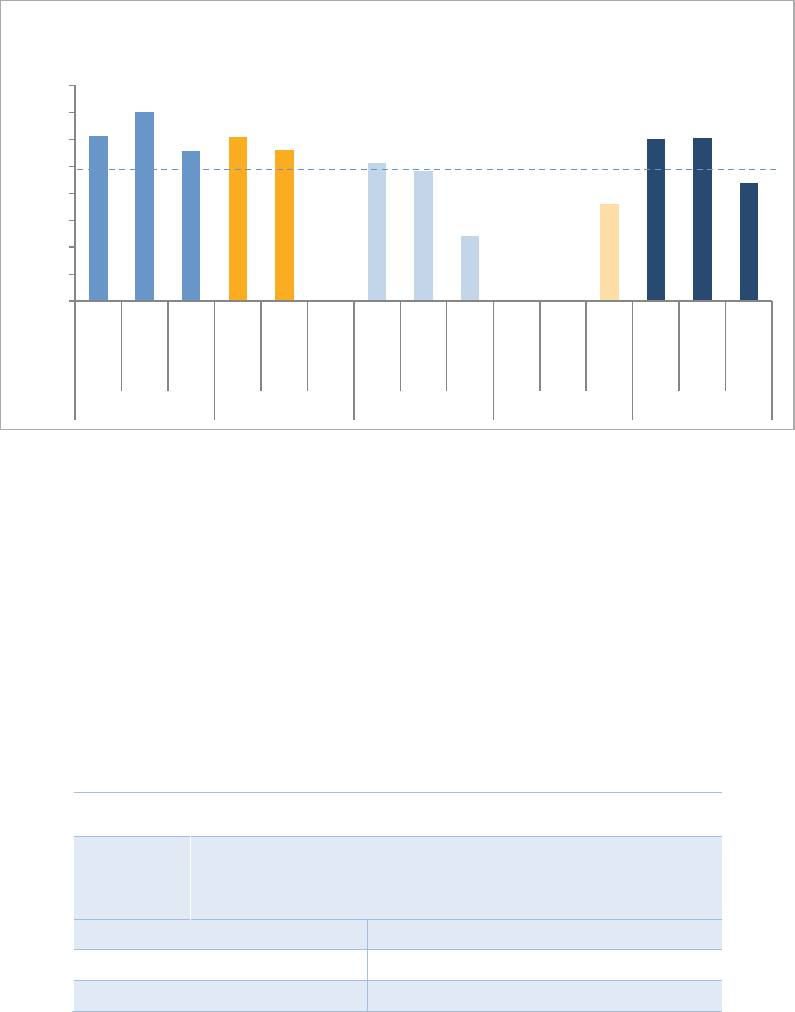
Energy Efficiency Report | 19
Figure 1: 2013-2015 Energy Efficiency Goal Attainment by IOU
For the 2013-2015 program cycle, the CPUC allowed PAs to include low-Income program savings in the
goal attainment calculation. The above chart is based on evaluated gross savings includes REN and
CCA savings within their respective IOU counterpart count and low-income savings. Codes and
Standards savings are not included in this chart.
For the 2013-2015 portfolio, however, the CPUC allowed program administrators to include low-income
program savings in their goal attainment numbers. When inclusive of these program savings, the goal
attainment percentages reach 120 percent, 121 percent, and 88 percent for electric savings, demand savings,
and natural gas savings, respectively. Figure 1 shows the percent goal attainment by IOU while Table 3 below
shows the goals values.
Table 3: Goals for the 2013-2015 Portfolio
2013-2015 Energy Efficiency Portfolio Goals
Electric
(GWh)
Demand
(MW)
Natural
Gas
(MM
Therms)
Program Goals
Gross
4,410
830
130
Codes and Standards Goals
1,756
243
7
Combined Goals
6,166
1,073
137
Excluding Codes & Standards costs and benefits, the statewide portfolio’s evaluated savings fell short of its
cost-effectiveness goal of a 1.25 TRC in 2013 and 2014 and its goal of a 1.0 TRC in 2015.
2 below shows the annual cost-effectiveness ratios of each IOU portfolio. The only year in which any of the
IOUs met their cost-effectiveness goals was 2013. PG&E and SCG both managed to meet or exceed the 1.25
TRC threshold in in 2013, but then fell below 1.25 in 2014 and below 1.0 TRC in 2015. SCG and SDG&E
123%
141%
111%
122%
112%
103%
97%
48%
72%
120%
121%
88%
0%
20%
40%
60%
80%
100%
120%
140%
160%
GWh
MW
MM Therms
GWh
MW
MM Therms
GWh
MW
MM Therms
GWh
MW
MM Therms
GWh
MW
MM Therms
PGE SCE SDGE SCG Portfolio
2013-2015 Energy Efficiency Portfolio Percent Savings
Programs Goal Attainment

Energy Efficiency Report | 20
came in below the TRC thresholds in each year. One factor that contributes to lower cost-effectiveness is
accounting for energy efficiency activities that would have occurred absent program intervention.
Figure 2: Annual IOU Portfolio Cost Effectiveness Ratios (2013-2015)
The blue dotted lines in the chart above show the TRC threshold of 1.25 (2013 and 2014) and 1.0 (2015)
that were set by the CPUC via decision. Program savings used for this calculation do not include
Codes & Standards savings.
Cost-effectiveness of the entire portfolio increases, however, if one considers the costs and benefits of the
Codes & Standards programs combined with the above portfolio cost-effectiveness. The Codes & Standards
program has been discussed in past decisions as a potential hedge against failure to meet savings goals or
cost-effectiveness targets given that C&S advocacy reliably produces savings year over year in a significantly
cost-effective manner. While the decision to separate C&S savings and program savings is discussed at length
in D.12-05-015 (page 87), the impact of C&S savings on portfolio cost-effectiveness is discussed below for
illustrative purposes.
Codes & Standards Savings
The Codes and Standards (C&S) program saves energy by influencing continuous improvements in energy
efficiency regulations, improving compliance with existing codes and standards, and working with local
governments to develop ordinances that exceed statewide minimum requirements. Both the C&S program
advocacy and compliance improvement activities extend to virtually all buildings and potentially all appliances
in California. C&S savings result from the IOUs advocacy to the California Energy Commission (CEC) and
the federal Department of Energy for stricter building codes and appliance standards.
The savings from C&S programs are treated differently than the customer-oriented program savings. C&S
programs have their own savings goals, distinct from the portfolio goals described previously. Codes and
Standards savings greatly exceeded all of the separate Codes and Standards goals. Electric codes and
1.53
1.17
0.73
1.07
0.83
0.65
0.85
0.89
0.90
1.25
0.98
0.70
1.17
0.99
0.78
0.0
0.2
0.4
0.6
0.8
1.0
1.2
1.4
1.6
1.8
2013 2014 2015
TRC
Total Resource Cost by IOU and Year (2013-2015)
PG&E SDG&E SCE SCG Portfolio
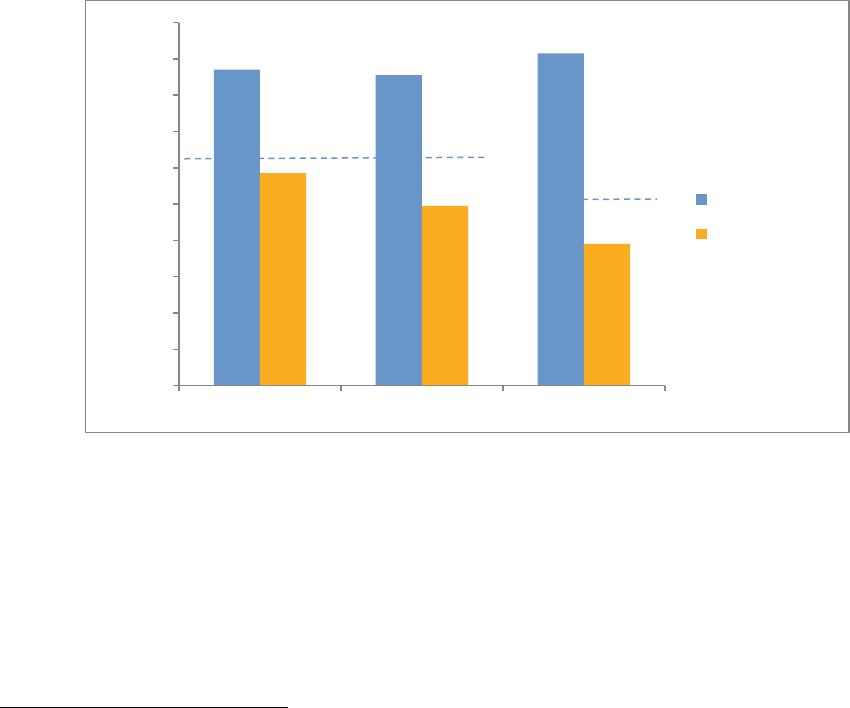
Energy Efficiency Report | 21
standards savings achieved 223 percent of the gigawatt-hour savings goal, while codes and standards achieved
237 percent of its peak demand savings goal and 186 percent of its natural gas savings goal.
With inclusion of savings from C&S programs, portfolio-wide evaluated net savings increase to 7,037 GWh
(51 percent of total combined electricity savings); 1,212 MW (45 percent of total combined demand savings);
and 105 MM Therms (37 percent of total combined natural gas savings).
As shown below in Error! Reference source not found., including C&S in the TRC calculation increases
the cost-effectiveness of the portfolio significantly. As discussed above, previous CPUC decisions have
explored the idea of using C&S savings as a hedge against the IOUs failing to meet their savings goals or cost-
effectiveness targets. In the 2013-2015 program cycle, C&S savings were not allowable as a hedging tactic for
meeting performance goals, but the decision adopting separate goals is silent on whether cost-effectiveness
should be estimated separately or on a portfolio basis. The concept of codes & standards providing a hedge
for cost-effectiveness is illustrated in Figure 3 by the fact that in each of the program years, incorporating
C&S into cost-effectiveness results in cost-effective portfolios.
20
Figure 3: Portfolio Cost-Effectiveness Ratios, Including Codes & Standards
The blue dotted lines in the chart above show the TRC threshold of 1.25 (2013 and 2014) and 1.0
(2015) that were set by the CPUC via decision.
More information on Codes & Standards programs and savings can be found in Chapter 7: Codes &
Standards.
20
The calculation methodology of the Codes & Standards TRC is not entirely identical to the TRC methodology used for program
TRC ratios and is one of the reasons that the CPUC does not explicitly count codes & standards as a hedge for cost-effectiveness.
However, codes & standards do provide benefits to customers that may not apparent by looking at the portfolio cost-effectiveness
results in isolation. As such, the explanation and illustrative chart are provided above.
0.0
0.2
0.4
0.6
0.8
1.0
1.2
1.4
1.6
1.8
2.0
2013 2014 2015
TRC
Portfolio Total Resource Cost (2013-2015)
TRC w/ C&S
TRC w/o C&S

Energy Efficiency Report | 22
Portfolio Savings by Program Administrator
Each of the four IOUs develops and executes a portfolio of energy efficiency programs. The savings accrue
to their customers and are an opportunity to offset future procurement in their service territories. As stated
above, savings goals for electricity, gas, and peak demand are set for the total portfolio, as well as each IOU.
Figure 1 above shows the performance of each IOU compared to their goals for the 2013-2015 portfolio.
The IOUs exceeded their electricity and peak demand savings goals, but SDG&E and SCG did not meet their
natural gas savings targets.
While IOUs are required by statute to procure all cost-effective energy efficiency, neither statute nor the
CPUC sets a specific penalty for not meeting the CPUC-adopted goals. However, IOUs do receive
shareholder incentives for achieving energy savings and lower savings equate to lower levels of shareholder
rewards. This shareholder incentive framework is known as the Efficiency Savings and Performance
Incentive (ESPI). The ESPI awards the IOUs for performance in both non-resource and resource activities.
Thus, while SDG&E and SCG are not levied a specific penalty for missing the natural gas savings goals, their
shareholder incentive levels will be lower commensurate with the lower savings achieved. Regional Energy
Networks (RENs) and Community Choice Aggregators (CCAs) also contribute savings to the portfolio.
However, the CPUC does not set savings goals for these entities. Savings from RENs activities are counted
within their respective associated investor-owned utility savings count. CCAs are not fully under the purview
of the CPUC and therefore are not prescribed savings goals for their energy efficiency activities.
Portfolio Savings by Customer Sector
The residential, commercial, industrial, and agricultural sectors are the four primary customer segments in the
state. Electricity savings for the 2013-2015 cycle were driven mainly by the commercial sector, which
comprised 48 percent of total evaluated electricity savings. Comparatively, the residential sector accounted for
38 percent while the industrial and agriculture sectors contributed a combined 14 percent. This breakdown
reflects a shift from the 2010-2012 cycle, in which the residential sector accounted for the majority, 55
percent, of the electricity savings. This shift from residential savings to commercial savings was driven by the
residential upstream lighting program, which had successfully supported market adoption for Compact
Fluorescent Lights (CFLs) by the end of the 2010-2012 portfolio cycle. As such, installations began to
decrease in 2013 and thus reduced the residential savings proportion with respect to commercial savings.
Natural gas savings are driven mainly by the industrial sector, which accounted for 52 percent of the natural
gas savings in the 2013-2015 portfolio. The commercial sector contributed 40 percent of gas savings while the
residential sector has a much smaller impact, contributing 8 percent to the portfolio. It is worth noting that
natural gas savings in the commercial and residential sectors are impacted by the interactive effects of certain
other energy efficiency measures (mainly efficient lighting). These interactive effects are described in more
depth in the next section, “Portfolio Savings by End Use.”
Portfolio Savings by End Use
The end uses that drive electricity savings vary by customer segment or sector. However, lighting and HVAC
measures contribute large amounts of savings across the portfolio. As shown in Figure 4 below, HVAC and
lighting measures combined account for 67 percent of electricity savings in the 2013-2015 portfolio, with
lighting contributing 54 percent alone.
21
However, as a percentage of the portfolio, lighting savings fell from
21
This includes both indoor and outdoor lighting.
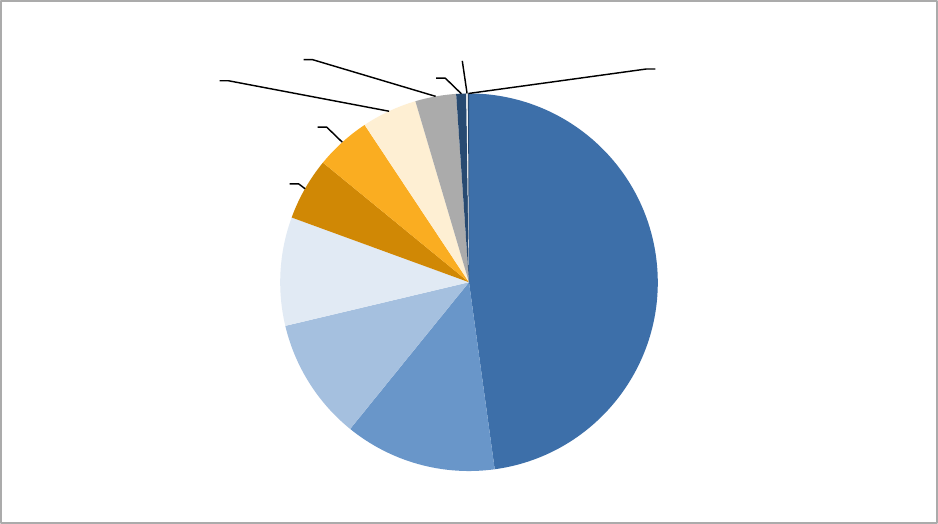
Energy Efficiency Report | 23
64 percent of the 2010-2012 portfolio savings to 54 percent in 2013-2015, while HVAC savings increased
from 8 percent to 13 percent of the portfolio electricity savings. Savings from whole building measures
increased from 3.2 percent in the 2010-2012 cycle to 9.3 percent of statewide energy savings in 2013-2015.
Figure 4: Percentage of Electricity Savings by End Use
Natural gas savings are mostly achieved in the industrial sector through process improvements in industrial
processes. Whole building measures, HVAC, and water heating accounted for the majority of additional
savings beyond process improvements. The remaining natural gas savings by end use are displayed in Figure 5
below.
Indoor Lighting
47.8%
HVAC
13.0%
Process
10.5%
Whole Building
9.3%
Outdoor Lighting
5.4%
Refrigeration
4.8%
Appliance
4.7%
Other
3.5%
Plug Loads
0.9%
Food Service
0.1%
Water Heating
0.1%
Percentage of 2013-2015 Electricity Savings by End Use
*Evaluated Gross Savings, excludes Codes & Standards

Energy Efficiency Report | 24
Figure 5: Percentage of Natural Gas Savings by End Use
One anomaly in natural gas savings is the negative impact that indoor lighting measures have on natural gas
savings. High efficiency lighting measures transform a larger share of their energy usage into light, emitting
substantially less heat than inefficient lighting measures. The decline in heat emitted from high efficiency
lighting measures may lead to an increase in the heating requirements and/or a decrease in the building’s
cooling requirements. In the 2013-2015 cycle, indoor lighting reduced natural gas savings by 17 percent. Plug
load measures contributed a small negative impact on natural gas savings, reducing gas savings by 0.1 percent.
Emissions Savings
A key benefit of the energy efficiency programs is the reduction in emissions of Carbon Dioxide (CO2),
Nitrogen Oxide (NOx), and particulate emissions that would have otherwise occurred due to energy
production and consumption. While the CPUC does not set specific emissions goals for the IOUs, the
emissions are estimated based on the energy saved per portfolio cycle. The calculation methodology is
embedded in the cost effectiveness tool that Energy Division uses to estimate portfolio impacts. Note that
these estimated emissions reductions represent the annual impact of the installed and operating energy
efficiency technologies. The emissions reductions from the entire useful life of the installed technology,
known as lifecycle emissions, will be significantly higher, but are not calculated here.
During the 2013-2015 portfolio cycle, energy efficiency activities reduced emissions by an estimated 3.3
million tons of CO
2
and 1.6 million tons of NOx
,
based on evaluated gross savings.
The estimated emissions
savings from Codes & Standards programs account for an additional reduction of 4.0 million tons of CO2
HVAC
13.2%
Process
43.0%
Whole Building
17.0%
Refrigeration
1.5%
Appliance
1.1%
Other
7.0%
Food Service
5.3%
Water
Heating
12.0%
Percentage of 2013-2015 Natural Gas Savings by End Use
*Evaluated Gross Savings, excludes Codes & Standards

Energy Efficiency Report | 25
and 1.2 million tons of NOx. The emissions savings from both customer programs and Codes & Standards
programs was the equivalent of removing 1.3 million cars from California’s roads.
22
Common Challenges across the Portfolio
The following chapters will highlight sector or program-area specific challenges identified through the
evaluation studies. Each evaluation study includes recommendations for solving the identified challenges at
the program-specific level. However, one common challenge was present across the portfolio, based on
evaluation study recommendations, and is worth mentioning here.
Improvement in data collection is a common recurrence among recommendations across sectors and
program areas. As energy efficiency activities expand to reach disadvantaged and hard-to-reach segments,
such as small businesses, more data is required from existing programs and future studies in order to
accurately target programs at these populations. However, improvements in data collection are not only
necessary in new areas of activity. Existing programs, such as those in the commercial sector, would benefit
from increased understanding of conversion rates from audits while non-resource programs, such as
workforce education & training programs, could improve upon their understanding of target audiences. The
balance of collecting necessary data with the expense of obtaining this data is always a consideration, but
based on the prevalence of this recommendation across multiple sectors, it is apparent that improved data
collection will be a necessary step as efficiency activities move beyond the “low-hanging fruit” of energy
efficiency opportunities.
22
From D05-09-043: The calculation for this statistic is x metric tons CO2 / (0.014418 metric tons CO2/day/vehicle) / 365 days per
year = # vehicles taken off the roads each year due to savings that year. The data on average emissions of Bay Area vehicles was
provided by the California Air Resources Board using Emfac2002 V2.2 Sept. 23, 2002; personal communication with Jeff Long,
CARV, March 24, 2003. (Cited in D. Bachrach, M. Ardeman, and A. Leupp, Energy Efficiency Leadership in California: Preventing
the Next Crisis. April 2003.)
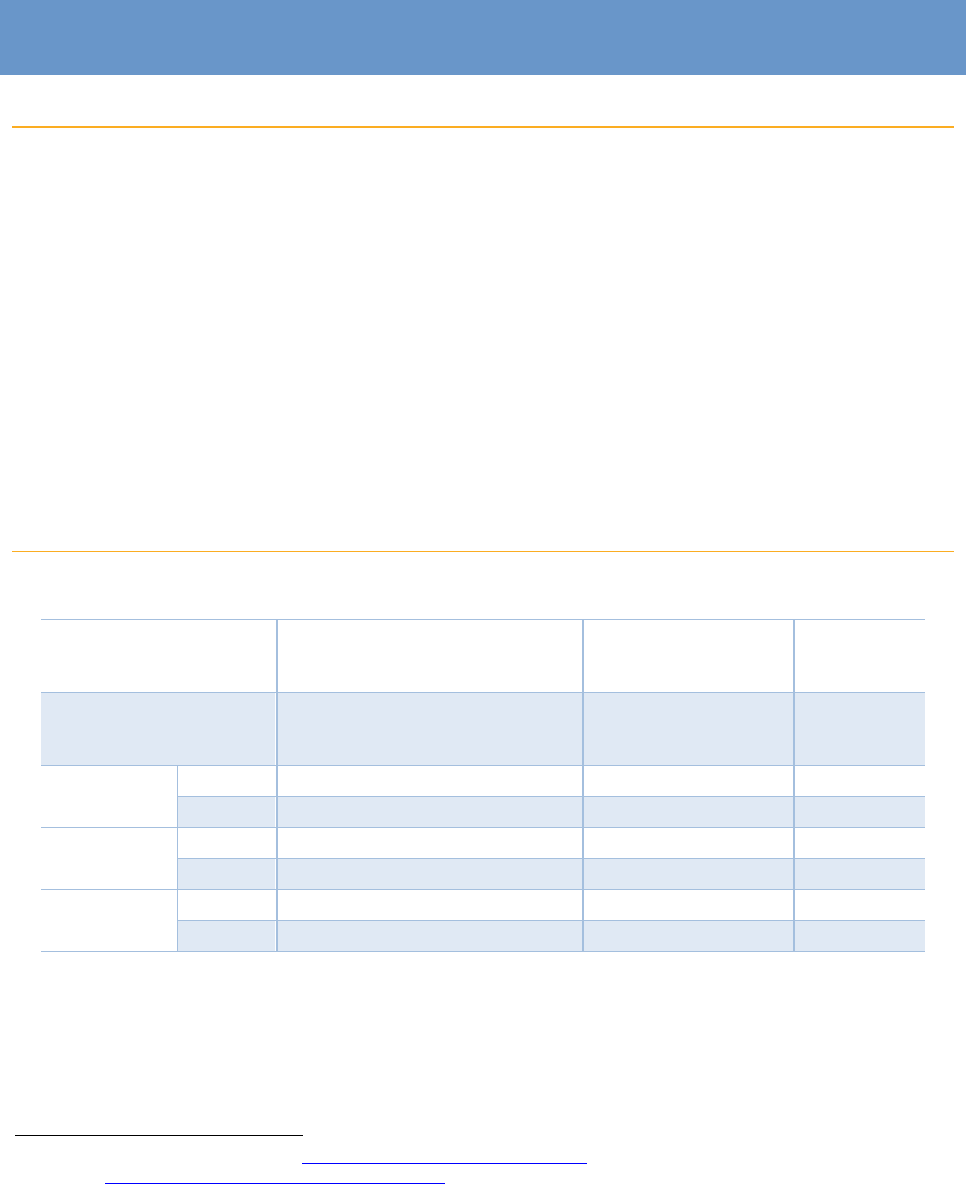
Energy Efficiency Report | 26
Residential
Overview
With over 14 million single- and multi-family homes that house more than 39 million Californians, the
residential sector accounts for 17 percent of the state’s energy usage.
23
To address the needs and
opportunities for savings in this sector, the 2013-2015 energy efficiency portfolio included a comprehensive
suite of traditional activities (e.g., appliance rebates and lighting) for California households within the program
administrators’ service territories.
24
However, with an eye towards advancing the Strategic Plan’s goals of
moving from individual technology-based to more comprehensive approaches, the 2013-2015 portfolio
continued augmenting “whole house” approaches to achieve deeper energy savings per participant. These
new comprehensive programs complement the legacy whole house programs, which were started in the 2010-
2012 programs. The 2013-2015 program cycle also included an expanded set of PAs, with two Regional
Energy Networks and one Community Choice Aggregator launching their respective suites of residential
energy efficiency programs.
25
Overall, the CPUC and IOU staff oversaw 17 energy efficiency program impact
evaluations as well as five efficiency program process evaluations.
Estimated Savings
Table 4: Residential Sector Savings Snapshot
Energy Savings
Emissions
Cost-
Effectiveness
Electric
(GWh)
Demand
(MW)
Natural
Gas (MM
Therms)
CO
2
(Million
Tons)
NOx
(1000
pounds)
TRC
Reported
Gross
1,869
377
11
1,028
336
Net
1,316
273
11
746
272
0.9
Evaluated
Gross
2,015
395
9
1,088
334
Net
1,320
272
12
748
278
0.8
% Portfolio*
Gross
40%
41%
9%
15%
13%
Net
41%
44%
18%
18%
18%
*represents Residential sector’s percent contribution to overall evaluated portfolio savings, excluding Codes &
Standards savings.
Note that this table includes savings for lighting and HVAC measures in the Residential Sector that are also
included in the savings tables provided in the separate chapters for these cross-cutting measures.
23
Census State and County Quick Facts, https://www.census.gov/quickfacts/CA; California State Profile and Energy Estimates,
Available at:
https://www.eia.gov/state/?sid=CA#tabs-2
. Accessed 08/11/2017
24
At the same time, the Energy Savings Assistance (ESA) program provided (and continues to provide) complementary energy
efficiency measures to low income households in California, including energy efficient appliances and weatherization measures
25
The Bay Area Regional Energy Network, Southern California Regional Energy Network, and Marin Clean Energy, respectively. See
Chapter 13 on RENs/CCAs for more information.

Energy Efficiency Report | 27
As of the end of the 2013-2015 program cycle, residential energy efficiency programs achieved evaluated net
savings of 1,320 GWh, 272 MW, and 12 million therms. These savings were achieved through a
complementary suite of long-running, “traditional” programs as well as those introduced in the 2010-2012
program cycle and expanded in 2013-2015.
With the inclusion of lighting measures, the $783 million spent on residential energy efficiency programs for
2013-2015 were 30 percent of total portfolio expenditures; 22 percent of the 2013-2015 program cycle
expenditures were for non-lighting residential energy efficiency programs.
26
At the end of the 2013-2015
program cycle, the PAs spent 115 percent of the initial residential sector budget.
Forty-eight percent of evaluated net energy savings in the residential sector come from lighting measures. Of
the remaining savings attributable to non-lighting measures, evaluated net residential sector savings for 2013-
2015 come from Home Energy Reports, pool pumps, various HVAC measures, whole home retrofits, and
residential new construction.
Residential Energy Efficiency Programs
The 2013-2015 statewide programs were designed by PAs to achieve energy savings through the adoption of
energy efficient products, whole house retrofits, and behavior change using rebates, incentives, contractor
training, and education. The Energy Advisor Program
27
and the Home Energy Reports program were
responsible for 60 percent of residential sector savings (excluding lighting measures). In addition, all PAs
implemented some form of a home upgrade program that targeted either single-family or multi-family
properties or both during the 2013-2015 program cycle.
The Home Energy Efficiency Rebate program from 2010-2012 was transitioned into the IOUs’ statewide
Plug Load and Appliances program. In addition to the Appliance Recycling subprogram that provided
incentives to recycle old and inefficient refrigerators and freezers, the Plug Load and Appliances program
continued to offer rebates to customers for certain high efficiency residential appliances, consumer
electronics, water heaters, pool pumps, insulation, and other high efficiency technologies. By the end of 2015,
the Appliance Recycling Program had closed, due to a several factors, including decreased energy savings for
recycled units, as newer and more efficient units were being recycled under the program and displacing pre-
2001 units that dominated the program’s focus in its early years; a nearly non-existent desire in the used
appliance market for older refrigerator units, as 10-year old units represent the cutoff in the used market; and
closure of one of the program’s recycling contractors.
28
Highlights
Residential programs were responsible for 20 percent of total evaluated net portfolio savings (41 percent with
lighting included).
26
Energy savings from lighting programs are discussed in detail in the Lighting Chapter of this report
27
The Energy Advisor Program is an overarching program that includes the IOUs’ online customer energy information tools
28
Ten-year old units represent the cut-off in the used market ,meaning that customers are not looking for units older than 10 years of
age. See Appliance Recycling Impact Evaluation Vol. 1 Report (2010-2012) at www.calmac.org; and CPUC DEER 2016 update at
www.deeresources.com. Additionally, between 90 and 100 percent of units sold on major used appliance sites such as Craigslist and
Pennysaver, respectively, are less than 8 years old. See Evaluation Study of the 2004-2005 Statewide Residential Appliance Recycling Program at
www.calmac.org .Lastly, new and used appliance dealers in California only sell units that are 10 years old or less; units that are older
are destroyed. See Residential Retrofit High Impact Measure Evaluation (2006-2008) at www.calmac.org .

Energy Efficiency Report | 28
PG&E’s Home Energy Report program, initiated in 2011 as a pilot with 50,000 customers receiving reports
as part of a Beta testing phase, grew over 2013-2015 into a program that delivers reports to over 1 million
customers and is responsible for almost 52 percent of residential sector evaluated net savings (excluding
lighting).
29
Over the course of 2013-2015, these reports provided detailed comparative energy usage
information to customers and delivered net energy savings of 352 GWh and natural gas savings of 11 million
therms. Southern California Edison (SCE), San Diego Gas & Electric (SDG&E), and Marin Clean Energy
(MCE) also implemented Home Energy Report programs, although evaluated net savings were significantly
less than those from PG&E’s program due to the size difference between PG&E’s program (i.e. number of
report recipients in the treatment group) and those of the other PAs in the 2013-2015 program cycle
30
.
PG&E’s Retail Plug-load Portfolio (RPP) Phase I Pilot ran from late 2013 through 2014. The RPP was a
market transformation initiative that offered incentives to a participating retailer for the sale of specific
qualified and efficient consumer electronics and appliances. Although results were mixed due to the limited
duration of the pilot, the pilot allowed PG&E to establish a framework with which a larger programmatic
effort could proceed. Consequently, at the end of 2015, PG&E had developed a Phase II Retail Products
Platform pilot in partnership with the EPA and a number of other utilities and efficiency organizations. The
Phase II pilot launched in early 2016 and the CPUC expects to present preliminary results in late 2018.
31
Findings
Evaluations and data from the residential sector for the 2013-2015 program cycle have identified some
significant challenges. Evaluation results state that:
Home Energy Reports
Home Energy Reports were first delivered to customers by PG&E in a 2011 pilot. By the end of 2015, these
reports constitute the largest single residential measure based on kilowatt-hours saved and were being sent
out by PG&E, SCE, SDG&E, and Marin Clean Energy.
32
Although the size of the program, in terms of the
number of customers who receive the reports and recipient groupings (i.e. fuel type, geography, usage), vary
by program administrator, the average 2013-2015 net savings per household ranged from less than 1 percent
of typical household energy use on the low end to 3 percent on the high end.
33
29
PG&E’s Home Energy Report is the largest single measure, based on evaluated net savings and including lighting, in the residential
sector.
30
While the much larger treatment group in PG&E’s Home Energy Report program leads to the PG&E program having the most
total savings on a kWh basis, the average savings per household across programs are relatively consistent, depending on the treatment
group(s).
31
Pacific Gas and Electric Company, Retail Plug-Load Portfolio (RPP) Trial: Evaluation Report, April 2015. Available at http://www.etcc-
ca.com/reports/pacific-gas-and-electric-company-retail-plug-load-portfolio-rpp-trial?dl=1499887695 .
32
MCE’s version is the “Home Utility Report”
33
While one wave of MCE’s Home Utility Report program had savings in 2015, the remaining three waves did not. SDG&E’s 2015
savings were 2.4%. 2013-2015 savings ranged from 2.4% to 2.8% SCE savings for 2014-2015 were 1%. PG&E’s 2015 savings were
between one-half percent and 2.5 percent, depending on recipient wave, while historic savings (2011-2012) were approximately 1-
1.5%. See “Impact Evaluation of 2015 San Diego Gas and Electric Home Energy Reports and Manage-Act-Save Programs (Final
Report)”, May 2017; “Review and Validation of 2015 Southern California Edison Home Energy Reports Program Impacts (Final
Report)”, May 2017; “Review and Validation of 2015 Pacific Gas and Electric Home Energy Reports Program Impacts (Final
Report)”, May 2017; and “Impact Evaluation of 2015 Marin Clean Energy Home Utility Report Program (Final Report), May 2017, all
available at www.calmac.org .

Energy Efficiency Report | 29
Home Upgrade Impact Evaluations
Single Family
By the end of 2015, six PAs were offering either the Home Upgrade or Advanced Home Upgrade program
or both. The 2015 Home Upgrade Program impact evaluation estimated gross and net energy savings at the
household level for both sub-programs and compared those results to prior evaluations from the 2010-2012
program cycle and 2014.
34
All three evaluations reported similar average differences in household energy usage after program
participation. The percent of electric savings for each cycle has consistently been under 5 percent, with a few
instances of negative savings (i.e. an increase in usage after upgrades).
35
Although free-ridership is low, the
broader program has long struggled with accurate predictions of energy savings that would result from an
upgrade, and high project costs remain a participation barrier. Realization rates, or the percentage of
estimated savings that actually materialize after an upgrade, are expected to improve over time as a program
matures. However, realization rates for Home Upgrade and Advanced Home Upgrade Program electric
savings were, with few exceptions, consistently at or under 50 percent in 2014, and then dropped to 11
percent in 2015.
36
This drop in realization rates may be the result of program redesigns implemented over
the years, learning curves experienced by BayREN and SoCalREN, which only started to implement the
program in 2014, or a combination of these and other factors.
37
For gas savings, realization rates in 2013-2014 ranged from 50 percent to 185 percent depending on program
administrator, with a statewide average rate of 123 percent.
38
In 2015, gas savings realization rates for each of
the two programs were reported; the statewide average for the Home Upgrade Program was 91 percent, while
the statewide average for the Advanced Home Upgrade Program was 11 percent. Natural gas savings
realization rates by program administrator for the prescriptive Home Upgrade Program ranged from 27
percent to almost 100 percent, with average household gas savings of 44 therms. In comparison, realization
rates for the custom Advanced Home Upgrade Program were at 20 percent or less for all PAs, with average
household gas savings of just 16 therms. Consistent overestimation of savings is likely attributable to the
savings estimation model used by PAs. Additionally, building vintage is a factor that influences savings (i.e.
newer homes enrolled in the program offer “smaller scale” savings).
Statewide, 2015 evaluated net savings for the Home Upgrade and Advanced Home Upgrade Programs
combined were just 9 percent, 14 percent and 34 percent of PA targets for electric, demand, and gas savings,
respectively.
39
34
The 2010-2012 evaluation study covered both Home Upgrade and Advanced Home Upgrade programs but did not include all
IOUs due to data limitations. The 2014 evaluation study focused only on Home Upgrade. Advanced Home Upgrade was offered
only by the IOUs.
35
DNV-GL, Final Report: 2015 Home Upgrade Program Impact Evaluation, June 2017. Available at www.calmac.org
36
All PAs, except SCE in 2011, had realization rates at or under 20 percent for the Advanced Home Upgrade Program. For the
Home Upgrade Program, realization rates over time fluctuated wildly, with SCE seeing a 278 percent realization rate in 2011, which
dropped to 42 percent in 2012. Other PAs were under 50 percent. See “Final Report: 2015 Home Upgrade Program Impact
Evaluation”, June 2017. Available at www.calmac.org
37
ibid
38
In 2013-2014, program activity was not broken out for each of the two upgrade programs.
39
CPUC and DNV-GL, Final Report: 2015 Home Upgrade Program Impact Evaluation, June 2017. Available at www.calmac.org

Energy Efficiency Report | 30
Multi-family
Beginning in 2013, the IOUs and two Regional Energy Networks implemented a multi-family sector whole
building program intended to assist property owners who wish to pursue larger multiple-measure building
retrofit projects. By the end of 2015, the program had grown substantially, with an almost 500 percent
increase in reported savings in 2015 compared to 2013-2014 savings, and the CPUC evaluated the program in
both 2013-2014 and 2015. Although program performance over the three-year period varied to some degree
by program administrator and did show improvement over that timeframe, with few exceptions, the program
did not meet its energy savings goals.
40
The more recent IOU process evaluation found that although some
improvements were made, the program continued to face challenges stemming from determination of an
accurate baseline for program participants, data collection, savings modeling, split incentives, and free
ridership, all of which contributed to low evaluated net savings and realization rates of 10 percent, 5 percent
and 33 percent for kWh, kW, and therms, respectively. While the RENs’ multifamily program faced similar
challenges in terms of data collection and free ridership, realization rates of 60 percent, 65 percent and 54
percent for kWh, kW, and therms, respectively, were superior to those for IOU multifamily programs.
41
Multi-Family Energy Efficiency Rebate Program (MFEER)
The Multi-family Energy Efficiency Rebate Program implemented by the IOUs offered rebates to multi-
family property owners who purchased a qualified energy efficiency product for installation at their property.
Rebated measures include pool pumps, appliances, lighting measures, space and water heating, windows and
insulation. Lighting measures (discussed in detail later in the document in a stand-alone chapter) comprised
the majority of electric savings for 2013-2015, while domestic hot water measures were responsible for the
majority of gas savings.
42
Path to Statewide Goals
As part of new Rolling Portfolio Cycle established by CPUC Decision in 2015, the program administrators
filed Business Plans in January 2017. These plans describe, at a high level, the PAs’ programmatic focuses
through 2025. Although specific interventions vary by administrator, the Business Plans overwhelmingly
articulate an intention to “drive deeper savings” in the residential sector through a mix of existing programs,
including home retrofits and behavior. The Business Plans also indicate future efforts that may leverage
Advanced Metering Infrastructure (AMI) data to facilitate widespread adoption of energy management
technologies (EMT), per AB793 and recent CPUC direction.
Certain programs, such as the Home Upgrade Program, have struggled in recent years to achieve savings
goals, due to challenges with energy savings modeling, low realization rates, and getting “the right”
participants (e.g., older vintage homes, less temperate climate zones,, customers not already planning these
upgrades before any program touch occurs). Corrective action in response to evaluation recommendations
40
In 2013-2014, energy savings reported by the PAs were 28 percent, 11 percent, and 35 percent of goals for kWh, kW and therms,
respectively. For 2015, although the program showed improvement, reported savings were 48 percent, 31 percent and 46 percent of
goals for kWh, kW and therms. See CPUC and DNV-GL, 2013-2014 Residential Roadmap Multifamily Focused Impact Evaluation, February
2016; CPUC and DNV-GL, 2013-2015 Residential Roadmap Multifamily Focused Impact Evaluation, June 2017; 2013-2015 Regional Energy
Networks Multifamily Programs Impact Evaluation Final Report, June 2017, at www.calmac.org.
41
CPUC and Itron, Inc. 2013-2015 Regional Energy Networks Multifamily Programs Impact Evaluation Report, June 2017, at www.calmac.org
. The majority of savings are attributable to BayREN projects. SoCalREN’s MF program was limited in the 2013-2015 timeframe
and contributes to the lower overall realization rates estimates.
42
SCE lighting measures contributed 90 percent of all electric savings for the program, across all IOUs, in 2013-2015.

Energy Efficiency Report | 31
may facilitate deeper energy savings from the existing residential building stock and result in increased savings
in the sector. While expanded behavior program participation, via greater distribution of Home Energy
Reports, for example, may contribute to a doubling of energy savings, it is still unclear how long-lasting
these savings are and whether they persist in the absence of the program intervention.
43
A potential opportunity to improve and expand savings in the residential sector may exist in the recent
addition of Pay for Performance (P4P) programs to the suite of options available to program administrators.
PG&E launched a Residential PP4P program in 2016. Program implementers bid on a specific program
opportunity offered by the IOUs and in turn stand to earn financial incentives based on estimated savings
measured at the customer meter. Pay for Performance opportunities may not only expand and improve
current retrofit programs, but also drive increased savings from operations- and behavior-based solutions,
including smart thermostats, home energy management systems, and other tailored program designs.
Additionally, the application of CalEnviroScreen in order to identify and target underserved and
environmentally “at-risk” communities may offer opportunities to expand the reach of existing and future
energy efficiency programs as they are woven into the larger work envisioned by SB 535 (Leon).
43
Cadmus Group, Long-Run Savings and Cost-Effectiveness of Home Energy Report Programs, at http://www.cadmusgroup.com/papers-
reports/long-run-savings-cost-effectiveness-home-energy-report-programs/

Energy Efficiency Report | 32
Commercial
Overview
The California commercial sector represents over 6 billion square feet of highly diverse building space, which
includes retail stores, grocery, restaurants, offices, warehouses, schools, for the entire state. This building
stock has emerged as a dynamic sector and will continue to be upgraded in the future based on new California
legislation that will further penetrate commercial building markets. The commercial sector consumes 43
percent of California’s electricity.
44
Given the significant portion of energy usage from this sector,
commercial buildings can transform the energy efficiency market with savings and are often the focus of state
policies and PA programs crafted to reduce energy consumption. In fact, throughout the 2013-2015 program
period, the commercial sector represented 48 percent of electricity savings and 31 percent of natural gas
savings for the entire portfolio. These savings were realized through a wide variety of end uses within those
buildings, including lighting, HVAC, refrigeration, and plug loads. Evaluation studies for the commercial
sector in the 2013-2015 program period included nine impact studies, four process studies, and one program
assessment analysis.
Table 5 lists the business types and square footage from the Commercial Saturation Study (CSS) of all
buildings served by the program administrators. The CSS building types are sorted by square footage. The
total electricity usage across all PAs by business type is also included along with the percentage of electricity
used by each business type. Square footage and electricity consumption in the commercial sector do not
always align as the energy intensity or energy consumption per square foot of space can vary substantially by
and within business types.
Table 5: Commercial Building Types by Square Footage
45
46
CSS Business Type
Total Square
Footage
Average Square
Footage
Median Square
Footage
Total Usage
(GWh)
% of
Electricity
Warehouse
1,996,311
28,817
10,000
4,140
6%
Office
1,438,655
9,930
1,580
9,595
14%
Miscellaneous
1,320,860
5,982
2,130
11,509
17%
Retail
825,124
6,877
2,246
7,878
12%
School
711,206
47,712
33,600
3,392
5%
Health/Medical – Clinic
254,814
4,812
1,980
3,881
6%
Restaurant
197,856
2,646
1,920
6,179
9%
Food/Liquor
135,296
6,172
2,500
6,297
9%
Non-CSS Commercial Business
College
1,817
3%
Hospital
1,925
3%
Property Managers
8,026
12%
Unknown
3,377
5%
44
California Energy Commission, California Energy Demand 2016-2026, Revised Electricity Forecast, Volume 1: Statewide Electricity Demand
and Energy Efficiency. January 2016.
45
Does not include the square footage in universities, hospitals, and hotels/motels.
46
Itron, California Commercial Saturation Survey, prepared for the California Public Utilities Commission, 26 August 2014

Energy Efficiency Report | 33
Estimated Savings
Table 6: Commercial Sector Savings Snapshot
Energy Savings
Emissions
Cost-
Effectiveness
Electric
(GWh)
Demand
(MW)
Natural
Gas (MM
Therms)
CO
2
(Million
Tons)
NOx
(1000
pounds)
TRC
Reported
Gross
2,709
482
48
1,653
782
Net
1,964
345
31
1,175
531
1.32
Evaluated
Gross
2,459
457
39
1,519
676
Net
1,558
292
21
985
426
1.14
% Portfolio*
Gross
49%
48%
39%
22%
26%
Net
48%
47%
31%
24%
27%
*represents the Commercial sector’s (or program area’s) percent contribution to overall evaluated net portfolio
savings, excluding Codes & Standards savings
Note that this table includes savings for lighting and HVAC measures in the Industrial and Agriculture Sectors that
are also included in the savings tables provided in the separate chapters for these crosscutting measures.
PAs spent $1.2 billion on commercial energy efficiency programs and produced 1,558 GWhs of electricity
savings during the 2013-2015 program cycle. While commercial programs accounted for 44 percent of total
portfolio expenditures on energy efficiency programs, they accounted for 48 percent of portfolio electricity
savings, 47 percent of peak demand savings, and 31 percent of natural gas savings, net of free ridership.
Compared to the total portfolio savings in the 2010-2012 program cycle, savings in this sector increased 10
percent for electricity, 22 percent for demand, and decreased 9 percent for natural gas. While expenditures in
the commercial sector also increased from the 2010-2012 portfolio, to $1.2 billion from $970 million, the
success of the commercial programs are indicated by the attendant increase in cost-effectiveness between the
two portfolio cycles. Cost-effectiveness of the commercial sector improved from 0.87 TRC in the 2010-2012
cycle to 1.14 TRC in the 2013-2015 cycle.
Lighting measures, which are discussed in detail in a stand-alone chapter later in this report, were the largest
spenders and savers, accounting for 42 percent of commercial sector expenditures and delivering 61 percent
of electricity savings for commercial buildings. Consistent with the overall portfolio trends, HVAC measures
were the second largest electricity savings measures and largest natural gas savings measures for the sector,
accounting for 21 percent of electricity savings and 31 percent of natural gas savings in the sector.
Besides Lighting and HVAC measures, refrigeration efficiency measures and whole building efficiency
approaches contributed the largest shares of commercial sector electricity savings, 9 percent and 4 percent,
respectively. For natural gas savings, measures focused on the food service sector and process measures
contributed large shares, at 19 percent and 22 percent of commercial sector gas savings, respectively.
Commercial Programs
The 2013-2015 energy efficiency portfolio includes over 80 programs that target small, medium, and large
(non-custom projects) commercial customers. The programs are organized into four general program types:

Energy Efficiency Report | 34
Deemed – These programs offer fixed incentive amounts for pre-approved measures (non-custom)
that have a pre-determined energy savings estimate, based on rigorous engineering analyses and
repeated study.
Direct Install – These programs provide free and discounted pre-approved measures that are
installed via an approved contractor.
Third Party – These programs are designed to target hard-to-reach populations. Employing a third-
party implementer allows PAs to offer new technologies with a more hands-on service approach or
high level of service for that particular program.
State and Institutional Partnerships – programs offered for state and federal government customers.
47
These programs, under the four general types, offer a set menu of pre-determined measures and rebates or
incentives at low or no cost to customers. Some programs have nominal co-payments for a customer project.
These programs usually target a specific market in an effort to reach not only different types of segments of
customers but to ensure that the varieties of buildings are included in the state’s effort to reduce building
energy consumption.
Direct install programs are broadly defined as those programs that facilitate the installation of no- or low-cost
energy efficiency measures (i.e., a turnkey service) for eligible commercial customers. These programs
traditionally targeted hard-to-reach customers, such as small businesses, that had not participated in energy
efficiency programs. However, direct install programs have expanded in California to reach medium and large
commercial customers. Direct install programs can be administered in three ways: by a third party, through a
local government partnership, or by a program administrator directly.
In 2013 and 2014, 19 programs either offered direct install as the primary implementation approach or
offered a direct install component in concert with other implementation approaches. Eligible customer size
for some programs has doubled from under 100 kW to 200 kW, and in some cases, there is no size
restriction. Government buildings and non-profits are also eligible in some jurisdictions. Installation of
program measures (e.g. lighting, HVAC, refrigeration) is facilitated through program contractors, qualified
local contractors, or by assisting customers in putting forth a request for proposal to find qualified installers.
Across all IOU service territories, many commercial businesses participated in at least one IOU energy
efficiency program during the 2013-2015 program cycle. Business segments with the highest share of
participation include food and liquor stores, hotels, and schools. Businesses with the lowest share of
participation include offices, warehouses, and non-hospital health care. In addition, a larger share of
businesses with higher electricity consumption participated in IOU energy efficiency programs than
businesses with smaller electricity consumption.
Highlights
Commercial energy efficiency programs replaced residential program as the largest sector contributor to
electricity savings in the 2013-2015 portfolio, as compared to the 2010-2012 program cycle. While part of this
shift could be attributed to the decline in lighting savings in the residential sector, credit is also due to the
success of numerous Commercial sector programs. As described above, Commercial programs saw an
increase in total electricity and demand savings from the previous program cycle.
47
These programs are grouped with the Commercial sector for reporting proposes and are detailed separately in the following
chapter.

Energy Efficiency Report | 35
The Commercial portfolio not only increased total electricity savings, but also managed to do so in a cost-
effective manner. The third party commercial programs, in aggregate, were cost-effective, a notable
achievement as many of these programs focused on hard-to-reach markets where program implementation
can be more costly than in “core” markets.
48
SDG&E’s and SCE’s Direct Install Commercial programs achieved 114 percent and 203 percent of
their program electricity savings goals, respectively. SDG&E had high demand from customers and
was able to reduce transaction costs through regional concentration of efforts. In 2015, SDG&E
added a third implementer to focus exclusively on food service customers, often considered a hard-
to-reach customer segment. SCE’s program found success in partnership with local governments and
through no-cost measures. In 2015, SCE began offering new plug load measures through its
program.
49
PG&E’s third party program, EnergySmart Grocer, achieved the highest combined electric and gas
savings of the third party commercial programs, meeting 103 percent of its forecasted electricity
savings and 87 percent of its forecasted gas savings. The program was highly cost-effective with a
TRC of 2.8. This program provides no-cost audits to grocery stores, a hard-to-reach market.
Feedback from customers was positive as well, with 95 percent of customers recommending the
program.
50
Findings
Third Party Programs
Commercial third party programs across the state included 53 resource and non-resource programs. Third
party commercial programs focused on hard-to-reach markets, regional needs, or innovative technologies. A
case study completed in 2014 focused on 38 of these programs, which consisted of a mix of custom measure
and deemed measure programs. Researchers also selected ten of these programs for more detailed case study
analysis. These third-party programs contributed 14 percent of the reported electric savings and 13 percent of
the reported gas savings from all Commercial programs in 2013 and 2014.
51
A particular finding of note from this study was the results of the cost-benefit analysis of direct install
programs. The customers that selected their own contractor for custom measures were the least cost-
effective. Those third-party programs with existing program contractors offered the most cost-effective direct
install and deemed measures for customers. For customers in the grocery sector, case study findings show
that both incentives and technical assistance were critical to the adoption of more energy efficient
refrigeration and lighting.
Direct Install Process Evaluation
CPUC staff studied the direct install programs that reached commercial customers in the 2013-2015 portfolio.
52
The major finding of this process study was that direct install programs are installing measures and
equipment with short paybacks, as opposed to undertaking deeper retrofits that have longer payback times.
48
Opinion Dynamics. PY2013-2014 Third Party Commercial Program Value and Effectiveness Study Report, Volume I of II, 20 July 2016, p. 55
49
Opinion Dynamics. 2013-2015 Commercial Direct Install Process Evaluation: Phase 1, 3 October 2016
50
Opinion Dynamics. PY2013-2014 Third Party Commercial Program Value and Effectiveness Study Report, Volume I of II, 20 July 2016
51
Opinion Dynamics. PY2013-2014 Third Party Commercial Program Value and Effectiveness Study Report, Volume I of II, 20 July 2016
52
Opinion Dynamics. 2013-2015 Commercial Direct Install Process Evaluation: Phase 1 and 2, 25 April 2017

Energy Efficiency Report | 36
Deep retrofits are projects that attempt to realize larger amounts of energy savings through whole building
retrofits and integration of multiple energy savings measures into one project. Naturally, these approaches
may cost more and have longer payback periods than a single equipment upgrade.
The direct install study found that these remaining energy savings are not realized due to factors such as
program design, customer willingness to participate, and cost. The bulk of direct install program savings to
date have been from lighting, but lighting savings may begin to decline as efficient lighting technologies
become more saturated in the market.
Small Business
The CPUC is encouraging new strategies to reach small business customers and achieve energy savings from
this often overlooked customer class. The savings for these very small (micro) and small businesses are low
but require a different approach that includes education and guidance from the PAs.
Another challenge is that many small businesses rent the commercial space and therefore face what is known
as the “split incentives issue.” Split incentives occur when a tenant pays a utility bill but may not have the
capital or incentive to make significant, long-term investments in a property, whereas the building owner does
not pay the utility bill and therefore has little or no incentive to make energy efficiency improvements to the
building.
Yet another challenge results from the fact that many small businesses only qualify for “widget” -based
programs that install one specific measure instead of the whole-building approach. Traditionally, these
programs aimed at small businesses have offered lighting measures for quick paybacks. A more focused
market penetration approach could be used in the future to engage more of these types of businesses in
energy conservation.
Path to Statewide Goals
Major legislation aimed at energy efficiency passed in 2015, including AB 802, which mandates the disclosure
of whole building energy data and benchmarking for commercial and multifamily buildings. In addition, SB
350 mandates the doubling of energy efficiency statewide.
The CPUC High Opportunity Program and Projects (HOPP) Ruling in 2015 authorized the IOUs to
implement programs that offer incentives and technical assistance to customers to bring existing buildings
into conformance with, and to exceed, the requirements of Title 24.
53
The HOPPs Ruling was an effort to
expedite the authorization of programs newly permissible under AB 802. AB 802 authorized the use of an
existing conditions baseline; particularly where energy savings were measured using normalizing techniques
and metered energy consumption data, termed “normalized metered energy consumption.
One example of a HOPPs program is Southern California Gas Company’s Commercial Restaurant Retrofit
program called Restaurant Refresh. The Commercial Restaurant Retrofit program aims to increase the energy
efficiency of existing food service buildings, since restaurants within SCE/SCG’s territory make up 31
53
California Public Utilities Commission, Assigned Commissioner and Administrative Law Judge’s Ruling Regarding High Opportunity Energy
Efficiency Programs or Projects, 30 December 2015

Energy Efficiency Report | 37
percent of commercial gas consumption and 10 percent of commercial electricity consumption, while only 5
percent of eligible restaurants in SCG territory have participated in other SCG energy efficiency programs.
54
The Restaurant Refresh program encourages customers to replace existing equipment with higher efficiency
models and to upgrade the energy performance of their building. Customer incentives and program energy
savings reflect all energy savings, measured from the pre-existing condition of building energy usage, using a
normalized metered energy consumption approach.
54
California Energy Commission, California Commercial End-Use Survey. 1 August 2006. Available at http://www.energy.ca.gov/ceus/

Energy Efficiency Report | 38
Institutional Partnerships
Overview
Institutional Partnerships are long-standing energy efficiency programs provided by the IOUs for state and
federal government customers. These programs are a subset of the commercial programs, and their savings
are included in the commercial sector savings totals. However, given the distinct challenges and opportunities
faced by public sector buildings, and the unique program offerings, the Institutional Partnership programs are
being highlighted in this report with their own chapter.
Institutional Partnership programs traditionally serve state and federal office buildings, military bases, prisons,
and universities, as well as community colleges. The partnerships face unique challenges regarding aging
facilities, limited funding resources, and diverse stakeholder interests, all of which may hamper investment in
energy efficiency. Conversely, these government customers, more than typical commercial entities, have a
longer planning horizon and are more willing to undertake projects with longer returns on investment.
Given the recent interest in the efficiency of public buildings resulting largely from the Governor’s Executive
Order B-18-12 and the establishment of a discrete public sector in the Rolling Portfolio business plans, this
report has provided this chapter focused on these commercial subset programs.
55
,
56
In the Rolling Portfolio
framework, Institutional Partnerships will constitute a large portion of the public sector.
Estimated Savings
The Institutional Partnerships contributed 71 GWh of electricity savings, 13 MW of electricity demand
savings, and 2 MM therms of natural gas savings to the commercial sector’s evaluated net savings. The
combined electricity and gas savings resulted in 49 tons of CO
2
and 28 tons of NOx
emissions savings.
Institutional Partnerships spent a total of $38 Million on resource programs and an additional $4.3 Million on
non-resource programs.
The following table summarizes the calculated gross and net resource savings for the Institutional
Partnerships.
55
Executive Order B-18-12: https://www.gov.ca.gov/2012/04/25/news17508/
56
Information about the Rolling Portfolio and the Energy Efficiency Business Plans: https://www.caeecc.org/
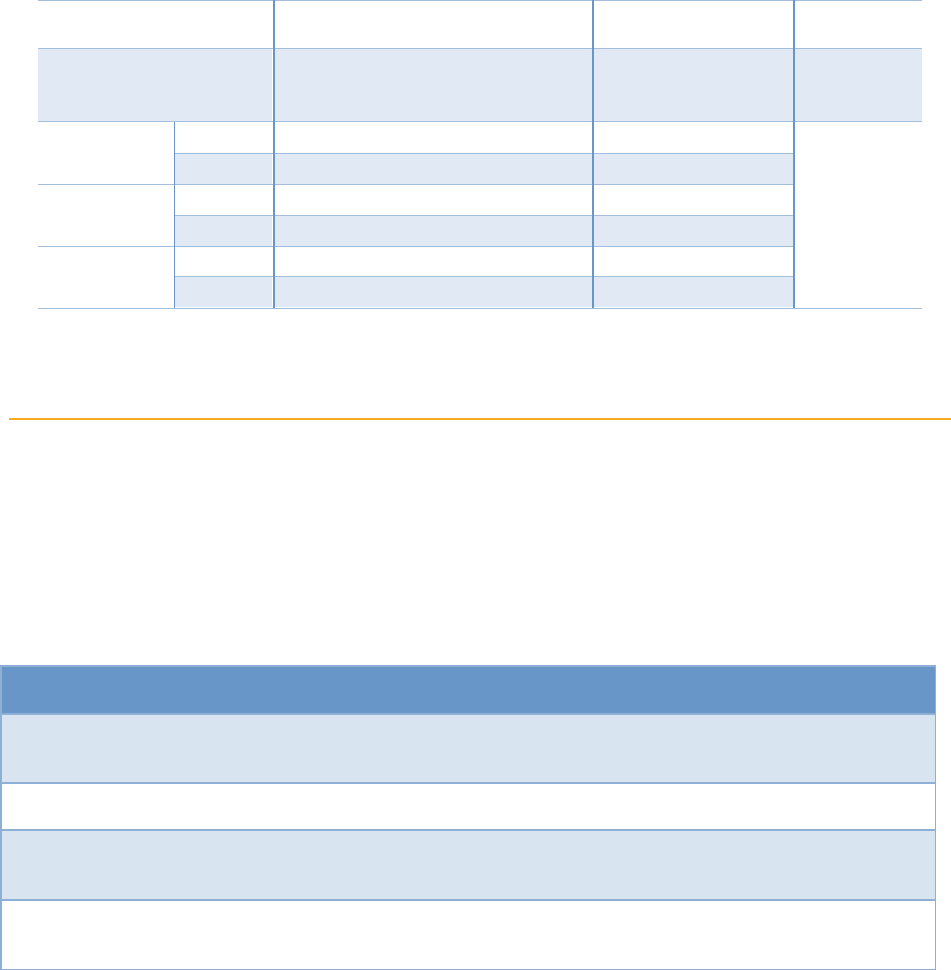
Energy Efficiency Report | 39
Table 7: Institutional Partnerships Programs Savings Snapshot
Energy Savings
Emissions
Cost-
Effectiveness
Electric
(GWh)
Demand
(MW)
Natural
Gas (MM
Therms)
CO
2
(Million
Tons)
NOx
(1000
pounds)
TRC
Reported
Gross
129
21
3
88
49
see
Commercial
TRC above
Net
100
17
3
67
37
Evaluated
Gross
111
19
3
75
42
Net
71
13
2
49
28
% Portfolio*
Gross
2%
2%
3%
1%
2%
Net
2%
2%
3%
1%
2%
*represents sector’s (or program area’s) percent contribution to overall evaluated net portfolio savings, excluding
Codes & Standards savings
Institutional Partnership Programs
For Institutional Partnership programs, PG&E and SCE administer resource programs throughout the state,
while SCG and SDG&E run non-resource Market Education and Outreach programs. Additionally, SCE
coordinates with SCG for resource programs involving natural gas projects. SDG&E serves its institutional
customers through broader commercial programs. Table 8 below summarizes PG&E and SCE partnerships,
excluding non-resource programs (federal government partnerships were inactive in the 2013-15 program
cycle).
Table 8: Institutional Partnerships - Resource Partnerships
Customer
PG&E Program
SCE Program
Community Colleges
PGE2110011 – California Community
Colleges
SCE-13-L-003A – California
Community Colleges Energy
Efficiency Partnership
University of California and
California State University
PGE2110012 – University of
California/California State University
SCE-13-L-003G – UC/CSU
Energy Efficiency Partnership
California Department of
Corrections and Rehabilitation
PGE2110014 – Department of
Corrections and Rehabilitation
SCE-13-L-003B – California Dept.
of Corrections and Rehabilitation
EE Partnership
State Agencies
PGE2110013 – State of California
SCE-13-L-003F – State of
California Energy Efficiency
Partnership
Table 9 below summarizes SCG and SDG&E’s non-resource programs.

Energy Efficiency Report | 40
Table 9: Institutional Partnerships - Non-Resource Partnerships
Customer
SCG Program
SDG&E Program
Community Colleges
SCG3739-LInstP – California
Community College Partnership
SDGE3267-LInstP – California
Community College Partnership
University of California and
California State University
SCG3740-LInstP – UC/CSU/IOU
Partnership
SDGE3268-LInstP –
UC/CSU/IOU Partnership
California Department of
Corrections and Rehabilitation
SCG3738-LInstP – CA Department
of Corrections Partnership
SDGE3266-LInstP – CA
Department of Corrections
Partnership
State Agencies
SCG3741-LInstP – State of
CA/IOU Partnership
SDGE3269-LInstP – State of
California /IOU
Colleges and universities account for the majority of the savings among the Institutional Partnerships,
contributing 82 percent of the evaluated net electricity savings, 73 percent of the electric demand savings, and
80 percent of the natural gas savings. College and university energy savings from these programs resulted in
82 percent of the CO
2
savings from Institutional Partnerships.
Highlights
Institutional Partnerships focused heavily on lighting and HVAC measures, which accounted for 49 percent
and 32 percent all evaluated net savings, respectively. New construction whole building measures contributed
an additional 15 percent of the savings. In total, 96 percent of all savings through Institutional Partnerships
was attributable to whole building, HVAC, or lighting measures. The remaining 4 percent of savings largely
came from custom projects and miscellaneous measures.
New construction whole building and HVAC measures also contributed significantly to natural gas savings,
providing 35 percent and 45 percent of the total savings, respectively, while pool covers contributed an
additional 11 percent of the natural gas savings. The remaining 9 percent of natural gas savings resulted
almost entirely from custom projects and water heating measures.
Findings
Many of the findings for the broader commercial sector programs are applicable to the smaller partnerships.
This is especially true with the State Agencies partnerships, which focus primarily on office buildings.
Custom projects at universities outperformed many other sectors. Colleges and universities exhibited some of
the highest program influence of all commercial and industrial sector programs, with net-to-gross ratios of 0.8
or higher. Two retrocommissioning projects at universities in 2014 reflected especially high net-to-gross ratios
of 0.85, though other university retrocommissioning projects exhibited much lower net-to-gross ratios that
were below 0.43 (IALC 2014, p.5-7).
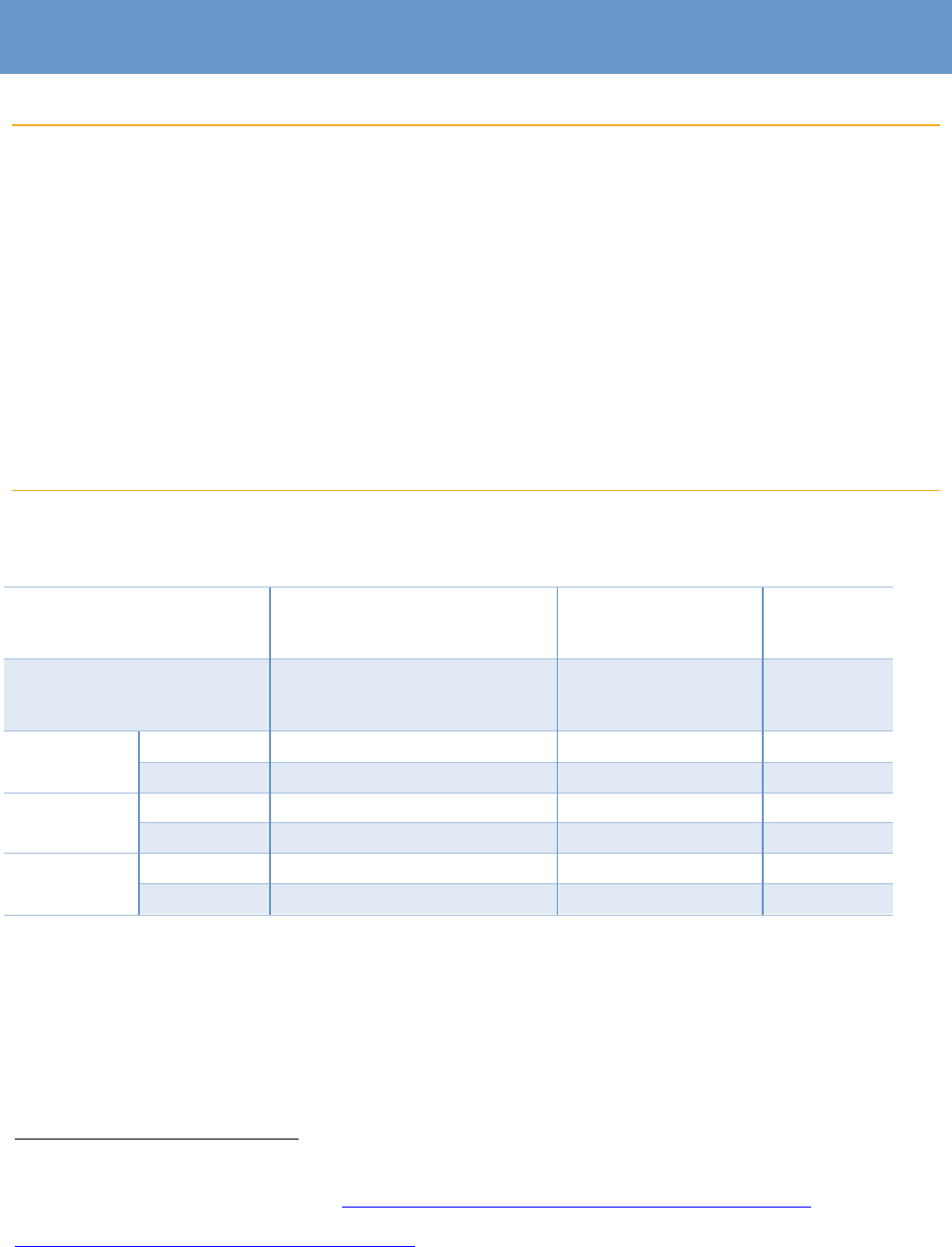
Energy Efficiency Report | 41
Industrial and Agriculture
Overview
Two of California’s biggest economic contributors are also two of California’s biggest energy consumers,
with the industrial and agriculture sectors accounting for 18 percent and 7 percent of the state’s
electricity consumption, respectively, in 2015.
57
The industrial sector also accounts for a quarter of the
gas consumption in the state.
58
Consequently, improving the efficiency of industrial and agricultural
processes presents a significant energy savings opportunity. The industrial and agriculture programs also
support Strategic Plan’s vision to support the long-term economic environmental success of California
agriculture.”
59
The CPUC and PAs undertook eight impact studies, two market studies, and one process study in the
industrial and agriculture sectors in the 2013-2015 program cycle.
Estimated Savings
Table 10: Industrial and Agriculture Sector Savings Snapshot*
Energy Savings
Emissions
Cost-
Effectiveness
Electric
(GWh)
Demand
(MW)
Natural
Gas (MM
Therms)
CO
2
(Million
Tons)
NOx
(1000
pounds)
TRC
Reported
Gross
880
160
62
806
675
Net
614
110
39
539
434
1.8
Evaluated
Gross
623
114
41
653
544
Net
370
67
26
401
330
1.4
% Portfolio
Gross
12%
12%
41%
9%
21%
Net
11%
11%
39%
10%
21%
*represents the Industrial and Agriculture sector’s (or program area’s) percent contribution to overall evaluated net
portfolio savings, excluding Codes & Standards savings
*Note that this table includes savings for lighting and HVAC measures in the Industrial and Agriculture Sectors that are
also included in the savings tables provided in the separate chapters for these cross-cutting measures.
57
Email from California Energy Commission dated August 7, 2017.
58
The industrial sector accounted for 25 percent of the natural gas demand in California. California Energy Commission, Supply and
Demand of Natural Gas in California, Accessed at: http://www.energy.ca.gov/almanac/naturalgas_data/overview.html.
59
See CPUC Decision D.09-09-047 (Sections 5.5 Statewide Industrial Programs and 5.6 Agricultural Programs).
http://docs.cpuc.ca.gov/Published/Graphics/107829.pdf

Energy Efficiency Report | 42
The IOUs spent $359 million in the 2013-2015 program cycle – roughly 14 percent of total portfolio
expenditures – on industrial and agriculture efficiency programs. Industrial and agricultural programs
generated evaluated net savings of 370 GWh and 67 MW, which represented 11 percent of both portfolio
electric and peak demand savings.
60
Fifty-nine percent of the gross electric and peak demand industrial and
agricultural sector savings, respectively, were directly attributable to program interventions.
Evaluated gross natural gas savings were 41 million therms for these two sectors, with 63 percent of the
industrial and agriculture gas savings being directly attributable to program interventions. The resulting net
natural gas savings for the industrial and agriculture sectors comprised 39 percent of the entire portfolio’s net
natural gas savings for 2013-2015. Of the industrial and agriculture sectors’ natural gas savings, 90 percent of
them came from process measures within the sector. Industrial and agriculture process measures are
efficiency measures targeted at improving specific parts of a company’s operations. For example, installing
heat recovery processes in an industrial facility and using that waste heat for energy in another facility
operation can cut down on the amount of primary fuel needed to run that facility. Process improvements
such as this therefore contribute significantly to the overall natural gas savings.
Lighting and HVAC measures, which are also discussed in separate cross-cutting chapters later in this report,
were less dominant in the industrial and agriculture sectors than in other sectors. However, lighting and
HVAC measures still provided, respectively, the second and third most savings in the industrial and
agriculture sectors (after process improvements). Twenty percent of the evaluated net electric savings in the
industrial and agriculture sectors came from lighting measures and 11 percent of electricity savings came from
HVAC. For natural gas savings, HVAC makes up about five percent of evaluated net savings in both sectors
combined.
Industrial & Agricultural Programs
There were 38 industrial programs and 21 agricultural programs implemented by the IOUs or by third party
implementers in the 2013-2015 portfolio. Some programs focused on specific market segments, such as
refineries, wastewater treatment facilities, or dairies, while others focused on specific technologies, such as
boilers or air compressors. Energy efficiency projects in the industrial and agriculture sectors generally focus
on manufacturing process improvements or retrofitting opportunities, but also include standardized and new
construction projects. For a majority of projects, energy savings were calculated on a “custom” basis, which
means that incentives were calculated based the energy saved for each specific project.
In addition, in 2015 the IOUs and CPUC, with the assistance of consultants, began to develop a Strategic
Energy Management program. Strategic Energy Management is a holistic program that supports industrial
facilities in making energy management part of their business culture. Strategic Energy Management is a long-
term approach that provides training, technical support and incentives to industrial customers to improve the
efficiency of their facilities and operations and assist them in maintaining that efficiency. Implementation of
the program will begin early in 2018.
60
The estimates in Table 10 include savings from lighting and HVAC projects, as well as deemed savings from projects in those
sectors, all of which are discussed in other chapters in this report. The discussions of evaluated savings in the remainder of this
chapter are based on industrial, agriculture and large commercial ex post evaluation results, which include only custom calculated
projects.

Energy Efficiency Report | 43
Highlights
Based on evaluated savings results, the industrial and agriculture programs achieved nearly one third of the
natural gas savings goal established for the entire portfolio. Evaluated net electricity savings were 60 percent
of the originally reported net savings, yet the programs were cost effective.
To help resolve the issues causing differences between IOU reported data and evaluated results, the IOUs
and CPUC staff have been engaging in a collaborative process to review and approve project savings
estimates prior to implementing projects.
61
This process is known as the ex-ante review process. The intent of
the early review process is to reduce the gap between PA-reported savings and evaluated savings and to
provide immediate feedback to the utilities with respect to savings calculation methodologies and program
influence metrics. The collaborative early review process proved useful in resolving project-specific questions
in the 2013-2015 portfolio period. However, the early or “ex ante” review process has proved difficult to
implement due to delays in obtaining data and performing analyses on the part of the implementers, IOUs,
and ex ante reviewers. The project specific results and other direction provided by the review team have
generally not resulted in more accurate savings estimates for projects that do not undergo early review. To
address these issues, a stakeholder working group comprised of IOU and CPUC staff and stakeholders
including program implementers developed different approaches to the early review process through a
collaborative effort that may reduce delays and result in wider dissemination of information going forward.
62
Findings
Impact Evaluation
Custom Impact Evaluations: Beginning in 2013, custom program impact evaluations were completed on an
annual basis; the impact evaluations included industrial, agriculture, large commercial, and nonresidential new
construction custom projects to verify energy savings reported by the IOUs. For 2013-2015, the studies
included a comprehensive suite of field-based evaluations, as well as a qualitative project practices assessment,
to discern possible changes in ex-ante savings development practices.
The combined results from 2013-2015 showed a significant variation in the IOU evaluated results versus the
reported savings.
63
The combined evaluation results were based on a sample of 513 projects and found that
the IOUs achieved from 44 to 80 percent of their reported gross savings, depending on the IOU and fuel
type. The percentage of savings that were a direct result of program intervention was similar in magnitude to
the results from the past few evaluation cycles.
A novel element incorporated in the 2013-2015 evaluations was a qualitative Project Practices Assessment
carried out for all 513 impact sample points. Practice Assessments are designed to yield results that can be
used to target improvement in program administrator treatment of important gross impact parameters,
methods and procedures that are common across applications. Practice Assessment findings also identify
critical weaknesses in documentation and reporting. The Practice Assessment form and procedure was
61
Decision 11-07-030, Attachment B: Custom Review Process; and, Decision 12-05-015 Providing Guidance on 2013-2014 Energy Efficiency
Portfolios and 2012 Marketing, Education, and Outreach, 18 May 2012, p. 344
62
Track 2 Working Group documents are available at http://t2wg.cadmusweb.com/.
63
The 2015 results are available at. https://pda.energydataweb.com/#/ Click on the “advanced search” link and on the “From Work
Order” drop-down list select (ED_I_IAL_5-Itron) 1315 IALC Impact.

Energy Efficiency Report | 44
designed to document both the PA and evaluator conclusions and to ensure that results could be analyzed
objectively to assess conformance with policy guidelines, best practices and program rules.
Key findings from the impact evaluation include:
Documentation for many of the sample projects was insufficient to initiate an appropriate
independent analysis and investigation.
PA-reported gross savings differ from evaluated savings for three primary reasons: (1) observed
changes in operating conditions, (2) baseline specifications (i.e., determination of the "status quo"
baseline energy use from which the additional energy savings were measured), (3) IOU calculation
methods. Other reasons for differences included incorrect equipment specifications, ineligible
equipment, and incorrect measure counts.
Customer interviews representing 575 installed projects were conducted to understand the role of the
program and other market factors in their decision to take an energy efficiency action. The
information obtained through these interviews was converted into a net to gross ratio. The general
conclusions drawn from the results of this large sample were that free ridership remains high for
custom programs.
Nonresidential Whole Building Impact Evaluation: In addition, a Nonresidential Whole Building Impact
Evaluation was conducted in 2013. The evaluation addressed non-residential new construction whole building
projects that received incentives under the statewide Savings by Design program. The evaluation estimated
gross impacts for 25 projects across all PAs, conducted professional telephone surveys supporting net-to-
gross estimation for the 25 gross sample points, and provided engineering reviews of the 25 gross sample
points to support the qualitative project practices assessment. Case weights were used to extrapolate the
evaluation results to the population. With all the sample points included, the mean statewide realization rates
were 0.92 for kWh, 0.79 for kW and 0.57 for therms. Although the kWh gross realization rates (GRRs) for
the sampled projects ranged from -0.46 to 2.28, the resulting overall kWh GRR of 0.92 was slightly above the
0.9 default ex ante GRR adjustments for the SBD program. However, the overall program natural gas GRR
of 0.57 was significantly below the default 0.9 ex ante GRR adjustments for the SBD program.
The difference in the savings between the ex ante estimate and the ex post results were primarily due to the
differences in modeling assumptions, calculation methods and baseline assumptions. The four principal
reasons that reported gross impacts differed from evaluated results were (1) differences in operating
conditions, where the field visit revealed differences in the building’s operational conditions that warranted
adjustment to the building energy models, (2) differing baselines, where the evaluation team determined a
different baseline than the one used by the PA was more appropriate, (3) differing calculation methods, where
the evaluator used a different modeling approach, and (4) model calibration, where models were adjusted to
calibrate model energy using billing-meter or end-use data. On a statewide basis, the net-to-gross ratio for the
whole building program was estimated at 0.53 for kWh and 0.51 for therms and 0.53 based on source
MMBTU (one million British thermal units) which was the basis of sample design.
64
Water-Energy Nexus: CPUC evaluators also conducted a study that centered on calculating changes in water
utilities’ electricity consumption coincident with the 2015 statewide urban water reduction mandate.
65
The
64
DNV-GL, NRNC Whole Building Impact Evaluation Report PY-2013, 20 July 2015. Available at https://pda.energydataweb.com/#/.
65
Water agency customers are served by both industrial and agriculture programs.

Energy Efficiency Report | 45
study used billing data to calculate changes in water-related electricity consumption for a selection of 32 water
agencies throughout the state. The dataset focused on electric accounts associated with groundwater
pumping, water transport, and potable water treatment, upstream of end users and therefore exclusive of
energy inputs directly from end users or wastewater treatment. Based on the analysis, the evaluation team
developed data-driven recommendations for adjustments to the CPUC water-energy calculator.
66
In part, the
study found that embedded energy use reductions underwent a downward trajectory in two parts, one from
2013 to 2014 and one from 2014 to 2015, with an especially large reduction 2013 to 2014 for groundwater-
reliant water agencies. Based on limited data, the energy intensity of groundwater production and distribution
appeared to have increased over the 2013-2015 period, coincident with increasing drought conditions.
Path to Statewide Goals
The 2015 Potential and Goals study reflected ongoing potential for cost-effective energy efficiency in the
industrial sector. With the filing of the Energy Efficiency business plans for the new Rolling Portfolio Cycle
framework, industrial and agriculture programs will be updated to reflect these remaining savings
opportunities.
While the industrial and agricultural savings opportunities vary by service territory demographics, there are a
handful of overarching new approaches to note. Pay for performance strategies and increased use of data
analytics to target specific customer needs at industrial and agriculture facilities will combine to create a more
incentivized, targeted customer segment. In addition, strategic energy management approaches are designed
to promote persistent operational, organizational, and behavioral changes that yield greater efficiency gains.
Strategic Energy Management is a key strategy of the U.S. Department of Energy’s industrial energy efficiency
strategy. Overall, with support from the CPUC, California IOUs have opted to make substantial changes to
the former Continuous Energy Improvement program and transition to a resource-acquisition program
adopting major design components and M&V protocols from successful programs implemented by
Northwest utilities in the U.S. and Canada.
66
The CPUC, working with stakeholders and PAs, developed a calculator to determine energy savings from and the cost effectiveness
of cold water conservation projects carried out jointly by the CPUC and water entities. See Water/Energy Cost-Effectiveness Analysis,
Navigant Consulting, April 2015. http://www.cpuc.ca.gov/WorkArea/DownloadAsset.aspx?id=5356.

Energy Efficiency Report | 46
Heating, Ventilation, and Air Conditioning
Overview
The high demand for air conditioning in California has made heating, ventilation and air conditioning
(HVAC) is one of the largest energy end uses and the single largest contributor to peak demand. The CEC
estimates that cooling buildings comprises up to 30 percent of total demand in the hot summer months, and
that poor installation and maintenance may result in potential energy losses of 20 to 30 percent.
67
As the use
of space cooling and heating has increased, the state has struggled to encourage the market to adopt higher
efficiency units and develop a sustainable, quality-focused HVAC industry.
To address these issues, the Strategic Plan called for a “transformation” of the industry to ensure that HVAC
technology, equipment, installation, and maintenance are of the highest quality to promote energy efficiency
and peak load reductions. To meet these objectives, the PAs have designed and implemented a variety of
HVAC programs to transform the industry by encouraging the purchase of highly efficient HVAC units,
encouraging high-quality HVAC system installations, and demonstrating to property owners that quality
installation and proper maintenance of HVAC systems leads to increased savings, greater comfort, and
improved indoor air quality.
During the 2013-2015 energy efficiency program cycle, CPUC staff carried out ten HVAC studies. The key
takeaways from the two most prominent HVAC impact evaluations, the Upstream HVAC Study and the
Quality Maintenance Study, are:
The Upstream HVAC Commercial Installation program achieved the greatest amount of evaluated
savings, with an overall gross realization rate of 79 percent for small packaged HVAC units, which
represent the majority of the equipment served by the program ( as noted earlier, realization rate is a
comparison of the savings reported by an IOU to the savings determined through evaluation
studies).
The evaluated savings results for the Commercial and Residential Quality Maintenance programs
have been disappointing. Evaluation study results recommended enhancing the programs by
including improved fault detection diagnostics to reduce the need for maintenance activities that do
not deliver savings, such as small refrigerant charge adjustments.
67
California Energy Commission, Strategic Plan to Reduce the Energy Impact of Air Conditioners (June 2008), Available:
http://www.energy.ca.gov/2008publications/CEC-400-2008-010/CEC-400-2008-010.PDF
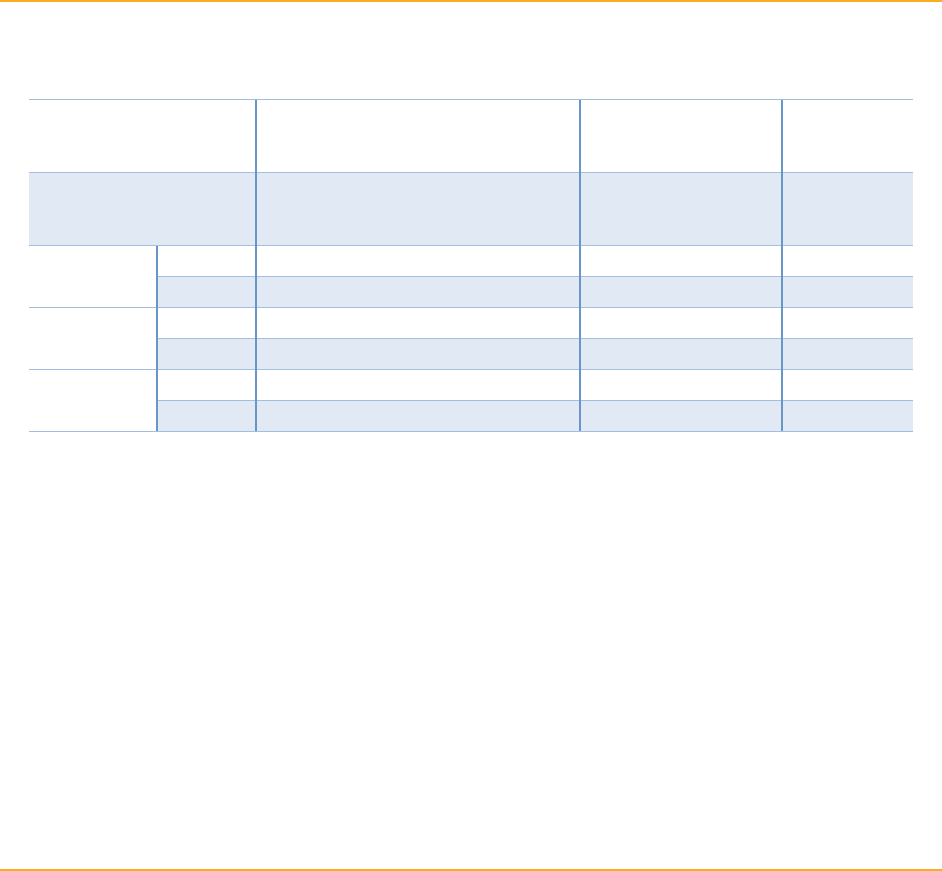
Energy Efficiency Report | 47
Estimated Savings
Table 11: HVAC Program Savings Snapshot*
Energy Savings
Emissions
Cost-
Effectiveness
Electric
(GWh)
Demand
(MW)
Natural Gas
(MM Therms)
CO
2
(Million
Tons)
NOx
(1000
pounds)
TRC
Reported
Gross
840
199
21
558
296
Net
627
151
15
414
217
1.1
Evaluated
Gross
627
178
14
449
230
Net
422
129
9
314
158
0.9
%
Portfolio**
Gross
12%
19%
14%
6%
9%
Net
13%
21%
13%
8%
10%
* These savings are also reported in the respective sector summary tables in earlier chapters.
** Represents HVAC’s percent contribution to overall evaluated net portfolio savings, excluding Codes & Standards
savings.
The PAs spent $543 million on core HVAC efficiency programs in the 2013-2015 program cycle, resulting in
evaluated savings of 422 net electric GWh and 129 net demand MW. Sixty-seven percent of electric savings
and 72 percent of demand savings were directly attributable to the program interventions. Realization rates
were high with programs returning a 67 percent net realization rate on electricity savings, a 85 percent net
realization rate on demand savings, and 60 percent net realization rate on gas savings.
It should be noted that other programs not explicitly directed at HVAC systems include measures that
improve HVAC system efficiencies (e.g., residential whole house and commercial building
retrocommissioning programs), so the HVAC-specific programs do not account for all HVAC-related energy
savings achieved in the portfolio. Savings from HVAC measures achieved in various sectors are also included
in the sector-focused chapters.
HVAC Energy Efficiency Programs
The IOUs’ HVAC portfolio consists of four core HVAC energy efficiency subprograms:
Upstream Commercial Distributor
Commercial Quality Maintenance
Residential Quality Maintenance
Residential Quality Installation
Since the 2010-12 program cycle, there have been no fundamental changes in the nature of these programs.
However, program design changes have been implemented to improve energy savings and cost
effectiveness. In addition to these core programs, PG&E and SDG&E are implementing Commercial tune-
up programs delivered by third-party contractors.

Energy Efficiency Report | 48
Highlights
HVAC programs have more promise when accompanied by a more active solicitation of new energy
efficiency program customers. This effort differs from program to program and depends on PAs providing
companies and homes with a clear view of how an HVAC program can help them, how it provides rebates,
and how the program saves them money over time.
Communication and coordination are important in terms of learning about best practices on the part of other
IOUs and sharing constructive information informally. This can be done through workshops, forums, and a
focus cost effectiveness. What has also proven effective is training implementers to engage in quality
workmanship and hiring competent technicians to do professional grade installation and maintenance. New
technologies can also improve HVAC programs increasingly over time, depending on cost and applicability.
The best example of success has been the Commercial Upstream Rebate Program, which continues to
provide the majority of the commercial sector HVAC savings. As mentioned previously, the Upstream
Commercial HVAC program has achieved the greatest amount of evaluated savings, with an overall gross
realization rate of 79 percent for small packaged HVAC units, which represent the majority of the equipment
served by the program.
Findings
HVAC evaluations for the 2013-2015 cycle focused on the subset of the HVAC programs providing the
largest contribution to statewide savings – namely, Upstream HVAC and Commercial Quality Maintenance
programs, with a 2015 study of Residential Quality Maintenance.
HVAC 1: Commercial Upstream Rebate Program
The evaluation of the HVAC Commercial Upstream Rebate Program (HVAC-1) verified that upstream
programs continue to provide the majority of the commercial sector HVAC savings. These programs focus
on equipment ranging from small packaged and split HVAC units to large rooftop units and chillers. The
study, like the program, was designed to look at the efficiency of the incented equipment. The findings for
the Upstream HVAC Program Impact Evaluation are summarized below:
Chiller and Large Unit efficiency. Actual efficiencies of the installed equipment were lower than
ex ante estimates of assumed efficiency levels. The resulting low savings levels were most prevalent
for air-cooled chillers and large unitary systems, which had ex-post gross savings realization rates of
11 percent and 15 percent, respectively. Savings estimates reported by the IOUs did not pass basic
quality control checks.
Small and Medium Package HVAC equipment efficiency. Program savings for small and
medium packaged HVAC units (up to 20 tons) evaluated in 2015 improved in comparison to 2013-
14. This impact evaluation returned lower than expected savings for the smallest size units (under
5.5 ton) but found good realization rates for units 5.5–20 ton. The primary driver of the low
realization rates was that, on average, the full-load efficiencies of the installed equipment were lower
than the program assumptions.
The evaluation team believes that the primary reason for the improvements in packaged HVAC units
between 5.5 and 20 tons was the code update and updated version of DEER for 2015. The 2013-
2014 programs had to utilize different baselines within the calendar year, while the 2013 Title 24

Energy Efficiency Report | 49
Building Efficiency Standards (effective July 1 2014) were fully in force during the 2015 program
year. The field-testing of 5.5-20 ton units showed that performance was in alignment with current
DEER assumptions.
Economizers. The evaluation team found that a considerable savings potential is not realized
because many economizers for unitary systems installed through the program are not functioning
properly. One-quarter of the economizers were found to be not working. Further tests uncovered
errors such as improperly wired sensors, indicating that the economizer was not installed correctly
and never functioned as designed. The economizer failure rate of 25 percent is a great improvement
over earlier impact evaluations, but additional savings can be obtained by improving the reliability of
economizers installed in the equipment covered under the Upstream HVAC program.
Net to Gross Ratio (NTGR). DNV-GL’s data collection and NTGR expansion analysis resulted in
an overall NTGR score of 64 percent for the upstream program. The ex-ante NTGR assumption was
85 percent for most programs and measures.
HVAC 3: Commercial Quality Maintenance
The Commercial Quality Maintenance (HVAC-3) study gathered field observations on installation rates and
contractor maintenance practices, and observed several challenges with program implementation. Gross
savings for commercial maintenance measures have improved since the 2010-12 evaluation cycle, partially
because implementers have focused on enrolling contractors that deliver higher quality work. Findings for
the five main measure groups in the programs were:
Economizer repair: A statewide installation rate was calculated as the number of properly
functioning economizers divided by the number of economizers tested. The site-level results were
combined across all IOUs, which resulted in a statewide installation rate of 61 percent.
Thermostats: Evaluations noted many thermostats that did not meet the program requirements for
set-back (cooling) or set-up (heating) temperatures during unoccupied building periods. The
Statewide realization rate was 89 percent, indicating energy savings were obtained even though
program requirements were not met.
Coil cleaning: Coil cleaning results have been stable over the 2013-15 evaluation cycle. Applying
the revised simulation savings across all measure variations resulted in average gross realization rates
of 108 percent for electric energy (kWh) savings and 112 percent for electric demand reduction (kW).
Supply fan controls: The installation rate of the supply-fan adjustment was 47 percent for
programs offering this measure, which was much lower than anticipated.
QM measure group: Unlike the other IOUs, which reported savings on a measure-by-measure
basis, SCE reported savings for a single quality maintenance measure group. This measure group
represents unitary HVAC repair and maintenance initiatives under the SCE’s Commercial QM
program. The overall realization rate for the QM measure group was 90 percent primarily due to
high realization rates for coil cleaning, economizer repair, and supply fan control measures.
Net to Gross Ratio (NTGR). The net savings analysis consisted of a series of phone interviews
with participating contractors. DNV-GL’s data collection and NTGR expansion analysis resulted in
an overall NTGR ratio score for kWh savings of 31 percent for the IOU core quality maintenance
programs, and a NTGR score for kWh savings of 41 percent for third party tune-up programs. Ex-
ante assumptions for NTGR were between 73 percent and 85 percent, depending on the program.
Although there were large variations in responses across the surveyed contractors, the low mean
Energy Efficiency Report | 50
scores indicate a potential high level of free-ridership among the current pool of participating
contractors.
For the Residential Quality Maintenance programs covered by the HVAC-3 report, a billing analysis was
conducted on customers in the PG&E and SDG&E service territories. Although gross savings realization
rates were high, net savings obtained from a non-participant comparison group analysis were disappointing.
SDG&E’s residential QM program had no net energy savings and PG&E’s had a net realization rate of 26
percent in 2015. The billing analysis conducted for the residential quality maintenance program shows wide
swings from gross savings to net savings. These results foreshadow some of the difficulties in applying a
billing analysis to this type of program.
HVAC 5: Laboratory Test
The Laboratory Test (HVAC-5) study evaluated economizer performance and system faults for common
commercial rooftop HVAC systems. Results of the packaged roof top unit tests provided the following
findings:
Economizers.
The impact of economizers on system efficiency is significant and unexpected due to
higher than anticipated economizer leakage. For units tested with economizers, average outdoor
airflow with the economizer damper completely closed exceeded code specified minimum outdoor
air ventilation requirements for common commercial buildings.
Excess ventilation loads (over code-
required minimums) can have a significant negative impact on cooling energy consumption.
For
economizers that were fully open, the average outdoor airflow less than 100 percent, limiting the
amount of free cooling supplied.
Out of the Box Efficiency.
The units as delivered from the manufacturer (out-of-the-box, or
OOTB) did not consistently perform at the rated efficiency. Small (3 ton) units tested within the
published Air Conditioning, Heating and Refrigeration Institute (AHRI) efficiency and capacity
values, but larger (7.5 ton) units had efficiency below the rated values. Units failing the OOTB test
required modifications in the lab to achieve the published efficiency and capacity ratings.
Impact of Field Conditions. Optimal efficiency was achieved at airflow rates lower than the value
used in standard AHRI tests due to higher duct system resistances commonly observed in the field.
The additional fan power required to increase the airflow rate to the AHRI test value at field
observed duct resistance overshadowed any efficiency gains.
Refrigerant Charge Fault. Undercharge conditions had a much greater (negative) impact on
capacity and efficiency than overcharge conditions. The optimal refrigerant charge for a unit may
slightly exceed the factory charge under extreme conditions.
Coil Cleaning. Condenser coil blockage has a greater negative effect on system efficiency than on
evaporator coil blockage.
HVAC Fault Diagnosis.
The diagnosis and adjustment of refrigerant charge is difficult to conduct
in the field. Most fault detection diagnostic protocols are based on conditions, which are nearly
impossible to measure in the field with standard contractor maintenance equipment.
Troubleshooting multiple faults through a logical fault detection diagnosis protocol will reduce or
eliminate false alarms, misdetection, and misdiagnosis. Cleaning coils, changing filters, and checking
airflow are important first steps before attempting additional fault detection diagnosis on the unit.
Refrigerant Gauge Attachments. Tests of the effects of attaching and detaching refrigerant hoses
showed a decrease in both efficiency and capacity as the number of attachments increased. The loss

Energy Efficiency Report | 51
of efficiency due to this routine service action underscores the need to avoid unnecessary refrigerant
charge checks and adjustments.
Instrumentation Accuracy.
The least accurate temperature sensors tested recorded a 10 ºF
temperature error at typical hot day test conditions. Such errors can result in misdiagnosed or
undiagnosed faults.
HVAC 6: HVAC Permit and Code Compliance Market Assessment
The HVAC Permit and Code Compliance Market Assessment (HVAC-6) study examined residential single-family
central HVAC replacements. At a high level, findings from the study suggest that:
Permitting rates are low, with the estimate of the true permitting rate somewhere between 8
percent and 29 percent. Under current market and enforcement conditions, permitting does not lead
to increased energy efficiency of HVAC change outs. The energy efficiency levels for both permitted
and non-permitted sites were similar and did not meet the Title 24 requirements.
There were documentation gaps for permitted installations. Three-quarters of permitted
installations had the required Home Energy Rating System (HERS) compliance forms. Performance
tests found some systems were out of compliance even though the documentation indicated that
these units were in compliance.
There is a lack of knowledge among homeowners and contractors of the Title 24 requirements.
There is inconsistency in enforcement across building departments, and inconsistency in
enforcement across inspectors within a single building department.
Contractors drive the decisions about permitting, even though homeowners bear the
responsibility.
Path to Statewide Savings
The Upstream HVAC program represented the largest reported savings and had an overall gross
realization rate of 79 percent for small packaged HVAC units, which represent the majority of the
equipment served by the program. Net to gross ratios were 64 percent, down somewhat from the 80
percent net to gross ratios in the 2010-2012 program cycle. Upstream HVAC programs are expected to
continue to deliver cost effective savings for the HVAC portfolio in the future. As the market
penetration of new HVAC technologies continues to grow, piloting evaluation methods for these new
technologies is necessary in order to improve the reliability of savings estimates for these systems.
The results for the Commercial and Residential Quality Maintenance programs have been disappointing.
Evaluations of the quality maintenance programs since the 2006-2008 evaluation have returned low gross
realization rates. Gross realization rates have improved for some measures during the current evaluation
cycle, but a drop in the net to gross ratios has dampened these improvements. Maintenance programs need
to be re-designed before they can be counted on to deliver significant savings into the future. Continued
support for and improvement of workplace education and training is also required to supply the industry with
an expanded pool of qualified HVAC installation and maintenance technicians.

Energy Efficiency Report | 52
Lighting
Overview
Lighting represents over one quarter of residential and commercial electricity use in California and has
historically represented at least half of total portfolio-level savings.
68
,
69
The Strategic Plan cites energy
efficient lighting as a critical element of its zero net energy vision and envisions a 60 to 80 percent reduction
in California’s electric lighting energy consumption by 2020 (over a 2010 baseline). California Assembly Bill
1109 (Huffman, 2007), known as the California Lighting Efficiency and Toxics Reduction Act, supports this
goal by phasing out some traditional, low efficiency incandescent lamps by 2018.
70
For this reason, the CPUC
directed program administrators to start shifting energy efficiency program support away from basic spiral
compact fluorescent lamps (CFLs) and toward more efficient lamps (e.g., light-emitting diode [LED] lamps)
and other advanced lighting technologies starting with the 2010-2012 program period.
71
This guidance
continued into the 2013-2015 program period.
When manufacturers first introduced CFLs into the market in large quantities during the 1990s, consumers
had poor opinions of the products, and many products were of inferior quality and had higher costs than
traditional bulbs. These issues may have contributed to the slow CFL uptake by California consumers. To
help avoid similar challenges with early LED lamps, the CPUC issued a new lighting program requirement
during the 2013-2015 period to ensure that program-discounted LED lamps were of high quality. In
December 2012, the CEC published a California-specific quality standard for LED lamps known as “the
CEC specification” or the “California quality specification.”
72
Around the same time, the CPUC issued a
decision that required the California IOUs to provide energy efficiency program incentives only for LED
lamps that meet the CEC specification within one year of the standard’s adoption by the CEC.
73
During the
“transition period”—until January 2014—the CPUC allowed the IOUs to continue to provide incentives for
LED lamps that met the ENERGY STAR standards. Starting in 2014, compliance with the CEC
specification for LED lamps became the mandatory quality standard for LED lamps included in the IOUs’
incentive programs.
68
California Energy Commission, 2011. 2011 Integrated Energy Policy Report. Publication Number: CEC-100-201-001-CMF.
69
In the 2006-2008 program cycle, indoor lighting accounted for 58 percent of the evaluated electric savings.
70
California State Assembly, 2007. Assembly Bill 1109, Ch. 534, Article 10.02. Lighting Toxics Reduction.
71
California Public Utilities Commission, 2009. D.09-09-047: Decision Approving 2010 to 2012 Energy Efficiency Portfolios and
Budgets. Page 7. October 2009.
72
California Energy Commission, 2012. Voluntary California Quality Light-Emitting Diode (LED) Lamp Specification: A Voluntary
Minimum Specification for “California Quality” LED Lamps (Final Staff Report). CEC Publication number CEC-400-2012-016-SF.
December 2012.
73
CPUC, 2012. D.12‐ 11‐ 015. Decision Approving 2013-14 Energy Efficiency Programs and Budgets.
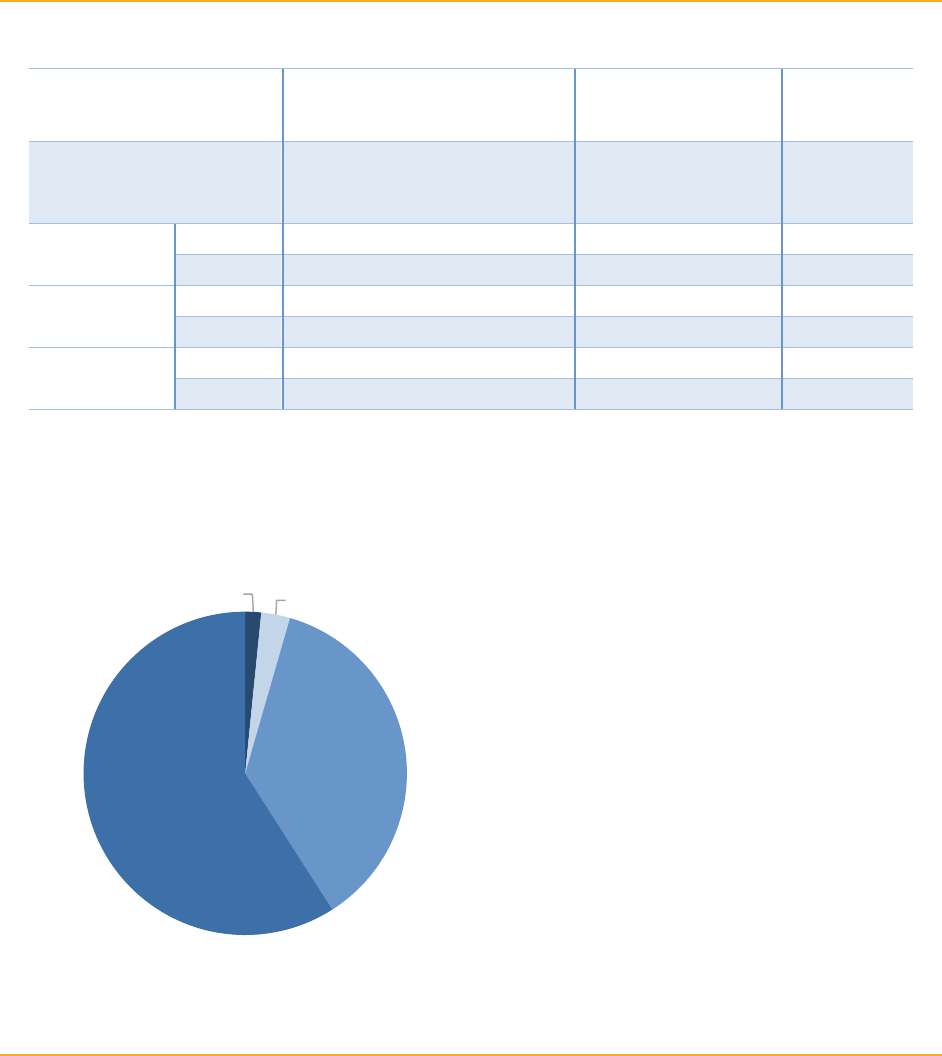
Energy Efficiency Report | 53
Agricultu
re, 2%
Industrial
, 3%
Residenti
al
36%
Commer
cial, 59%
Figure 6: Percent of 2013-2015 Evaluated Net
Energy Savings from Lighting Measures by Sector
Estimated Savings
Table 12: Lighting Savings Snapshot
Energy Savings
Emissions
Cost-
Effectiveness
Electric
(GWh)
Demand
(MW)
Natural
Gas
(MM
Therms)
CO
2
(Million
Tons)
NOx
(1000
pounds)
TRC
Reported
Gross
2,722
406
-23
1,243
131
Net
1,892
284
-15
867
99
1.4
Evaluated
Gross
2,863
430
-26
1,297
121
Net
1,739
268
-15
790
83
1.3
% Portfolio
(Evaluated)
Gross
56%
45%
18%
5%
Net
54%
43%
19%
5%
Across all programs in the 2013-2015 portfolios,
lighting measures accounted for 54 percent of the
net electricity savings (1,739 GWh). Of this, SCE
achieved 57 percent, PG&E 33 percent, SDG&E
10 percent, and MCE achieved the remainder (less
than one-tenth of one percent of evaluated net
electricity savings). Expenditures associated with
these savings totaled $783 million, exceeding
the$626 million budget for lighting programs by 25
percent. The lighting category accounts for just
below 30 percent of the total $2.64 billion of
expenditures for the 2013-15 portfolio.
Figure 2 shows the percent of evaluated net energy
savings from lighting measures in the 2013-2015
portfolios across all programs and program
administrators by sector. As shown, the
commercial sector accounted for the largest share
of evaluated net electricity savings from lighting measures at 59 percent, followed by residential at 36 percent.
Lighting Programs
The Primary Lighting program provides incentives to manufacturers to produce energy efficiency lighting
measures. Key measures included CFLs, LED lamps and fixtures, and dimmable fluorescent ballasts, as well
as other efficient lighting technologies. The Primary Lighting program was responsible for the largest share of
savings from lighting measures, accounting for 46 percent of evaluated net electricity savings from lighting
measures in the 2013-2015 portfolio.

Energy Efficiency Report | 54
The CPUC directed the IOUs to begin phasing out incentives for basic CFLs during the 2010-2012 program
period.
74
The Primary Lighting Program’s budget across the three IOUs decreased from $168 million during
the 2010-2012 period ($56 million per year) to $70 million in 2013-2014 ($35 million per year).
75
Most of this
budget reduction was related to IOUs ramping down their incentive support for basic CFLs. The IOUs began
introducing LED lamps into the Primary Lighting program in relatively small quantities during 2013 and in
somewhat greater quantities in 2014 and 2015.
76
Nonetheless, CFLs still accounted for the largest share of
evaluated net energy savings from lighting measures in the 2013-2015 portfolios across all programs and
program administrators by lighting measure group at 38 percent (see 14), while LED lamps accounted for 18
percent.
The Statewide Commercial Deemed Savings program
accounted for the second largest share of evaluated
net energy savings from lighting measures included in
the 2013-2015 portfolio (12 percent).
77
The purpose
of the 2013-2015 Commercial Deemed Savings
program, a component of the Statewide Commercial
program, was to encourage installation of energy-
efficient equipment and systems in retrofit and new
installations by reducing the initial investment costs
associated with these measures. The program also
aimed to offer a simple application process to reduce
participation costs. The 2013-2015 program included
measures such as energy-efficient linear fluorescent
fixtures, retrofit kits, and lamps; metal halide lamps;
induction fixtures; LED fixtures and retrofit kits; and
other energy-efficient lighting measures.
Findings
The CPUC and energy efficiency program administrators conducted seven impact evaluations, eleven process
studies, and two market studies for lighting, based on the 2013-2015 program period. These studies provided
substantial information regarding lighting measures. Some of the key findings from these studies are
highlighted below. Since LED lamps began to increase in significance to the portfolio during this period,
many of the findings focus on LED measures. Below are findings regarding pilot and trial programs, LED
quality and pricing, and the effects of the IOUs’ upstream lighting programs on California’s market for
residential replacement lamps.
Pilot and trial programs:
Key findings regarding 2013-2015 pilot programs focused on lighting measures include:
74
Page 7. Decision Approving 2010 to 2012 Energy Efficiency Portfolios and Budgets, CPUC ED, October 2009.
75
Page 18. California Residential Replacement Lamp Market Status Report: Upstream Lighting Program and Market Activities in
California through 2015, DNV GL, November 2016.
76
Page 11. Impact Evaluation of 2015 Upstream and Residential Downstream Lighting Programs, DNV GL, April 2017.
77
All other programs in the 2013-2015 portfolio accounted for less than 10 percent of evaluated net energy savings from lighting
measures.
38%
18%
13%
9%
3%
3%
11%
0%
20%
40%
60%
80%
100%
Percent of Evaluated Net Energy Savings (GWh)
from 2013-2015 Lighting Measures
All other lighting
High bay flourescent
LED street lights
LED fixture
Linear fluorescent
LED lamp
CFL
Figure 7: Percent of Energy Savings by Lighting Measure

Energy Efficiency Report | 55
PG&E and SCE offered a Midstream LED incentive program during the 2013-2015 period that
provided incentives to distributor-level suppliers for sales of LED lamps and fixtures to commercial
customers with the goal of increasing adoption rates for these technologies in this sector. PG&E’s
trial program offered incentives for lamps only, while SCE’s pilot program offered incentives for
lamps and fixtures. The suppliers typically passed most or all the incentives along to customers.
Evaluations indicate that these pilots were successful, that the trials appear to have motivated
customers to undertake the projects, and that these projects generated higher energy savings than
anticipated.
78
,
79
SCE offered another pilot program to support training for lighting controls installers through the
California Advanced Lighting Controls Training Program (CALCTP). Evaluation results show that
the CALCTP Installer Technical Course is well designed, well executed, and fills a gap in available
training for lighting controls installers. However, the evaluation also concluded that there is room for
improvement in the training, and was not able to decisively measure if the training was having a
meaningful impact on the skills and knowledge of the individuals who participated in the training.
80
LED quality and pricing:
Key findings regarding LED quality and pricing during the 2013-2015 period include the following:
A large-scale laboratory test subjected screw-based LED lamps to common stress conditions
associated with typical household installations. The study exposed more than 600 LED lamps to high
temperatures (from operating in enclosed fixtures and recessed downlights) and thermal cycling (the
heating up and cooling down of LED lamps associated with switching them on and off). Draft study
results suggest that one-fifth of LED lamps rated to last 25,000 hours failed after just 4,000 hours of
operation (20 percent), with many of the failures concentrated in a small number of lamp models.
81
Lamp manufacturers’ representatives suggest that the upstream component of the IOUs’ Statewide
Primary Lighting program was their main motivation for producing LED lamps that met the CEC’s
California quality specification for LED lamps in 2015.
82
Without the requirement that LED lamps
must adhere to the specifications to obtain program incentives, manufacturers largely would not have
produced lamps with these characteristics.
Among the IOUs’ residential electric customers who purchased LED lamps during 2015 and 2016,
satisfaction was high. However, because LED lamps that meet the California quality specification
comprised such a small share of LED lamp stock among California retailers (13 percent, as of winter
2015-2016), it is unlikely that the specification is the primary driver of customer satisfaction.
83
Results from two studies suggest that prices for screw-based and linear fluorescent LED lamps
continue to decline, including lamps used in both residential and nonresidential applications. One
suggested that in the near term average LED lamp prices will decrease by 21 percent per year and
78
Evaluation of the Southern California Edison Commercial Midstream LED Lighting Distributor Pilot Program Final Report,
Evergreen Economics, May 2015
79
Pacific Gas and Electric Company’s Lighting Innovation Midstream Trial Evaluation Final Report, Evergreen Economics, October
13, 2015
80
Final Report: Lighting Controls Training Assessment, ASWB Engineering and Opinion Dynamics Corporation, April 2016
81
2013 -2014 Work Order ED_I_Ltg_1: LED Lab Test Study Interim Results Memo, Itron and Erik Page & Associates, August 2016
82
Impact Evaluation of 2015 Upstream and Residential Downstream Lighting Programs, DNV GL, April 2017
83
Ibid.

Energy Efficiency Report | 56
luminaires (fixtures and lamps sold together) by 20 percent per year.
84
Another suggested not only
that price has declined in California retail stores, but that the availability of screw-based LED lamps
in these stores has increased over time.
85
Other effects of the upstream lighting program on the residential lighting market:
One additional key finding regarding the upstream component of the IOUs’ 2013-2015 Statewide Primary
Lighting program relates to the program’s effects on California’s market for residential replacement lamps.
An impact evaluation of the IOUs’ 2015 upstream lighting program concluded that without the program’s
support significantly fewer customers would have purchased energy efficient lamps in discount, drug, grocery,
and hardware channels. In absence of the program, customers would have purchased comparatively
inefficient lamps in these channels. This finding was not the case in big-box channels like do-it-yourself
stores, mass merchandise stores, and wholesale clubs, in which the retailers likely would have offered similarly
efficient lamps without the program.
86
Thus, the upstream lighting program seems to have the greatest
influence on retail sales in the non-big box channels.
Path to Statewide Goals
Lighting comprises one-fourth of California’s electricity use and efficient lighting will continue to play a
critical role in achieving state energy efficiency goals. While considerable strides have been made in lighting
efficiency as the market moves toward LED adoption, efficiency opportunities will remain in the integrated
demand side management and behavioral spaces. Given the changes in markets under Energy Independence
and Security Act (EISA), continuous rapid price declines for LEDs, increased customer familiarity with
LEDs, removal of most CFL incentives, and the increased market share of halogens, ongoing assessment of
lighting program decisions is important.
87
Program opportunities for lighting controls include CPUC
programs to maintain savings over time through these technologies. Research into these described areas will
potentially be conducted in the next round of EM&V studies.
Additional program opportunities for lighting will become apparent once the new EISA code takes effect on
January 1, 2018. The EM&V Plan, which outlines upcoming studies for the new portfolio cycle, aims to study
these emerging program opportunities in depth.
84
California LED Workpaper Update Study: Final Report, Navigant Consulting, Inc., August 2015
85
California Residential Replacement Lamp Market Status Report: Upstream Lighting Program and Market Activities in
California through 2015, DNV GL, November 2016
86
Impact Evaluation of 2015 Upstream and Residential Downstream Lighting Programs, DNV GL, April 2017
87
EISA refers to the Energy Independence and Security Act. EISA sets efficiency standards for general service lamps, which currently
include the following light bulbs: general service incandescent lamps, compact fluorescent lamps, and general service light-emitting
diode (LED) and organic light emitting diode (OLED) lamps

Energy Efficiency Report | 57
Zero Net Energy / New Construction
Overview
Commercial and residential new construction programs offer incentives, design assistance and training, and
operate pilot projects aimed at advancing California’s Zero Net Energy building goals. Zero Net Energy can
be defined in multiple ways, but the definition proposed in the California Energy Commission’ s 2013
Integrated Energy Policy Report, is the following:
“A ZNE Code Building is one where the net of the amount of energy produced by on-site renewable energy resources is equal to
the value of the energy consumed annually by the building, at the level of a single “project” seeking development entitlements and
building code permits, measured using the California Energy Commission’s Time Dependent Valuation (TDV) metric. A
ZNE Code Building meets an Energy Use Intensity value designated in the Building Energy Efficiency Standards by building
type and climate zone that reflect best practices for highly efficient buildings.”
88
Despite the proposed definition above, there is still some discrepancy in ZNE definitions used by
policymakers and industry, necessitating further discussion and research.
In 2012, Governor Brown issued Executive Order B-18-12, which established the following Zero Net Energy
targets for California’s state buildings. In conjunction with the ZNE goals set for the residential and
commercial building sectors set in the California Long-Term Energy Efficiency Strategic Plan, the ZNE goals
for California include the following:
All new residential construction and all new commercial construction in California will be zero net
energy by 2020 and 2030, respectively
50 percent of existing commercial buildings will be retrofit to ZNE by 2030
All new state buildings and major renovations shall be ZNE beginning in 2025
50 percent of existing state-owned building area by 2025 shall be ZNE
In addition to continued policy support and building codes from the CPUC, the IOUs currently have seven
active programs within the ZNE/NC program area. These new construction programs coordinate closely
with Codes & Standards, Emerging Technologies, and Workforce Education & Training programs.
The CPUC and PAs completed five evaluation studies in the ZNE program area for the 2013-2015 program
cycle. The findings of these market and process studies are synthesized below.
88
California Energy Commission, 2013 Integrated Energy Policy Report, 20 February 2014; p.36

Energy Efficiency Report | 58
Estimated Savings
Table 13: Zero Net Energy Programs Savings Snapshot
Energy Savings
Emissions
Cost-
Effectiveness
Electric
(GWh)
Demand
(MW)
Natural
Gas (MM
Therms)
CO
2
(Million
Tons)
NOx
(1000
pounds)
TRC
Reported
Gross
279
90
8
194
109
Net
197
61
5
135
75
1.9
Evaluated
Gross
231
80
7
161
92
Net
142
50
4
98
55
1.4
% Portfolio*
Gross
5%
8%
7%
2%
4%
Net
4%
8%
6%
2%
4%
*represents sector’s (or program area’s) percent contribution to overall evaluated net portfolio savings, excluding Codes &
Standards savings
The estimated savings for new construction and ZNE programs in 2013-2015 for residential and commercial
buildings are included in the respective sector chapters. The portion of these savings that resulted from
programs dedicated to new construction is also presented in this chapter.
PAs spent $149 million on new construction programs in the 2013-2015 program cycle, or 6 percent of
portfolio expenditures. New construction programs saw a 16 percent increase in expenditures compared with
the 2010-2012 portfolio, which reflects the increasing focus on ZNE goals and approaches.
Evaluated net savings, or those savings directly attributable to program intervention, were 142 GWh, 50MW,
and 4 million therms. These savings accounted for 4 percent of electricity portfolio savings, 8 percent of
demand savings, and 6 percent of natural gas savings. Approximately 60 percent of the total new construction
electric and gas savings were attributable to program intervention, a 20 percent increase in program influence
over the 2010-2012 programs.
The commercial and residential sectors accounted for 73 and 15 percent of the new construction electricity
savings, respectively. However, the residential sector accounted for the majority of natural gas savings in the
new construction sector, contributing nearly 60 percent of the therms savings for the program area.
Zero Net Energy / New Construction Programs
Efforts to promote ZNE growth in the construction market exist throughout IOU programs, including
Codes & Standards and sector-specific activities. A handful of IOU customer-oriented programs focus on
achieving ZNE market growth through new construction activities. PG&E, SCE, and SCG all implement a
Residential New Construction program. In 2014, the IOUs launched a new incentive design for their
residential new construction program, the California Advanced Homes Program (CAHP).
For non-residential buildings, PG&E, SCE, and SDG&E run the Savings by Design program. Savings by
Design offers financial incentives to support integrated design or whole buildings, encourages green building
initiatives, and provides technical design and energy modeling assistance.

Energy Efficiency Report | 59
The CPUC and IOUs have also enacted various activities to plan the market growth of ZNE buildings,
including holding ZNE Commercial Action Plan stakeholder meetings between 2010 and 2014, as well as
ZNE and Sustainable Communities Pilots that support financial, technical, and design assistance to such
projects.
CPUC and IOUs also initiated planning for a 2015-planned California Advanced Homes Program element to
support a targeted set of advanced builders to incorporate high performance walls and attics into their
business models in advance of the expected inclusion of these measures in the 2016 Title 24 standards
update. CPUC staff launched a ZNE Residential Action Plan and related stakeholder process in 2015. A
ZNE Residential Stakeholder Group was formed and has since participated in several workshops addressing
Community-scale ZNE solutions and the labeling of ZNE buildings and homes.
Highlights
IOUs report contributing financial, technical, design and other resources to 75 out of 81 known ZNE or
ultra-low energy use commercial buildings in California between 2008 and 2014. Most of these buildings are
publicly owned and operated and include schools, libraries, and local government buildings. An increasing
number are large, private facilities exceeding 50,000 ft
2
in size.
89
Findings
Residential ZNE Market Characterization
The PG&E Residential ZNE Market Characterization study completed in 2014 provided a deep dive into
aspects of the ZNE market from owners’ perceptions of ZNE homes to the financial and lending
community’s barriers and solutions to financing ZNE homes. The study found almost one thousand near-
ZNE homes (i.e. highly efficient with distributed generation), representing one percent of the residential
construction market. The prevalence of near-ZNE homes, and the comparative scarcity of full ZNE homes,
indicated that the market might be more ready to embrace near-ZNE construction rather than full-ZNE
construction in the short-term.
90
The study also found that while full-ZNE homes are technically feasible,
the largest barrier to ZNE homes is the incremental cost. Based on interviews with building professionals, the
incremental cost of a ZNE home is 5-15 percent more than the cost to build a home to existing building
codes (lifecycle energy savings are not factored into the incremental building cost).
91
Miscellaneous Energy Loads Study
Phase I Study
The series of Miscellaneous Energy Loads (MEL) studies sought to understand the relative confidence in
MEL energy use estimates to better inform ZNE planning and modeling efforts. Energy consumption from
Miscellaneous Energy Loads (MELs) in residential buildings is growing faster than any other end use
category, yet it has been difficult to develop precise estimates of energy use in this category. If MEL use in
homes is modeled incorrectly, ZNE designs may not perform as expected when constructed. Phase I found
that existing MEL energy estimates have a high degree of uncertainty. The study found that televisions, set
89
Energy Division data request to IOUs, self-reported IOU data, August 2014
90
TRC Energy Services, Residential ZNE Market Characterization, 27 February 2015; p.15
91
The incremental cost difference here will inevitably change with changes to the building code in subsequent years.

Energy Efficiency Report | 60
top boxes (STBs), and desktop computers comprise 65 percent of annual energy consumption for MELs.
However, given trends in consumer electronics, it is expected this distribution will change as MEL energy use
becomes more widely distributed in the home. The study concluded with an initial identification of the issues
to tackle in order to improve MEL modeling for ZNE purposes.
Phase II Study
To further understand the impacts of MELs on the ZNE space, Phase II reviewed methods used and current
predictive models of residential energy use, focusing on demographics and home attributes related to both
individual and aggregate plug loads. The study found that verification of compliance is becoming more
challenging and that there are still significant gaps in the data and documentation available to ZNE
evaluators. The study concluded with recommendations on how to improve evaluation of MELs.
Savings by Design Market Potential, Characterization and Best Practices Enhanced Program Participation
Study
As described above, Savings by Design is an IOU program focused on improving the efficiency of non-
residential new construction. This market potential study found that renovations comprised a large portion of
the non-residential construction market, especially as existing facilities are repurposed for different industries,
presenting an opportunity to target existing facility renovations for energy efficiency improvements.
Barriers to Savings by Design participation included the cost of energy efficiency measures, the need for
participant education, and difficulties in serving the needs of accelerated design processes. To address these
barriers, the study found that market actors such as designers and general contractors are the primary drivers
of whether or not a project enrolls in the Savings by Design program. These market actors tended to respond
favorably to educational opportunities while building owners are motivated to participate in energy savings
programs by awards and green certifications.
92
ZNE Compliance Options for Distributed Energy Resources:
The ZNE Compliance Options for Distributed Energy Resources: Phase I study explored the potential for distributed
energy resources (DER) in ZNE-type homes and buildings. The study found there were no programs that
combined incentives for distributed generation and energy efficiency programs, which presented a challenge
to customers seeking simple financing options. As the definition of ZNE adopted in the 2013 IEPR includes
the stipulation for on-site energy generation, the lack of integrated generation and efficiency incentives
presented a hurdle for ZNE adoption.
Path to Statewide Goals
Achieving Zero Net Energy goals still requires additional market development. Increasing ZNE prevalence in
the building market will require additional support through increased demand for efficient buildings, as well
as a trained and educated workforce capable of supplying increased demand for ZNE construction. In
addition, understanding of how ZNE buildings fit into the wider energy efficiency programs and grid
operations context needs further development.
92
Navigant Consulting, Inc., prepared for SCE, PG&E, and SDG&E. Savings By Design Market Potentials, Characterization and Best
Practices Enhanced Program Participation Study. CALMAC ID: SCE0357.01. February 7, 2014.
Energy Efficiency Report | 61
ZNE goals support increased coordination and improvement among numerous existing energy efficiency
programs. As more ZNE design elements move into building codes and become standard across the
construction industry, California will see enhanced efficiency benefits.

Energy Efficiency Report | 62
Codes and Standards
Overview
The Codes and Standards Program conducts research and advocacy to support adoption of energy efficiency
technologies and practices in California’s Building Energy Standards (Title 24), Appliance Standards (Title
20), and the Federal Department of Energy Appliance Standards. The program also supports compliance
enhancement and other code support activities. The research aspects of the Codes and Standards program
provide vital technical and market research on the market readiness and cost-effectiveness of measures that
are under consideration for code adoption. Supporting the transition of a new product or practice into a
code-appropriate industry standard reduces the overall cost of energy efficiency and spurs additional
innovation, as practitioners seek the most cost-effective means to comply with the new code element.
For the 2013-2015 program cycle, the CPUC set separate goals for the IOUs’ Codes and Standards
programs.
93
The 2013-2015 Codes and Standards program goals are provided in Table 13.
Table 14: 2013-2015 Codes and Standards Portfolio Goals
2013-2015 Codes and Standards Goals by Investor-Owned
Electric
(GWh)
Demand
(MW)
Natural Gas (MM
Therms)
PGE
776
107
2
SCE
800
111
-
SDGE
181
25
0.2
SCG
-
-
5
Total
1,756
243
7
Savings from Codes and Standards are consistently the most cost-effective savings available to IOU efficiency
programs, since these programs impact all new buildings constructed and appliances purchased in the state.
93
D.12-11-015: Decision Approving 2013-2014 Energy Efficiency Programs and Budgets. 15 November 2012

Energy Efficiency Report | 63
Estimated Savings
Table 15: Table 14: 2013-2015 Codes and Standards Savings Snapshot
94
Energy Savings
Electric (GWh)
Demand (MW)
Natural Gas (MM
Therms)
Reported
Gross
11,002
2,311
66.9
Net
3,385
610
33.3
Evaluated
Gross
12,282
2,267
92.5
Net
3,597
546
38.6
Table Notes:
Gross Savings are IOU territory potential savings, adjusted for the Energy Savings Adjustment
Factor, which accounts for not all buildings being 100% in compliance with the building code and
less than 100% of appliances sold complying with current minimum appliance standards.
Program Net are IOU territory Gross Savings adjusted for Naturally Occurring Market Adoption
(NOMAD) and attribution of activities to the program.
Gas savings are reported without taking into account interactive effects of efficient lighting
measures (see description of interaction effects in the Executive Summary).
IOU Codes and Standards Programs spent $49 million in the 2013-15 program cycle, or three percent of the
total energy efficiency portfolio expenditures, and accounted for approximately 53 percent of the evaluated
net electricity portfolio (combined Codes and Standards and incentive programs) savings. Nearly all of IOU
Codes and Standards reported savings come from the buildings and appliances advocacy subprograms.
Consequently, the impact evaluation focused on the activities of these two subprograms. The Compliance
Enhancement subprogram is a non-resource program and, as such, does not have savings attributed to it.
Based on evaluated savings, Codes and Standards subprograms are cost-effective with TRCs of 8.8 for federal
appliance standards, 12.5 for California appliance standards (T-20), and 5.0 for California building codes (T-
24), respectively. This is in part due to the low program costs but also because the program has influence over
all customers who purchase new buildings or appliances in the state, not just entities who opt to participate in
voluntary efficiency programs.
Codes and Standards Programs
The Codes and Standards advocacy programs generate savings from two broad categories of efficiency
regulations: appliance standards and building codes.
The Codes and Standards Program engages with code-setting bodies, such as the CEC and the U.S.
Department of Energy, to directly influence the development of codes and standards that strengthen energy
94
DNV-GL, Cadmus Group, California Statewide Codes and Standards Program Impact Evaluation Report Phase Two, Volume One: Appliance
Standards (CALMAC Study ID: CPU0169.01). 23 May 2017.
CALMAC Study ID: CPU0170.01 California Statewide Codes and Standards Program Impact Evaluation Phase Two, Volume Two: 2013 Title 24

Energy Efficiency Report | 64
efficiency regulations.
95
This activity is largely achieved by conducting research for specific code changes,
known as Codes and Standards Enhancement (CASE) studies, some of which are used by the CEC to set
new standards. The program supports federal standards by engaging in both administrative and legislative
processes together with other stakeholders. The process chart in Figure 3 below shows the steps in
determining the energy savings due to codes and standards advocacy programs.
Figure 8: Codes and Standards Advocacy Program Evaluation Protocol
In addition to advocacy, the Codes and Standards program also engages in compliance improvement activities for
California standards by providing education and training that targets building departments, architects and
other industry actors responsible for enforcing or complying with Building Energy Code and Appliance
Standards requirements.
Finally, the Codes and Standards Program also supports local jurisdictions in the development and
implementation of reach codes, which exceed minimum statewide code requirements. The CPUC defines reach
codes as codes that must be adopted formally by an enforcement jurisdiction. The Code must be legally
enforceable and enforced by the jurisdiction.
96
Highlights
Even though 63 percent of the evaluated electricity savings for Codes and Standards resulted from appliance
standards advocacy – both state and federal – much attention is paid to building codes (Title 24) evaluated
savings and most specifically determining the amount of compliance. The determination of compliance
adjustments for Title 24 is resource intensive, involving field audits of buildings and modeling analysis.
Changes from previous evaluations included capping building code compliance at 100 percent.
97
This
approach modifies the previous evaluation method to avoid giving credit to IOUs for savings due to
buildings implementing measures that result in energy savings that surpass what is required just to meet code.
This was accomplished by limiting the potential credit to no more 100 percent of new code requirements.
95
Program and subprogram descriptions can be found in the Codes and Standards Program Implementation Plans, 01/03/2011. See
www.eestats.cpuc.ca.gov .
96
D.10-04-029 Decision Determining Evaluation, Measurement, and Verification Processes for 2010 Through 2012 Energy Efficiency Portfolios. 21
July 2008; p.46
97
Energy savings were bounded between 0% and 100% of potential savings.
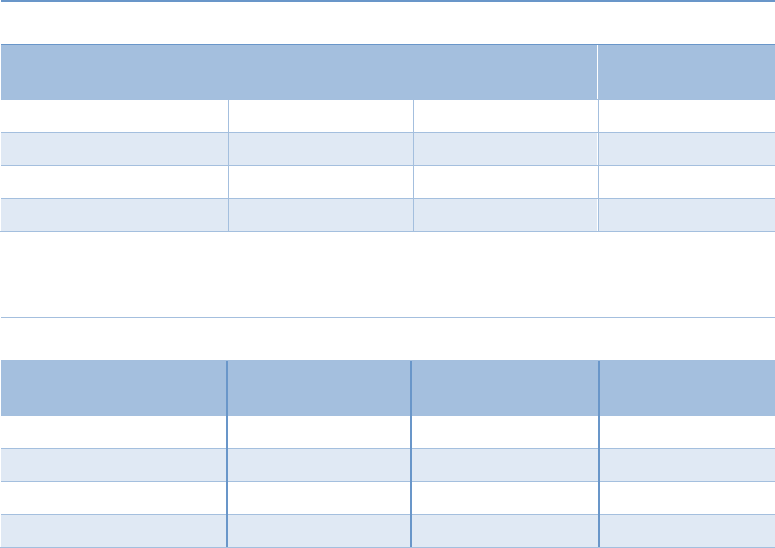
Energy Efficiency Report | 65
Advocacy
The IOUs advocate for higher efficiency codes and standards by supporting research and analysis on
potential new building codes and appliance, lighting and equipment standards. These studies include the
potential energy savings due to a specific new code or standard. In Tables 14-17 below, the number of
completed studies is in the “Research and Analysis” column. Of these, those studies that actually made it into
the CEC docket for Codes and Standards rulemaking are shown in the column labeled “Docketed”. The
number of docketed energy savings measures (either new codes or standards) is shown in the “Adopted”
column.
“Nonresidential” is essentially commercial building codes and commercial appliances, lighting or equipment,
while residential includes buildings up to three stories and “cross cutting” are codes and standards that can be
applied to either category.
Tables 17-20 (below) show Title 20 appliance standards, federal appliance standards, and Title 24 building
standards work for 2013-2015. Table 17, summarizes work in all three Codes and Standards advocacy areas.
Table 16: Title 20 Standards
Title 20 - 2013-2015
Sectors
Research and
Analysis
Docketed
Adopted
Nonresidential
1
0
0
Residential
1
1
0
Crosscutting
13
13
4
Total
15
14
4
Table 17: Federal Standards
Federal Standards - 2013-2015
Sectors
Research and
Analysis
Docketed*
Adopted
Nonresidential
51
Residential
28
Crosscutting
64
Total
0
143
0
* Docketed Comment Letters for Federal Standards

Energy Efficiency Report | 66
Table 18: Title 24 Standards
Title 24 - 2013-2015
Sectors
Research and
Analysis
Docketed
Adopted
Nonresidential
11
11
11
Residential
6
6
6
Total
17
17
17
The majority of Codes and Standards Enhancement study preparation for the 2016 building standard was
also conducted during the 2013-2015 timeframe. Work on twenty-two 2016 building code measures was
undertaken during the 2013-2015 timeframe, but not included in the total shown above or in the table
showing totals across advocacy efforts below.
Table 19: Codes and Standards
All Codes and Standards - 2013-2015
Sectors
Research and
Analysis
Docketed
Adopted
Nonresidential
12
62
11
Residential
7
35
6
Crosscutting
13
77
4
Total
32
174
21
Compliance Improvement
In the 2013 – 2015 period, the training format for the Compliance Improvement subprogram was expanded
from classroom training to include webinars, live online (real time) courses, and online self-study courses. The
statewide team completed over 600 classroom sessions and developed and delivered 15 different online
courses and webinars and five online self-study trainings. In Table 21, the row labeled “decoding” refers to
courses that specifically involved interpreting the revised building code. Code training was also provided in a
webinar format to provide easier access for interested parties who preferred a web-based training as opposed
to in-person training.

Energy Efficiency Report | 67
Table 20: Compliance Improvement Training Classes
Type
Research and Analysis
Classroom
629
Decoding (webinar)
12
Virtual (live online)
13
Online Self Study
5 courses/ 429 users
In addition to training, Compliance Improvement developed Fact Sheets and Trigger Sheets that address
various topics; tools such as the Forms Ace and Reference Ace; and other resources including checklists and
guides to facilitate compliance and enforcement.
Reach Codes
The IOUs worked with local jurisdictions to prepare the way for adoption of codes that exceed 2016 Title 24
as part of the normal three-year cycle of local jurisdiction adoption of California Uniform codes. A key part
of that effort was the program administrators’ initiation of cost effectiveness studies to support the adoption
of Cool Roof Reach Code ordinances by the City of Los Angeles, City of Pasadena, and County of Los
Angeles, respectively. The studies address product cost, energy savings, cost-effectiveness and GHG
reductions to support reach code requirements for residential and nonresidential Cool Roofs in all 16 climate
zones.
Program Administrator work with the CEC was instrumental in the development of the CALGreen ZNE
Tier. The CALGreen ZNE Tier is the basis of 2016 Reach Codes including ZNE. Key to the ZNE tier is the
Energy Design Rating, which calculates the Time Dependent Valuation of all energy consumed or exported
by the building. The Energy Design Rating is an extension of the Title 24 performance method simulation
software, CBECC-res. The Codes and Standards statewide team has been gathering supporting information
and participating in algorithm development for this simulation tool.
Findings
Appliance Standards
Within appliance standards, battery chargers accounted for 58 percent of appliance standard electricity savings
and televisions accounted for 32 percent of electricity savings. The top gas energy savings came from new
federal standards for top loading clothes washers (37 percent) and gas water heaters (31 percent).
Compliance was high for all measures except for small motors.
Building Codes
Capping building code compliance at 100 percent reduced the net program evaluated savings by 34 percent.
The largest reduction to energy savings from this methodological change was for non-residential alterations,
which saw a 37 percent reduction in evaluated energy savings. Non-residential new construction evaluated
savings were reduced by 21 percent. Residential evaluated savings were reduced by 1 percent.

Energy Efficiency Report | 68
Residential savings suffered a much smaller reduction in evaluated savings because there are more residential
buildings that are not up to code. The compliance for residential building codes was much lower than in the
previous evaluations. One recurring issue was hot water recirculation pumps running longer than they should
because they were not connected to an on-demand control system as required by code. In one instance, the
building did not even meet the 2008 code requirements.
The evaluation team had difficulty in recruiting enough non-residential buildings to visit and evaluate. The
usual statistical analysis had to be replaced by a Monte Carlo analysis because the sample size was too small.
Another change in the methodology was to use a whole building approach for evaluating building code
energy savings, where possible, in order to account for interactions between efficiency upgrades. In this
approach, building data collected at actual site visits was entered into a building simulation program. The
simulation modeled interactions between the different energy savings measures. Previously, the energy usage
of individual measures were numerically added and did not take into account how different measures might
interact within building to offset other upgrades’ impacts.
Path to Statewide Goals
PG&E, as the Codes and Standards statewide lead, is ramping up a “Code Readiness” program that will make
data needed to implement new codes and standards available to the CEC in an effort to accelerate adoption
of new measures into the code. The IOUs have set adequate metrics in their business plans to continue to
advocate for codes and standards and ensure compliance.

Energy Efficiency Report | 69
Integrated Demand-Side Management
Overview
The Integrated Demand Side Management (IDSM) statewide program is a strategic planning program
implemented by all four of California’s IOUs. The program aims to ensure that the IOUs work together and
pool their actions, lessons learned, and resources to develop and promote programs and strategies that
provide integrated demand side energy solutions to customers in all market segments (residential, commercial,
agriculture, and industrial). As a statewide program, the IDSM program has a dedicated budget, as well as
specific objectives and goals.
The CPUC first directed the IOUs to promote IDSM for customers in the Energy Efficiency, Demand
Response, Distributed Generation, and Low Income Energy Efficiency proceedings in 2007. However, in late
2014, the CPUC initiated a stand-alone rulemaking, R. 14-10-003 to:
…consider the development and adoption of a regulatory framework to provide policy
consistency for the direction and review of demand-side resource programs
In September 2015, the scope of this rulemaking was expanded to include not only integrated demand-side
management topics, but integration of distributed energy resources as well. The resulting Integrated
Distributed Energy Resources (IDER) rulemaking (R.14-10-003) was scoped to determine how distributed
energy resources could meet system needs as an alternative to traditional grid investments, so IDSM-specific
evaluation activities were put on hold. The following chapter describes the evaluation studies completed for
the 2013-2014 program years.
Estimated Savings
IDSM is classified as a non-resource program; consequently, there are not any energy savings attributed to or
reported for this program.
IDSM Programs
The IDSM budget supported the core collaborative and coordination functions of the IOUs while other
IDSM activities were funded via other programs throughout the IOU portfolio. The statewide IDSM
program budget for the 2013-2015 program cycle was $11 million, of which $8 million (72 percent) was
spent.
98
The activities of the IDSM statewide program during the 2013-2015 program cycle focused on four different
areas of activity in support of the core tasks established in D.09-09-047:
98
IDSM activities are funded with energy efficiency funds, as well as funds from demand response programs. While the IDSM
budgets are authorized through the energy efficiency funding application proceedings, only the energy efficiency funds are discussed
in this report.

Energy Efficiency Report | 70
Technology tracking – The IDSM Task Force continued to track emerging technologies that have
a combination of energy-efficiency, demand response, and/or distributed generation capabilities.
Integrated Audits – Each IOU continued to enhance their integrated audits offerings, including
solar-related functionality.
Pilots – The IDSM program continued to support various pilot projects, including many Zero Net
Energy projects.
Integrated Marketing – The IDSM program continued to support marketing and outreach efforts
that combine marketing for energy efficiency, demand response, and distributed generation programs
into combined or single stream marketing efforts.
Highlights
IDSM activities in the 2013-2015 program cycle were driven by the increasing focus on zero net energy
buildings. In the 2010-2012 program cycle, the IDSM program developed an online integrated assessment
tool and a unified project inspection process. These activities were aimed at streamlining project applications,
reimbursement, and inspection processes for customers.
Given the ZNE policy drivers, IDSM activity focused on supporting ZNE pilot projects and emerging
integration technologies. In accordance with CPUC direction, the IOUs participated in an IDSM Task Force
that identified and promoted integration opportunities and tracked projects where there were integrated
efforts underway in order to identify and develop best practices. Additionally, the IDSM program continued
to fund improvements to the integrated audit tools developed in the previous program cycle.
Findings
IDSM evaluations for the 2013-2014 program years consisted of three market studies. The first two studies
focused on the residential and small commercial sectors, while the third study summarized findings from
three non-residential IDSM project case studies.
The residential and small commercial studies identified customer profiles of those customers that adopted
integrated solutions. These studies found that direct sales efforts by distributed generation contractors were a
main driver behind adoption of integrated energy efficiency and distributed generation.
99
Among small commercial customers, there were different rates of uptake for integrated solutions across
business types. Schools were much more likely than any other business type to adopt IDSM solutions,
particularly those including distributed generation. Adoptions that combined demand response and energy
efficiency (but not distributed generation) were most common among food/liquor establishments. Offices,
restaurants, and managed properties had the lowest propensity to adopt IDSM projects. Other drivers of
IDSM solutions included technology advancements that support integration (energy management systems,
smart thermostats and HAN/in-home displays) and public policy, such as zero net energy goals.
100
99
Evergreen Economics, IDSM: A Study of Preferences and Patterns of IDSM Uptake in California’s Residential and Small commercial Markets.
October 2015
100
Evergreen Economics. Integrated Demand Side Management Market Characterization Study, Residential and Small Commercial Markets.
August 2014.

Energy Efficiency Report | 71
An additional lesson learned and documented in the IDSM case studies were that IDSM offerings are not
delivered via programs that combine resources, but by human resources that support the intelligent
combining of programs. As such, further consideration is needed on how external non-utility market actors
and funding sources drive customer behavior and to what extent utility rates provide incentives to encourage
IDSM in line with California loading order and climate goals.
101
Path to Statewide Goals
The Integrated Distributed Energy Resources proceeding continues to evolve, with a current focus on
implementing the IDER Competitive Solicitations Framework, which seeks to develop a framework for all-
resource solicitations. These all-resource solicitations aim to facilitate the deployment of distributed energy
resources to displace or defer the need for capital expenditures on traditional distribution infrastructure.
Integrated offerings have the potential to be particularly useful in this regard by the very nature of providing
multiple grid or customer services in one package. As such, the IOUs’ IDSM programs continue to promote
integration of programs and technology for customers in energy efficiency, demand response, and distributed
generation. Integration of demand-side technologies will continue to be driven through the CPUC’s
continued push of zero net energy policies in the residential and commercial sectors and custom projects in
the industrial sector.
101
Evergreen Economics. Integrated Demand Side Management Case Study Report. May 2016

Energy Efficiency Report | 72
Workforce Education & Training
Overview
The Workforce Education and Training (WE&T) Program represents a portfolio of education and training
activities aimed at supporting the achievement of IOU energy savings targets, as well as the workforce
objectives set forth in the California Long-Term Energy Efficiency Strategic Plan (Strategic Plan). As noted in
the Strategic Plan, the vision for the workforce is that, by 2020, “California’s workforce is trained and fully
engaged to provide the human capital necessary to achieve California’s economic energy efficiency and
demand-side management potential.”
102
The CPUC first provided guidance to the IOUs regarding Workforce Education and Training activities in the
2010-2012 program cycle. In 2013, at the direction of the CPUC, the statewide WE&T program team hired
the Donald Vial Center for Labor in the Green Economy to develop a comprehensive approach to WE&T
for the EE programs, in line with the goals in the Strategic Plan and the Needs Assessment
recommendations.
103
On May 2, 2014, the Donald Vial Center finalized its recommendations in the
document Workforce Issues and Energy Efficiency Programs: A Plan for California’s Utilities (Guidance Plan). In June
2015, the CPUC approved a joint IOU Program Implementation Plan Addendum, describing which of the
Guidance Plan recommendations would be initiated in 2015. These guidance documents and decisions
influenced the topics evaluated and studied in the 2013-2015 program cycle.
The WE&T program completed two process evaluations and five market/indirect impact evaluation studies
for the 2013-2015 portfolio. These seven studies generated 30 recommendations for program improvement.
Estimated Savings
Workforce Education & Training is a primarily non-resource program, so energy savings are not attributed
nor measured for WE&T.
The one exception is the LivingWise sub-program under SCE’s Connections program.
104
LivingWise
program savings are provided for the 2013-2015 program cycle, although the program was discontinued in
June 2016.
WE&T Programs
In 2013-2015, IOUs spent their entire $96 million budget on WE&T activities, or 6 percent of total portfolio
program expenditures. The WE&T program has a similar overall structure across the IOUs which has
remained mostly unchanged since the 2010-2012 cycle. However, the program focus has evolved due to
implementation of the California Workforce Education & Training Needs Assessment findings, sector
102
California Public Utilities Commission, California Long-Term Energy Efficiency Strategic Plan. September 2008; p. 74
103
Zabin, Carol and Chapple, Karen. California Workforce Education and Training Needs Assessment. Donald Vial Center on Employment
in the Green Economy, University of California, Berkeley. 17 March 2011
104
The LivingWise program was a sub-program within WE&T Connections. LivingWise was an education program which focused on
elementary students. By participating in the program, students would receive an energy efficiency kit containing various electric, gas,
and water measures - the savings claimed were a result of the number of kits provided.

Energy Efficiency Report | 73
strategies, and further CPUC guidance. The statewide program is organized into three subprograms:
Centergies, Connections, and Planning.
The Centergies subprogram receives the majority of WE&T program funding, accounting for 72 percent of
total program expenditures in the 2013-2015 program cycle. Centergies organizes training around technology
categories (e.g. advanced lighting and HVAC), building type (e.g. commercial, residential) and focuses on
facilitating education and training in energy efficiency and integrated demand-side management. These
education and training services are primarily delivered through the IOUs statewide energy centers and via the
Internet. The subprogram also facilitates and organizes trainings at dozens of locations throughout California.
Depending on the IOU, an energy center may offer anywhere between 30 and 300 unique courses throughout
the year.
The Connections sub-program focuses on forging collaborations with external education institutions to
promote coordinated energy-related careers and training activities. In accordance with the Strategic Plan goal
to “establish energy efficiency education and training at all levels of California’s educational systems,” the
Connections subprogram works with primary education institutions, as well as secondary education-level
institutions such as community colleges, community-based organizations, trade organizations, and
universities. In the 2013-2015 program cycle, the Connections subprogram accounted for 25 percent of
program cycle WE&T funds.
The Planning subprogram develops the statewide framework for planning, coordinating, and implementing
WE&T activities, stakeholder engagement meetings, and partnerships. Across the IOUs, the Planning
subprogram accounted for 3 percent of program cycle funds.
Highlights
The IOUs refocused their WE&T programs to respond to CPUC guidance and recommendations in the
WE&T Guidance Plan. The Strategic Planning program completed the Guidance Plan in May 2014 and held
a stakeholder engagement forum on the implementation of the recommendations. In addition, the IOUs
focused on expanding trainings and training materials development in numerous areas including HVAC,
lighting, and building operator capacities.
Through the statewide HVAC sector strategy, IOUs refocused their HVAC trainings on quality
installation/quality maintenance and energy efficiency sales trainings. Through the Energy Centers,
the IOUS delivered QI/QM training for HVAC technicians, administered certification exams, and
provided online training opportunities for contractors to access sales training and identify skills
deficiencies.
PG&E, SCE, and SDG&E also co-funded the California Advanced Lighting Controls Training
Program in 2014. California Advanced Lighting Controls Program provides training on proper
installation and testing practices to advance the use and installation of lighting controls in commercial
facilities. In 2014 alone, they trained and certified 2,570 participants.
105
In 2015, the IOUs expanded collaborations with carpenters, stationary engineers, and sheet metal
workers in order to enhance the energy efficiency components of these trades’ training programs.
105
Joint IOUs. Joint IOU Workforce Education & Training Annual Report 2014. Available at: https://www.caeecc.org/cross-cutting-
workforce

Energy Efficiency Report | 74
These collaborations focused on WE&T-identified areas of opportunity including HVAC, Building
Envelope, and whole building systems.
106
Findings
Evaluations of the 2013-2015 workforce education & training program focused on studying implementation
challenges associated with the recommendations from the WE&T Needs Assessment and guidance from
CPUC Decisions 12-05-015 and 12-08-044, as well as data needs and collection methodologies for the
WE&T program.
Data Needs and Collection:
Workforce education & training data needs comprised a major focus of the 2013-2015 program evaluation
cycle.
The WE&T Program Theory and Logic Model Update And Critical WE&T Data
Needs study found that Centers
were inconsistent in their data tracking and collection efforts, but also found that much of the data collection
required by CPUC guidance should be performed by the resource programs, not the WE&T teams. The
study also found that program participants’ information collection could be enhanced through course
registration and course feedback surveys and that data tracking at the tool lending libraries is inconsistent.
The Workforce Conditions Data Investigation
investigated the purpose, needs, and options for collecting
workforce condition data from programs that are not in a direct contracting relationship with contractors in
light of recent policy decisions (Decision 12-11-015) that asked for the IOUs to start collecting data on
indirect contractors that could be costly and extensive. In many cases, employers did not have valid
demographic data on their employees or on subcontractors’ employees. Additionally, contractors expressed
concern with providing sensitive wage and demographic data and requested clear and compelling arguments
for why they should provide this data to the state.
The study also found that in order to support effective data collection, standardizing the definition of work
quality across the IOUs and the coding of inspection failures may be necessary. As far as how to collect the
data, the study found that electronic payroll tracking is the most valid and reliable method to acquire the
demographic and wage information requested, but that this investment is not necessarily justifiable for all
energy efficiency programs at this time.
Training Market Characterizations and Assessments:
In addition to data needs, evaluation efforts focused on characterizing the available trainings in the energy
efficiency market.
The WE&T Program Theory and Logic Model Update And Critical WE&T Data Needs adjusted the program logic
model to address new WE&T goals. The study found that the Centergies program allocated 45 percent of its
activities to skills building and 55 percent of activities to market building. However, the study also found that
additional policy and IOU input could be useful in determining the level of focus each of these areas
deserves. The Program Theory study also had findings relevant to the CPUC and other policymakers, stating
106
Joint IOU Workforce Education & Training Annual Report 2015. Available at: https://www.caeecc.org/cross-cutting-workforce

Energy Efficiency Report | 75
that the crosscutting nature of these programs has produced uncertainty on who is supposed to act on policy
decisions related to WE&T.
The Contractor Training Market Characterization study investigated the alignment among resource program
training requirements and WE&T courses, as well as the alignment between contractor training and IOU
resource program requirements. It focused on the market for contractors that could support the following
high-profile IOU resource programs:
Residential Energy Upgrade California (EUC) Home Upgrade Program,
Residential HVAC Program,
Non-Residential Lighting Program.
Overall, the market characterization study found that existing trainings available in the state meet the training
needs of contractors. However, the study also found that contractor awareness of these trainings and
recognition of the value of these trainings is a gap that needs to be addressed.
In addition to the market characterization, an IOU-led Lighting Controls Training Assessment examined lighting
controls installation training offered to installers by major lighting control manufacturers and by the
California Advanced Lighting Controls Training Program. The study evaluated the California Advanced
Lighting Controls Program and found that this training fills an important gap in the lighting controls
installation area. However, the study also suggested the need for improvements in keeping training content
and equipment boards up to date. The study also focused on developing a definition of work quality from
which the impact of training programs can be assessed. This work on definitions could be useful in future
studies, although the program administrators will still require some support to standardize the definition of
work quality for energy efficiency installations.
Path to Statewide Goals
The SB 350 requirement to double energy efficiency will benefit tremendously from efforts to ensure that
California has a qualified and trained energy workforce. Ensuring that energy efficiency measures are
obtaining maximum energy savings through quality installation and that those savings are perpetuated
through quality maintenance programs will support resource programs across the portfolio.
The investigations into data collection needs and limitations completed in the 2013-2015 evaluation cycle
supports the development of efficient training and education programs for the energy workforce. While the
data collection itself may eventually need to happen through the resource programs, the discussion
surrounding workforce program data needs is a critical starting point. These study conclusions are already
being discussed and incorporated into the discussions around how to target and measure progress within the
workforce education & training Rolling Portfolio programs.

Energy Efficiency Report | 76
Marketing, Education, and Outreach
Overview
California has several policy objectives that require the voluntary actions of residents to achieve. Primarily, SB
350, the Clean Energy and Pollution Reduction Act of 2015, requires a doubling of energy efficiency savings in
buildings by 2030. Statewide Marketing, Education, and Outreach (ME&O) is a tactic that is essential to
getting customers to take energy savings and management actions. In addition, as the California utilities will
be defaulting their customers to time of use rates in coming years, energy management concepts, and the
message of “when you use energy matters,” become important.
Statewide ME&O
While programs serving all customer segments include marketing as a tactic, the CPUC has focused the
statewide ME&O platform on residential customers; consequently, this chapter is largely devoted to
residential ME&O. The current brand, Energy Upgrade California, is the third brand since 2000, preceded by
Flex Your Power and Engage 360. The program is designed to provide support and lead generation for PA
programs, as well as non-PA activities such as behavior-change tactics (e.g. turning off lights), and substantial
energy upgrades to the home such as solar installation. Evaluation of statewide ME&O, using the Energy
Upgrade California brand name, was the focus of the report, “2013 – 2015 Statewide Marketing, Education, and
Outreach Program: Integration and Verification Study.”
Program Administrator ME&O
While statewide ME&O is a stand-alone program, it is designed to complement the program-level marketing
that the PAs execute. Given that consumers are inundated with marketing messages, the CPUC recognizes
the importance of coordinating the two levels of marketing—statewide and PA—in order to inspire action
and avoid confusion. This is the subject of a second study, “2013-2015 California Statewide Marketing,
Education, and Outreach Program: Cross-Cutting Process Study.”
Estimated Savings
As Statewide ME&O is a non-resource program, there are no savings reported.
Marketing, Education, and Outreach Programs
Energy Upgrade California (EUC): Statewide ME&O was authorized for two years of funding in
CPUC Decision D.13-12-038, and the Center for Sustainable Energy (CSE) was selected as the program
implementer. A subsequent decision authorized a year of bridge funding for 2016. The program budget has
been $23 million per year throughout. The Decision spelled out a unique governance structure wherein the
program is overseen by the CPUC and run by the implementer CSE, but input is given by PAs. EUC was
launched in spring of 2014. Because the authorization for Statewide ME&O comes from a separate
proceeding than the energy efficiency proceeding (A.12-08-007), it is on a different program cycle than the
traditional EE programs.
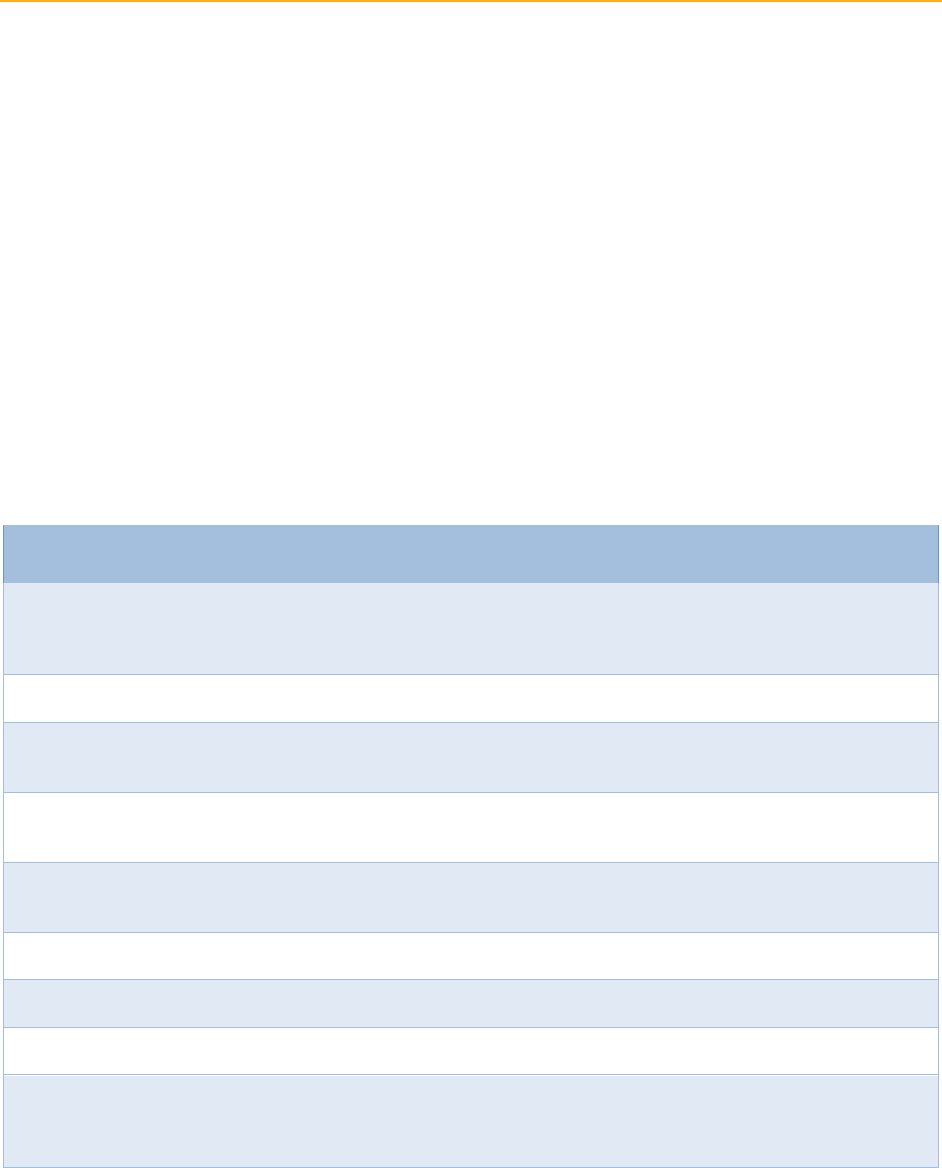
Energy Efficiency Report | 77
Highlights
Examples of the actions that EUC works to inspire include:
Installing LED lightbulbs
Washing clothes in cold water
Buying energy efficient appliances
Maintaining HVAC systems
Unplugging unused devices
Getting a whole home upgrade
CSE used several channels in its campaigns, including traditional tactics such as paid advertising and earned
media (stories in the news media about energy conservation), as well as social media. In addition, CSE formed
partnerships with community-based organizations in order to have an in-person presence at events. The
creative concept behind EUC included a talking bear, simply named “Bear,” who climbed down from the
California flag to talk about energy conservation.
As part of the CPUC mandate, nine objectives were outlined for Statewide ME&O:
Table 21: Marketing, Education & Outreach Objectives
Marketing, Education, & Outreach Objectives
1. Use the Energy Upgrade California brand to educate consumers about the Home Upgrade programs, why energy
use matters, and how California homes and small businesses use energy, as well as energy efficiency, demand
response, distributed generation, and energy management actions available to them.
2. Encourage consumers to engage with resources and tools to learn more about their energy use.
3. Inform consumers about the benefits of participating in local program opportunities, seasonal opportunities, or
no-/low-cost actions.
4. Provide direction about how consumers can learn more about and enroll in local program opportunities and
time-sensitive opportunities, or how to take no-/low-cost actions.
5. Identify and pilot messaging and message delivery for partners that complements existing IOU partnerships,
including local governments, CBOs, retailers, and realtors.
6. Identify and pilot methods to provide information to small business owners.
7. Work with a marketing firm and use behavior research to develop a social marketing campaign.
8. Coordinate local, regional, and statewide marketing efforts, messaging, and tactics.
9. Develop an evaluation, measurement, and verification (EM&V) roadmap for IOU local marketing and statewide
marketing to understand the impacts of local, IOU-led marketing, and how local and statewide efforts can best
be coordinated and complementary.
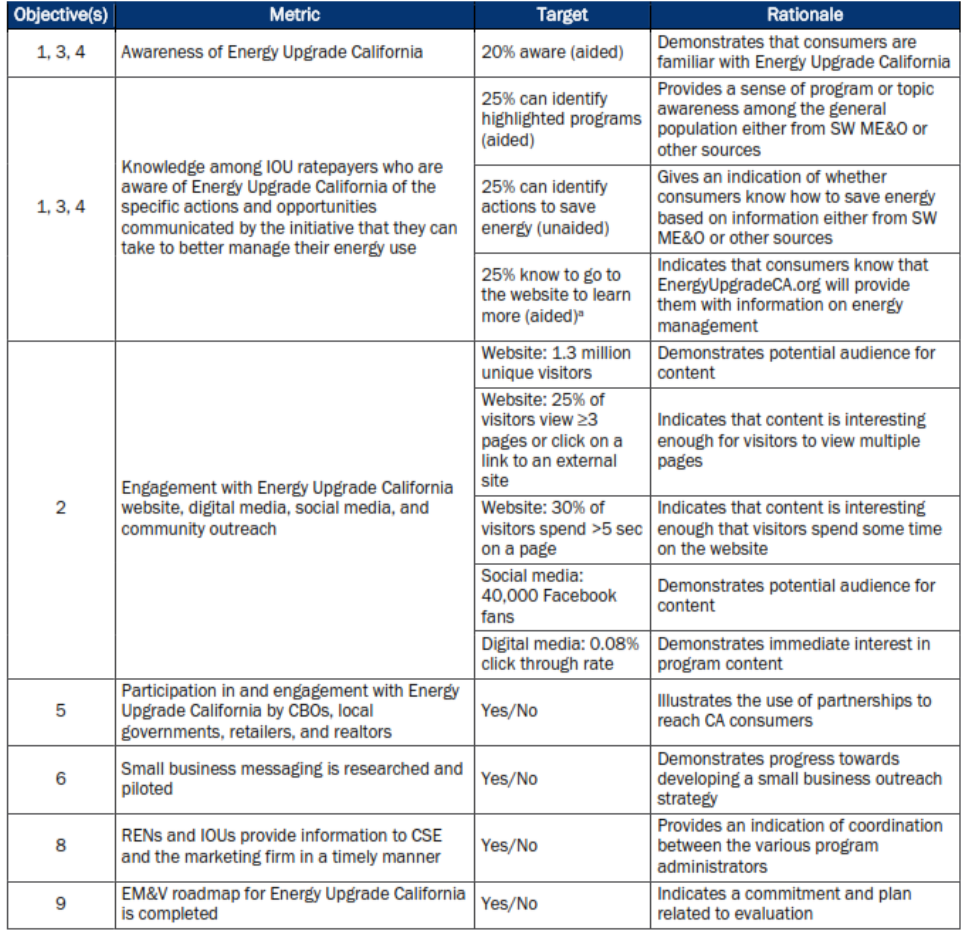
Energy Efficiency Report | 78
In conjunction with the objectives outlined for the Statewide ME&O program, the CPUC, CSE, and
stakeholders participated in a process to develop specific metrics by which to judge performance of the
program. The CPUC approved the metrics through the advice letter process, which provided final metrics in
May 2015. Below are the metrics, their associated targets, and underlying rationale.
Figure 9: Summary of SW ME&O Objectives and Associated Objectives
Coordination and Integration with Other Efforts: Statewide ME&O is designed to complement the
program-specific, regional marketing that is being implemented by the PAs. Thus, how EUC coordinates and
integrates with the efforts of the PAs is of concern to Energy Division. PA ME&O efforts are embedded
within existing demand-side management programs and work to support the achievement of program goals.
Program marketing staff typically tailor their ME&O activities to first serve the immediate purpose of raising
awareness of programs, but ultimately seek to encourage participation.

Energy Efficiency Report | 79
To examine the interaction between statewide and PA ME&O, the CPUC’s Energy Division commissioned a
study, “2013-2015 California Statewide Marketing, Education, and Outreach Program: Cross-Cutting Process
Study.” The study was led by Opinion Dynamics Corporation (ODC).
The evaluation team used a range of research activities to assess PA ME&O efforts including interviews with
ME&O administrators and stakeholders, a review of secondary data and documents provided by the PAs, and
quantitative surveys and qualitative focus groups with California consumers to support ODC’s three research
objectives. A brief synopsis of the research performed for each research objective below:
Assess coordination between the Statewide ME&O administrator and the PAs: ODC conducted a series of
in-depth interviews with key stakeholders, and reviewed policy documentation and program materials to
determine how efforts were coordinated across the ME&O administrators. The goals were to explore the
barriers and benefits to developing and implementing a consumer referral process from the statewide website
www.EnergyUpgradeCA.org to PA programs.
Document PA ME&O design and implementation activities: ODC reviewed PA data, conducted interviews
with PA staff, and developed an activities matrix that catalogued all 2013-2014 ME&O activities for the
California Statewide Programs for Residential Energy Efficiency (CALSPREE).
Document how consumers engage with Statewide and PA ME&O: ODC conducted primary data collection
with California consumers including 10 focus groups and quantitative surveys for select ME&O campaigns
conducted in early 2016. The evaluation team worked with the CPUC to select six campaigns out of 31
residential campaigns offered during the period.
Findings
Following are two sets of findings. The first one is from the “Verification and Integrated Effectiveness
Study,” which evaluated the program performance metrics that were set by the CPUC. The second is a cross
cutting evaluation done of the statewide marketing brand and the IOUs marketing, and how they coordinated
and leveraged each other. These summaries are followed by a discussion of future program design
suggestions.
1. Verification and Integrated Effectiveness Study: Overall, the findings from this study provide a
mixed picture of Statewide ME&O effectiveness. In terms of the formal program performance metrics
established for the 2014-2015 period, CSE achieved four of the five metrics for which they are directly
responsible based on data collected through September 2015.
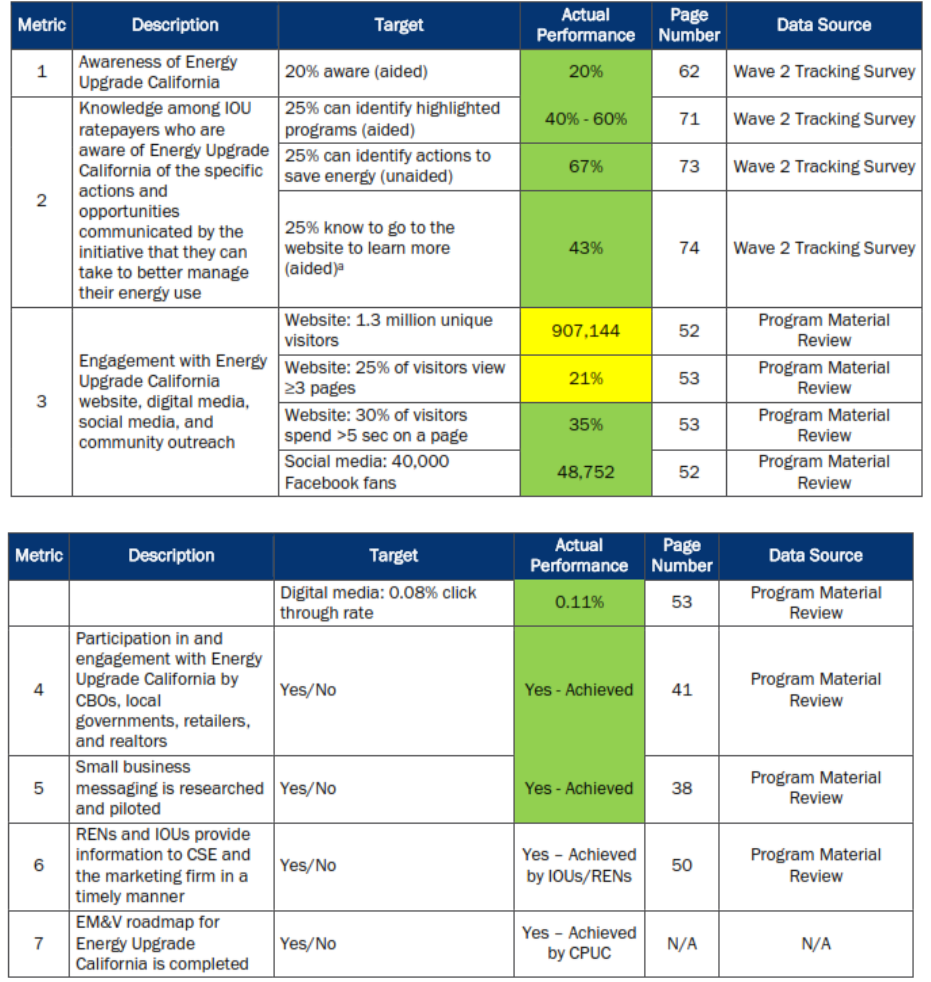
Energy Efficiency Report | 80
Figure 10: SW ME&O Program Performance Against Approved Metrics
Beyond the performance metrics, the evaluation team identified the following key findings around campaign
effectiveness and made associated recommendations for future Statewide ME&O Program implementation:
a. Unaided Brand Awareness: Californians struggle to name any energy-related brands without
prompting, and unaided awareness of Energy Upgrade California remains low. In particular, only
a handful of consumers named Energy Upgrade California when asked what brands, campaigns,
or initiatives they had heard of that encourage Californians to save energy (1 percent in April
2015 and 2 percent in November 2015).
Energy Efficiency Report | 81
b. Brand Familiarity and Knowledge: First, while awareness of the Energy Upgrade California
brand increased by only 3 percentage points since the brand assessment study in January 2013
(17 percent compared to 20 percent), those who are aware of the brand are somewhat more
familiar with it. In particular, the average familiarity rating increased significantly from 3.09 in
January 2013 to 4.11 in November 2015. Second, aided awareness of EnergyUpgradeCA.org
among those aware of the brand increased significantly between April 2015 and November 2015
from 19 percent to 43 percent. These findings suggest a deepening of brand awareness among
consumers as opposed to a broadening of awareness among a greater portion of the population.
c. Energy Self-Efficacy: An objective of the program is to empower Californians to better
manage their energy use. As a result, the ODC evaluation team explored the degree to which
consumers felt they were capable of managing their energy use. The ODC team found that
consumers have moderate levels of energy self-efficacy (average scores of 4.7 to 5.0 on a scale
from 1 to 7), which remained consistent over the course of 2015.
d. Energy Saving Action: In contrast to these advances on key measures of awareness, a deeper
analysis of consumer engagement with and actions taken due to the program suggests that its
effects on behavior are limited. In particular, the team assessed the performance of different
community outreach channels (i.e., CBO, retail, and mobile outreach) at the center of CSE’s
move towards direct, one-on-one in-person engagements. ODC found that there was significant
variation across the one-on-one outreach channels of retail, CBO, and mobile displays. ODC
found that consumers had greater recall of retail and mobile events compared with CBO events
and took a greater number of actions as a result of those engagements than those who engaged
with CBOs.
2. Cross-Cutting Process Study
Research Objective 1: Assess coordination between the Statewide ME&O administrator and the
PAs: Based on interviews with key stakeholders, the evaluation team found that coordination has
improved over time, including increased two-way communication, more collaborative quarterly
stakeholder meetings, and earlier opportunities to provide feedback on creative materials. Stakeholders,
however, continue to identify challenges that need to be overcome moving forward. These include the
separate ME&O planning processes, insufficient time or resources to provide feedback, and uncertainty
about whether feedback is incorporated into Statewide ME&O design. Notably, many of these challenges
may be alleviated by the development of Joint Consumer Action Plans.
Research Objective 2: Document PA ME&O design and implementation activities: PA ME&O
differs from the SW ME&O program because Statewide ME&O focuses exclusively on promotion
whereas PA marketing is rooted in all four elements of marketing (i.e., the Four Ps of product, price, place
and promotion). Because the “action” that PA ME&O efforts seek to encourage is participation in
marketed energy efficiency programs, they are distinct from Statewide ME&O efforts in the following
ways:
PA marketing reflects one of many strategies, such as rebates, that the PAs deploy to support
program participation. For example, this study covered only PA promotional ME&O budgets,
which reflect only 9 percent of overall CALSPREE 2013-2014 program administration budgets.
PA marketing efforts are typically program-specific. The majority of PA ME&O funding is
allocated to program-specific marketing efforts as opposed to general awareness or energy
management efforts.
Energy Efficiency Report | 82
PA marketing staff focus on developing marketing plans for key programs. According to the
PAs, they tend to develop more comprehensive and targeted plans for programs with larger
energy savings or participation goals, and rely on portfolio-wide plans to document strategies for
programs with smaller energy savings or participation goals.
PA ME&O efforts are regionally focused. The PAs conduct ME&O within their territories to
deliver specific messages targeted toward their customers or constituents. Each PA has their own
specific targeting and segmentation schemes that are tailored to specific programmatic efforts.
Having metrics in place is an essential component of measuring performance. The PAs develop and track
a variety of program- and channel-specific metrics to assess the effectiveness of their activities. However,
while all PAs indicate that they develop marketing plans as a key step in determining what ME&O
activities to conduct, we found that their availability, the timing of their development, and their content
varies across PAs, programs, and program cycles.
Research Objective 3: Document how consumers engage with Statewide and PA ME&O: ODC
conducted six case studies of PA ME&O efforts - one for each PA. The following are overarching
findings from across the case studies:
Customers who have been exposed to program marketing tend to have moderate to high levels
of program awareness and recall of marketing materials. As expected, levels of program
awareness and recall vary widely across campaigns ranging from 13 percent to 92 percent of
targeted customers.
Customers generally report that they clearly understand the intended message from the
marketing. However, results vary across the marketing campaigns likely due to the different
messages and different levels of complexity associated with these messages.
Customers exposed to the marketing campaigns tend to report that they have taken, or plan to
take, intermediate or subsequent steps to participate or engage with the promoted program after
exposure to the marketing.
Compared to customers who did not recall marketing, those who recalled marketing were
significantly more likely to have recently looked for more information online about the program
(21 percent vs. 6 percent), to have discussed the program with someone in their household (25
percent vs. 14 percent), and to have contacted a contractor to learn more about the program (6
percent vs. 2 percent).
In addition, customers who remember the marketing state that, on average, it had a moderate
influence in their action taking – 48 percent of the respondents who recall the marketing and
took at least one action in the past month noted that the marketing had some influence on their
action.
Overall, ODC’s assessment indicates that the PA marketing campaigns appear to be achieving or
on track to achieve their campaign objectives, such as increasing awareness of programs,
providing clear messaging, and motivating energy savings actions.
Future Program Design: Based on the evaluation of 2013-2015 ME&O efforts at the SW and PA levels,
the evaluation team recommends that the CPUC provide different levels of oversight for the SW ME&O
program compared to PA ME&O efforts. The SW ME&O program focuses exclusively on promotion
whereas PA marketing goes beyond promotion to include product, price, and place (i.e., the Four Ps).

Energy Efficiency Report | 83
Given this distinction, it does not make sense for the CPUC to provide oversight of only the promotional
aspect of PA ME&O in isolation from the program(s) it supports. As a result, ODC has a number of
recommendations to the CPUC regarding where, and how, to focus future oversight and guidance in the
area of PA ME&O, listed in the next section.
Path to Statewide Goals
As statewide ME&O is a non-resource program, the energy saved from the program is not tracked. However,
in 2016, the CPUC voted out D.16-03-029, which among other things details how Energy Upgrade California
is expected to contribute to the SB350 goal of doubling building efficiency. The decision explains the role
that Statewide MEO will play:
“To improve longer term planning and coordination, after the utilities file their energy efficiency business
plans in R.13-11-005, all stakeholders in this proceeding should collaborate in a process to develop a five-year
‘ME&O Strategic Roadmap’ that will outline long-term goals, metrics, and strategies, with consideration of
what contribution ME&O will play in complying with Senate Bill (SB) 350. CPUC staff shall lead this
process. The roadmap should incorporate demand response ME&O objectives from R.13-09-011 as well as
the strategic action plan for residential rate reform ME&O developed in R.12-06-013.”
D.16-03-029 also ordered CPUC staff to work with the utilities to run a competitive RFP for a statewide
ME&O implementer, which has been awarded to DDB-San Francisco (DDB). DDB has filed the 5 Year
Strategic Roadmap with strategies that emphasize actions to reduce greenhouse gas emissions. That plan is
currently being implemented.

Energy Efficiency Report | 84
Emerging Technologies
Overview
The Emerging Technologies Program (ETP) is a non-resource program. The mission of the ETP, as
described in the Program Implementation Plans filed with the CPUC, is to support “increased energy
efficiency market demand and technology supply (the term supply encompassing breadth, depth, and efficacy
of product offerings) by contributing to development, assessment, and introduction of new and under-
utilized energy efficiency (EE) measures (that is, technologies, practices, and tools), and by facilitating their
adoption as measures supporting California’s aggressive energy and demand savings goals.”
107
The 2013-2015 program cycle ETP budget was as follows:
Table 22: Emerging Technologies Program Budget by IOU
IOU
2013-2015 Program
Budget (millions)
PG&E
$11.9
SCE
$21.2
SDG&E
$2.7
SCG
$2.5
TOTAL
$38.3
Three studies were conducted for ETP during the 2013-2015 program cycle: 2013-2014 Targeted
Effectiveness Study, 2013-2014 Study of the California Utility Internal Measure Development Process
(UIMD), and 2013-2014 Statewide Emerging Technologies Program Third Party Introduction Tactic Process
Evaluation. A fourth study, the Technology Development Support Process Evaluation, is still ongoing. A
fifth study, the 2015 Targeted Effectiveness Study, has been delayed until the ETP under the upcoming
Energy Efficiency Rolling Portfolio Business Plans has been implemented long enough to enable meaningful
evaluation.
The 2013-2014 Targeted Effectiveness evaluation results suggest that the IOUs met their Program
Implementation Plan objectives and are contributing to both the EE portfolio and the broader Strategic Plan
goals. However, poor data quality, poor data reporting, and a lack of market barrier support for technologies
were identified as critical ETP issues.
Estimated Savings
The Emerging Technologies Program is a non-resource program, so no energy savings are attributed.
107
The PIPs of each of the individual Investor-Owned Utility (IOU) submissions are virtually identical as this is a statewide program.
The PIPs are located at: http://eestats.cpuc.ca.gov/

Energy Efficiency Report | 85
Emerging Technologies Programs
The Emerging Technologies Program focuses on the following program activities:
Technology Assessments – Identify technologies suitable for transition into the portfolio by
investigating performance claims. Technologies are evaluated based on their savings potential, cost,
and alignment with statewide goals.
Technology Development Support – This largely consists of communicating with manufacturers
to encourage them to improve performance and efficiency specifications to produce higher efficiency
products.
Technology Introduction Support – Pathways for swifter introduction to market are explored,
largely by connecting technology developers to manufacturers, investors, and other market actors.
Demonstration projects are also included in this category.
Highlights
As in the 2010-2012 portfolio cycle, the program provided support to the IOUs’ portfolio and the market in
general. ETP met its program activity objectives while staying under budget. However, current data tracking
systems and poor data quality hampered the ability to quantify savings from emerging technologies assessed
by ETP in the EE portfolio. Despite limited data, the evaluations found that the ETP is contributing to the
EE portfolio. The current suite of mapped measures from ETP projects adopted into the EE portfolio from
2010–2014 provides about 2 percent of the 2013–2014 statewide reported electric savings and slightly less
therm savings.
108
Importantly, evaluations to date measure program success based upon the Program
Performance Metrics and Program Implementation Plan objectives developed by the CPUC and IOUs to
assess program effectiveness. These evaluations do not reflect the important role ETP plays by identifying
technologies that are not appropriate for incorporation into the IOU EE portfolios.
Although ETP has succeeded in supporting workpapers for technologies such as cold storage, high
performance commercial dishwashers, smart thermostats, advanced power strips, and advanced LEDs, the
effectiveness of these technologies in achieving savings in the incentive portfolio has not been tracked. The
2013-2014 Targeted Effectiveness Study attempted to measure the impact of these technologies on portfolio
energy savings. However, the study produced limited results as researchers were only able track about half of
deemed measures installed. This study did prompt an effort to track the complete historical impact of ETP-
originated technologies on the portfolio dating back to 2009, which is currently ongoing. Despite data
limitations, the results from the 2013-2014 Targeted Effectiveness Study indicate that ETP is having at least
some impact on the portfolio.
Findings
2013-2014 Targeted Effectiveness Study
This study took a holistic look at the effectiveness of the ETP, including deeper dives into the ETP database,
ETP activities, and knowledge dissemination efforts, in addition to a separate memo on the difficulties of
tracking savings of technologies that have moved into the IOU portfolio from the ETP. Overall, the ETP
108
The evaluation was unable to map measure IDs to the EE portfolio database in all cases, leading to a likely underestimating of
savings in the EE portfolio from ETP measures.

Energy Efficiency Report | 86
exceeded the activity goals, in terms of number of projects and events, which were set in its Program
Implementation Plans while only spending half of its allocated budget.
In the 2013-2014 timeframe, the ETP was found to have provided technologies that contributed 2 percent of
electricity savings achieved by the IOU portfolio and slightly less than 2 percent of therm savings. These
percentages were calculated by matching ETP-originated projects to the achieved savings of IOU portfolio
measures. However, this methodology encountered significant data quality barriers and, as such, could
represent an underestimation of ETP’s portfolio contributions. Efforts to improve program tracking data aim
to solve this problem on a long-term basis and are currently underway.
The evaluation team found that ETP is a looked-to leader in its approach to assessing emerging technologies.
They use a variety of tactics such as lab and field evaluation, demonstration showcases and test standard
development. These tactics support a technology’s “technical readiness,” or its maturity level concerning its
energy performance and feasibility, and “market readiness,” or its maturity level concerning the marketplace’s
willingness and ability to adopt the technology. For emerging technologies to succeed once moved into the
energy efficiency portfolio, they must be both technically ready as well as being available and acceptable to
the market.
Evaluation results suggest that the ETP focuses on technical readiness. ETP effectively uses program tactics
to support the decision for measure transfer based on “technical readiness” factors, such as technology and
savings maturity. The ETP does an effective job at identifying these criteria and deploying appropriate tactics
within this context.
This evaluation also found that the ETP could benefit from greater strategic focus when choosing tactics.
Although ETP is seen as a leader on many emerging technologies studies, the evidence indicates that ETP
may suffer from a lack of strategic focus when choosing projects to address barriers. The frequent appearance
of “one-off” projects targeting a narrow technology context, the lack of clear relationships among projects
within a technology, and the lack of explicitly sequenced projects all point to a less focused approach. This
evaluation recommends a strategic technology-focused pilot to support a more holistic approach to tactic
selection.
109
2013-2014 Study of the California Utility Internal Measure Development Process (UIMD)
This study examined the technology input, evaluation, and energy efficiency measure output processes of the
ETP. The technology identification and input process incorporates a wide range of coordination with other
Technology Development Actors and technology consortiums. A wide range of IOU staff communicate
internally and externally to identify technologies suitable for ETP evaluation and are actively searching for
new ideas. However, uncertainty about data collection requirements for work papers, the mechanism through
which new measures are accepted into the energy efficiency portfolio and assigned deemed energy savings
values, has resulted in occasional requests by the IOU work paper teams for additional data after the
completion of an ETP project. The ETP was also found to sometimes not produce sufficiently robust data to
support work papers.
110
109
Op.cit.p.82
110
2013-2014 Study of the California Utility Internal Measure Development Process, p.10-11

Energy Efficiency Report | 87
Although the study found ETP often provides insufficient data for workpaper development, ETP must
balance conducting a wide range of shallow, less costly exploratory evaluations of potentially revolutionary,
but risky, technologies with a smaller number of deeper, more costly evaluations of evolutionary technologies
that could support a workpaper. This balance leads to a number of evaluations necessarily incapable of
supporting workpapers without additional investigation by design. Discussions between the IOU ETP leads
and the CPUC Ex-Ante Review team following this study show that there is not a lack of understanding of
workpaper requirements in ETP evaluations, but rather that this balance merely gave that impression.
Additional investigations into the optimal ratio of shallow to deep evaluations and improvements of how
technology transfers between ETP and the portfolio are underway.
2013-2014 Statewide Emerging Technologies Program (ETP) Third Party Introduction
Tactic Process Evaluation
This study examined the effectiveness of the ETP’s Technology Resource Innovation Program (TRIP) and
Innovative Design for Energy Efficiency Activities 365-days a year (IDEEA365) solicitation processes.
These sub-programs provide a wide range of inputs to the ETP and access to third party technology
developers. This study generally found the current processes to be sufficient to facilitate inclusion of third
party technology developers into the ETP process, with minor recommendations for adjustments of the
solicitation processes.
Path to Statewide Goals
Alignment of the ETP with statewide goals requires some programmatic changes to improve and maximize
ETP’s contribution to the portfolio. Without effective metrics that track ETP’s impact on the portfolio, it is
impossible to evaluate how well the program aligns with statewide goals or may contribute to the doubling of
energy efficiency. Energy Divisions staff recommended new metrics, based on the recommendations from
the 2013-2014 Targeted Effectiveness Study, in the Rolling Portfolio proceeding. To improve the market
penetration of these technologies, Energy Division staff also proposed the Targeted Effectiveness Study’s
recommendation to initiate a technology-focused pilot for inclusion in the business plans. Additional efforts
are underway to move the ETP database online in order to improve stakeholder access to ETP historical
efforts, program direction, and program process framework.
Under the new Rolling Portfolio framework for energy efficiency, the ETP will become a statewide program,
with SCE as the electric statewide lead and SCG as the gas statewide lead. This structural change will not
significantly alter the implementation of ETP in practice, as the IOUs have historically coordinated very
closely on ETP. However, statewide technology priority maps (TPMs) will be developed to guide the
program as a whole, which is a significant departure from the previous roadmaps segmented by IOU that
were used in the past to guide direction and coordination. The technology priority maps will identify priority
technologies for assessment and broader program direction.

Energy Efficiency Report | 88
Local Government Partnerships
Overview
Local Government Partnerships (LGPs) have played an important role in promoting energy savings
opportunities to municipal governments and organizations since 2002. Their role was formalized in 2002-
2003 when the CPUC first allowed LGPs to received IOU contracts. Since then, the CPUC expanded
funding of local government energy efficiency efforts across the four IOUs throughout the past three
program cycles. In the 2010-2012 cycle, the CPUC made available significant funding resources for PG&E
and SCE to promote Strategic Plan activities.
111
The 2013-2015 program cycle marked a period of IOU expansion of LGP programs and growth in local
agency capacity to deliver energy efficiency. PG&E increased emphasis on energy savings through small-
medium-business direct install projects by leveraging the connections from its LGPs. SDG&E’s five
partnerships have collaborated closely to put forward a Regional Energy Partnership approach that promotes
knowledge transfer among the local government partners and agencies without formal partnerships.
The four IOUs vary somewhat in how they operate their local government partnerships. PG&E has the most
resource programs, or programs that directly produce energy savings, while SCG and SDG&E offer entirely
non-resource programs, or programs that indirectly drive savings through supporting energy savings activities.
SCE’S efforts have focused on retrofit activity for public buildings as resource programs. All four IOUs have
some non-resource programs that address State Strategic Plan goals. The CPUC Energy Efficiency Policy
Manual states that the LGPs are designed to:
1. Generate energy and demand savings within their own facilities and in their communities (retrofits)
2. Take actions [that] support the Strategic Plan objectives
3. Provide demand-side management outreach in the community
111
California Public Utilities Commission. D.09-09-047 Approving 2010 to 2012 Energy Efficiency Portfolios and Budgets. 09 September
2011.
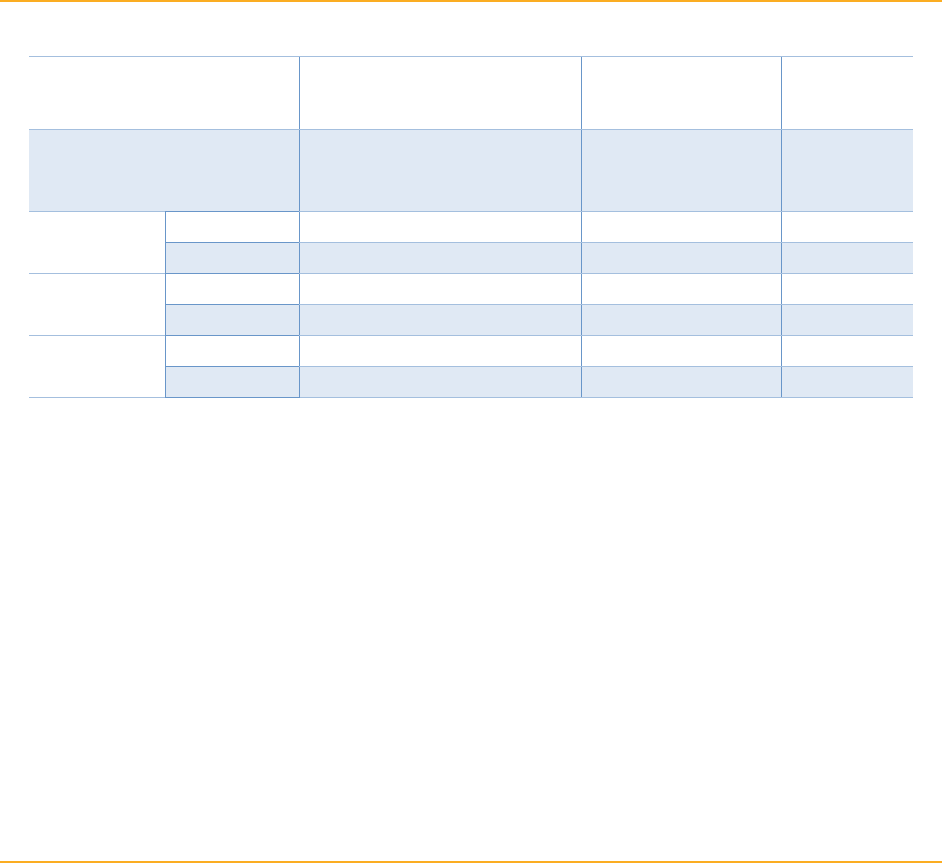
Energy Efficiency Report | 89
Estimated Savings
Table 23: Local Government Partnerships Savings Snapshot
Energy Savings
Emissions
Cost-
Effectiveness
Electric
(GWh)
Demand
(MW)
Natural
Gas
(MM
Therms)
CO
2
(Million
Tons)
NOx
(1000
pounds)
TRC
Reported
Gross
436
62
3
240
86
Net
324
46
3
179
65
0.9
Evaluated
Gross
396
58
3
216
76
Net
260
39
2
142
51
0.7
% Portfolio*
Gross
8%
6%
3%
3%
3%
Net
8%
6%
3%
3%
3%
*represents sector’s (or program area’s) percent contribution to overall evaluated net portfolio savings, excluding
Codes & Standards savings
The LGPs account for 3 percent of the total energy efficiency savings goals for the entire portfolio for both
electricity (GWh) and peak demand (MW), as well as 2 percent of the gas savings goals. However, the LGPs
have not yet met their estimated savings program goals for either electricity or gas.
LGPs main purpose is to assist local governments in developing and implementing a variety of energy
efficiency strategies that may lead directly or indirectly to energy savings. However, a majority of the
estimated savings from these programs are allocated through the Program Administrators’ activities (i.e. the
IOUs) rather than linked directly to the specific LGP programs. Therefore, the savings attributed to these
programs are estimates based on a larger study focusing on specific measure impacts, rather than from a
stand-alone impact study focusing only on savings from the LGPs. The findings from this measure-level
study are being updated for the next program cycle and will include estimated savings attributed to the LGPs
as well.
Local Government Partnership Programs
The IOUS spent a total of $329 million on local government partnership programs across the 2013-2015
program cycle. These expenditures funded municipal retrofits (resource programs) and Strategic Plan
Projects throughout California. Strategic Plan Projects are non-resource activities that the LGP implementers
conduct to support achieving state goals for local governments. The IOUs’ funding decisions are based on
the Strategic Plan Menu, a list of 20 items approved by the CPUC. The CPUC intended for this funding to go
toward non-resource activities within five categories:
adopting reach codes
supporting energy code compliance enforcement
leading by example by reducing energy use in local government facilities
supporting innovative programs, and

Energy Efficiency Report | 90
Building expertise within local governments and communities.
112
Highlights
The main categories of activities undertaken by LGPs can be divided into (1) municipal retrofit activity and
(2) Strategic Plan Projects.
Municipal retrofit projects are often highly visible in local communities and are a point of pride among LGP
representatives.
113
These projects replace old or inefficient equipment in public facilities and high-profile
buildings. LGP representatives noted that these projects saved energy and provided additional community
benefits. For instance, ten out of the 36 LGPs undertook projects to replace high-pressure sodium street
lamps with LED technology. Benefits included saving energy but also improved aesthetics and increased
perceived safety for pedestrians.
114
Of the 36 LGPs, five described two separate and distinct municipal
retrofit projects as their main success, so in total there were 41 municipal retrofit success stories for 36 LGPs.
Strategic Plan Projects ran the gamut of activities, including but not limited to developing Climate Action
Plans, conducting GHG inventories and code compliance training, and piloting water-energy programs. The
Chula Vista LGP provides a clear example of successful Strategic Plan efforts. Chula Vista, with support from
the LGP, designed and implemented a range of energy efficiency building codes and other reach codes that
have pushed building stock in Chula Vista to an efficiency level beyond state building code and, in turn,
helped advance stronger state codes. The Chula Vista LGP has developed and implemented code training
efforts and produced resources such as the Code Coach to implement industry best practices in permitting,
tracking, and building inspection.
115
While the LGP programs had notable successes, evaluation studies also noted that local governments faced
challenges in acquiring data, specifically to update greenhouse gas inventories.
116
Communication between
IOUs and LGPs could also be improved, notably when updates to Title 24 could affect IOU rebate programs
and other programmatic changes.
117
Findings
Three specific EM&V studies were conducted to explore the status of operations of LGPs in selected areas.
These studies were:
PY2013-2014 Local Government Partnerships Value and Effectiveness Study, prepared by Opinion Dynamics
Corporation, October 29, 2015 and managed by the CPUC Energy Division;
Targeted Process Evaluation of the Local Government Partnership Program, prepared by Research into Action,
September 30, 2016 and managed by the California IOUs; and
112
Opinion Dynamics Corporation, PY2013-2014 Local Government Partnerships Value and Effectiveness Study Final Report.
October 29, 2015; p.1
113
Targeted Process Evaluation of the Local Government Partnership Program, prepared by Research into Action, September 30,
2016; p.46
114
ibid
115
Process Evaluation of the Chula Vista Local Government Program, prepared by Evergreen Economics, July 5, 2017; p.3
116
Process Evaluation of the Association of Monterey Bay Area Governments Energy Watch (AMBAG) Local Government
Partnership Program, September 17, 2017, prepared by Evergreen Economics (AMBAG Evaluation).
117
Process Evaluation of the Chula Vista Local Partnership Program, CALMAC ID: SCG0218.01, July 5, 2017, prepared by
Evergreen Economics; and San Mateo Evaluation.

Energy Efficiency Report | 91
Process Evaluation of the Chula Vista Local Government Program, prepared by Evergreen Economics, July 5,
2017 and managed by the California IOUs.
The Local Government Partnerships Value and Effectiveness Study focused on one specific program offering: the
value and effectiveness of Strategic Plan Projects. Strategic Plans enable local governments to set long-range
energy goals for their communities and chart a course to achieve them. This is a crucial element to support
the overall Strategic Plan objectives.
The second process evaluation, the Targeted Process Evaluation of the Local Government Partnership Program,
examined the Strategic Plan support and municipal retrofit components of the LGP program and was
managed by the California IOUs.
The third process evaluation report provided an in-depth examination of the Chula Vista’s LGP. The Chula
Vista LGP serves Chula Vista, a city with a long history of leadership in energy efficiency and conservation.
Historically, the Chula Vista LGP has been a highly successful regional leader in promoting energy efficiency
activities that indirectly contribute to SDG&E’s energy efficiency Core Programs.
118
The process evaluation
found numerous examples of the ways in which this LGP is effectively assisting the IOU on completing
energy efficiency retrofits for municipal buildings.
Strategic Plan Projects
As of July 2015, evaluation results of activities from 2013 and 2014 found that 33 percent of all projects were
successfully completed. Many others (46 percent of all projects) are still in progress with completion likely.
Completed project efforts include workshops, trainings, and engagement of local government decision
makers, code inspectors, and plan checkers. Strategic Plan Projects have not fully met their Strategic Plan
goals, but much of the effort is still in progress.
119
The Value and Effectiveness Study also confirmed that the majority (83 percent) of LGPs conduct Strategic Plan
Projects. However, the projects and funding levels are highest in southern California and along the coast,
reflecting the state’s population density patterns.
120
From 2010-2014, there have been 389 Strategic Plan
Projects. The study found that these projects are providing high value to California. The funding for the
projects provides the means (i.e., people, knowledge, and tools) to the LGs to develop policies that align with
and support Strategic Plan goals. However, while all projects align with broad Strategic Plan goals, the study
found that 15 percent do not meet the guidelines for Strategic Plan Projects.
121
Municipal Retrofits
Local Government Partnerships exhibited a variety of municipal retrofit activities. In one example, the Chula
Vista LGP exceeded its Climate Action Plan goals for energy efficiency improvements in municipal buildings.
Municipal retrofits encouraged through Chula Vista’s LGP resulted in a reported reduction in energy
118
Process Evaluation of the Chula Vista Local Government Program, prepared by Evergreen Economics, July 5, 2017; pp. 3-6
119
PY2013-2014 Local Government Partnerships Value and Effectiveness Study Final Report, Opinion Dynamics Corporation,
October 29, 2015; p.2
120
PY2013-2014 Local Government Partnerships Value and Effectiveness Study Final Report, Opinion Dynamics Corporation,
October 29, 2015; p.3
121
PY2013-2014 Local Government Partnerships Value and Effectiveness Study Final Report, Opinion Dynamics Corporation,
October 29, 2015; p.1

Energy Efficiency Report | 92
consumption of over 29 percent compared with 2010 consumption levels. This exceeds the goal of a 20
percent reduction by 2020 from 2010 levels as set in the Chula Vista Climate Action Plan.
122
Another example found that these municipal retrofits have also led to both energy savings and non-energy
benefits. One LGP representative from an urban partnership found that the municipal retrofit conversion
from high-pressure sodium streetlights to LED streetlights did more than save energy. The LGP received
police department feedback that the new LED lighting was improving working conditions for its officers
because the new lamps better lit the sidewalks, creating greater visibility for police officers walking the
neighborhoods at night and contributing to a greater sense of safety. The LGP representative also noted that
crime had dropped in the neighborhoods with the new streetlights, perhaps due to increased foot patrols by
police.
123
Program Operations
The IOUs take different approaches to LGP programs. PG&E’s implementation model emphasizes the
Direct Install activities, SCE and SCG’s program model emphasizes municipal retrofits, while SDG&E
focuses on regional planning among its partnerships. Additionally, PG&E’s Strategic Energy Resources
funding component allows greater flexibility in the partnership’s choice of activities contributing to the
Strategic Plan. SCE offers its partnerships a tiered incentive structure that rewards greater achievements with
enhanced incentive payments for each kWh saved.
124
The Chula Vista LGP demonstrates important leadership in the region, as well as nationwide, developing and
enacting energy best practices related to municipal building stock and community outreach. Chula Vista staff
engage extensively with other communities to share its expertise, both locally through the South Bay Energy
Action Collaborative, San Diego Regional Energy Partnership, and San Diego Association of Governments
partnerships, and nationally and internationally through participation in conferences and energy efficiency
competitions.
Challenges with LGP Program Design
The LGP program design is complex and presents a steep learning curve for local governments,
implementers, and program staff alike. Partnership representatives report complex administrative barriers to
completing LGP work.
125
While the IOUs are providing technical assistance to help reduce the internal
barriers that local governments face in completing Strategic Plan Projects, the IOU administrative structure
remains challenging.
126
In addition, partnerships in geographically isolated areas continue to experience marketplace barriers in spite
of ongoing attention to this group in the northern part of the state. These marketplace barriers include a lack
of trained local contractors to perform energy efficiency retrofit work, difficulty attracting out-of-area
contractors, and a lack of energy efficient equipment available locally for comprehensive retrofits. In
122
Process Evaluation of the Chula Vista Local Government Program, prepared by Evergreen Economics, July 5, 2017; p.3
123
Targeted Process Evaluation of the Local Government Partnership Program, prepared by Research into Action, September 30, 2016; p.46
124
Targeted Process Evaluation of the Local Government Partnership Program, prepared by Research into Action, September 30, 2016; p.11
125
Page II through Page V, Targeted Process Evaluation of the Local Government Partnership Program, prepared by Research into
Action, September 30, 2016.
126
Page 1, PY2013-2014 Local Government Partnerships Value and Effectiveness Study Final Report, Opinion Dynamics
Corporation, October 29, 2015.

Energy Efficiency Report | 93
addition, the existing working group (the RHTR Working Group) serves some, but not all, of these
partnerships.
127
Path to Statewide Goals
Variation in the IOU approaches to their LGPs came about in part from the 15-year evolution of the LGPs
within separate IOU territories. The four distinct IOU LGP models, namely the mix between resource and
non-resource programs, may allow increased ability to respond to local conditions, but such variation
complicates regulatory oversight and makes the task of program evaluation difficult. In response, CPUC
Decision 16-08-019
clearly signaled a call for change in the way the IOUs administer their LGPs, directing
that “all business plans should also include strategies for improving the consistency of LGP administration
statewide.”
128
The CPUC is currently considering future LGP direction in the energy efficiency business plan
proceeding (R.13-11-005).
127
Page II through Page V, Targeted Process Evaluation of the Local Government Partnership Program, prepared by Research into
Action, September 30, 2016.
128
CPUC, D.16-08-019 Guidance for Initial Energy Efficiency Rolling Portfolio Business Plan Filings. Findings of Law, No. 53, p. 104, August
18, 2016,

Energy Efficiency Report | 94
Regional Energy Networks & Community
Choice Aggregators
Overview
The CPUC authorized new types of energy efficiency program administrators in November 2012, through
the formation of two Regional Energy Networks (RENs) and Marin Clean Energy (MCE), a Community
Choice Aggregator (CCA).
129
With a two-year budget of $87 million, the RENs account for 3 percent of
California’s 2013–2015 energy efficiency portfolio budget of $2.6 billion, while MCE was allocated a little
over $4 million for the same period.
The RENs are independent of the IOUs, but are supported by ratepayer funds. They were approved to
deliver energy efficiency services according to the following criteria:
Activities that the IOUs cannot or do not intend to undertake;
Activities for which there is no current IOU program offering and for which there is the potential for
scalability to a broader geographic reach, if successful and;
Activities in hard-to-reach markets, whether or not there is currently a IOU program that may
overlap.
130
The two RENs formed in 2012 are Bay Area Regional Energy Network (BayREN), which serves nine
counties in the San Francisco Bay Area, and Southern California Regional Energy Network (SoCalREN),
which serves six full counties in southern California, as well as parts of five other counties.
Marin Clean Energy is California’s first Community Choice Aggregator, and is the only CCA that administers
ratepayer-funded energy efficiency programs. MCE first began serving residents and businesses in the Marin
County and has since expanded to serve Napa County and the Cities of Richmond, Benicia, El Cerrito, San
Pablo, Walnut Creek, and Lafayette. As a CCA, MCE can purchase power on behalf of its customers and
provide access to energy efficiency programs.
129
D.12-05-015, “Decision Providing Guidance on 2013-2014 Energy Efficiency Portfolios and 2012 Marketing, Education, and
Outreach” Date of Issuance: 18 May 2012; and D.12-11-015: Decision Approving 2013-2014 Energy Efficiency Programs and Budgets. 15
November 2012
130
D.12-11-015: Decision Approving 2013-2014 Energy Efficiency Programs and Budgets. 15 November 2012; p.17

Energy Efficiency Report | 95
Estimated Savings
Table 24: RENs and CCAs Savings Snapshot
Energy Savings
Emissions
Cost-
Effectiveness
Electric
(GWh)
Demand
(MW)
Natural
Gas (MM
Therms)
CO
2
(Million
Tons)
NOx
(1000
pounds)
TRC
Reported
Gross
12
3.4
0.8
9.8
7.7
Net
10
3.0
0.7
8.6
6.9
0.29
Evaluated
Gross
4.4
0.8
0.5
4.2
4.2
Net
3.6
0.7
0.4
3.6
3.6
0.10
% Portfolio
(Evaluated)
Gross
0.1%
0.1%
0.5%
0.1%
0.2%
Net
0.1%
0.1%
0.6%
0.1%
0.2%
Neither the RENs nor MCE are meeting their estimated savings goals based on the findings from the most
recently completed impact evaluation for the 2013-2015 program cycle.
The RENs resource program savings come from the residential sector while MCE’s energy savings come
from both residential and commercial energy efficiency upgrades. The two RENs offer the Single Family
Home Upgrade and Multifamily Whole Building programs, both of which are whole building retrofit
programs with a suite of measures. BayREN has a code compliance program, while SoCalREN has public
sector program that helps municipal governments undertake retrofits.
The MCE program offers a wide variety of energy efficiency measures in both the residential and
nonresidential sectors. Ninety-one percent of the MCE program’s reported electric savings are in the
nonresidential sector, 82 percent of which are focused on nonresidential lighting. MCE’s reported gas
savings mostly come from residential faucet aerators and showerheads, which comprise 69 percent of the
reported savings.
131
BayREN and SoCalREN’s current ex-ante savings values for multifamily measures are not considered reliable
based on the ex-ante savings review. The net-to-gross ratios for BayREN’s multifamily measures are
significantly lower than ex ante estimates.
Overall, the reported savings for MCE’s small commercial and multifamily measures are less than reported
savings but not much lower than what is typically found in CPUC evaluations of similar IOU programs.
MCE’s net-to-gross ratios are consistent with net-to-gross ratios for similar IOU programs.
132
131
2013-14 Regional Energy Networks and Community Choice Aggregator Programs Impact Assessment Final Report, Itron, Apex
Analytics & DNV-GL, January 8, 2016. Page ES-3
132
2013-14 Regional Energy Networks and Community Choice Aggregator Programs Impact Assessment Final Report, Itron, Apex
Analytics & DNV-GL, January 8, 2016. Page ES-17

Energy Efficiency Report | 96
Overview of Non-IOU Programs
Bay Area Regional Energy Network
BayREN Single Family Home Upgrade is a service available to owners of single-family detached
homes in the BayREN territory who are PG&E customers. This program pays incentives for whole
house retrofits and offers assistance to customers and contractors going through the process through
its Home Upgrade Advisor segment.
Bay Area Multifamily Whole Building Program is a service that allows multifamily property owners to
receive free technical assistance designed to lower barriers to multiple measure upgrades through
technical and financing assistance. Property owners receive customized scopes of work designed to
reduce building energy use and receive incentives for whole building retrofits and for indoor LED
lighting.
The BayREN Codes and Standards Subprogram consists of three components: enforcement of
existing codes, training, and sharing best practices for reach codes.
The BayREN Energy Efficiency Financing Portfolio contains three programs to help make energy
efficiency upgrades more affordable. The components are: (1) Pay as You Save, (2) Commercial
PACE, and (3) Multifamily Capital Advance.
Southern California Regional Energy Network
Single Family Home Upgrade, Multifamily Whole Building retrofits, Local Marketing and Outreach,
Contractor Outreach and Training, Green Building Labeling, and Low Income Single Family
Housing Upgrades. Through the Single Family Home Upgrade and Multifamily Whole Building
program components, SoCalREN provides incentives for both single family and multifamily whole
house/building retrofits.
Financing programs are made available by SoCalREN to local governments to supplement the on-bill
financing offered by the IOUs and, therefore, enable greater investments in deep energy savings.
SoCalREN’s Regional Energy Center offers comprehensive technical support to local governments
and other public entities to enable them to implement deeper and more cost- effective energy
management practices.
133
Marin Clean Energy
The MCE Multifamily Program is designed to reduce barriers to retrofits by providing technical
assistance and incentives to multifamily property owners. Incentives are offered for window film,
CFLs, linear fluorescents, LEDs, pipe insulation, and a variety of domestic hot water measures.
The MCE Small Commercial Program is a multiple measure program for small commercial high-
energy use segments. The program reduces barriers to retrofits by providing technical assistance and
incentives to building owners. Incentives are offered for CFLs, occupancy sensors, LEDs, linear
fluorescents, delamping of linear fluorescents, and selected refrigeration measures.
The MCE Single Family Program enables energy and water savings with associated cost reductions
through behavior changes, upgrading of appliances and water conservation measures that affect
133
2013-14 Regional Energy Networks and Community Choice Aggregator Programs Impact Assessment Final Report, Itron, Apex
Analytics & DNV-GL January 8, 2016. Pages ES-2-ES-3,

Energy Efficiency Report | 97
energy. Program activities include encouraging customers to register for the online My Energy Tool
and sending out Home Utility Reports. No measures are rebated under this program.
The MCE Finance Pilots Program includes two innovative finance programs to ensure that retrofits
are financially competitive and accessible to a broader and more diverse range of property owners.
The two financing program elements are On‐Bill Repayment and a Standard Offer Energy Efficiency
pilot.
134
Highlights
Despite their relatively nascent status at the beginning of this program cycle, the RENs successfully navigated
the CPUC regulatory environment and mitigated administrative challenges to bring their $67 million dollar
portfolio of programs to fruition within 18 months. Through their Multifamily programs, the two RENs
cumulatively implemented 246 projects during 2013-2015, representing over 18,000 dwelling units.
135
The
BayREN Multifamily program made significant progress relative to its forecasted goals for both its electricity
and gas savings projections. This program offers rebates and no-cost energy consulting for multifamily
properties that undertake energy and water upgrades.
MCE improved the performance of its Home Utility Reports program over the course of the program cycle
until it was on par with savings from similar behavior programs.
Multiple evaluation studies found that both RENs and MCE needed to improve their data reporting and data
quality, in order to properly assess their programs. As detailed in the Regional Energy Networks and Community
Choice Aggregator Programs Impact Assessment Final Report, these three PAs must improve accuracy of program
tracking data and expenditure data in order to support accurate cost-effectiveness calculations and program
assessment.
134
2013-2014 Regional Energy Networks and Community Choice Aggregator Programs Impact Assessment Final Report, Itron, Apex
Analytics & DNV-GL, January 8, 2016. Page E-1
135
2013-2015 REN Multifamily Program Impact Evaluation, prepared by Itron, 20 June 2017 p. ES-4

Energy Efficiency Report | 98
Table 25: Subprograms Included in the EM&V Studies
136
Findings
During the 2013-2015 program cycle, CPUC staff commissioned and oversaw two studies designed to assess
the RENs’ progress, one joint REN and CCA study, and two impact evaluations on MCE’s Home Utility
Reports program:
136
Pages 17-23, PY2013-2014 Value and Effectiveness Study Final Report, Opinion Dynamics Corporation, January 6, 2016
,
and Page
ES-4, 2013-14 Regional Energy Networks and Community Choice Aggregator Programs Impact Assessment Final Report, Itron,
Apex Analytics & DNV-GL, January 8, 2016.
Subprogram
Areas Addressed in
the ODC Report
Areas Addressed in
the Itron Report
BayREN Programs
Single Family Home Energy
Advisor
Assess Value and Effectiveness; Summary
of Accomplishments
Gross Impact Assessment, Cost
Effectiveness Analysis; Evaluability
Assessment; Accomplishments Assessment
Multifamily
Assess Value and Effectiveness; Summary
of Accomplishments
Gross Impact Assessment, Net-to-Gross
Analysis; Cost Effectiveness Analysis,
Evaluability Assessment; Accomplishments
Assessment
Codes & Standards
Summary of Accomplishments
Not evaluated
Financing Portfolio
Assess Value and Effectiveness of
PAYS Water Efficiency Pilot;
Summary Accomplishments
Not evaluated
SoCalREN Programs
Single Family Home Upgrade
and Multifamily Whole
Building
Summary of Accomplishments
Gross Impact Assessment, Cost
Effectiveness Analysis; Evaluability
Assessment; Accomplishments Assessment
Financing
Assess Value and Effectiveness of Public
Agency Financing Program; Summary of
Accomplishments
Not evaluated
SoCalREC
Summary of Accomplishments
Evaluability Assessment; Accomplishments
Assessment
Marin Clean Energy
MCE Multifamily Program
Not Addressed
Gross Impact Assessment, Cost
Effectiveness Analysis; Evaluability
Assessment; Accomplishments Assessment
MCE Small Commercial
Program
Not Addressed
Gross Impact Assessment, Net-to-Gross
Analysis; Cost Effectiveness Analysis;
Evaluability Assessment; Accomplishments
Assessment
Single Family Program
Not Addressed
Evaluability Assessment; Accomplishments
Assessment
Financing Program
Not Addressed
Not Evaluated

Energy Efficiency Report | 99
The PY 2013–2014 Regional Energy Networks Value and Effectiveness Study (Value and Effectiveness
Study”) Final Report, conducted by Opinion Dynamics Corporation (ODC), January 6, 2016
2013-2015 Regional Energy Networks Multifamily Programs Impact Evaluation, prepared by Itron and Apex
Analytics, June 30, 2017
2013-14 Regional Energy Networks and Community Choice Aggregator Programs Impact Assessment Final Report
(Impact Assessment), prepared by Itron, Apex Analytics and DNV-GL January 8, 2016
Impact Evaluation of 2014 Marin Clean Energy Home Utility Report Program, prepared by DNV-GL, 1 April
2016
Impact Evaluation of 2015 Marin Clean Energy Home Utility Report Program, prepared by DNV-GL, 5 May
2017
The two studies focused on the 2013-2014 period were intended to determine the overall effectiveness of the
RENs and MCE and the savings impacts they have contributed during the 2013-2014 program period.
However, both studies were reduced in scope based upon the available data, budget, and completion dates.
Thus, rather than providing a comprehensive assessment of the program operations and savings impacts, the
studies provide a qualitative assessment of some REN and MCE programs in the 2013-2014 program years
and a verification of savings estimates for a subset of REN and MCE programs.
137
One aspect to consider when evaluating both the RENs and MCE is that the programs they implement are
typically aimed at serving hard-to-reach customer segments. All three PAs have a program focused on the
multifamily sector, which has been indentified as a hard-to-reach segment, while MCE also has a small
commercial program serving the hard-to-reach small commercial market.
Regional Energy Networks
The Impact Assessment found that, for REN program performance to be accurately assessed, the RENs need to
significantly improve the accuracy and reliability of their reported savings claims and program expenditures.
The Value and Effectiveness Study found that the RENs successfully surmounted significant barriers to entry and
gained proficiency within the complex energy efficiency regulatory environment. When faced with delays in
CPUC decision making and funding, the RENs took stock, made adjustments, and responded to mitigate the
late start and to advance their goals in a responsive manner.
For example, SoCalREN explained that they cut some non-resource activities in order to meet resource
activity goals under a constrained timeframe. To help with the multiple regulatory requirements, the
Association of Bay Area Governments (the lead agency for BayREN) added an assistant to manage most
regulatory processes for BayREN.
138
The Value and Effectiveness Study also identified several additional benefits from the REN program offerings.
137
Pages 2 and 9, Draft EM&V Plan, ODC, September 18, 2014 explained that the effectiveness component of the study would
assess the RENs’ management capabilities with emphasis on both non-resource activities and innovative sub-pilots. The justification
to include only non-resource pilots is two-fold. First, resource pilots would be evaluated under the impact evaluation, and second,
budgetary constraints for the process evaluation necessitate that the overall scope of the evaluation be narrow. The number of RENs
programs evaluated with any rigor was reduced to three via a two-part process. First, Energy Division identified RENs’ programs that
could be evaluated within planned related program studies under a program lead analyst (e.g., Financing and Codes and Standards).
The remainder (e.g., SoCalREC) had evaluability challenges that disqualified them from a more rigorous review (i.e., lack of program
track record and corresponding data and being non-resource programs).
138
PY2013-2014 Value and Effectiveness Study Final Report, Opinion Dynamics Corporation, January 6, 2016. Page 3

Energy Efficiency Report | 100
For example, the RENs unveiled to the California EE community two new programs in the 2013-2014
program cycle that, although presently non-resource programs, hold potential to contribute to states energy
savings goals: Pay as You Save and two Southern California Regional Energy Center software packages.
139
Marin Clean Energy
As with the RENs, the Value and Effectiveness Study found that MCE needed to improve the accuracy and
reliability of their reported savings claims and program expenditures data. The study found that the gross
assessment on MCE’s small commercial and multifamily measures indicate that reported lifecycle gross
savings were overestimated. However, the study did find that the net-to-gross ratio for MCE’s small
commercial program was comparable to other similar programs.
140
An impact evaluation of MCE’s Home Utility Reports found that the program did not achieve any detectable
electric savings during 2013-2014. As described in the evaluation study, “the success of a behavioral program
is driven by the effectiveness of the reports and the willingness and ability of the targeted populations to
decrease their energy consumption. Any of these factors, individually or in combination, could explain the
lack of response to the HUR program.”
141
This program was evaluated again for the 2015 program year, in
which the program improved to provide savings in line with the 1 percent to 3 percent savings produced by
other behavioral programs.
142
139
PY2013-2014 Value and Effectiveness Study Final Report, Opinion Dynamics Corporation, January 6, 2016. P.1
140
PY2013-2014 Value and Effectiveness Study Final Report, Opinion Dynamics Corporation, January 6, 2016. P. ES-19
141
DNV-GL, Impact Evaluation of 2014 Marin Clean Energy Home Utility Report Program, 1 April 2016, p. 3
142
DNV-GL, Impact Evaluation of 2015 Marin Clean Energy Home Utility Report Program, 5 May 2017, p. 3

Energy Efficiency Report | 101
Finance
Overview
Financing is an important tool for California to meet its energy efficiency goals, as these programs can
support the removal of up-front cost barriers for energy efficiency measures. The 2013-2015 Statewide
Financing Program consisted of a portfolio of financing efforts, including continuation of the On-Bill
Financing (OBF) program, continuation of the American Recovery and Reinvestment Act (ARRA)-originated
financing programs, and a set of new financing pilots for single-family and multi- family residential customers,
as well as for small business and broader non-residential customers.
OBF and the new financing pilots were statewide efforts by the IOUs, whereas the ARRA-originated
programs were implemented regionally. These financing offerings were intended to eventually support all
types of demand-side investments, including energy efficiency, demand response, distributed generation, and
storage. The total statewide financing budget for IOU programs in the 2013-2015 cycle was $189 million. An
additional $110 million was allocated for REN and CCA financing programs.
For the 2013-2014 portion of the program cycle, the IOUs’ financing program budget totaled $154 million,
which represented slightly less than 10 percent of the total budget for the 2013-14 program cycle. The total
program budget for 2015 was $34 million. Additional portfolio funds were allocated to the RENs’ and MCE’s
finance pilots in the amount of $62 million for 2013-2014 and $47 million for 2015.
Estimated Savings
Financing programs are currently being treated as non-resource programs. The CPUC is exploring the
possibility of attributing savings to financing programs, but the methodology to do so has not been defined
yet. As such, no savings have been reported in the 2013-2015 program cycle.
143
Energy Efficiency Financing Programs
Decision 13-09-044 initiated the Statewide Finance Pilots. The following Program Implementation Plans
(PIPs) are further defined in this Decision:
143
In applications for the 2013-2014 program cycle, the CPUC ordered the IOUs to, “address their strategy for maximizing portfolio
cost-effectiveness by offering financing programs in coordination with rebate/incentive programs, either by offering financing in lieu
of rebates and/or by lower incentives in cases where financing is also provided.” The connection to savings attributions has not been
finalized for financing programs at this time.

Energy Efficiency Report | 102
The ARRA-originated programs include:
ARRA-originated Finance Programs
PG&E
Golden State Financing Authority (Formerly the California Homebuyers Fund) –
Loan Loss Reserves for Single Family
emPower Central Coast – Loan Loss Reserves for Single Family
SCE
emPower Central Coast – Loan Loss Reserves for Single Family
SDG&E
CCSE Marketing
SCG
emPower Central Coast – Loan Loss Reserves for Single Family
The regional finance pilots administered by RENs and CCA include the following:
Regional Finance Pilots Administered by RENs and CCAs
SoCalREN
Energy Upgrade California Residential Loan Loss Reserve (Single Family LLR)*
Non-Residential PACE: Promotion and administration for already established
PACE program that uses private funding backed by LA County bonds*
Promotion and management of master lease program (Public Building LLR)*
Promotion of public agencies of finance programs and assistance setting up
revolving loan fund (Public Agency Loan Fund)*
BayREN
Multi-Family Capital Advance Program Pilot - Supports Energy Upgrade
California
Commercial PACE - Supports commercial PACE in the Bay Area
Pay As You Save*
Marin Clean Energy
(MCE)
On-Bill Repayment for Single Family (LLR)
On Bill Repayment for Multi-Family and Small Commercial (LLR)
Standard Offer Finance Program- Designed for the Commercial and Agricultural
sectors
*ARRA-originated
D. 13-09-044 allocated a total of $75.2 million to finance the pilots over the initial pilot period. The funding
for these Statewide Pilot Programs was delayed until July 2014 as the ability of the implementer, the
California Alternative Energy and Advanced Transportation Finance Authority (CAEATFA) to use the funds
had to be authorized through the annual state budgeting cycle and key systems had to be established and
interconnected before program implementation could begin.
The Residential Energy Efficiency Loan is the first energy efficiency financing pilot program with its first
enrolled loan in July 2016. The Residential Energy Efficiency Loan pilot program uses ratepayer funds to
leverage private finance through credit. This new approach seeks to allow the scale of financing of energy
efficiency in California to grow beyond what ratepayers can fund directly, as well as to expand the availability
of financing to residential that are currently unable to access such funds. As of March 31, 2017, the
Residential Energy Efficiency Loan program has 11 enrolled loans.
144
Other pilots are still under
144
As of the September 22, 2017, there are 65 loans and total amount of loans reached $ one million dollars.
http://www.treasurer.ca.gov/caeatfa/cheef/resources.asp.

Energy Efficiency Report | 103
development and plan to launch in 2017 or beyond. The Decision 17.03-026 addressing energy efficiency
financing pilot programs originally ordered in Decision 13-09-034 ordered CAEATFA to cancel any financing
pilot program that is not launched by December 31, 2019.
In the OBF program, eligible customers applying for energy efficiency program rebates or incentives can
finance the balance of their project costs using an OBF loan at zero percent interest. Loan installments are
then included as a line item on the utility bill. Minimum loans are $5,000 and the maximum loan varies by
customer type and IOU. OBF loans are designed to be bill neutral, meaning that monthly payments are not
expected to exceed projected monthly energy savings. Loan terms are calculated using the total project cost
and the projected monthly energy savings, with a maximum term of five years for commercial, industrial and
agricultural customers, and 10 years for taxpayer-funded institutions.
On-bill financing is a revolving loan pool.
145
With OBF, as loans are repaid on a monthly basis, the IOUs are
able to commit to and make additional loans using the loan pool. Table 28 shows that the total statewide-
authorized loan pool was $158.6 million by the end of 2015. PG&E has issued the most loans since program
inception and SCG had the smallest share.
145
SCE's loan pool operates as revolving loan pool within each program cycle. The other IOUs' loan pools revolve across program
cycles. Unspent, uncommitted OBF funds will be returned to ratepayers at the end of each program cycle by SCE, and at the time of
authorized termination of OBF by the other IOUs.

Energy Efficiency Report | 104
Table 26: On-Bill Financing Loan fund Activities from Program Inception to December 31, 2015
146
Authorized
Loan Funds
Loan Amount
Issued
Loan
Amount
Repaid
Outstanding
Loan Balance
Committed/
Reserved
Loan
Amounts
147
Size of
Available
Loan Pool
148
149
(a)
(b)
(c)
(d)
(e)
(f)
PG&E
$60,500,000
$59,165,315
$24,842,186
$34,323,129
$15,641,704
$10,535,167
SCE
$66,663,529
$45,909,365
$21,467,326
$24,442,040
$37,826,335
$4,395,154
SDG&E
$26,002,565
$48,767,117
$35,929,571
$12,837,546
$2,491,952
$10,673,068
SCG
$5,500,000
$2,818,855
$1,887,292
$931,563
$698,017
$4,600,179
Statewide
$158,666,094
$156,660,652
$84,126,375
$72,534,278
$56,658,008
$30,203,568
Definition of Column Headers:
Col (a), Authorized Loan Funds: Cumulative amount of ratepayer dollars authorized by the CPUC to fund OBF loans
from program inception through year 2015.
Col (b), Loan Amount Issued: Cumulative amount of loans issued since program inception through year 2014.
Col (c), Loan Amount Repaid: Cumulative amount of loan repayments by OBF customers from program inception
through year 2014.
Col (d), Outstanding Loan Balance: Cumulative loan amount that is expected, as of 12/31/14, to be paid back by OBF
customers.
Col (e), Committed/Reserved Loan Amounts: Amount of committed/reserved funds as of 12/31/14 for pending OBF
Applications.
Col (f), Size of Available Loan Pool: Funds available for new loans as of 12/31/14. This amount is continually being
modified by factors such as interests accrued on the loan pool balance, loan repayments credited to the loan pool, new
loans reserved/committed, and for PG&E/SCE, new charge offs of defaulted loans.
More loans, both in terms of number of loans and amount of loans, were issued in 2014 than in 2013 or
2015. However, the average loan size was the lowest in 2014 than the year before or after, as shown in Table
29. Additionally, Table 30 shows that more than half of loan amounts (54 percent) were made to the
commercial sector followed by institutional (39 percent) sector.
Table 27: OBF Loans Issued Statewide
OBF Loans Issued Statewide,
2013-2015
2013
2014
2015
2013-2015
# Loans Made
834
1,330
623
2,787
Total Amt. Loaned
$34,480,292
$41,671,050
$30,811,508
$106,962,850
Avg. Loan Amt.
$41,343
$31,332
$49,457
$38,379
146
SDG&E's and SCG' OBF programs were launched in 2006, SCE's launched in 2008, and PG&E's launched in 2010.
147
PG&E and SCE reserve funds for accepted OBF projects. SDG&E and SCG do not reserve loan funds but consider loan projects
meeting program requirements committed loans.
148
For specifics of individual IOU's accounting procedure for the loan pool account (OBF Balancing Account), please see each
IOU's Preliminary Statement for OBFBA.
149
SDG&E and SCG maintain their non-PPP ratepayer-funded loan pool in approved 2-way balancing accounts, as a result, their loan
pools are not capped and are able to collect additional funding beyond the loan pool size shown here to fund committed OBF
projects. Due to this the amount shown is the minimum amount available.

Energy Efficiency Report | 105
Table 28: Statewide Lending by Market
Statewide
Lending by
Market,
2013-2015
Agriculture
Commercial
Industrial
Institutional
Multi-
Family
Total
Number of
Loans
30
2,226
97
403
31
2,787
% of Total
Number
1%
80%
3%
14%
1%
100%
Amount
Loaned
$1,752,074
$57,780,880
$4,805,341
$41,728,820
$895,720
$106,962,850
% of Total
Amount
2%
54%
4%
39%
1%
100%
Average
Loan Size
$58,402
$25,957
$49,540
$108,545
$28,894
$38,379
More than half of measures financed through OBF were lighting equipment only while “lighting plus other
type of equipment” accounted for an additional 29 percent.
150
Highlights
Finance plays a crucial role in increasing energy savings, especially among the residential sector. One finance
evaluation study found that over half of homeowners surveyed (54 percent) agreed that high upfront cost is
why they might not make an energy-related upgrade and a third of homeowners stated that a loan could help
overcome the costs.
The default rate across the utilities is shown in Table 32. Default rates are kept in check by strict underwriting
criteria. Other factors, such as the improving housing market and positive employment conditions may also
be contributing to relatively low default rate levels. Table 31 shows the total amounts and percentages of
defaulted loans in the financing program through 2015.
The CPUC, in cooperation with the California Alternative Energy and Advanced Transportation Authority
(CAEATFA), investor-owned utilities (IOUs), and financial institutions, developed a series of pilot programs
to explore how to expand access to financing for consumers undertaking energy efficiency retrofits. The pilot
programs are designed to enable consumers to undertake deeper and broader energy efficiency projects than
previously achieved through traditional programs.
151
Primarily, the pilots are designed to provide credit
enhancements to lenders mitigating their risk, thus supporting lower interest rates and better terms for
consumers. The pilots also aimed to broaden the availability of financing to individuals who might not have
been able to access it otherwise and address upfront cost barriers to energy efficiency retrofit projects.
150
“Other types of equipment includes appliances, HVAC, boilers and steam systems, industrial systems, cross portfolio, motors,
electronics and IT systems, refrigeration, food service technology, building shell, pumps and fans, and energy management systems
151
The CPUC approved Decision 13-09-044 authorizing two-year pilot programs for serving four market segments i.e. single-family,
multi-family affordable housing with master meters, small business, and On-Bill Repayment (OBR) of financing by non-residential
energy users.
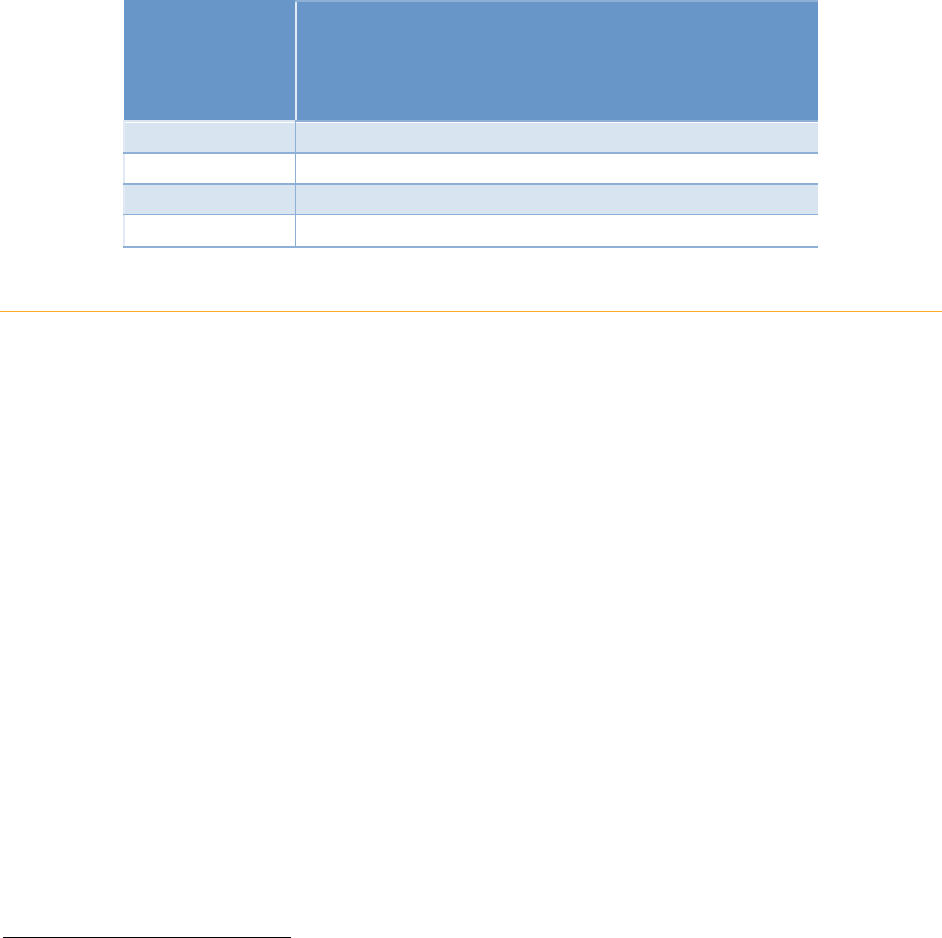
Energy Efficiency Report | 106
The first finance pilot program was Residential Energy Efficiency Loan (REEL) Assistance program that was
launched in July 2016. As the first finance pilot to be implemented, REEL revealed unforeseen administrative
hurdles and provided valuable lessons learned for future implementation. Despite these initial hurdles, REEL
produced promising results as loan dollar volumes quickly accelerated after these start-up challenges.
CAEATFA plans to launch two other finance pilots, targeting small businesses and affordable multifamily
homes, in near future. Should these pilots produce promising results; the CPUC will consider their long-term
implementation.
Table 29: Cumulative Loan Defaults and Partial Payments since Inception through 2015
IOU
Number of
Defaults
Total Amount
Defaulted
% of Defaulted
Amount over Total
Issued Loan
Amount
PG&E
4
$49,603
0.08%
SCE
75
$607,084
1.32%
SDG&E
35
$418,014
0.86%
SCG
1
$1,271
0.05%
Findings
Findings from several market studies are compiled in the following section while findings from the two
Finance impact evaluations are detailed separately in sub-sections below. A number of studies are on hold
pending launch or completion of the Finance Energy Efficiency pilots.
Market and Process Evaluations:
A review of the California energy efficiency finance landscape found that there are three common types of
energy efficiency financing products currently available on the market: home equity loans, term loans (i.e.,
term loans from financial institutions that can be either secured or unsecured against equipment), and
Property Assessed Clean Energy (PACE) loans. Of these options, PACE dominates the energy efficient
financing volume.
152
A study on PACE loans for single-family homeowners found that financing is an important factor for
achieving larger energy efficiency improvement projects with multiple measures.
153
However, despite
contractors being aware of energy efficient financing options, only 15 percent directly promote them.
154
From
the homeowners’ perspective, one in three homeowners are aware of some form of energy efficient financing
and only one in ten are currently aware of PACE. The Residential market study found that one-third of
homeowners completed energy-related upgrades in the last two years and one quarter of those homeowners
used some form of financing. Among those who used financing, 14 percent used energy efficient financing
such as PACE or energy efficient loans. These findings indicate that there is still an opportunity to promote
energy efficiency finance options to support large, multiple measure energy efficiency improvement projects.
152
Market Study #1: Residential
153
HERO Program Profile Final Report
154
Market Study #1: Residential

Energy Efficiency Report | 107
Impact Evaluations:
Impact Evaluation #1 – Cross-Cutting Background and Attribution Research
A series of white papers were issued that explored ways to approach cost-effectiveness and attribution for the
Financing programs. The cost-effectiveness white paper outlined an approach to cost-effectiveness that aligns
with the current CA Cost-Effectiveness Framework. The paper also suggested an alternative approach to the
current Framework that incorporates non-energy benefits and explains the importance of including non-
energy benefits for financing efforts. The attribution white paper explores all of the concepts that must be
accounted for when assessing attribution from financing programs and explains why it must be different from
the current CA Net-To-Gross Framework for incentive programs. The paper weighs the benefits and
drawbacks of various methods and ultimately recommends a discrete-choice approach as that method allows
for an assessment of all factors at play in a financing decision.
Impact Evaluation #2 – Multiphase On-Bill Finance Study
This report presents findings from the impact evaluation of the program years 2013/14 On-Bill finance
(OBF) programs. The purpose of this study was to quantify OBF program energy savings for the evaluation
period (PY2013/14), to determine the impact of the OBF programs on the installation of energy-efficient
equipment by non-residential customers, and to assess the relative importance of the OBF loan and the
program incentive in customer decision-making. This study performed five distinct analyses, including Gross
Impact, Net Impact, Incremental Net Impact, OBF Loan-to-Incentive Ratio, and Funding Source. During
the 2013-2014 program cycle, four PAs issued 1,812 loans, providing over $64 million in financing.
Compared to the 2010-12 program cycle, the number of loans increased three-fold and the total loan volume
increased four-fold. Most of this increase came from PG&E’s program, which launched during the 2010-12
program cycle, but SCE also experienced a significant increase in program activity. Both SDG&E and SCG
had reduced program activity during 2013/14. The statewide program achieved 294,163 MMBtus in ex post
savings, which were, on average, 79 percent of ex ante savings. The overall estimated net-to-gross ratio for
2013-2014 OBF projects is 0.67. The overall incremental net-to-gross ratio of OBF beyond incentives is 0.09
for energy savings and 0.08 for demand savings.
Path to Statewide Goals
The CPUC, in collaboration with the state’s investor-owned utilities and the California Alternative Energy
and Advanced Transportation Financing Authority, continues to develop the California Hub for Energy
Efficiency Financing Pilot Programs. The pilot programs will encourage and leverage private lending and
investment with various features such as loan loss reserves, debt service reserve funds, and on-bill repayment.
These features also should allow lenders to offer better rates and terms by reducing their risk. In turn,
consumers will have increased access to lower-cost financing, allowing them to upgrade their homes and
businesses while saving money on energy.
155
Addressing these up-front cost barriers is a crucial aspect of achieving the doubling of energy efficiency
statewide. As the “low-hanging fruit” efficiency measures are implemented, financing for larger, more
ambitious efficiency projects will become of increasing importance.
155
California Alternative Energy and Advanced Transportation Financing Authority. Website.
http://www.treasurer.ca.gov/caeatfa/cheef/background.asp

Energy Efficiency Report | 108
Public Utilities Code 913.9 Report
Efforts to Avoid Program Duplication with Sister Agencies in 2017
Public Utilities Code 913.9:
The CPUC shall report annually on its efforts to identify ratepayer-funded energy
efficiency programs that are similar to programs administered by the Energy
Commission, the State Air Resources Board, and the California Alternative Energy and
Advanced Transportation Financing Authority in its annual report prepared pursuant to
Section 913 and to require revisions to ratepayer-funded programs as necessary to
ensure that the ratepayer-funded programs complement and do not duplicate programs
of other state agencies
CPUC Energy Division staff coordinated during 2017 with staff of the CEC, the CAEATFA, the California
Air Resources Board and other agencies to develop and maintain complementary energy efficiency programs
and avoid duplication of efforts.
CPUC Energy Division staff collaborated closely with the Energy CPUC staff on the SB350
doubling of energy efficiency goals target setting to ensure that quantification of savings potential for
non-utility programs did not duplicate savings estimates for utility programs.
Energy Division staff reviewed the Air Resources Board greenhouse gas emissions scoping plan and
offered comments on energy efficiency to help shape that plan.
As part of the Joint Agency Steering Committee, the CPUC Energy Division staff coordinates on an
ongoing basis with staff from the CEC, the California Independent System Operator and the Air
Resources Board on issues related to load forecasting with the objective of aligning work streams,
methods, and objectives.
Energy Division staff held bi-weekly meetings with CAEATFA staff, and additional bi-weekly
meetings with CAEATFA staff joined by the statewide finance administrator the Southern California
Gas Company, to coordinate activities and prevent duplication on energy efficiency financing pilots.
CPUC Energy Division staff hosted three workshops on energy efficiency finance that featured
CAEATFA and the investor-owned utilities, as well as evaluation contractors and marketing
contractors, to review the roles and keep the activities on track.
CPUC Energy Division staff hosted meetings with the Energy CPUC on energy efficiency workforce
education & training to coordinate the roles, and included the investor-owned utilities to coordinate
further.
CPUC Energy Division staff launched coordination activities with the CEC on responsible
contractor policies for third party energy efficiency solicitations that will be done in the future by
utilities.
Energy Efficiency Report | 109
CPUC Energy Division staff works with Air Resources Board and the CEC on disadvantaged
communities issues, particularly on implementing recommendations that result from the SB 350
barriers studies.
These meetings coordinated activities among the agencies, brought out synergies, and avoided duplication.
CPUC Decisions also clarified the roles, such as when the most recent finance Decision, D.17-03-026, further
defined the activities to be carried out by CAEATFA and those to be done by Energy Division.

Energy Efficiency Report | 110
Glossary
156
COST-EFFECTIVENESS - An indicator of the relative performance or economic attractiveness
of any energy efficiency investment or practice when compared to the costs of energy produced and
delivered in the absence of such an investment. In the energy efficiency field, the present value of
the estimated benefits produced by an energy efficiency program as compared to the estimated total
program’s costs, from the perspective of either society as a whole or of individual customers, to
determine if the proposed investment or measure is desirable from a variety of perspectives, e.g.,
whether the estimated benefits exceed the estimated costs.
CUSTOMER - Any person or entity responsible for payment of an electric and/or gas bill to and
with an active meter serviced by a utility company (refers to IOU customers herein).
DATABASE FOR ENERGY-EFFICIENT RESOURCES (DEER) – A database sponsored by
the CEC and CPUC designed to provide well-documented estimates of energy and peak demand
savings values, measure costs, and effective useful life (EUL) all with one data source. The users of
the data are intended to be program planners, regulatory reviewers and planners, utility and
regulatory forecasters, and consultants supporting utility and regulatory research and evaluation
efforts. DEER has been designated by the CPUC as its source for deemed and impact costs for
program planning.
DEMAND (Energy Efficiency) - Formally peak megawatt load reduction, demand in the context
of energy efficiency programs is the estimated average grid-level impact for a measure between 2
p.m. and 5 p.m. during a “heat wave” defined by three consecutive weekdays for weather conditions
that are expected to produce a regional grid peak event.
157
DEMAND SAVINGS - The reduction in the demand from the pre-retrofit baseline to the post-
retrofit demand, once independent variables (such as weather or occupancy) have been adjusted. This
term is usually applied to billing demand, to calculate cost savings or to peak demand, for equipment
sizing purposes.
DEMAND SIDE MANAGEMENT (DSM) - The methods used to manage energy demand
including energy efficiency, load management, fuel substitution and load building.
DISTRIBUTED GENERATION - A distributed generation system involves small amounts of
generation located on a utility’s distribution system for the purpose of meeting local (substation level)
peak loads and/or displacing the need to build additional (or upgrade) local distribution lines.
DOWNSTREAM – The market sector that includes customers or the end user of a
product/service. Rebates or incentives that are downstream are targeted directly to customers. See
also UPSTREAM.
EDUCATION PROGRAMS - Programs primarily intended to educate customers about energy-
efficient technologies or behaviors or provide information about programs that offer energy
efficiency or load reduction information or services.
156
California Public Utilities Commission, California Energy Efficiency Evaluation Protocols: Technical, Methodological, and Reporting
Requirements for Evaluation Professionals. April 2006
157
CPUC, Energy Efficiency Policy Manual. p.27
Energy Efficiency Report | 111
EFFECTIVE USEFUL LIFE (EUL) - An estimate of the median number of years that the
measures installed under a program are still in place and operable.
EFFICIENCY - The ratio of the useful energy delivered by a dynamic system (such as a machine,
engine or motor) to the energy supplied to it over the same period or cycle of operation. The ratio is
usually determined under specific test conditions.
END-USE (MEASURES/GROUPS) - Refers to a broad or sometimes narrower category that the
program is concentrating efforts upon. Examples of end-uses include refrigeration, food service,
HVAC, appliances, envelope and lighting.
ENERGY EFFICIENCY - Using less energy to perform the same function. Programs designed to
use energy more efficiently - doing the same with less. “Energy conservation” is a term that has also
been used but it has the connotation of doing without in order to save energy rather than using less
energy to perform the same function and so is not used as much today. Many people use these terms
interchangeably.
ENERGY EFFICIENCY IMPROVEMENT - Reduced energy use for a comparable level of
service, resulting from the installation of an energy efficiency measure or the adoption of an energy
efficiency practice. Level of service may be expressed in such ways as the volume of a refrigerator,
temperature levels, production output of a manufacturing facility, or lighting level/square foot.
ENERGY EFFICIENCY MEASURE - Installation of equipment, subsystems or systems, or
modification of equipment, subsystems, systems or operations on the customer side of the meter, for
the purpose of reducing energy and/or demand (and, hence, energy and/or demand costs) at a
comparable level of service.
ENERGY EFFICIENCY OF A MEASURE - A measure of the energy used to provide a specific
service or to accomplish a specific amount of work (e.g., kWh/cubic foot of a refrigerator,
therms/gallon of hot water).
ENERGY EFFICIENCY OF EQUIPMENT - The percentage of gross energy input that is
realized as useful energy output of a piece of equipment.
ENERGY EFFICIENCY PRACTICE - The use of high-efficiency products, services and
practices or an energy-using appliance or piece of equipment, to reduce energy usage while
maintaining a comparable level of service when installed or applied on the customer side of the
meter. Energy efficiency activities typically require permanent replacement of energy-using
equipment with more efficient models. Examples: refrigerator replacement, light fixture replacement,
cooling equipment upgrades.
ENERGY MANAGEMENT SYSTEM - A control system (often computerized) designed to
regulate the energy consumption of a building by controlling the operation of energy consuming
systems, such as the heating, ventilation and air conditioning (HVAC), lighting and water heating
systems.
ENERGY SAVINGS - The reduction in use of energy from the pre-retrofit baseline to the post-
retrofit energy use, once independent variables (such as weather or occupancy) have been adjusted.
EVALUATION - The performance of studies and activities aimed at determining the effects of a
program; any of a wide range of assessment activities associated with understanding or documenting
program performance or potential performance, assessing program or program-related markets and
market operations; any of a wide range of evaluative efforts including assessing program-induced
changes in energy efficiency markets, levels of demand or energy savings and program cost-
effectiveness.
Energy Efficiency Report | 112
EX-ANTE SAVINGS ESTIMATE – Administrator-forecasted savings used for program and
portfolio planning purposes as filed with the CPUC, from the Latin for “beforehand.”
EX-POST EVALUATION ESTIMATED SAVINGS - Savings estimates reported by the
independent evaluator after the energy impact evaluation and the associated M&V efforts have been
completed. If only the term “ex-post savings” is used, it will be assumed that it is referring to the ex-
post evaluation estimate, the most common usage, from the Latin for “from something done
afterward.”
FREE-RIDER - A program participant who would have implemented the program measure or
practice in the absence of the program.
GIGAWATT (GW) - One thousand megawatts (1,000 MW), one million kilowatts (1,000,000 kW)
or one billion watts (1,000,000,000 watts) of electricity. One gigawatt is enough to supply the electric
demand of about one million average California homes.
GIGAWATT-HOUR (GWH) - One million kilowatt-hours of electric power.
GROSS LOAD IMPACT - The change in energy consumption and/or demand that results directly
from program-related actions taken by participants in a DSM program, regardless of why they
participated. Related to Gross Energy Impact and Gross Demand Protocols.
IMPACT EVALUATION - Used to measure the program-specific induced changes in energy
and/or demand usage (such kWh, kW and therms) and/or behavior attributed to energy efficiency
and demand response programs.
INVESTOR-OWNED UTILITY (IOU) - Private electricity and natural gas providers in which a
shareholder-elected board appoints a management team of private sector employees. CPUC oversees
IOUs. Pacific Gas and Electric, San Diego Gas and Electric, and Southern California Edison
comprise approximately three quarters of electricity supply in California while Southern California
Gas Company provides gas service to southern California.
LOAD - The amount of electric power supplied to meet one or more end user’s needs. The amount
of electric power delivered or required at any specified point or points on a system. Load originates
primarily at the power-consuming equipment of the customer. Load should not be confused with
demand, which is the rate at which power is delivered to or by a system, part of a system, or a piece
of equipment.
LUMEN - A measure of the amount of light available from a light source equivalent to the light
emitted by one candle.
LUMENS/WATT - A measure of the efficacy of a light fixture; the number of lumens output/watt
of power consumed
MARKET - The commercial activity (manufacturing, distributing, buying and selling) associated
with products and services that affect energy usage.
MARKET ASSESSMENT - An analysis function that provides an assessment of how and how
well a specific market or market segment is functioning with respect to the definition of well-
functioning markets or with respect to other specific policy objectives. Generally includes a
characterization or description of the specific market or market segments, including a description of
the types and number of buyers and sellers in the market, the key actors that influence the market,
the type and number of transactions that occur on an annual basis and the extent to which energy
efficiency is considered an important part of these transactions by market participants. This analysis
may also include an assessment of whether or not a market has been sufficiently transformed to
justify a reduction or elimination of specific program interventions. Market assessment can be
Energy Efficiency Report | 113
blended with strategic planning analysis to produce recommended program designs or budgets. One
particular kind of market assessment effort is a baseline study, or the characterization of a market
before the commencement of a specific intervention in the market, for the purpose of guiding the
intervention and/or assessing its effectiveness later.
MARKET EFFECT - A change in the structure or functioning of a market or the behavior of
participants in a market that result from one or more program efforts. Typically, these efforts are
designed to increase in the adoption of energy-efficient products, services or practices and are
causally related to market interventions.
MARKET SECTORS - General types of markets that a program may target or in which a service
offering may be placed. Market sectors include categories such as Agricultural, Commercial,
Industrial, Government and Institutional. Market sectors help the CPUC assess how well its
portfolio of programs is addressing the variety of markets for energy efficiency products and services
in the state.
MARKET SEGMENTS - A part of a market sector that can be grouped together as a result of a
characteristic similar to the group. Within the residential sector are market segments such as renters,
owners, multi-family and single-family. These market segments help the CPUC assess how well its
portfolio of programs is addressing the variety of segments within the markets served.
MIDSTREAM – Specifically the retail market segment. Midstream incentives encourage retailers to
stock more high-efficiency products in order to increase sales of these products.
NET LOAD IMPACT - The total change in load that is attributable to the utility DSM program.
This change in load may include, implicitly or explicitly, the effects of free-drivers, free-riders, state
or federal energy efficiency standards, changes in the level of energy service and natural change
effects.
NET-TO-GROSS RATIO (NTGR) - A factor representing the program savings net of free
ridership as compared to the total program savings, inclusive of free riders. The NTGR can be
thought of how much savings in a given program area or sector are directly attributable to program
interventions compared to the savings that include both program-generated savings and savings that
would have occurred without program intervention.
PLUG LOAD – Plug loads are energy used by equipment that is usually plugged into an outlet. Plug
loads can be subdivided into various categories, such as appliances, electronic plug loads (e.g.
consumer electronics), miscellaneous plug loads (e.g. aquarium pumps), and hard wired plug loads
(e.g. ceiling fans, security cameras).
PORTFOLIO - All IOU and non-IOU energy efficiency programs funded through authorized
energy efficiency funding that are implemented during a program year or cycle.
REALIZATION RATE - The ratio of evaluated savings to savings reported (pre-evaluation) by the
Program Administrator.
REBATES - A type of incentive provided to encourage the adoption of energy-efficient practices,
typically paid after the measure has been installed. There are typically two types of rebates: a
Prescriptive Rebate, which is a prescribed financial incentive/unit for a prescribed list of products,
and a Customized Rebate, in which the financial incentive is determined using an analysis of the
customer’s equipment and an agreement on the specific products to be installed. Upstream rebates
are financial incentives provided for manufacturing, sales, stocking or other per unit energy-efficient
product movement activities designed to increase use of particular type of products.
Energy Efficiency Report | 114
UPSTREAM – Refers to the market sector of manufacturers or retailers of high efficiency products.
Programs can target rebates or incentives at this market sector. See also DOWNSTREAM.

Energy Efficiency Report | 115
Appendices
Appendix A: IOU Savings Compared to CPUC Savings Goals
An Excel file containing the data used in this appendix is available.
This appendix compares the energy savings reported by California’s seven energy efficiency program
administrators and the evaluated energy savings achievements for the 2013-2015 program cycle with the
energy savings goals adopted by the Commission in Decision (D.)12-05-015 and D.14-10-046.
The data should not be compared against other appendix tables showing portfolio savings because only fuel
types that are applicable to goal attainment are included in this appendix. For example, SCE’s natural gas
savings are not included, nor likewise SoCalGas’s electric savings, because as single-fuel utilities the savings
from the fuel type they do not supply are not established in their goals.
The following terms describe different metrics used by the CPUC in establishing goals and defining savings
impacts:
Goals - Energy savings targets established by the CPUC for each investor-owned utility’s energy
efficiency portfolio. The 2013-14 goals were based on the 2011 Energy Efficiency Potential Study
conducted by the California Energy Commission; 2015 goals were based on 2013 Phase 2 updates to
that study.
158
For the 2013-2015 program cycle, goals are set for gross savings for GWh, MW, and
Therms.
Reported Savings - Also referred to as “claims,” these are energy savings reported to the CPUC by
the program administrators. The reported savings are based on the number of installed technologies
and pre-evaluation (ex-ante) savings assumptions.
Evaluated Savings - Energy savings estimates that represent adjustments to the program
administrator’s reported savings based on field research of the installations, performance, and market
conditions gathered during evaluation activities. Evaluation studies determine updates to various
savings parameters, which adjust the amount of savings that occurred and can be attributed to
programs. Parameters include Unit Energy Savings (UES), Net-to-Gross Ratios (NTG), Expected
and Remaining Useful Life (EUL/RUL) for dual baseline measures, Installation Rate (IR),
Realization Rate (RR) In-service rate, and Gross Impacts - Energy savings that result from efficiency
measures installed or actions taken by program administrator customers, regardless of whether or to
what extent the programs influenced their actions.
Net Impacts - Energy savings directly attributable to the program. Net savings are calculated by
subtracting savings by program participants that are estimated to have happened without the
program (so called “free ridership”) from the gross savings estimate.
When the CPUC adopted updated savings goals for the 2013-2014 program cycle, several changes were made
to previous cycles’ methodology including updates to the avoided costs methodology and the DEER.
158
http://www.cpuc.ca.gov/General.aspx?id=2013

Energy Efficiency Report | 116
For the 2013-2015 program cycle, the CPUC allowed the IOUs to credit savings from Low Income Energy
Efficiency programs and Codes and Standards advocacy toward their goals, although these savings were not
included in the savings potential study used to define the goals. In Decision 12-05-015, the CPUC decided
that codes and standards goals should be separated from the program goals. This is a distinct change from the
2010-2012 program cycle in which IOUs could credit codes and standards advocacy savings toward their
energy efficiency goals.
Electric and peak demand savings attained by SoCalGas, and natural gas savings attained by SCE, are not
included for goal attainment.
Savings achievements from Regional Energy Networks and Community Choice Aggregators are included in
their respective IOU goal attainment since goals are established for IOU territories and not individual entities
(RENs and CCAs do not themselves have mandated goals).
It is important to acknowledge several challenges associated with a comparison of goals and evaluated
savings. Each savings estimate is based on slightly different assumptions and available information in
different time periods. The primary difference is that evaluated savings reflect newly attained information on
energy efficiency market penetration, end user adoption rates, and per unit savings developed through on-site
evaluations and other research. This information was not available when goals or ex ante savings estimates
were established. This discrepancy in available information leads to differences between savings estimates
originally used to develop the efficiency goals and the savings estimates underlying the evaluated savings
results.
The following tables present the range of savings estimates, including the final evaluated savings, compared to
the 2013-2015 energy efficiency savings goals. For the 2013-2015 goal attainment calculations, CPUC policy
dictated Rows that program administrators were allowed to add net show combined programs/codes and
standards goals and savings are for reference only and reported gross savings from low income programs
towards do not reflect the official CPUC guidance on goal attainment calculation.
Table A-1: Statewide Energy Savings for 2013-2015 Portfolio: Goals, Reported, Evaluated
Electric
(GWh)
Demand
(MW)
Natural Gas
(MM Therms)
A. Gross Programs 4,410 830 130
B. Net Codes and Standards 1,756 243 7
C. Combined (A + B) 6,166 1,073 137
D. Reported Gross 5,430 1,007 132
E. Reported Net 3,877 719 89
F. Evaluated Gross 5,070 954 100
G. Evaluated Net 3,230 624 67
Low Income Programs
H. Reported Gross 226 54 15
J. Reported Gross 7,362 1,441 26
K. Reported Net 2,892 538 19
L. Evaluated Gross 7,362 1,441 26
M. Evaluated Net 3,923 576 13
Evaluated Gross Programs Savings including Low Income
N. Gross Programs (F + H) 5,296 1,008 114
Evaluated Net Codes and Standards Savings P. Net Codes and Standards (M) 3,923 576 13
Combined Q. Combined (N+P) 9,219 1,584 127
R. Gross Programs (N over A) 120% 121% 88%
S. Net Codes and Standards (M over B) 223% 237% 183%
T. Combined (Q over C) 150% 148% 93%
Goals
Goals Attainment Percent
Program Savings
Codes and Standards
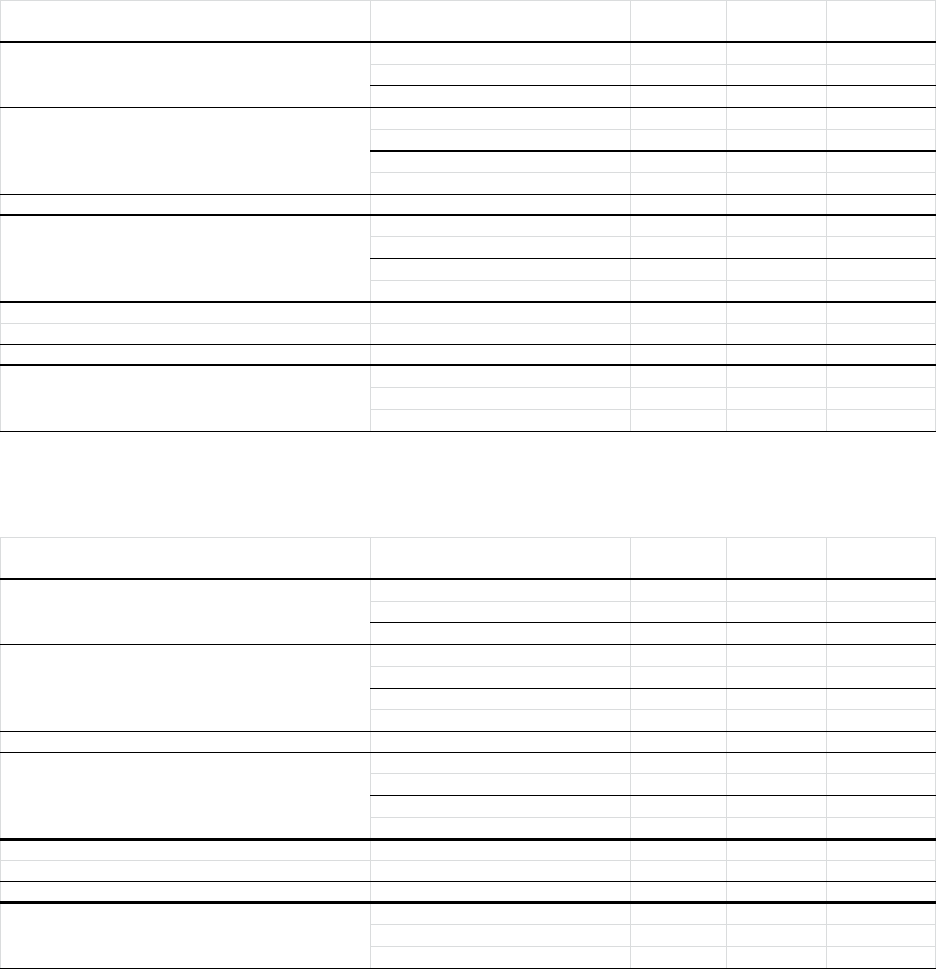
Energy Efficiency Report | 117
Table A-2: PG&E Energy Savings for 2013-2015 Portfolio
Table A-3: SCE Energy Savings for 2013-2015 Portfolio
Electric
(GWh)
Demand
(MW)
Natural Gas
(MM Therms)
A. Gross Programs 1,889 324 56
B. Net Codes and Standards 776 107 2
C. Combined (A + B) 2,665 431 57
D. Reported Gross 2,332 452 73
E. Reported Net 1,747 335 54
F. Evaluated Gross 2,199 433 56
G. Evaluated Net 1,457 292 38
Low Income Programs
H. Reported Gross 118 23 6
J. Reported Gross 3,249 636 (4)
K. Reported Net 1,276 238 2
L. Evaluated Gross 3,249 636 (4)
M. Evaluated Net 1,717 249 3
Evaluated Gross Programs Savings including Low Income
N. Gross Programs (F + H) 2,317 456 62
Evaluated Net Codes and Standards Savings P. Net Codes and Standards (M) 1,717 249 3
Combined Q. Combined (N+P) 4,034 705 65
R. Gross Programs (N over A) 123% 141% 111%
S. Net Codes and Standards (M over B) 221% 233% 185%
T. Combined (Q over C) 151% 163% 113%
Goals
Program Savings
Codes and Standards
Goals Attainment Percent
Electric
(GWh)
Demand
(MW)
Natural Gas
(MM Therms)
A. Gross Programs 2,030 408 -
B. Net Codes and Standards 800 111 -
C. Combined (A + B) 2,829 518 -
D. Reported Gross 2,604 462 -
E. Reported Net 1,795 320 -
F. Evaluated Gross 2,383 428 -
G. Evaluated Net 1,481 274 -
Low Income Programs
H. Reported Gross 91 29 -
J. Reported Gross 3,352 656 -
K. Reported Net 1,317 245 -
L. Evaluated Gross 3,352 656 -
M. Evaluated Net 1,804 268 -
Evaluated Gross Programs Savings including Low Income
N. Gross Programs (F + H) 2,474 458 -
Evaluated Net Codes and Standards Savings P. Net Codes and Standards (M) 1,804 268 -
Combined Q. Combined (N+P) 4,278 726 -
R. Gross Programs (N over A) 122% 112%
S. Net Codes and Standards (M over B) 226% 243%
T. Combined (Q over C) 151% 140%
Goals
Program Savings
Codes and Standards
Goals Attainment Percent

Energy Efficiency Report | 118
Table A-4: SCG Energy Savings for 2013-2015 Portfolio
Table A-5: SDG&E Energy Savings for 2013-2015 Portfolio
Electric
(GWh)
Demand
(MW)
Natural Gas
(MM Therms)
A. Gross Programs - - 68
B. Net Codes and Standards - - 5
C. Combined (A + B) - - 73
D. Reported Gross - - 56
E. Reported Net - - 33
F. Evaluated Gross - - 42
G. Evaluated Net - - 27
Low Income Programs
H. Reported Gross - - 8
J. Reported Gross - - 30
K. Reported Net - - 17
L. Evaluated Gross - - 30
M. Evaluated Net - - 9
Evaluated Gross Programs Savings including Low Income
N. Gross Programs (F + H) - - 49
Evaluated Net Codes and Standards Savings P. Net Codes and Standards (M) - - 9
Combined Q. Combined (N+P) - - 58
R. Gross Programs (N over A) 73%
S. Net Codes and Standards (M over B) 182%
T. Combined (Q over C) 80%
Goals
Program Savings
Codes and Standards
Goals Attainment Percent
Electric
(GWh)
Demand
(MW)
Natural Gas
(MM Therms)
A. Gross Programs 492 98 6.6
B. Net Codes and Standards 181 25 0.2
C. Combined (A + B) 673 124 6.8
D. Reported Gross 494 92 3.6
E. Reported Net 334 64 2.3
F. Evaluated Gross 488 93 2.3
G. Evaluated Net 292 59 2.0
Low Income Programs
H. Reported Gross 17 2 0.9
J. Reported Gross 761 149 (0.5)
K. Reported Net 299 56 0.2
L. Evaluated Gross 761 149 (0.5)
M. Evaluated Net 402 58 0.4
Evaluated Gross Programs Savings including Low Income
N. Gross Programs (F + H) 505 95 3.2
Evaluated Net Codes and Standards Savings P. Net Codes and Standards (M) 402 58 0.4
Combined Q. Combined (N+P) 907 153 3.6
R. Gross Programs (N over A) 103% 96% 49%
S. Net Codes and Standards (M over B) 222% 231% 188%
T. Combined (Q over C) 135% 124% 53%
Goals
Program Savings
Codes and Standards
Goals Attainment Percent
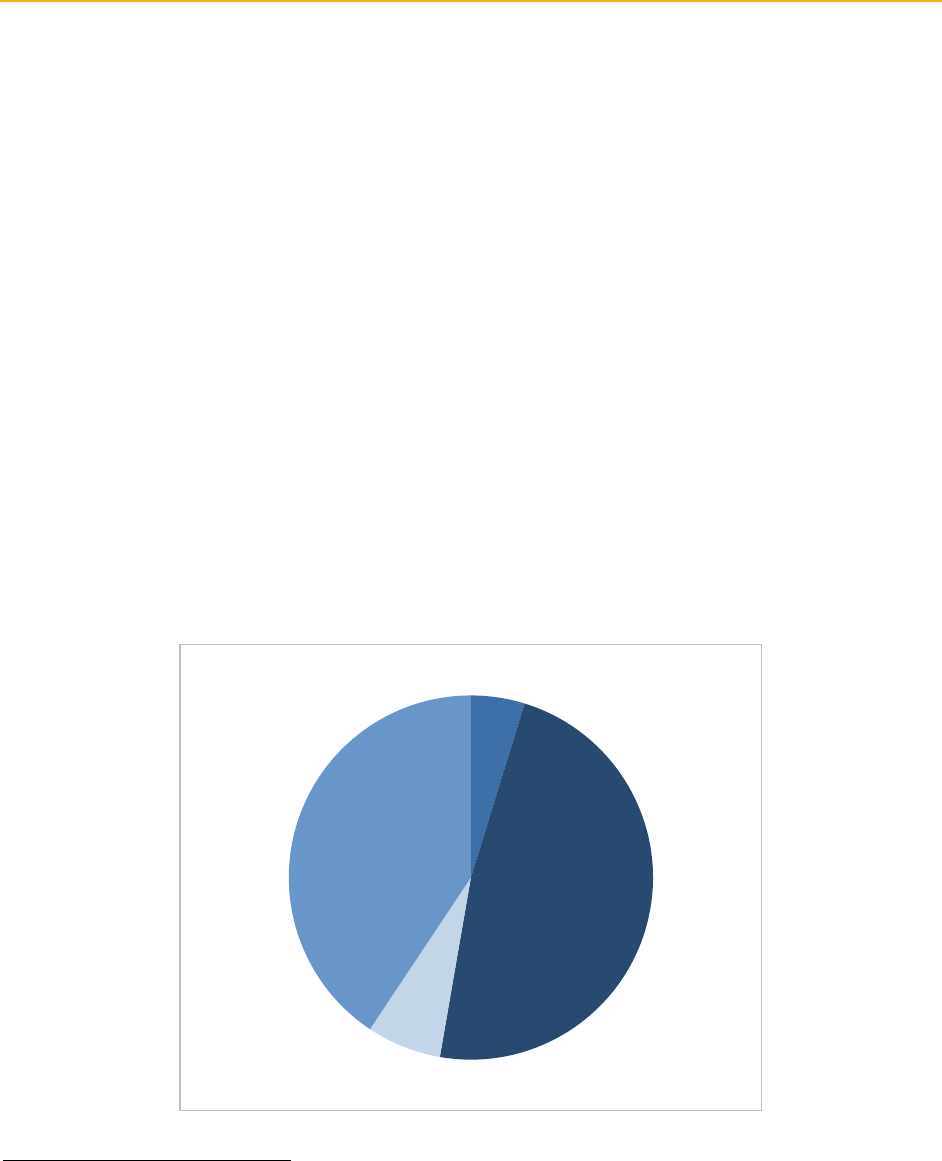
Energy Efficiency Report | 119
Appendix B: Energy Savings by Sector and End Use
An Excel file containing the data used in this appendix is available.
This appendix shows both first-year and lifecycle savings for each market sector and end use. The majority of
first-year energy savings are concentrated in the residential and commercial market sectors. Key end uses
include HVAC and indoor lighting for electric savings and large industrial processes for natural gas savings.
The evaluations conducted in the 2013-2015 period considered all fuel impacts of the installed measures,
including interactive effects. For instance, the evaluations estimate the positive electric savings from reduced
air conditioning load and negative natural gas savings from increased heating load that result from installation
of more efficient interior lighting and refrigeration measures. Consequently, electric impacts are reflected for
SCG and natural gas impacts are shown for SCE, despite both of these IOUs being single-fuel utilities. These
impacts are not considered compared to goals, since neither utility has goals for energy types it does not sell.
Savings from codes and standards are not included in this appendix. All net savings values include a 5
percent market effects adjustment, as determined in D.12.11.015.
159
The savings estimates provided in this appendix reflect savings parameter updates that were updated based on
the evaluation studies.
160
Appendix H provides a decision tree that illustrates how findings from evaluation
studies were used to update each parameter in the program tracking data. First year savings are calculated for
electricity, demand, and natural gas savings, while lifecycle savings are calculated for electricity and gas savings
only.
Figure B-1a: Distribution of First Year Evaluated Net Electricity Savings by Sector
159
D.12.11.015, Ordering Paragraph 37.
160
Savings parameter updates included Unit Energy Savings, Effective Useful Life, installation rates, realization rates, measure Costs
and Net to Gross ratios.
Agriculture
5%
Commercial
48%
Industrial
6%
Residential
41%

Energy Efficiency Report | 120
FigureB-2a: Distribution of First Year Evaluated Net Natural Gas Savings by Sector
Figure B-1b: Distribution of Lifecycle Evaluated Net Electricity Savings by Sector
Agriculture
8%
Commercial
36%
Industrial
35%
Residential
21%
Agriculture
6%
Commercial
53%
Industrial
9%
Residential
32%

Energy Efficiency Report | 121
Figure B-2b: Distribution of Lifecycle Evaluated Net Natural Gas Savings by Sector
Table B-1a: 2013-2015 Statewide First Year Energy Savings by Sector
Agriculture
9%
Commercial
40%
Industrial
41%
Residential
10%
Peak Demand Savings (kW)
Target Sector Reported Gross Evaluated Gross Reported Net Evaluated Net
Agriculture 84,472 62,104 57,258 36,355
Commercial 482,269 457,067 345,170 292,332
Industrial 75,621 52,151 53,081 31,092
Residential 377,149 395,437 272,552 272,635
Total 1,019,511 966,759 728,061 632,414
Electric Savings (kWh)
Target Sector Reported Gross Evaluated Gross Reported Net Evaluated Net
Agriculture 335,134,037 256,812,240 232,768,525 154,648,213
Commercial 2,709,089,360 2,458,649,067 1,963,775,857 1,557,542,935
Industrial 545,152,320 366,475,195 381,564,953 214,947,839
Residential 1,868,687,344 2,015,916,566 1,316,382,105 1,320,094,524
Total 5,458,063,060 5,097,853,068 3,894,491,440 3,247,233,510
Natural Gas Savings (Therms)
Target Sector Reported Gross Evaluated Gross Reported Net Evaluated Net
Agriculture 10,840,604 8,074,871 7,285,051 4,633,115
Commercial 48,031,568 36,126,682 30,950,355 21,261,920
Industrial 51,564,295 33,419,144 32,067,415 20,936,142
Residential 10,637,553 8,708,186 11,343,915 12,213,254
Total 121,074,019 86,328,882 81,646,736 59,044,431

Energy Efficiency Report | 122
Table B-1b: 2013-2015 Statewide Lifecycle Energy Savings by Sector
Target Sector Reported Gross Evaluated Gross Reported Net Evaluated Net
Agriculture 3,763,493,232 2,734,790,769 2,623,129,614 1,648,502,780
Commercial 28,183,439,760 24,600,270,046 20,704,009,534 15,964,086,187
Industrial 7,156,600,799 4,592,065,751 4,950,281,236 2,687,337,694
Residential 15,285,834,399 16,918,022,352 10,018,692,615 9,542,728,407
Total 54,389,368,190 48,845,148,917 38,296,113,000 29,842,655,067
Natural Gas Savings (Therms)
Target Sector Reported Gross Evaluated Gross Reported Net Evaluated Net
Agriculture 141,804,754 100,598,222 97,912,374 58,317,781
Commercial 583,384,647 439,074,333 381,915,988 271,609,155
Industrial 696,017,174 442,945,100 435,211,101 278,925,063
Residential 115,590,961 63,271,935 85,659,009 71,474,109
Total 1,536,797,536 1,045,889,590 1,000,698,472 680,326,109
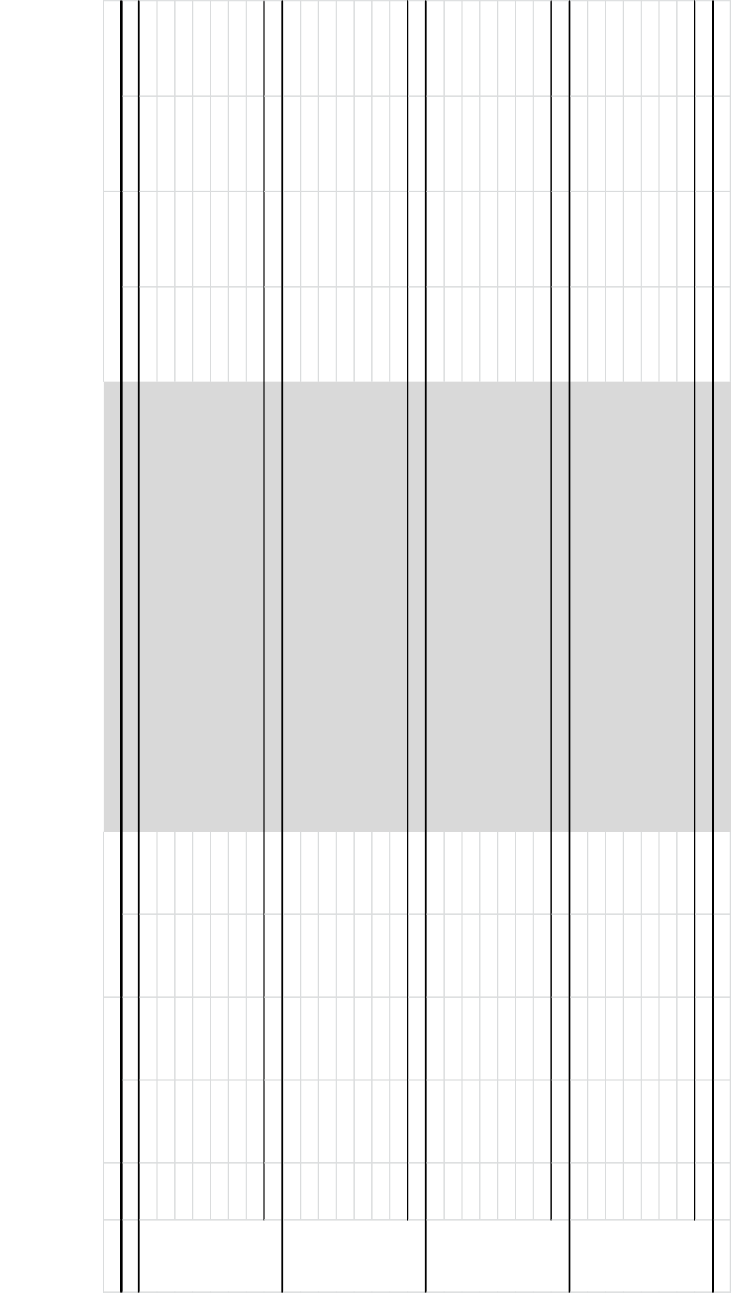
Energy Efficiency Report | 123
Sector IOU Gross Net Gross Net Gross Net Gross Net Gross Net Gross Net
PGE 65,893 43,800 47,224 26,310 247,305,661 168,787,016 182,483,966 104,977,756 9,762,193 6,624,311 6,997,724 3,974,144
SCE 18,539 13,433 14,858 10,030 87,298,041 63,646,350 73,862,277 49,372,104 (8,019) (4,480) (9,468) (6,353)
SCG - - - - 264,687 161,376 264,687 161,376 771,922 467,663 771,922 467,663
SDGE 39 26 22 15 265,648 173,782 201,310 136,977 314,508 197,557 314,693 197,662
BAY - - - - - - - - - - - -
MCE - - - - - - - - - - - -
SCR - - - - - - - - - - - -
Total 84,472 57,258 62,104 36,355 335,134,037 232,768,525 256,812,240 154,648,213 10,840,604 7,285,051 8,074,871 4,633,115
PGE 186,904 132,560 183,247 111,476 1,120,474,113 818,911,894 1,029,740,161 640,494,247 27,632,335 18,607,777 21,467,443 11,867,662
SCE 239,964 173,436 217,988 145,486 1,291,511,906 936,459,274 1,152,591,252 744,122,579 (689,602) (562,445) (804,906) (590,543)
SCG 1 1 1 1 (87,479) (57,963) (87,479) (57,963) 17,546,804 10,637,996 13,322,614 8,695,546
SDGE 55,090 38,949 55,520 35,144 295,184,203 207,054,229 274,398,516 171,555,019 3,532,345 2,256,938 2,131,844 1,279,247
BAY - - - - - - - - - - - -
MCE 311 224 311 226 2,006,617 1,408,424 2,006,617 1,429,053 9,687 10,088 9,687 10,007
SCR - - - - - - - - - - - -
Total 482,269 345,170 457,067 292,332 2,709,089,360 1,963,775,857 2,458,649,067 1,557,542,935 48,031,568 30,950,355 36,126,682 21,261,920
PGE 29,064 20,365 21,872 12,884 196,503,339 138,355,073 142,791,256 84,879,690 26,287,964 18,009,672 18,131,462 10,591,002
SCE 43,762 30,798 27,972 16,697 326,048,483 227,665,475 208,355,561 120,620,425 (4,687) (4,989) (14,501) (10,408)
SCG - - - - - - - - 24,524,854 13,578,822 14,811,634 10,080,636
SDGE 2,769 1,901 2,281 1,494 22,516,729 15,489,955 15,244,609 9,393,274 756,637 484,218 491,021 275,220
BAY - - - - - - - - - - - -
MCE 26 17 26 17 83,770 54,450 83,770 54,450 (473) (307) (473) (307)
SCR - - - - - - - - - - - -
Total 75,621 53,081 52,151 31,092 545,152,320 381,564,953 366,475,195 214,947,839 51,564,295 32,067,415 33,419,144 20,936,142
PGE 168,246 136,724 179,282 140,324 758,457,845 612,491,407 835,551,313 620,857,394 8,758,225 9,901,462 8,424,491 11,143,301
SCE 158,776 101,343 166,881 101,167 896,737,721 565,620,567 946,558,865 565,526,174 (10,592,723) (6,620,439) (12,361,045) (7,439,579)
SCG 13,005 8,567 12,627 8,226 28,290,936 17,841,101 27,606,609 17,223,720 12,669,612 7,995,683 12,528,909 7,713,843
SDGE 34,099 23,198 35,154 21,917 175,567,913 111,764,798 197,921,265 111,030,350 (971,343) (627,522) (629,757) 239,223
BAY 1,835 1,652 692 461 7,282,648 6,554,384 6,195,495 4,000,200 644,167 579,751 624,607 465,374
MCE 33 30 33 30 378,124 334,908 378,124 334,908 34,664 29,526 34,664 29,526
SCR 1,154 1,038 767 510 1,972,156 1,774,940 1,704,894 1,121,778 94,950 85,455 86,318 61,566
Total 377,149 272,552 395,437 272,635 1,868,687,344 1,316,382,105 2,015,916,566 1,320,094,524 10,637,553 11,343,915 8,708,186 12,213,254
Total 1,019,511 728,061 966,759 632,414 5,458,063,060 3,894,491,440 5,097,853,068 3,247,233,510 121,074,019 81,646,736 86,328,882 59,044,431
Evaluated kW
Reported kWh
Evaluted kWh
Reported Therms
Evaluated Therms
Agriculture
Commercial
Industrial
Residential
Reported kW
Table B-2a: 2013-2015 First Year Savings by Sector and Program Administrator
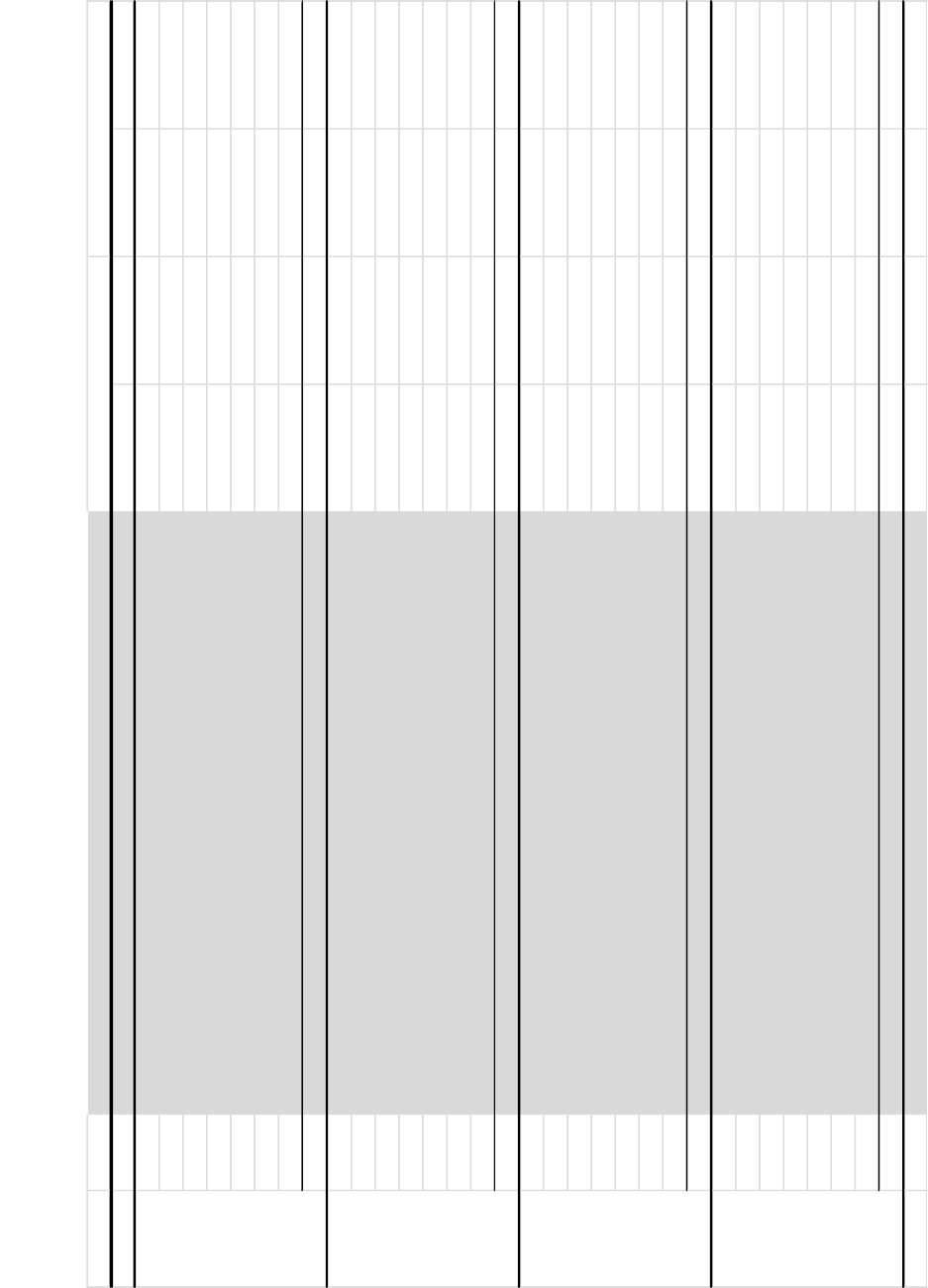
Energy Efficiency Report | 124
Sector IOU Gross Net Gross Net Gross Net Gross Net
PGE 2,962,690,298 2,044,719,907 2,124,123,625 1,250,061,242 136,251,889 94,505,588 95,046,028 54,914,616
SCE 797,804,389 576,508,448 607,752,791 396,545,990 (56,610) (34,572) (57,519) (38,206)
SCG 1,323,436 806,881 1,323,436 806,881 3,859,610 2,338,314 3,859,610 2,338,314
SDGE 1,675,110 1,094,377 1,590,917 1,088,667 1,749,864 1,103,044 1,750,103 1,103,058
BAY - - - - - - - -
MCE - - - - - - - -
SCR - - - - - - - -
Total 3,763,493,232 2,623,129,614 2,734,790,769 1,648,502,780 141,804,754 97,912,374 100,598,222 58,317,781
PGE 12,537,916,643 9,302,464,838 10,795,580,025 6,913,467,397 306,712,734 215,553,839 237,970,136 142,138,682
SCE 12,695,610,010 9,342,819,159 10,949,624,209 7,224,816,416 (1,742,647) (2,701,436) (3,950,137) (3,779,023)
SCG (1,835,647) (1,215,201) (1,835,647) (1,215,201) 238,428,782 143,810,542 178,975,631 117,704,999
SDGE 2,932,634,949 2,046,157,859 2,837,787,655 1,813,005,707 39,876,974 25,138,910 25,969,898 15,431,284
BAY - - - - - - - -
MCE 19,113,805 13,782,879 19,113,805 14,011,868 108,806 114,133 108,806 113,213
SCR - - - - - - - -
Total 28,183,439,760 20,704,009,534 24,600,270,046 15,964,086,187 583,384,647 381,915,988 439,074,333 271,609,155
PGE 2,644,889,740 1,856,310,824 1,835,287,406 1,094,568,901 358,045,121 247,650,657 240,279,799 141,389,009
SCE 4,215,235,411 2,891,768,526 2,554,742,358 1,467,858,984 28,756 (15,216) (139,191) (105,096)
SCG - - - - 329,938,477 182,421,726 197,801,161 134,836,160
SDGE 296,050,229 201,925,363 201,610,568 124,633,286 8,007,224 5,155,496 5,005,735 2,806,553
BAY - - - - - - - -
MCE 425,419 276,522 425,419 276,522 (2,405) (1,563) (2,405) (1,563)
SCR - - - - - - - -
Total 7,156,600,799 4,950,281,236 4,592,065,751 2,687,337,694 696,017,174 435,211,101 442,945,100 278,925,063
PGE 4,685,493,140 3,279,457,338 5,303,673,940 2,962,528,579 47,317,973 40,095,312 25,324,551 38,730,666
SCE 8,266,131,235 5,179,323,051 9,179,291,816 5,274,402,391 (99,036,761) (62,899,621) (121,568,283) (70,699,356)
SCG 381,929,029 246,763,819 370,637,543 236,571,765 160,554,366 101,305,519 158,015,951 97,061,840
SDGE 1,785,694,198 1,163,291,262 1,942,412,795 988,477,988 (5,386,288) (3,751,598) (9,766,165) (2,087,090)
BAY 124,263,458 111,837,112 97,217,003 64,525,320 11,292,927 10,163,634 10,141,908 7,707,695
MCE 4,219,473 3,726,554 4,219,473 3,726,554 411,139 351,919 411,139 351,919
SCR 38,103,866 34,293,479 20,569,782 12,495,809 437,605 393,844 712,834 408,436
Total 15,285,834,399 10,018,692,615 16,918,022,352 9,542,728,407 115,590,961 85,659,009 63,271,935 71,474,109
Total 54,389,368,189.60 38,296,113,000 48,845,148,917 29,842,655,067 1,536,797,536 1,000,698,472 1,045,889,590 680,326,109
Evaluated Therms
Agriculture
Commercial
Industrial
Residential
Reported kWh
Evaluted kWh
Reported Therms
Table B-2b: 2013-2015 Lifecycle Savings by Sector and Program Administrator

Energy Efficiency Report | 125
Peak Demand (kW)
End Use Reported Evaluted Reported Evaluted
Appliance 54,377 54,351 33,618 33,602
Food Service 1,537 1,466 1,047 997
HVAC 199,860 178,404 151,230 129,983
Indoor Lighting 393,777 412,395 275,126 250,939
Other 30,149 36,443 26,261 32,805
Outdoor Lighting 2,139 2,107 1,426 1,257
Plug Loads 2,869 2,495 1,691 1,428
Process 123,465 81,396 84,677 47,616
Refrigeration 39,033 34,292 27,551 23,374
Water Heating 804 794 511 500
Whole Building 171,500 162,615 124,923 109,912
Total 1,019,511 966,759 728,061 632,414
Electric (kWh)
End Use Reported Evaluted Reported Evaluted
Appliance 250,814,605 250,694,063 154,565,671 154,486,117
Food Service 7,445,165 7,108,961 5,065,527 4,821,799
HVAC 840,917,243 627,354,449 627,409,865 422,821,577
Indoor Lighting 2,374,583,195 2,507,519,988 1,630,794,534 1,485,471,017
Other 171,759,732 181,013,611 146,480,709 159,000,061
Outdoor Lighting 296,585,901 275,659,262 223,583,501 165,295,901
Plug Loads 48,920,205 44,871,052 23,287,050 20,580,322
Process 704,493,094 458,964,834 485,843,818 271,145,165
Refrigeration 276,227,424 241,885,118 193,431,769 162,723,245
Water Heating 4,998,120 4,916,114 3,288,497 3,182,187
Whole Building 481,318,376 497,865,615 400,740,499 397,706,120
Total 5,458,063,060 5,097,853,068 3,894,491,440 3,247,233,510
Natural Gas (Therms)
End Use Reported Evaluted Reported Evaluted
Appliance 1,410,147 1,305,865 638,978 592,789
Food Service 6,658,694 6,525,075 4,326,457 4,265,554
HVAC 21,373,998 14,470,575 15,324,470 9,084,015
Indoor Lighting (22,682,591) (25,641,848) (14,766,306) (14,332,234)
Other 10,836,798 8,232,618 7,688,732 6,606,384
Outdoor Lighting 22,221 10,844 14,075 5,653
Plug Loads 34,957 (201,322) 187,277 76,391
Process 64,244,971 44,092,708 41,005,513 27,216,447
Refrigeration 2,193,473 1,828,672 1,328,851 1,187,510
Water Heating 15,059,015 14,718,773 9,670,939 9,279,463
Whole Building 21,922,337 20,986,921 16,227,749 15,062,460
Total 121,074,019 86,328,882 81,646,736 59,044,431
Gross
Net
Gross
Net
Gross
Net
Table B-3a: 2013-2015 Statewide First Year Energy Savings by End Use

Energy Efficiency Report | 126
Electric (kWh)
End Use Reported Evaluted Reported Evaluted
Appliance 1,878,848,727 1,877,065,868 1,157,526,534 1,156,304,128
Food Service 89,405,998 84,354,393 60,819,174 57,266,375
HVAC 10,519,948,590 7,664,419,411 7,698,175,130 5,173,484,390
Indoor Lighting 21,634,887,025 23,789,585,730 15,054,645,688 13,933,477,371
Other 931,983,198 836,670,582 621,768,330 559,050,704
Outdoor Lighting 3,369,262,418 2,924,752,332 2,519,335,729 1,752,259,456
Plug Loads 273,473,197 255,378,964 117,548,299 105,623,215
Process 8,545,006,977 5,416,846,252 5,827,376,024 3,189,989,585
Refrigeration 3,661,167,196 3,087,560,013 2,582,327,890 2,091,401,004
Water Heating 54,234,993 52,983,079 35,303,007 33,939,712
Whole Building 3,431,149,871 2,855,532,294 2,621,287,195 1,789,859,128
Total 54,389,368,190 48,845,148,917 38,296,113,000 29,842,655,067
Natural Gas (Therms)
End Use Reported Evaluted Reported Evaluted
Appliance 30,038,066 28,674,718 15,865,733 15,240,486
Food Service 79,944,755 78,257,220 51,939,271 51,160,537
HVAC 263,384,417 185,814,272 178,109,713 115,723,605
Indoor Lighting (222,151,457) (264,123,144) (145,193,659) (142,433,840)
Other 87,388,398 54,241,295 51,711,635 36,637,911
Outdoor Lighting 306,030 128,010 212,789 66,987
Plug Loads 322,735 (1,409,015) 1,364,175 539,560
Process 872,840,702 582,044,945 558,434,171 359,865,443
Refrigeration 19,218,370 15,316,247 11,436,591 9,846,681
Water Heating 210,354,348 204,998,361 135,499,692 129,757,755
Whole Building 195,151,171 161,946,682 141,318,361 103,920,983
Total Therms 1,536,797,536 1,045,889,590 1,000,698,472 680,326,109
Gross
Net
Gross
Net
Table B-3b: 2013-2015 Statewide Lifecycle Savings by End Use
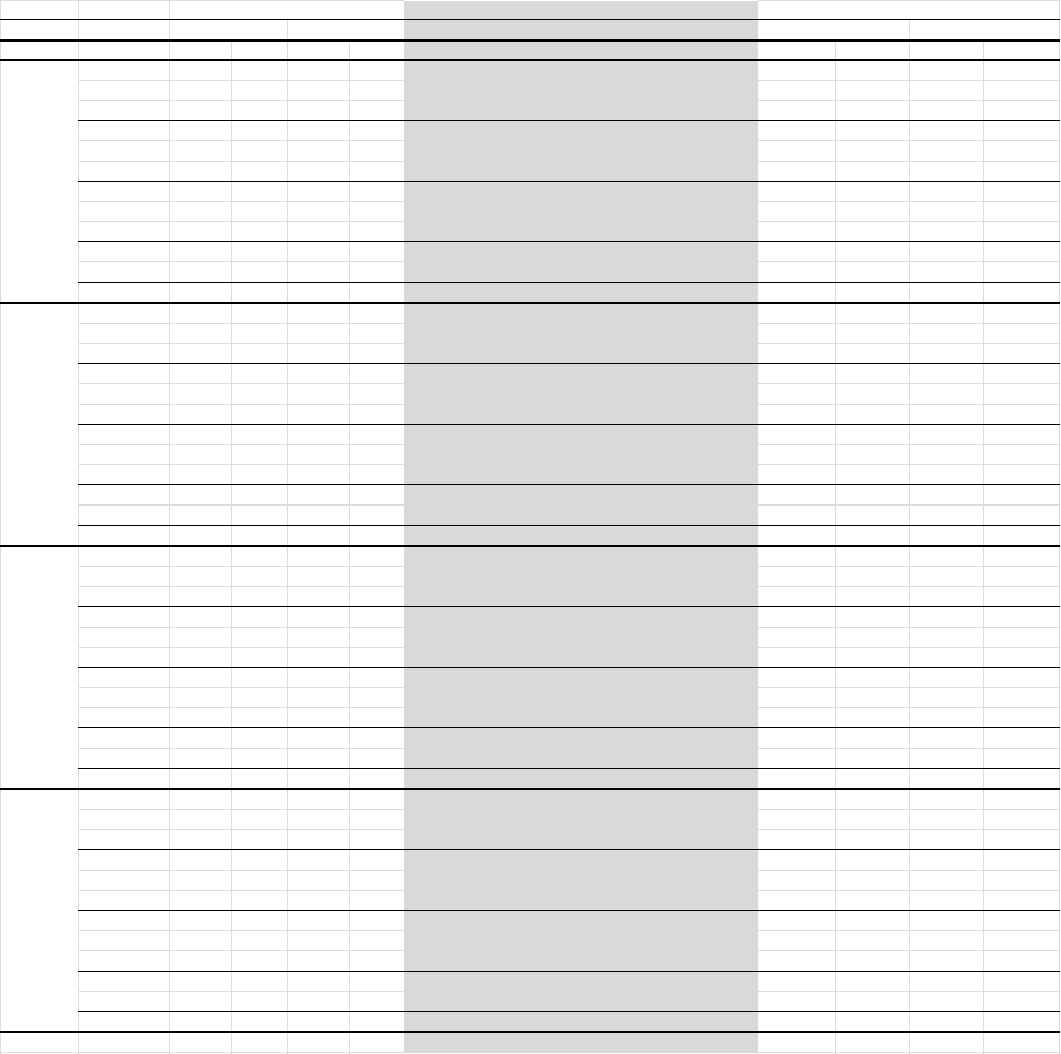
Energy Efficiency Report | 127
Table B-4a: 2013-2015 Statewide First Year Savings by Sector and End use
Sector End Use Reported
Evaluated
Reported
Evaluated
Reported Evaluated Reported Evaluated Reported Evaluated Reported Evaluated
Appliance 8 8 5 5 77,806 77,806 52,145 52,145 1,498 1,498 1,076 1,076
Food Service 10 10 6 6 44,318 44,318 28,807 28,807 28,975 28,975 18,834 18,834
HVAC 6,485 5,967 4,286 3,869 19,999,024 16,823,813 14,197,534 10,677,663 708,714 481,732 544,934 276,157
Indoor Lighting 5,150 4,629 3,705 2,715 29,932,350 30,170,852 21,428,527 17,564,287 (16,773) (17,899) (10,441) (11,847)
Other 1,387 752 907 429 4,006,884 2,528,020 2,610,217 1,432,261 - - - -
Outdoor Lighting
824 723 485 412 13,814,262 14,726,910 8,953,951 8,171,189 - - - -
Plug Loads 0 0 0 0 768 768 499 499 (4) (4) (2) (2)
Process 64,853 45,608 44,077 26,779 230,619,160 165,549,504 159,443,790 101,733,032 9,842,199 7,305,878 6,670,105 4,289,460
Refrigeration 3,790 2,584 2,774 1,493 30,548,325 21,875,614 21,982,751 12,741,297 4,189 2,886 2,723 1,616
Water Heating - - - - - - - - 7,898 7,898 5,133 5,133
Whole Building 1,965 1,823 1,013 645 6,091,140 5,014,634 4,070,305 2,247,033 263,907 263,907 52,689 52,689
Total 84,472 62,104 57,258 36,355 335,134,037 256,812,240 232,768,525 154,648,213 10,840,604 8,074,871 7,285,051 4,633,115
Appliance 1,598 1,572 1,038 1,012 15,863,367 15,742,825 10,801,949 10,704,669 254,730 152,723 147,306 100,018
Food Service 1,521 1,451 1,037 986 7,358,565 7,022,361 5,006,827 4,763,100 6,582,105 6,459,542 4,279,659 4,223,026
HVAC 117,122 100,418 89,583 72,857 658,125,345 484,494,268 493,691,586 325,398,743 16,121,623 10,551,347 11,961,065 6,642,687
Indoor Lighting 249,547 259,657 179,637 165,448 1,234,638,861 1,279,194,410 889,086,396 808,325,887 (3,771,537) (4,148,553) (2,686,125) (2,661,913)
Other 1,660 1,178 1,084 716 17,588,723 11,986,479 11,481,196 7,362,128 4,399,334 2,938,731 2,736,726 1,920,454
Outdoor Lighting
1,093 1,060 792 618 247,087,233 227,095,644 186,479,196 135,241,558 22,886 11,509 14,647 6,225
Plug Loads 2,418 2,046 1,584 1,322 30,841,778 26,798,379 20,361,857 17,657,899 (33,268) (30,990) (22,814) (21,342)
Process 15,195 9,083 10,698 5,207 126,523,675 77,727,736 89,022,897 44,232,416 10,429,907 7,869,472 6,546,303 4,779,042
Refrigeration 31,475 29,210 22,059 20,278 217,834,007 202,128,212 152,078,114 139,041,678 1,817,855 1,624,549 1,121,153 1,053,371
Water Heating 203 192 121 114 875,940 793,935 525,381 466,600 4,839,233 4,560,842 3,203,502 3,051,913
Whole Building 60,438 51,202 37,536 23,774 152,351,865 125,664,818 105,240,458 64,348,256 7,368,701 6,137,509 3,648,932 2,168,438
Total 482,269 457,067 345,170 292,332 2,709,089,360 2,458,649,067 1,963,775,857 1,557,542,935 48,031,568 36,126,682 30,950,355 21,261,920
Appliance 15 15 10 10 163,575 163,575 107,314 107,314 6,217 3,942 3,612 2,687
Food Service 19 19 12 12 90,468 90,468 58,804 58,804 38,517 27,461 22,506 18,237
HVAC 12,078 7,949 8,723 5,026 85,251,941 51,918,835 61,124,855 31,011,987 2,822,612 1,712,155 1,749,464 1,116,808
Indoor Lighting 14,089 13,169 10,759 8,391 67,877,552 65,069,124 51,827,857 40,195,629 (97,166) (98,129) (72,973) (67,548)
Other 355 184 233 98 1,638,741 1,043,000 1,080,128 557,865 3,479,938 1,977,295 1,915,909 1,275,887
Outdoor Lighting
218 214 144 129 13,682,386 12,677,223 10,615,337 7,129,449 - - - -
Plug Loads 6 6 4 4 19,008 19,008 12,355 12,355 507,774 269,079 279,267 166,826
Process 43,018 26,466 29,666 15,477 344,109,497 213,653,944 235,488,863 123,902,079 43,972,178 28,916,670 27,788,569 18,147,409
Refrigeration 3,073 1,804 2,148 1,034 25,128,159 15,164,962 17,181,318 8,751,524 375,251 205,061 208,405 135,953
Water Heating - - - - - - - - 106,848 87,541 64,783 56,080
Whole Building 2,750 2,324 1,382 911 7,190,992 6,675,056 4,068,123 3,220,833 352,125 318,069 107,872 83,803
Total 75,621 52,151 53,081 31,092 545,152,320 366,475,195 381,564,953 214,947,839 51,564,295 33,419,144 32,067,415 20,936,142
Appliance 52,757 52,757 32,566 32,575 234,709,858 234,709,858 143,604,264 143,621,989 1,147,702 1,147,702 486,984 489,007
Food Service (13) (13) (8) (8) (48,186) (48,186) (28,912) (28,912) 9,097 9,097 5,458 5,458
HVAC 64,175 64,070 48,638 48,231 77,540,932 74,117,534 58,395,891 55,733,183 1,721,049 1,725,341 1,069,007 1,048,364
Indoor Lighting 124,991 134,940 81,025 74,385 1,042,134,431 1,133,085,601 668,451,754 619,385,214 (18,797,116) (21,377,267) (11,996,767) (11,590,927)
Other 26,747 34,329 24,037 31,562 148,525,384 165,456,111 131,309,169 149,647,807 2,957,526 3,316,593 3,036,097 3,410,043
Outdoor Lighting
5 111 4 98 22,002,020 21,159,485 17,535,017 14,753,705 (665) (665) (572) (572)
Plug Loads 444 443 103 102 18,058,651 18,052,897 2,912,339 2,909,569 (439,546) (439,407) (69,175) (69,091)
Process 399 239 236 153 3,240,763 2,033,650 1,888,268 1,277,638 687 687 536 536
Refrigeration 695 695 568 568 2,716,933 2,716,330 2,189,586 2,188,746 (3,823) (3,823) (3,430) (3,430)
Water Heating 602 602 390 386 4,122,179 4,122,179 2,763,116 2,715,587 10,105,036 10,062,492 6,397,521 6,166,337
Whole Building 106,347 107,265 84,992 84,582 315,684,380 360,511,107 287,361,613 327,889,997 13,937,604 14,267,436 12,418,256 12,757,529
Total 377,149 395,437 272,552 272,635 1,868,687,344 2,015,916,566 1,316,382,105 1,320,094,524 10,637,553 8,708,186 11,343,915 12,213,254
Total ######## 966,759 728,061 632,414 5,458,063,060 5,097,853,068 3,894,491,440 3,247,233,510 121,074,019 86,328,882 81,646,736 59,044,431
Agriculture
Commercial
Industrial
Residential
Electric (kWh)
Demand (kW)
Natural Gas (MMTherms)
Gross
Net
Gross
Net
Gross
Net
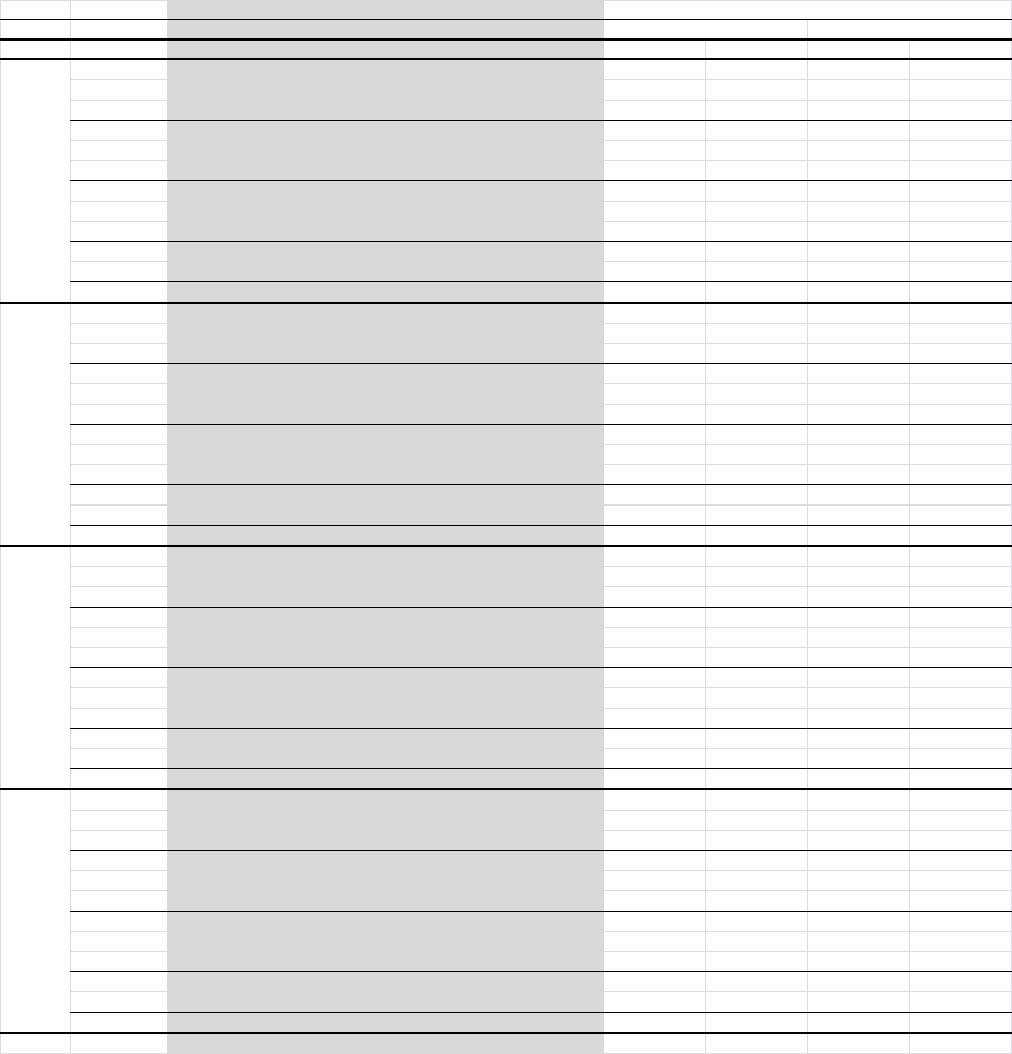
Energy Efficiency Report | 128
Table B-4b 2013-2015 Statewide Lifecycle Savings by Sector and End use
Sector End Use Reported Evaluated Reported Evaluated Reported Evaluated Reported Evaluated
Appliance 896,359 896,359 598,003 598,003 16,627 16,627 11,922 11,922
Food Service 531,816 531,816 345,680 345,680 347,700 347,700 226,005 226,005
HVAC 236,751,491 189,198,395 171,702,885 118,956,442 13,185,659 8,993,781 9,923,325 5,154,554
Indoor Lighting 274,703,559 257,910,255 198,138,096 144,094,981 (157,936) (155,044) (106,823) (103,794)
Other 70,013,630 39,786,585 45,594,989 21,965,446 - - - -
Outdoor Lighting 162,940,811 125,346,375 105,263,940 69,739,506 - - - -
Plug Loads 6,144 6,144 3,994 3,994 (29) (29) (19) (19)
Process 2,494,642,377 1,755,271,723 1,716,210,122 1,081,302,038 127,457,112 90,460,430 87,593,363 52,782,232
Refrigeration 450,761,421 312,085,145 326,569,082 182,699,085 67,046 46,183 43,580 25,861
Water Heating - - - - 96,852 96,852 62,954 62,954
Whole Building 72,245,624 53,757,972 58,702,822 28,797,604 791,722 791,722 158,067 158,067
Total 3,763,493,232 2,734,790,769 2,623,129,614 1,648,502,780 141,804,754 100,598,222 97,912,374 58,317,781
Appliance 149,513,052 147,730,194 100,068,251 98,674,129 3,398,025 2,059,712 1,970,684 1,332,764
Food Service 88,318,612 83,267,007 60,085,871 56,533,072 78,961,417 77,439,976 51,342,797 50,628,888
HVAC 8,288,945,990 6,053,250,268 6,093,966,830 4,105,766,542 177,027,927 119,485,695 123,474,160 74,812,867
Indoor Lighting 10,166,657,009 10,553,739,680 7,575,753,896 6,901,042,263 (29,985,562) (32,910,603) (22,111,720) (22,067,677)
Other 233,403,925 161,441,754 151,857,666 98,274,261 41,263,057 25,782,695 24,580,771 16,889,360
Outdoor Lighting 2,739,518,501 2,409,892,239 2,048,564,266 1,439,680,337 316,026 138,006 221,488 75,686
Plug Loads 147,055,934 129,007,735 97,175,647 85,272,718 (155,802) (146,688) (107,242) (101,354)
Process 1,491,759,019 902,568,152 1,036,096,968 510,137,517 145,071,836 104,945,401 90,411,220 64,173,941
Refrigeration 2,802,891,174 2,540,685,796 1,972,313,368 1,765,567,826 13,611,381 12,276,861 8,332,506 7,837,427
Water Heating 9,360,930 8,109,016 5,594,829 4,701,111 84,551,204 80,405,599 56,220,980 53,937,303
Whole Building 2,066,015,613 1,610,578,205 1,562,531,940 898,436,412 69,325,138 49,597,679 47,580,343 24,089,952
Total 28,183,439,760 24,600,270,046 20,704,009,534 15,964,086,187 583,384,647 439,074,333 381,915,988 271,609,155
Appliance 1,792,348 1,792,348 1,176,150 1,176,150 68,312 43,277 39,674 29,496
Food Service 1,085,616 1,085,616 705,650 705,650 535,574 369,480 310,430 245,605
HVAC 1,211,703,687 662,062,415 851,343,378 387,242,444 41,935,746 25,976,321 25,522,982 16,947,997
Indoor Lighting 767,739,079 747,105,918 588,433,901 464,204,854 (1,238,369) (1,219,325) (946,129) (843,342)
Other 26,777,375 16,222,511 17,584,168 8,548,026 41,417,197 23,393,759 22,795,606 15,054,135
Outdoor Lighting 163,210,679 143,781,390 125,738,555 80,739,742 - - - -
Plug Loads 152,064 152,064 98,842 98,842 3,554,333 1,812,363 1,954,812 1,123,644
Process 4,526,187,085 2,743,475,986 3,055,020,196 1,588,753,437 600,303,536 386,630,896 380,423,262 242,902,944
Refrigeration 368,979,458 196,263,879 252,504,186 112,202,380 5,568,108 3,021,368 3,085,714 2,008,603
Water Heating - - - - 1,850,204 1,444,336 1,109,362 922,999
Whole Building 88,973,409 80,123,623 57,676,210 43,666,169 2,022,532 1,472,625 915,387 532,983
Total 7,156,600,799 4,592,065,751 4,950,281,236 2,687,337,694 696,017,174 442,945,100 435,211,101 278,925,063
Appliance 1,726,646,967 1,726,646,967 1,055,684,130 1,055,855,846 26,555,102 26,555,102 13,843,452 13,866,304
Food Service (530,046) (530,046) (318,028) (318,028) 100,064 100,064 60,038 60,038
HVAC 782,547,422 759,908,332 581,162,037 561,518,962 31,235,084 31,358,475 19,189,245 18,808,187
Indoor Lighting 10,425,787,378 12,230,829,878 6,692,319,794 6,424,135,273 (190,769,590) (229,838,172) (122,028,986) (119,419,026)
Other 601,788,269 619,219,733 406,731,506 430,262,971 4,708,144 5,064,841 4,335,258 4,694,417
Outdoor Lighting 303,592,426 245,732,328 239,768,968 162,099,871 (9,997) (9,997) (8,698) (8,698)
Plug Loads 126,259,054 126,213,021 20,269,816 20,247,662 (3,075,767) (3,074,662) (483,377) (482,711)
Process 32,418,496 15,530,391 20,048,738 9,796,593 8,218 8,218 6,327 6,327
Refrigeration 38,535,143 38,525,192 30,941,254 30,931,712 (28,165) (28,165) (25,209) (25,209)
Water Heating 44,874,063 44,874,063 29,708,177 29,238,602 123,856,089 123,051,574 78,106,395 74,834,500
Whole Building 1,203,915,226 1,111,072,494 942,376,223 818,958,942 123,011,779 110,084,656 92,664,564 79,139,981
Total 15,285,834,399 16,918,022,352 10,018,692,615 9,542,728,407 115,590,961 63,271,935 85,659,009 71,474,109
Total 54,389,368,190 48,845,148,917 38,296,113,000 29,842,655,067 1,536,797,536 1,045,889,590 1,000,698,472 680,326,109
Agriculture
Commercial
Industrial
Residential
Electric (kWh)
Natural Gas (MMTherms)
Gross
Net
Gross
Net
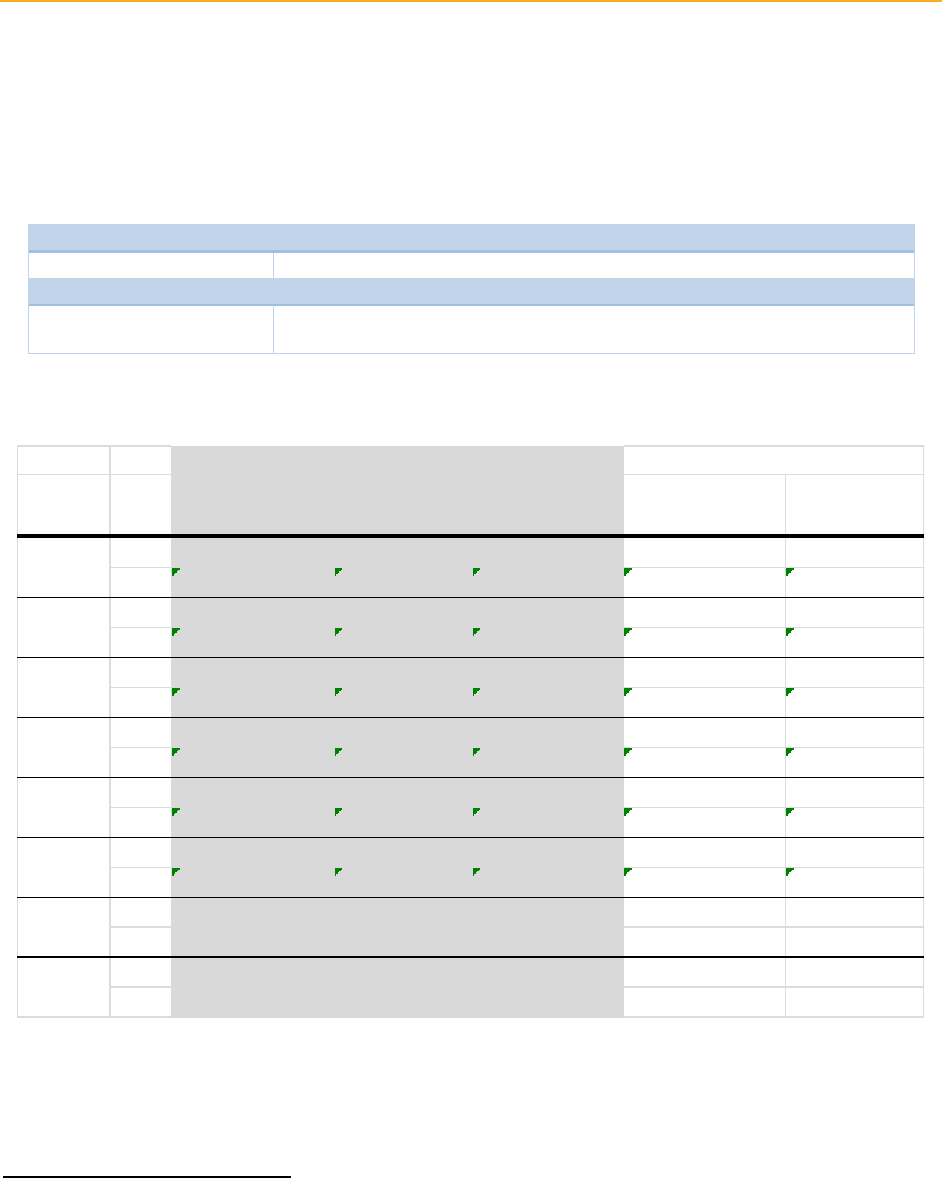
Energy Efficiency Report | 129
Appendix C: Emissions Reductions
An Excel file containing the data used in this appendix is available.
A key benefit of energy efficiency programs is the reduction in CO2, NOx, and particulate matter (PM-10)
emissions that would have otherwise occurred. The CPUC calculates avoided emissions from electric and gas
savings based on an emissions rate specific to type of installed efficient technology. The avoided emissions
factors for each technology are embedded in the cost effectiveness tools that Energy Division uses to
estimate portfolio impacts.
161
Electric:
ER[CO
2
]
M
= Emission rate of CO
2
in tons per kWh of measure
M
.
Gas:
ER[CO
2
]
GCT
= Emission rate of CO
2
in tons per therm, based on the gas combustion
type (GCT) specified on the input sheet for the measure.
Table C-1a: Evaluated First Year Emissions Reductions by Program Administrator
162
161
CPUC Energy Efficiency Policy Manual Version 5, p.50.
162
Note: CO2 is reported in 1,000 tons; NOx and PMs are reported in pounds.
PA
CO2
(1,000 tons)
Nox
(pounds)
PM10
(pounds)
CO2
(1,000 tons)
Nox
(pounds)
Gross 2,801,383 692,281 368,051 296,866 466,866
Net 1,625,680 400,528 213,738 241,447 376,391
Gross 2,940,289 727,911 386,136 (76,522) (120,342)
Net 1,686,812 419,567 221,274 (46,119) (73,135)
Gross 20,943 5,386 2,725 417,644 656,808
Net 12,803 3,296 1,665 209,408 329,678
Gross 634,914 155,688 83,569 9,843 15,480
Net 352,952 86,626 46,446 13,058 21,008
Gross 3,366 858 439 3,558 5,595
Net 2,184 556 285 2,737 4,163
Gross 975 236 129 222 349
Net 735 178 97 197 310
Gross 724 182 95 267 420
Net 434 110 57 163 234
Gross 6,401,871 1,582,359 841,049 651,611 1,024,756
Net 3,681,165 910,751 483,505 420,728 658,416
Portfolio
Electric
Gas
BAY
SCR
MCE
PGE
SCE
SCG
SDGE

Energy Efficiency Report | 130
PA
CO2
(1,000 tons)
Nox
(pounds)
PM10
(pounds)
CO2
(1,000 tons)
Nox
(pounds)
Gross 28,442,040 7,063,023 3,732,433 4,219,267 6,635,429
Net 15,533,308 3,827,769 2,030,981 2,607,448 4,100,603
Gross 30,662,933 7,609,187 4,024,554 (735,433) (1,156,579)
Net 17,229,551 4,280,414 2,250,456 (436,537) (686,519)
Gross 267,061 68,852 34,727 6,254,515 9,836,160
Net 166,649 43,030 21,662 2,912,704 4,580,663
Gross 6,782,174 1,665,464 892,384 177,913 279,794
Net 3,558,560 874,440 468,051 141,284 222,190
Gross 51,848 13,209 6,762 59,330 93,306
Net 36,288 8,765 4,487 45,090 70,911
Gross 12,026 2,915 1,587 3,028 4,761
Net 9,118 2,210 1,203 2,712 4,265
Gross 10,855 2,739 1,419 4,170 6,558
Net 5,780 1,672 864 2,389 3,758
Gross 66,228,938 16,425,391 8,693,867 9,982,789 15,699,429
Net 36,539,255 9,038,300 4,777,704 5,275,091 8,295,869
Electric
Gas
BAY
MCE
SCR
Portfolio
PGE
SCE
SCG
SDGE
Table C-1b: Evaluated Lifecycle Emissions Reductions by Program Administrator

Energy Efficiency Report | 131
Appendix D: Cost-Effectiveness Results
An Excel file containing the data used in this appendix is available.
The California Energy Efficiency Policy Manual defines cost effectiveness as “an indicator of the relative
performance or economic attractiveness of any energy efficiency investment or practice when compared to the costs of energy produced
and delivered in the absence of such an investment.
163
”
The CPUC requires that all energy efficiency portfolios provide positive net benefits based on two cost
effectiveness tests: the Total Resource Cost test (TRC) and the Program Administrator Cost test (PAC).
Since the TRC costs are generally greater than PAC costs, in practice this dual requirement results in the TRC
being the primary indicator of energy efficiency program cost effectiveness.
When looking at evaluated savings, every dollar invested in energy efficiency through the IOUs’ 2013-2015
energy efficiency programs, excluding savings from codes and standards, resulted in $0.87 in benefits through
the TRC test “lens,” and $1.28 in benefits based on the PAC test lens. The definition of each of these cost
effectiveness tests and how they are used to evaluate the cost effectiveness of the portfolio are discussed in
this appendix.
For this report, the SQL based cost effectiveness tool (CET_17.3.0) was used for the evaluated portfolio-
level analysis and cost effectiveness calculations. The CET calculates cost effectiveness on the portfolio and
programs using methodologies adopted in the California Standard Practice Manual – Economic Analysis of
Demand-Side Programs and Projects.
164
Cost effectiveness is calculated using lifecycle cost-benefit ratios to
produce total resource cost (TRC) and program administrator cost (PAC) ratios. These ratios are based on
the net present value of benefits, determined by avoided cost methodology
165
, divided by net present value of
costs.
Cost‐Effectiveness Tests
The TRC measures the net resource benefits to all ratepayers by combining the net benefits of the program to
participants and nonparticipants. The benefits are the avoided costs of the supply‐side resources that are
either avoided or deferred by the energy savings. The TRC costs encompass the cost of the measures or
equipment installed by the customer, as well as the costs incurred by the program administrator for both
resource and non‐resource program activities.
Benefits = Net Present Value of avoided costs of supply‐side resources avoided
TRC =
Costs = Net Present Value of Measure Costs paid by participants and program administrators
+ non-rebate costs incurred by program administrators
The PAC test measures program benefits in the same way the TRC test does. However, only those costs
incurred by the program administrator are included (i.e., measure costs paid by the participating customers are
not included).
163
Energy Efficiency Policy Manual, Version 4; p2, http://www.calmac.org/events/EE_Policy_Manual_v4_0.pdf
164
Available at http://www.cpuc.ca.gov/WorkArea/DownloadAsset.aspx?id=7741
165
Available at: https://ethree.com/public_projects/cpuc5.php

Energy Efficiency Report | 132
Benefits = Net Present Value of avoided costs of supply‐side resources avoided
PAC =
Costs = Net Present Value of all costs incurred by program administrators
This report provides portfolio- and program-level cost effectiveness estimates. It is difficult to disaggregate
the benefits and costs to specific measure or market sector levels in a meaningful way, so the lowest
granularity of cost-effectiveness calculations are done at the program level. Table D-1 presents the cost
effectiveness of the portfolios as a whole; program-level cost effectiveness results are provided in Tables D-4
through D-10. The costs included in the TRC test remove the measure costs to free‐rider participants, since
the benefits associated with those participants are excluded as well.
Table D-1: IOU Reported and Commission Evaluated Cost Effectiveness – with and without Codes &
Standards (C&S)
Cost Effectiveness of the 2013-2015 Programs
Energy efficiency program impact evaluations conducted by the CPUC do not include analysis of program or
measure costs or cost effectiveness. The cost effectiveness results presented in this appendix are calculated
based on the monetized benefits of the evaluated net energy savings, compared to the incentive and program
costs according to the California Standard Practice Manual. In D.12-11-015, the CPUC adopted a portfolio
level “market effects adjustment” of 5 percent across the board for the entire 2013-2014 portfolio cost
effectiveness calculation. This policy was carried through into 2015. D.14-10-046 also reduced the cost
effectiveness threshold for 2015 to account for budget changes thought to have an adverse effect on TRC,
and to discourage fund shifting within the portfolios in an effort to increase the TRC.
Context of the Results
The cost effectiveness rules that guide California energy efficiency planning and evaluation are outlined in
more detail in the California Standard Practice Manual. These rules are embedded in the cost effectiveness
IOU
CE Test
Benefit
(M$) Cost (M$) Ratio
Benefit
w/C&S
(M$)
Cost
w/C&S
(M$)
Ratio
(w/C&S)
Benefit
no C&S
(M$)
Cost no
C&S (M$)
Ratio-
no C&S
TRC 1,988 1,479 1.34 3,159 1,833 1.72 1,422 1,466 0.97
PAC 1,988 1,027 1.94 3,159 1,052 3.00 1,422 1,027 1.38
TRC 1,485 1,486 1.00 2,718 1,556 1.75 1,185 1,450 0.82
PAC 1,485 933 1.59 2,718 947 2.87 1,185 933 1.27
TRC 307 289 1.06 482 312 1.54 256 289 0.89
PAC 307 180 1.70 482 182 2.65 256 180 1.42
TRC 339 377 0.90 601 442 1.36 283 383 0.74
PAC 339 253 1.34 601 255 2.36 283 253 1.12
TRC 25 47 0.53 25 51 0.49 17 47 0.35
PAC 25 31 0.82 25 34 0.72 17 31 0.54
TRC 2 4 0.47 2 4 0.47 2 4 0.48
PAC 2 3 0.60 2 3 0.60 2 3 0.60
TRC 4 46 0.10 4 46 0.10 2 51 0.04
PAC 4 42 0.11 4 42 0.11 2 42 0.05
TRC 4,151 3,630 1.14 6,990 4,243 1.65 3,166 3,689 0.86
PAC 4,151 2,393 1.73 6,990 2,514 2.78 3,166 2,469 1.28
Evaluated
PGE
SCE
SCG
SDGE
Portfolio
BAY
MCE
SCR
Reported
Energy Efficiency Report | 133
calculators that are used for reporting program accomplishments and planning programs. The rules reflect
current Commission policy for assessment of the cost effectiveness of these program activities.
Certain limitations with incremental measure cost data affected the accuracy of the cost effectiveness
calculations presented here. These include data quality issues associated with program tracking data as well as
deemed estimates for incremental costs that are out of date and may have led to both over‐ and under‐
estimates of the incremental measure costs. The largest error has been corrected, as noted above, and
corrections at the measure level will be made in the future.
Likewise, the long-term savings benefits may not be accurately reflected by the simple extrapolation of first
year energy savings over the expected useful life of the technology. The “dual baseline” effects can both
over‐ and under‐estimate long‐term savings and consequently distort the real value of the resource. Dual
baselines were captured in the 2013-2015 cost effectiveness calculator and were modeled for the non-
residential lighting and other program areas where appropriate.
The benefits for these programmatic activities do not consider the potential long-term market effects of the
energy efficiency programs. Similarly, short term participant or non-participant spillover effects were not
included in the 2013-2015 program period but will be included in the 2013-2014 program cycle savings for
the first time. Long term market effects can include program effects on end user decision making (e.g.
changes in knowledge and awareness), trade ally practices (e.g., changes in product availability and marketing),
and changes in energy efficiency and product and service characteristics (e.g. changes in product costs and
features). The primary focus of the 2010‐2012 impact evaluations was on the estimation of the immediate and
direct impacts of the 2010‐2012 programs and the cost benefit calculations reflect those requirements. While
the inclusion of market‐driven effects could result in higher benefit‐cost (B/C) ratios it could also result in a
lower level of estimated net savings for utility programs even though total societal savings from both utility
program and market forces are significant.

Energy Efficiency Report | 134
Appendix E: Program Level Detail – Net Lifecycle kW, kWh, Therms
An Excel file containing the data used in this appendix is available.
Throughout the report, references to savings are referring to first year savings; however, measures continue to
provide savings throughout their useful lives. Tables showing the net lifecycle savings, kW, kWh and
Therms, cost effectiveness and emissions reductions for all programs measures installed in 2013-2015 and
lasting through 2035 are available in the Appendix E excel file.

Energy Efficiency Report | 135
Appendix F: Ex-Post Gross Lifecycle Savings by Sector, GWh, MMTherms
An Excel file containing the data used in this appendix is available.
Throughout the report, references to savings are generally referring to first year savings; however, measures
continue to provide savings throughout their useful lives. In particular, grid planning activities are informed
by understanding the full lifetime impact of all energy efficiency savings, not just the savings attributable to
program administrator efforts. The following graphics show evaluated gross lifetime savings (GWh, and
Therms) for energy efficiency measures installed between 2006-2015 and the total impacts of installed energy
efficiency through 2035.
Figure F-1a: Statewide Ex Post Gross Lifecycle Savings (GWh) 2006-2015
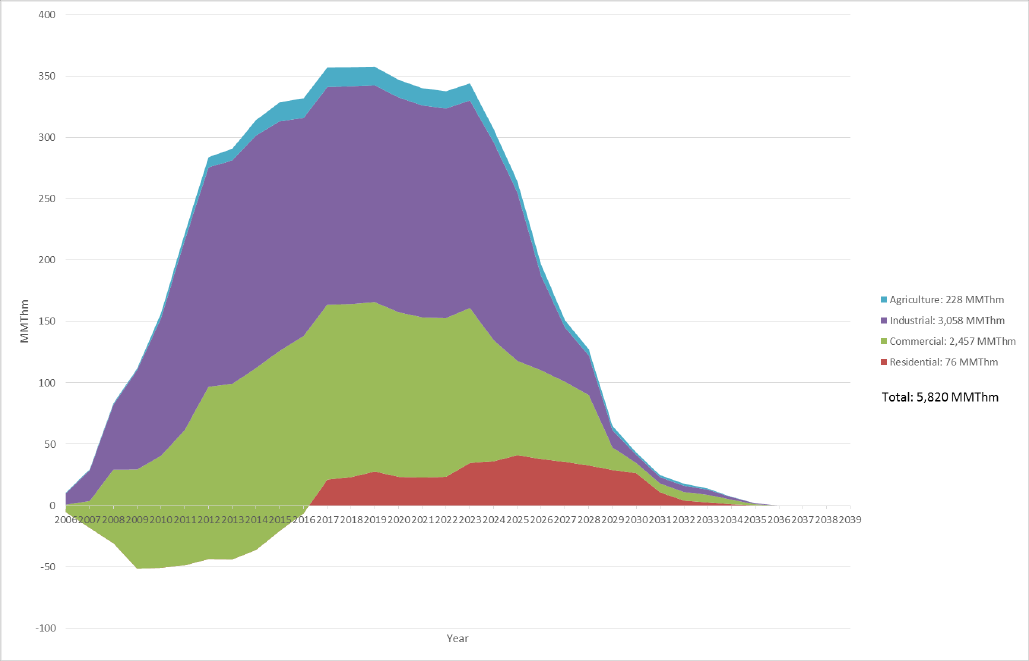
Energy Efficiency Report | 136
Figure F-1b: Statewide Ex Post Gross Lifecycle Savings (MM Therms) 2006-2015
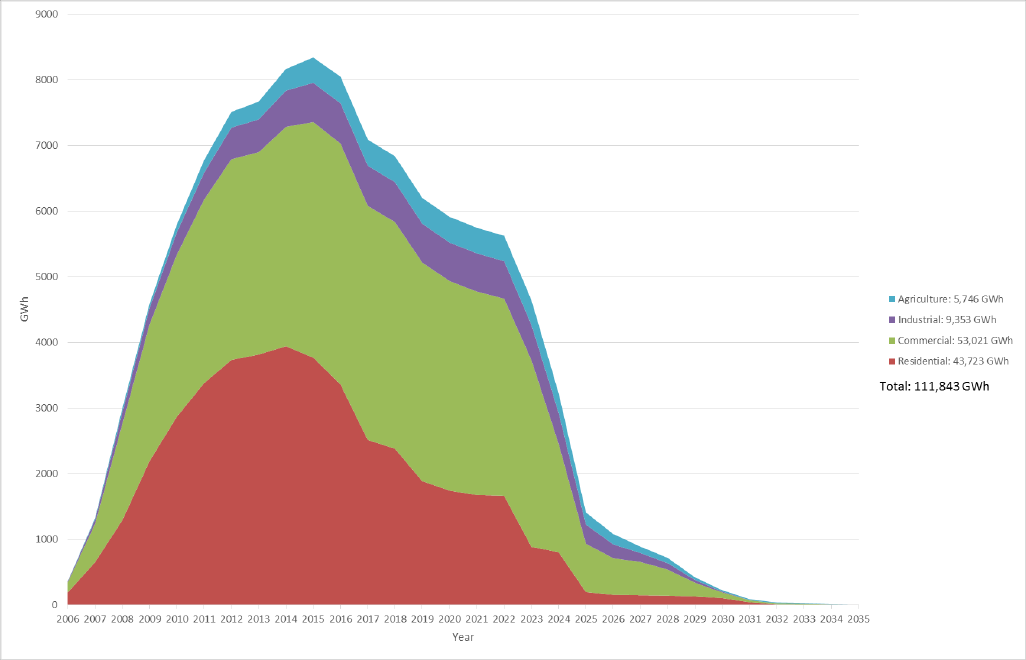
Energy Efficiency Report | 137
Figure F-2a: PG&E Ex Post Gross Lifecycle Savings (GWh) by Sector 2006-2015
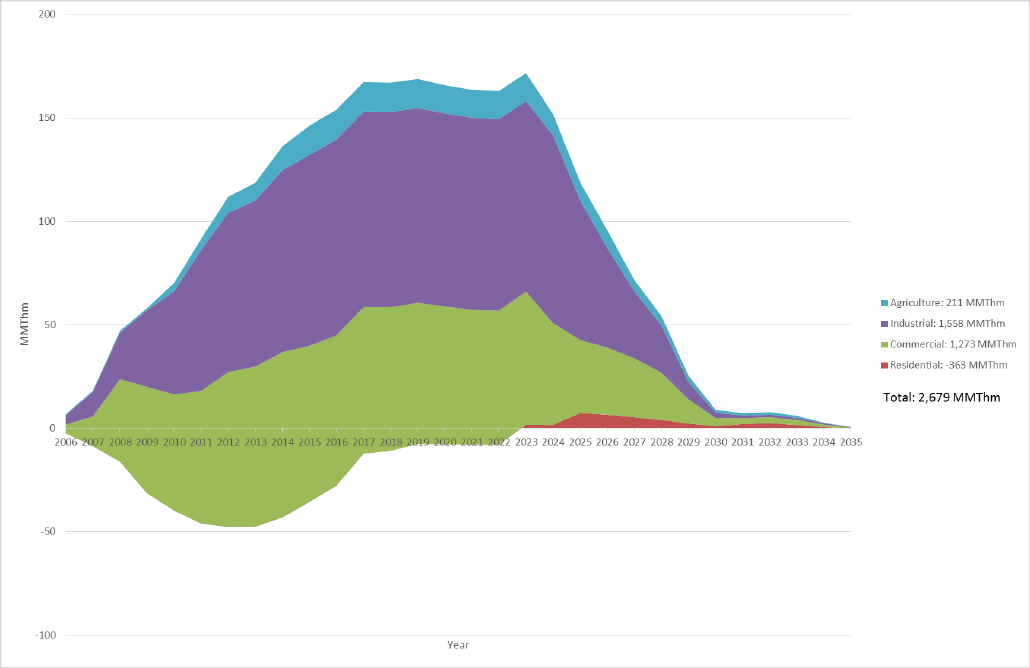
Energy Efficiency Report | 138
Figure F-2b: PG&E Ex Post Gross Lifecycle Savings (MM Therms) by Sector 2006-2015

Energy Efficiency Report | 139
Figure F-3: SCE Ex Post Gross Lifecycle Savings (GWh) 2006-2015

Energy Efficiency Report | 140
Figure F-4: SoCalGas Ex Post Gross Lifecycle Savings (MM Therms) 2006-2015

Energy Efficiency Report | 141
Figure F-5a: SDG&E Ex post Gross Lifecycle Savings (GWh) 2006-2015

Energy Efficiency Report | 142
Figure F-5b: SDG&E Ex Post Gross Lifecycle Savings (MM Therms) 2006-2015

Energy Efficiency Report | 143
Appendix G: Processing and Updating Utility Claim Data with Evaluation
Results Data
The energy efficiency program tracking data forms the basis for program reporting and for evaluation studies.
Over the course of the 2013-2015 program cycle, the CPUC and the PAs collected all reported savings values
in a set of relational tables that were referenced by quarterly PA claims. This data set is the foundation for
the values in this report. It was compared and reconciled against the monthly and annual savings reports
submitted by the PAs.
Working closely with Energy Division staff and consultants throughout the 2013-2015 program cycle, the
PAs were able to submit standardized quarterly claims data along with corresponding ex-ante data tables.
Despite improvements to standardization, the central data set still required some level of manual data
cleaning to enable processing through the cost effectiveness tool.
166
The steps for cleaning and processing
the PA submitted data are described in this appendix.
Preparation of PA Quarterly Tracking Data for Reporting
Each quarter of the calendar year, the following steps are performed to process PA reported savings data.
Figure G-1 is an illustration of the process.
PA Claim Submissions (CPUC)
Step 1. Receive FTP link to download data from PAs
Step 2. Write PA data together into standardized tables
Step 3. Join claim tables to the ex-ante database for deemed claims; write data into “EDFilled” table
Step 4. Quality check the data submission
Step 5. Post PA data submissions and “EDFilled” table onto ED Central Server (EDCS) and into
SQL Server database
Evaluation Results Submissions (CPUC)
Step 1. Post impact evaluation report specific databases to EDCS SmartFile for evaluation teams
Step 2. Evaluation team posts filled out claim-level evaluation data submission to EDCS SmartFile
Step 3. Quality check individual data submissions and iterate with evaluation teams
Step 4. Read together all evaluation results and create 13-15 ATR Evaluation SQL Server database
Cost Effectiveness Run (CPUC)
Step 1. Run EDFilled and Evaluation table through the Cost Effectiveness Tool (CET)
166
Subsequent to the 2013-2015 program cycle, the Energy Division developed a customized software to automatically enforce data
rules for quarterly claims and monthly reports; this is known as the California Energy Data and Reporting System (CEDARS).
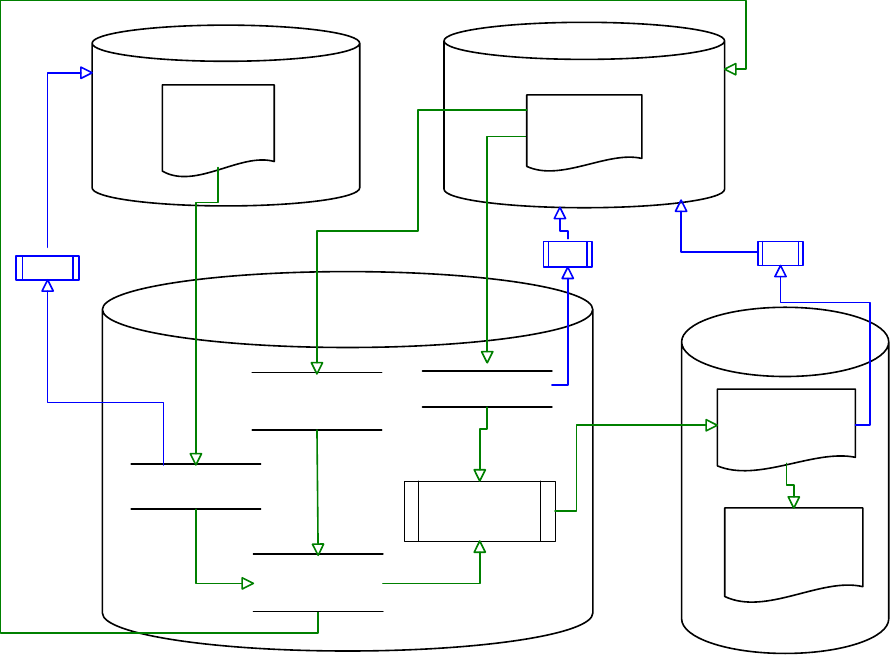
Energy Efficiency Report | 144
Step 2. Write CET results into SQL Server database
Step 3. Validate and quality check CET results against SQL savings calculations
Report Preparation (CPUC)
Final step. Summarize data to produce result sets for Energy Division staff to use in evaluated
program cycle reporting.
Figure G-1: Claims Processing
ED
database
Evaluation teams
PAs
ED Summary
Report
PA claim tables
evaluation
Evaluation
results
Annual claims
submission
2013-2015
Data Summaries
QC
QC
QC
EDFilled
Mapping tables
Cost
Effectiveness
Tool
ED 13-15 final
summary report
Data Cleaning
Data elements such as Target Sector, Climate Zone, Costs, and other parameters that were necessary for
evaluation and for cost-effectiveness calculations were cleaned by CPUC evaluation contractors in
conjunction with PA staff. Throughout the cycle, the amount of data cleaning necessary was continuously
reduced as PAs improved their reporting capabilities. The result of the data cleaning process was a table
named “EDFilled,” which contains all cleaned ex-ante PA data necessary to run through the CET.

Energy Efficiency Report | 145
Validation and Quality Control
The main component of the Energy Division’s data cleaning process was a quality control algorithm. All
quality control algorithms were communicated to the PAs via the Data Transfer Tool, a Microsoft Access file
that the PAs use to transfer their quarterly tracking data to the Energy Division. The PAs also use this file to
perform quality control on their own data before transferring. The end-product was a clean, consistent data
set of claims that were ready for evaluation sampling, update, and CET processing. The link to this tool on
EEStats is:
http://eestats.cpuc.ca.gov/EEGA2010Files/GuidanceDocuments/Claim_Tables_2015_Q1_revised2015060
2.zip

Energy Efficiency Report | 146
Appendix H: Evaluation Decision Framework
Commission staff used the quarterly tracking data as the foundation for prioritizing evaluation activities and
applying updates from evaluation work. The 2013-2015 ESPI impact evaluation reports carried out CPUC
staff’s guidance to make updates to the claims on a savings realization rate basis. CPUC staff and evaluation
contractors used the following options in making updates to the PA savings claims:
1. Pass through: provide no update to reported savings values for claims that do not fall within the frame of
an impact evaluation (no change)
2. Apply results from the 2013-2015 impact evaluation studies: Apply evaluation report provided claim level
results to records included in the frame of an impact evaluation.
The decision tree in Figure H1 illustrates how CPUC staff partitioned claims for the purposes of resource
program savings evaluation results application. The figure is based upon section 7 of D.13-09-023.
Impact Evaluation Reports
Impact evaluation reports were submitted by the two main evaluation contractors, DNV-GL and Itron, but
also included other subcontractors, Apex Analytics and ERS. Each final evaluation report was reviewed and
vetted via the public review process and the final numbers were provided to the data processing team.
Evaluation impact results are summarized and uploaded to the Energy Division SmartFile data repository and
downloaded and processed into the SQL Server database on the Energy Division Central Server (EDCS).
EDCS is an internal server used to manage the data. It is not accessible to the public. Table lists all impact
evaluations by year and provides links to download each report.
Table H-1: Impact Evaluation Reports by Program Year(s) Studied
Program
Year(s)
Impact Evaluation Reports
2013
2013 Custom Impact Evaluation Industrial, Agricultural, and Large Commercial
2013 Nonresidential Downstream Custom ESPI Lighting Impact Evaluation Report
2013 Nonresidential Downstream Deemed ESPI Net-to-Gross Evaluation For Sprinkler and
Pipe Insulation Measures
2013 Nonresidential Downstream Deemed Lighting Impact Evaluation Report
2013 PG&E Home Energy Reports Program Review and Validation of Impact Evaluation
ED Res 3.1
IALC4 NRNC Whole Building Impact Evaluation Report PY-2013
SDG&E Home Energy Reports Program 2013 Impact Evaluation ED Res 3.3
2014 Custom Impact Evaluation Industrial, Agricultural, and Large Commercial
2014
2014 Nonresidential Downstream Custom ESPI Lighting Impact Evaluation Report
2014 Nonresidential Downstream Deemed ESPI Lighting Impact Evaluation Report
2014 Nonresidential Downstream Deemed ESPI pipe Insulation Impact Evaluation Report
2014 Nonresidential Downstream Deemed Plug Load PC Power Management Software
ESPI Impact Evaluation Report
2014 Nonresidential Downstream Deemed ESPI Low-Pressure Sprinkler Nozzle Impact
Evaluation Report
Impact Evaluation of 2014 San Diego Gas & Electric Home Energy Reports Program (Final
Report)

Energy Efficiency Report | 147
Review and Validation of 2014 Pacific Gas and Electric Home Energy Reports Program
Impacts (Final Report)
Review and Validation of 2014 Southern California Edison Home Energy Reports Program
Impacts (Final Report)
2013-2014 Residential Roadmap Multifamily Focused Impact Evaluation - Final
2013-2014
Focused Impact Evaluation of the 2013-2014 Home Upgrade Program
Impact Evaluation of 2013-14 Upstream and Residential Downstream Lighting Programs
Impact Evaluation of 2013-2014 SDG&E Residential VSD Pool Pump Program
Net-to-gross Evaluation of 2013-14 Commercial Quality Maintenance Programs (HVAC3)
Net-to-gross Evaluation of 2013-14 Upstream HVAC Programs (HVAC 1)
2013-2015 Residential Roadmap 2015 Multifamily Focused Impact Evaluation Report
2015
2015 Custom Impact Evaluation Industrial, Agriculture and Large Commercial
2015 Nonresidential Downstream ESPI Deemed Pipe Insulation Impact Evaluation
2015 Nonresidential Downstream ESPI Deemed Pool Cover Impact Evaluation
2015 Nonresidential Downstream ESPI Deemed Sprinkler Impact Evaluation
2015 Nonresidential ESPI Custom Lighting Impact Evaluation
2015 Nonresidential ESPI Deemed Lighting Impact Evaluation
2015 SCE HEES Impact Evaluation
2015 Single-family Home Energy Upgrade Impact Evaluation*
2015 Upstream and Residential Downstream Lighting Programs
Impact Evaluation of 2015 Commercial Quality Maintenance Programs (HVAC3)
Impact Evaluation of 2015 San Diego Gas & Electric Home Energy Reports Program (Final
Report)
Impact Evaluation of 2015 Upstream HVAC Programs (HVAC 1)
Review and Validation of 2015 Pacific Gas and Electric Home Energy Reports Program
Impacts (Final Report)
Review and Validation of 2015 Southern California Edison Home Energy Reports Program
Impacts (Final Report)
As mentioned above, the main driver for impact evaluations during the 2013-2015 program years was the
ESPI mechanism. The two portions of the ESPI Ex-Post Savings Incentive were the Ex-Post Custom and
Ex-Post Deemed. The Ex-Post Deemed portion of the portfolio is identified by the Uncertain Measure List,
which was constant for 2013-2014, but changed in 2015 and will change each year moving forward. The
following table list the ESPI Ex-Post classification grouping, the Uncertain Measures defined for each
program year, and each ESPI impact evaluation report that provided evaluation results for this classification.
Table H-2: Ex-Post Targeted ESPI Classifications and Uncertain Measures and Evaluation Reports
Program
Year(s)
ESPI
Ex-Post
Class
Uncertain
Measure
Impact Evaluation Report(s)
2013-
2014
ESPI
Ex-Post
Custom
NA
2013 Nonresidential Downstream Custom ESPI Lighting Impact
Evaluation Report
2014 Nonresidential Downstream Custom ESPI Lighting Impact
Evaluation Report
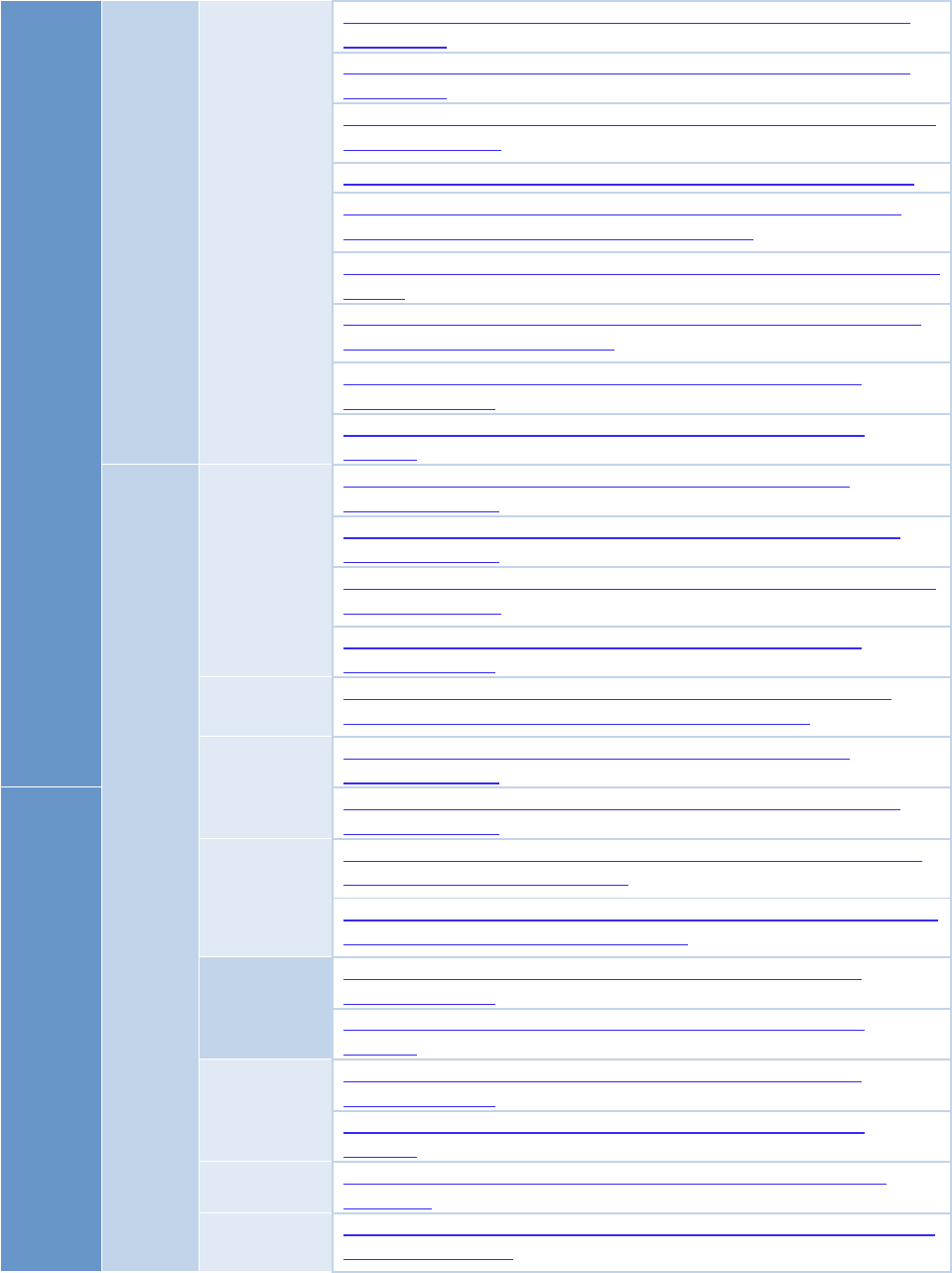
Energy Efficiency Report | 148
2013 Custom Impact Evaluation Industrial, Agricultural, and Large
Commercial
2014 Custom Impact Evaluation Industrial, Agricultural, and Large
Commercial
Impact Evaluation of 2013-14 Upstream and Residential Downstream
Lighting Programs
IALC4 NRNC Whole Building Impact Evaluation Report PY-2013
Review and Validation of 2014 Southern California Edison Home
Energy Reports Program Impacts (Final Report)
SDG&E Home Energy Reports Program 2013 Impact Evaluation ED
Res 3.3
Impact Evaluation of 2014 San Diego Gas & Electric Home Energy
Reports Program (Final Report)
2013-2014 Residential Roadmap Multifamily Focused Impact
Evaluation - Final
Focused Impact Evaluation of the 2013-2014 Home Upgrade
Program
ESPI
Ex-Post
Deemed
CFL
2013 Nonresidential Downstream Deemed Lighting Impact
Evaluation Report
2014 Nonresidential Downstream Deemed ESPI Lighting Impact
Evaluation Report
Impact Evaluation of 2013-14 Upstream and Residential Downstream
Lighting Programs
2013-2014 Residential Roadmap Multifamily Focused Impact
Evaluation - Final
Computer
Power Mgt
2014 Nonresidential Downstream Deemed Plug Load PC Power
Management Software ESPI Impact Evaluation Report
De-lamping
2013 Nonresidential Downstream Deemed Lighting Impact
Evaluation Report
2014 Nonresidential Downstream Deemed ESPI Lighting Impact
Evaluation Report
Home
Energy
Reports
2013 PG&E Home Energy Reports Program Review and Validation
of Impact Evaluation ED Res 3.1
Review and Validation of 2014 Pacific Gas and Electric Home Energy
Reports Program Impacts (Final Report)
Home
Energy
Surveys
2013-2014 Residential Roadmap Multifamily Focused Impact
Evaluation - Final
Focused Impact Evaluation of the 2013-2014 Home Upgrade
Program
Home
Energy
Upgrade
2013-2014 Residential Roadmap Multifamily Focused Impact
Evaluation - Final
Focused Impact Evaluation of the 2013-2014 Home Upgrade
Program
HVAC Mini
Net-to-gross Evaluation of 2013-14 Upstream HVAC Programs
(HVAC 1)
HVAC
Quality
Net-to-gross Evaluation of 2013-14 Commercial Quality Maintenance
Programs (HVAC3)

Energy Efficiency Report | 149
LED
2013 Nonresidential Downstream Deemed Lighting Impact
Evaluation Report
2014 Nonresidential Downstream Deemed ESPI Lighting Impact
Evaluation Report
Impact Evaluation of 2013-14 Upstream and Residential Downstream
Lighting Programs
2013-2014 Residential Roadmap Multifamily Focused Impact
Evaluation - Final
LED
Nightlights
Impact Evaluation of 2013-14 Upstream and Residential Downstream
Lighting Programs
Occupancy
2013 Nonresidential Downstream Deemed Lighting Impact
Evaluation Report
2014 Nonresidential Downstream Deemed ESPI Lighting Impact
Evaluation Report
Impact Evaluation of 2013-14 Upstream and Residential Downstream
Lighting Programs
2013-2014 Residential Roadmap Multifamily Focused Impact
Evaluation - Final
Pipe
Insulation
2013 Nonresidential Downstream Deemed ESPI Net-to-Gross
Evaluation For Sprinkler and Pipe Insulation Measures
2014 Nonresidential Downstream Deemed ESPI Pipe Insulation
Impact Evaluation Report
Pool Pumps
Impact Evaluation of 2013-2014 SDG&E Residential VSD Pool
Pump Program
Sprinklers
2013 Nonresidential Downstream Deemed ESPI Net-to-Gross
Evaluation For Sprinkler and Pipe Insulation Measures
2014 Nonresidential Downstream Deemed ESPI Low-Pressure
Sprinkler Nozzle Impact Evaluation Report
T5 Linear
Fluorescents
2013 Nonresidential Downstream Deemed Lighting Impact
Evaluation Report
2014 Nonresidential Downstream Deemed ESPI Lighting Impact
Evaluation Report
Impact Evaluation of 2013-14 Upstream and Residential Downstream
Lighting Programs
Water Kits
2013-2014 Residential Roadmap Multifamily Focused Impact
Evaluation - Final
2015
ESPI
Ex-Post
Custom
NA
2015 Nonresidential ESPI Custom Lighting Impact Evaluation
Impact Evaluation of 2015 Commercial Quality Maintenance
Programs (HVAC3)
2015 Custom Impact Evaluation Industrial, Agriculture and Large
Commercial
Review and Validation of 2015 Southern California Edison Home
Energy Reports Program Impacts (Final Report)
Impact Evaluation of 2015 San Diego Gas & Electric Home Energy
Reports Program (Final Report)

Energy Efficiency Report | 150
2013-2015 Residential Roadmap 2015 Multifamily Focused Impact
Evaluation Report
2015 Single-family Home Energy Upgrade Impact Evaluation*
ESPI
Ex-Post
Deemed
CFL > 30W
2015 Nonresidential ESPI Deemed Lighting Impact Evaluation
2015 Upstream and Residential Downstream Lighting Programs
De-lamping
2015 Nonresidential ESPI Deemed Lighting Impact Evaluation
Home
Energy
Reports
Review and Validation of 2015 Pacific Gas and Electric Home Energy
Reports Program Impacts (Final Report)
Home
Energy
Survey
2015 SCE HEES Impact Evaluation
Home
Energy
Upgrade
2015 Single-family Home Energy Upgrade Impact Evaluation*
HVAC Mini
Impact Evaluation of 2015 Upstream HVAC Programs (HVAC 1)
HVAC
Quality
Impact Evaluation of 2015 Commercial Quality Maintenance
Programs (HVAC3)
2013-2015 Residential Roadmap 2015 Multifamily Focused Impact
Evaluation Report
LED
2015 Nonresidential ESPI Deemed Lighting Impact Evaluation
2015 Upstream and Residential Downstream Lighting Programs
2013-2015 Residential Roadmap 2015 Multifamily Focused Impact
Evaluation Report
LED
Outdoor
2015 Nonresidential ESPI Deemed Lighting Impact Evaluation
2013-2015 Residential Roadmap 2015 Multifamily Focused Impact
Evaluation Report
LED
Streetlights
2015 Nonresidential ESPI Deemed Lighting Impact Evaluation
Occupancy
Sensors
2015 Nonresidential ESPI Deemed Lighting Impact Evaluation
2013-2015 Residential Roadmap 2015 Multifamily Focused Impact
Evaluation Report
Pipe
Insulation
2015 Nonresidential Downstream ESPI Deemed Pipe Insulation
Impact Evaluation
Pool Covers
2015 Nonresidential Downstream ESPI Deemed Pool Cover Impact
Evaluation
Sprinklers
2015 Nonresidential Downstream ESPI Deemed Sprinkler Impact
Evaluation
Water Kits
2013-2015 Residential Roadmap 2015 Multifamily Focused Impact
Evaluation Report
In contrast to prior program cycles, evaluation results data for the 2013-2015 program cycle were provided by
the lead evaluators in a similar format to that provided by the PAs. First, the claims data for each program
year was partitioned into separate impact evaluation reports. Next, impact evaluation teams were responsible

Energy Efficiency Report | 151
for providing claim level results to the data processing team using a standardized template. The data
processing team performed many quality checks, however, in addition, the standardized data template was
used for automated generation of the Impact Evaluation Standardized Reporting (IESR) appendices printed
in each impact evaluation report. These appendix tables served as a quality check for the impact evaluation
teams. This information is used to generate the ex-post dataset.
The final processing step covers submission of all raw and processed evaluation data, analysis and processing
code, and field tracking data to the online Energy Division data library. The data library is maintained by
Energy Division for future reference for evaluation activities and for savings estimation analysis (i.e. ex ante
values for work papers or DEER updates).
Creation of Ex-Post Dataset
The payments from the ESPI mechanism are driven by a combined 2013-2015 ex post dataset. This dataset
contains both ex ante and ex post savings values as well as all parameters necessary for their calculations. The
basis of the ex post dataset are the quarterly tracking data claims (described in detail in Appendix G). Once
the claims have been submitted by the PAs to the CPUC, and passed all quality control checks, they form the
ex ante portion of the ex post database. The ex post portion of the dataset is provided by the previously
mentioned ex post evaluations. These ESPI impact evaluation reports, overseen by the CPUC, were
performed on custom measures and specific deemed measures with uncertain ex ante parameter values.
Each ex ante claim submitted throughout 2013-2015 was assigned to an individual impact evaluation report
where appropriate. Each claims subject to ex post evaluation was assigned to exactly one evaluation report.
Then an impact evaluation specific database was generated and posted to Energy Division Central Server
(EDCS) Smartfile for each evaluation teams to fill out claim level evaluation results. These databases were
filled out by evaluators, and posted in return on EDCS Smartfile. All databases complete with ex post results,
were then downloaded and run through iterative and through quality control checks to verify consistent and
accurate results. All impact evaluation specific databases are combined with each other and those claims not
subject to ex post evaluation to create a final ex post database.
Each claim was identified as either being available for ex post evaluation or not. The following decision tree
shows how ED staff determined the situations in which a claim was classified.
Figure H-1: Evaluation Framework Decision Tree
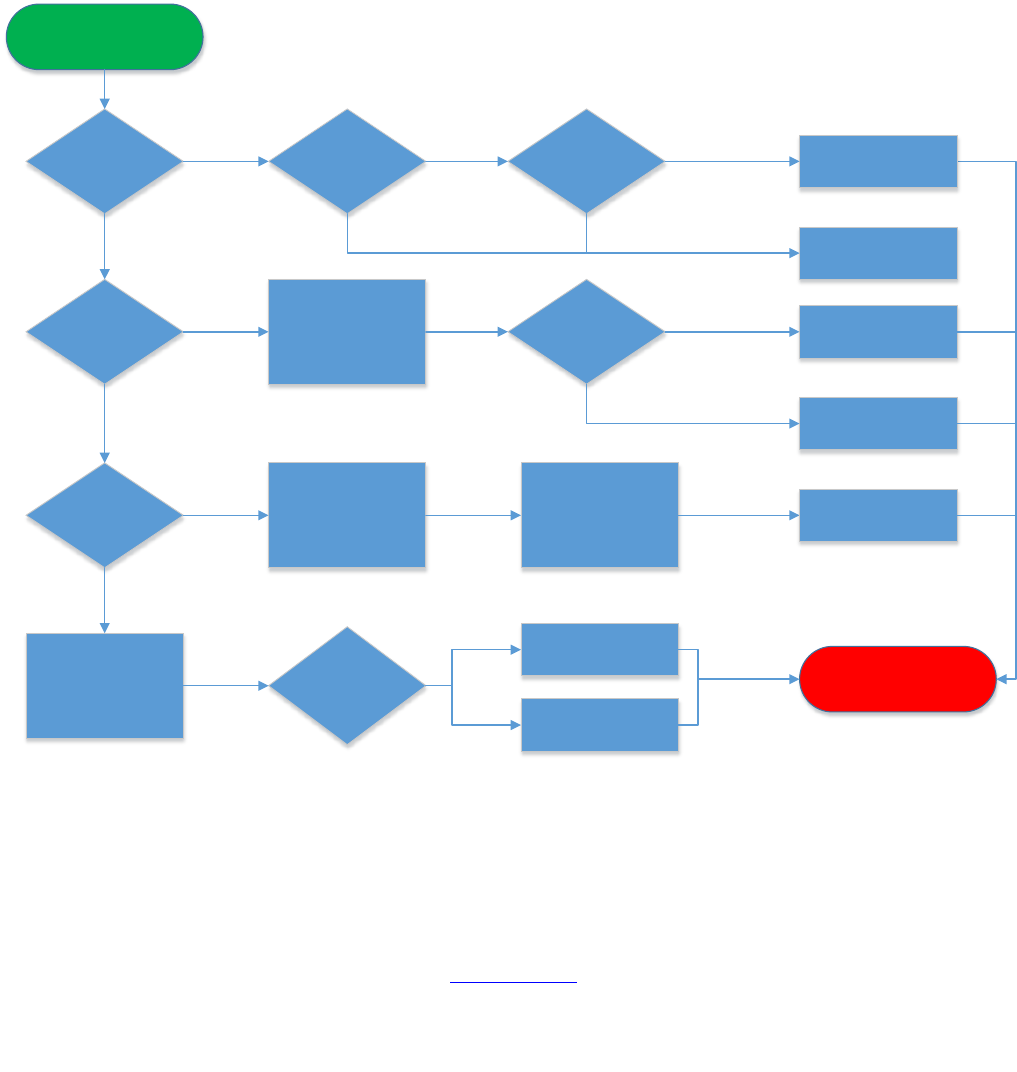
Energy Efficiency Report | 152
Impact Evaluation Reports
Evaluation reports were submitted by the two main evaluation teams, DNV-GL and Itron, including other
subcontractors, Apex Analytics and ERS. Approximately, 12 impact evaluations submitted results per year for
the 13-15 program cycle. Each final evaluation report was reviewed and vetted via the public review process
and the final numbers were provided to the data processing team. Evaluation impact results are summarized
and uploaded to the Energy Division SmartFile data repository and downloaded and processed into the SQL
Server database on the Energy Division Central Server (EDCS) an internal server (not publicly available) used
to manage the data. Table lists all impact evaluations for which results were integrated into the portfolio
claim level savings and provides links to download each report.
Table H-3: Impact Evaluation Reports by Program Year(s) Studied
Start
IOU Claim?
Deemed Measure?
Deemed Uncertain
Measure List?
Apply Eval Results
Retain Ex Ante Values,
i.e. Pass Thru
End
Deemed Ex Ante Savings
Incentive
Part of
Eval Population?
Apply Eval Results
Retain Ex Ante Values,
i.e. Pass Thru
Deemed Ex Post Savings
Incentive
Part of
Eval Population?
Yes
Yes
Yes
Yes
No
No
No
Yes
No
No
Ex-Ante Adjustments
Performed
Custom Ex Post Savings
Incentive
Multi-Family REN?
Retain Ex Ante Values,
i.e. Pass Thru
Part of
Eval Population?
Apply Eval Results
Retain Ex Ante Values,
i.e. Pass Thru
Yes
No
Yes
No
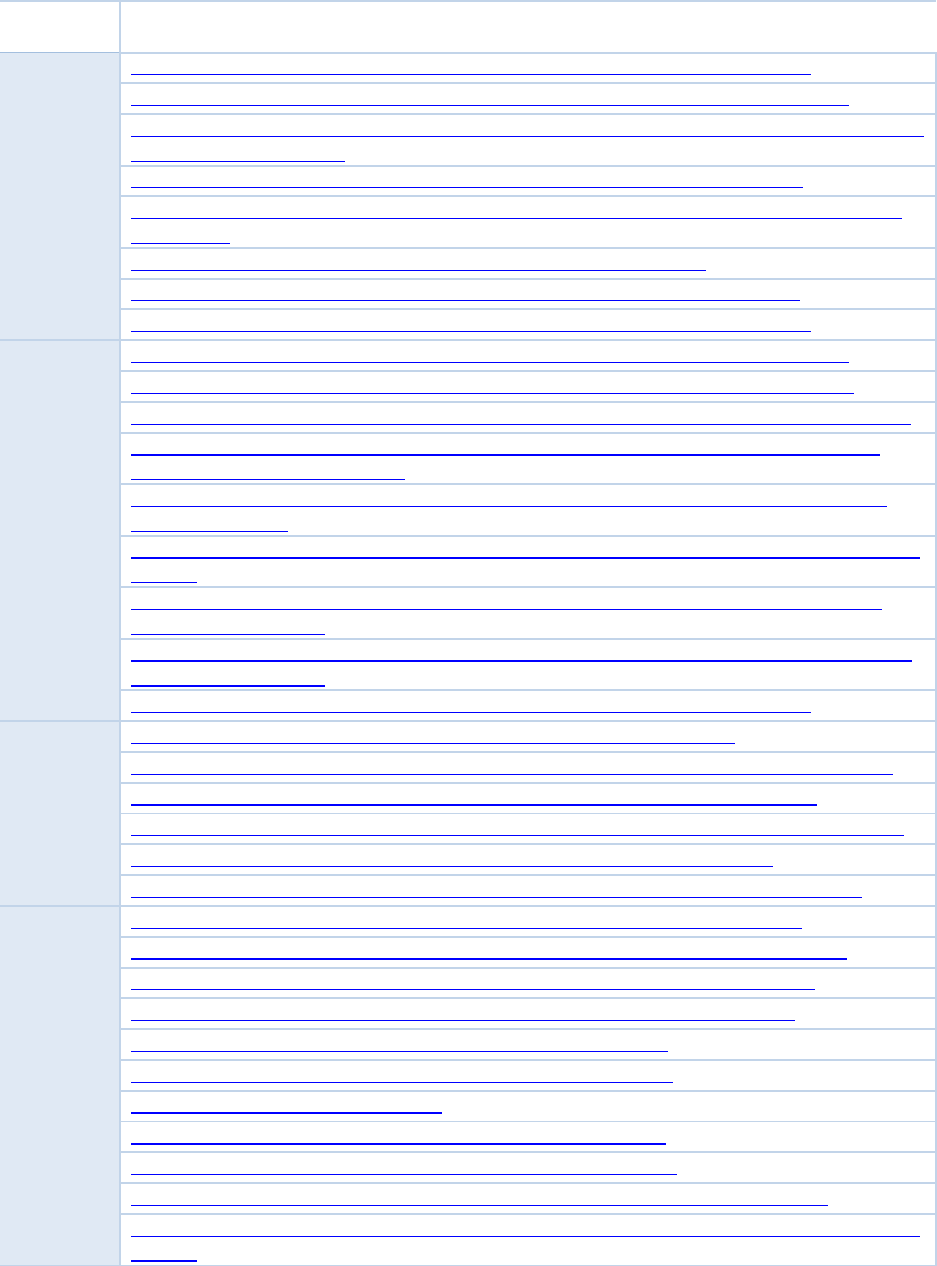
Energy Efficiency Report | 153
Program
Year(s)
Impact Evaluation Reports
2013
2013 Custom Impact Evaluation Industrial, Agricultural, and Large Commercial
2013 Nonresidential Downstream Custom ESPI Lighting Impact Evaluation Report
2013 Nonresidential Downstream Deemed ESPI Net-to-Gross Evaluation For Sprinkler and
Pipe Insulation Measures
2013 Nonresidential Downstream Deemed Lighting Impact Evaluation Report
2013 PG&E Home Energy Reports Program Review and Validation of Impact Evaluation
ED Res 3.1
IALC4 NRNC Whole Building Impact Evaluation Report PY-2013
SDG&E Home Energy Reports Program 2013 Impact Evaluation ED Res 3.3
2014 Custom Impact Evaluation Industrial, Agricultural, and Large Commercial
2014
2014 Nonresidential Downstream Custom ESPI Lighting Impact Evaluation Report
2014 Nonresidential Downstream Deemed ESPI Lighting Impact Evaluation Report
2014 Nonresidential Downstream Deemed ESPI pipe Insulation Impact Evaluation Report
2014 Nonresidential Downstream Deemed Plug Load PC Power Management Software
ESPI Impact Evaluation Report
2014 Nonresidential Downstream Deemed ESPI Low-Pressure Sprinkler Nozzle Impact
Evaluation Report
Impact Evaluation of 2014 San Diego Gas & Electric Home Energy Reports Program (Final
Report)
Review and Validation of 2014 Pacific Gas and Electric Home Energy Reports Program
Impacts (Final Report)
Review and Validation of 2014 Southern California Edison Home Energy Reports Program
Impacts (Final Report)
2013-2014 Residential Roadmap Multifamily Focused Impact Evaluation - Final
2013-2014
Focused Impact Evaluation of the 2013-2014 Home Upgrade Program
Impact Evaluation of 2013-14 Upstream and Residential Downstream Lighting Programs
Impact Evaluation of 2013-2014 SDG&E Residential VSD Pool Pump Program
Net-to-gross Evaluation of 2013-14 Commercial Quality Maintenance Programs (HVAC3)
Net-to-gross Evaluation of 2013-14 Upstream HVAC Programs (HVAC 1)
2013-2015 Residential Roadmap 2015 Multifamily Focused Impact Evaluation Report
2015
2015 Custom Impact Evaluation Industrial, Agriculture and Large Commercial
2015 Nonresidential Downstream ESPI Deemed Pipe Insulation Impact Evaluation
2015 Nonresidential Downstream ESPI Deemed Pool Cover Impact Evaluation
2015 Nonresidential Downstream ESPI Deemed Sprinkler Impact Evaluation
2015 Nonresidential ESPI Custom Lighting Impact Evaluation
2015 Nonresidential ESPI Deemed Lighting Impact Evaluation
2015 SCE HEES Impact Evaluation
2015 Single-family Home Energy Upgrade Impact Evaluation*
2015 Upstream and Residential Downstream Lighting Programs
Impact Evaluation of 2015 Commercial Quality Maintenance Programs (HVAC3)
Impact Evaluation of 2015 San Diego Gas & Electric Home Energy Reports Program (Final
Report)
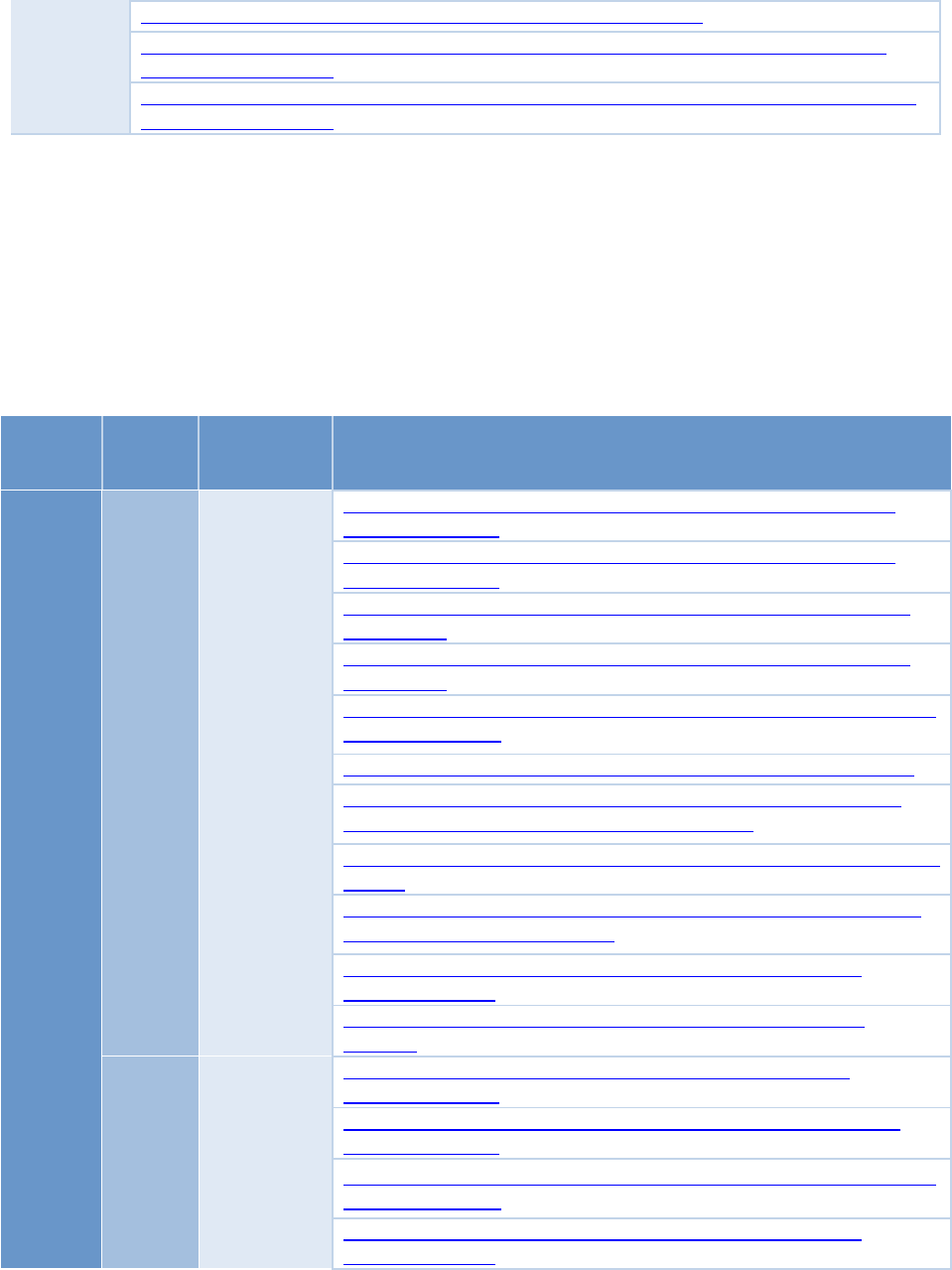
Energy Efficiency Report | 154
Impact Evaluation of 2015 Upstream HVAC Programs (HVAC 1)
Review and Validation of 2015 Pacific Gas and Electric Home Energy Reports Program
Impacts (Final Report)
Review and Validation of 2015 Southern California Edison Home Energy Reports Program
Impacts (Final Report)
As mentioned above, the main driver for impact evaluations during the 2013-2015 program years was the
ESPI mechanism. The two portions of the ESPI Ex-Post Savings Incentive were the Ex-Post Custom and
Ex-Post Deemed. The Ex-Post Deemed portion of the portfolio is identified by the Uncertain Measure List,
which was constant for 2013-2014, but changed in 2015 and will change each year moving forward. The
following table list the ESPI Ex-Post classification grouping, the Uncertain Measures defined for each
program year, and each ESPI impact evaluation report that provided evaluation results for this classification.
Table H-4: Ex-Post Targeted ESPI Classifications and Uncertain Measures and Evaluation Reports
Program
Year(s)
ESPI
Ex-Post
Class
Uncertain
Measure
Impact Evaluation Report(s)
2013-
2014
ESPI
Ex-Post
Custom
NA
2013 Nonresidential Downstream Custom ESPI Lighting Impact
Evaluation Report
2014 Nonresidential Downstream Custom ESPI Lighting Impact
Evaluation Report
2013 Custom Impact Evaluation Industrial, Agricultural, and Large
Commercial
2014 Custom Impact Evaluation Industrial, Agricultural, and Large
Commercial
Impact Evaluation of 2013-14 Upstream and Residential Downstream
Lighting Programs
IALC4 NRNC Whole Building Impact Evaluation Report PY-2013
Review and Validation of 2014 Southern California Edison Home
Energy Reports Program Impacts (Final Report)
SDG&E Home Energy Reports Program 2013 Impact Evaluation ED
Res 3.3
Impact Evaluation of 2014 San Diego Gas & Electric Home Energy
Reports Program (Final Report)
2013-2014 Residential Roadmap Multifamily Focused Impact
Evaluation - Final
Focused Impact Evaluation of the 2013-2014 Home Upgrade
Program
ESPI
Ex-Post
Deemed
CFL
2013 Nonresidential Downstream Deemed Lighting Impact
Evaluation Report
2014 Nonresidential Downstream Deemed ESPI Lighting Impact
Evaluation Report
Impact Evaluation of 2013-14 Upstream and Residential Downstream
Lighting Programs
2013-2014 Residential Roadmap Multifamily Focused Impact
Evaluation - Final

Energy Efficiency Report | 155
Computer
Power Mgt
2014 Nonresidential Downstream Deemed Plug Load PC Power
Management Software ESPI Impact Evaluation Report
De-lamping
2013 Nonresidential Downstream Deemed Lighting Impact
Evaluation Report
2014 Nonresidential Downstream Deemed ESPI Lighting Impact
Evaluation Report
Home
Energy
Reports
2013 PG&E Home Energy Reports Program Review and Validation
of Impact Evaluation ED Res 3.1
Review and Validation of 2014 Pacific Gas and Electric Home Energy
Reports Program Impacts (Final Report)
Home
Energy
Surveys
2013-2014 Residential Roadmap Multifamily Focused Impact
Evaluation - Final
Focused Impact Evaluation of the 2013-2014 Home Upgrade
Program
Home
Energy
Upgrade
2013-2014 Residential Roadmap Multifamily Focused Impact
Evaluation - Final
Focused Impact Evaluation of the 2013-2014 Home Upgrade
Program
HVAC Mini
Net-to-gross Evaluation of 2013-14 Upstream HVAC Programs
(HVAC 1)
HVAC
Quality
Net-to-gross Evaluation of 2013-14 Commercial Quality Maintenance
Programs (HVAC3)
LED
2013 Nonresidential Downstream Deemed Lighting Impact
Evaluation Report
2014 Nonresidential Downstream Deemed ESPI Lighting Impact
Evaluation Report
Impact Evaluation of 2013-14 Upstream and Residential Downstream
Lighting Programs
2013-2014 Residential Roadmap Multifamily Focused Impact
Evaluation - Final
LED
Nightlights
Impact Evaluation of 2013-14 Upstream and Residential Downstream
Lighting Programs
Occupancy
2013 Nonresidential Downstream Deemed Lighting Impact
Evaluation Report
2014 Nonresidential Downstream Deemed ESPI Lighting Impact
Evaluation Report
Impact Evaluation of 2013-14 Upstream and Residential Downstream
Lighting Programs
2013-2014 Residential Roadmap Multifamily Focused Impact
Evaluation - Final
Pipe
Insulation
2013 Nonresidential Downstream Deemed ESPI Net-to-Gross
Evaluation For Sprinkler and Pipe Insulation Measures
2014 Nonresidential Downstream Deemed ESPI Pipe Insulation
Impact Evaluation Report
Pool Pumps
Impact Evaluation of 2013-2014 SDG&E Residential VSD Pool
Pump Program
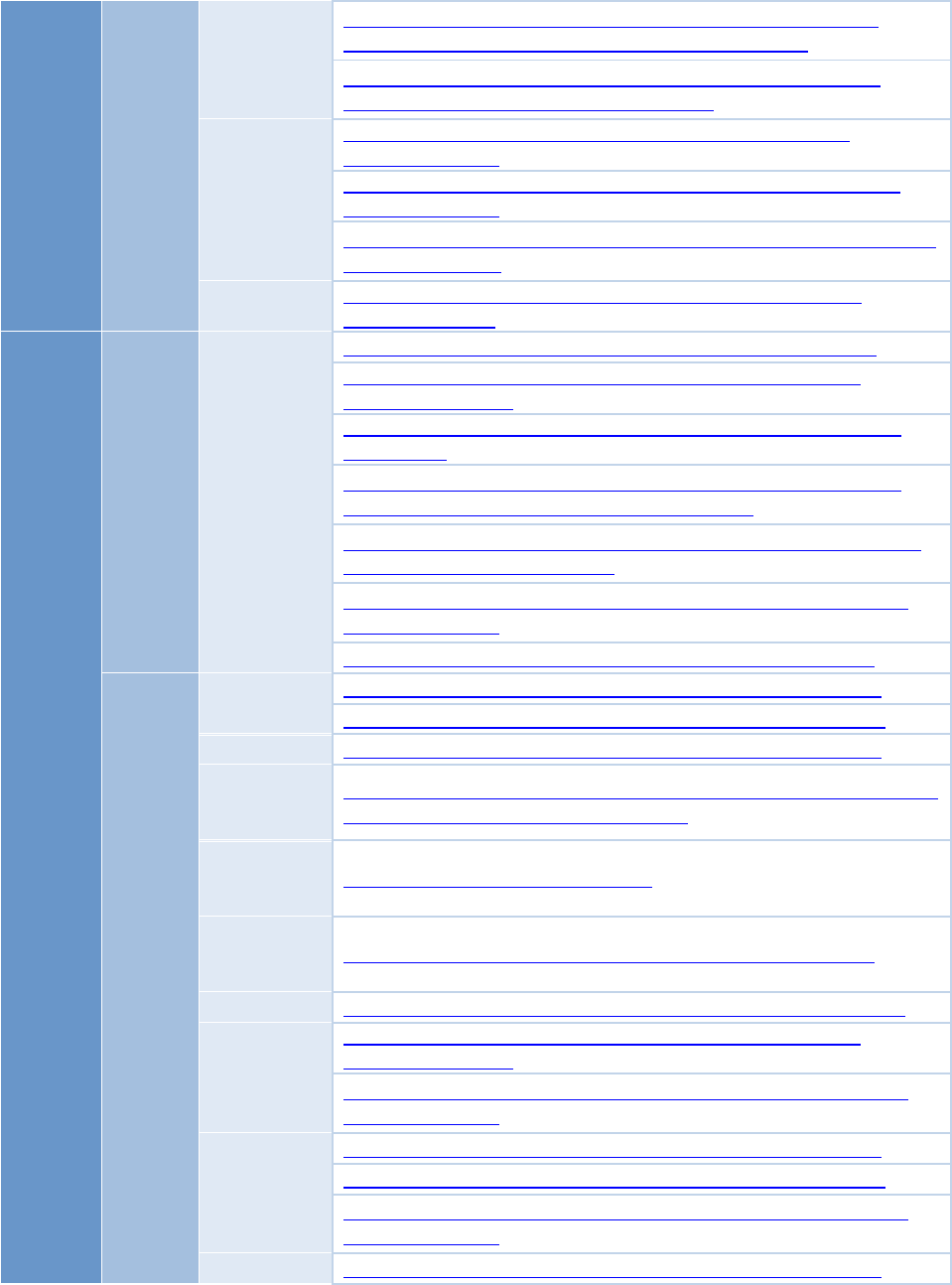
Energy Efficiency Report | 156
Sprinklers
2013 Nonresidential Downstream Deemed ESPI Net-to-Gross
Evaluation For Sprinkler and Pipe Insulation Measures
2014 Nonresidential Downstream Deemed ESPI Low-Pressure
Sprinkler Nozzle Impact Evaluation Report
T5 Linear
Fluorescents
2013 Nonresidential Downstream Deemed Lighting Impact
Evaluation Report
2014 Nonresidential Downstream Deemed ESPI Lighting Impact
Evaluation Report
Impact Evaluation of 2013-14 Upstream and Residential Downstream
Lighting Programs
Water Kits
2013-2014 Residential Roadmap Multifamily Focused Impact
Evaluation - Final
2015
ESPI
Ex-Post
Custom
NA
2015 Nonresidential ESPI Custom Lighting Impact Evaluation
Impact Evaluation of 2015 Commercial Quality Maintenance
Programs (HVAC3)
2015 Custom Impact Evaluation Industrial, Agriculture and Large
Commercial
Review and Validation of 2015 Southern California Edison Home
Energy Reports Program Impacts (Final Report)
Impact Evaluation of 2015 San Diego Gas & Electric Home Energy
Reports Program (Final Report)
2013-2015 Residential Roadmap 2015 Multifamily Focused Impact
Evaluation Report
2015 Single-family Home Energy Upgrade Impact Evaluation*
ESPI
Ex-Post
Deemed
CFL > 30W
2015 Nonresidential ESPI Deemed Lighting Impact Evaluation
2015 Upstream and Residential Downstream Lighting Programs
De-lamping
2015 Nonresidential ESPI Deemed Lighting Impact Evaluation
Home
Energy
Reports
Review and Validation of 2015 Pacific Gas and Electric Home Energy
Reports Program Impacts (Final Report)
Home
Energy
Survey
2015 SCE HEES Impact Evaluation
Home
Energy
Upgrade
2015 Single-family Home Energy Upgrade Impact Evaluation*
HVAC Mini
Impact Evaluation of 2015 Upstream HVAC Programs (HVAC 1)
HVAC
Quality
Impact Evaluation of 2015 Commercial Quality Maintenance
Programs (HVAC3)
2013-2015 Residential Roadmap 2015 Multifamily Focused Impact
Evaluation Report
LED
2015 Nonresidential ESPI Deemed Lighting Impact Evaluation
2015 Upstream and Residential Downstream Lighting Programs
2013-2015 Residential Roadmap 2015 Multifamily Focused Impact
Evaluation Report
LED
2015 Nonresidential ESPI Deemed Lighting Impact Evaluation

Energy Efficiency Report | 157
Outdoor
2013-2015 Residential Roadmap 2015 Multifamily Focused Impact
Evaluation Report
LED
Streetlights
2015 Nonresidential ESPI Deemed Lighting Impact Evaluation
Occupancy
Sensors
2015 Nonresidential ESPI Deemed Lighting Impact Evaluation
2013-2015 Residential Roadmap 2015 Multifamily Focused Impact
Evaluation Report
Pipe
Insulation
2015 Nonresidential Downstream ESPI Deemed Pipe Insulation
Impact Evaluation
Pool Covers
2015 Nonresidential Downstream ESPI Deemed Pool Cover Impact
Evaluation
Sprinklers
2015 Nonresidential Downstream ESPI Deemed Sprinkler Impact
Evaluation
Water Kits
2013-2015 Residential Roadmap 2015 Multifamily Focused Impact
Evaluation Report
In contrast to prior program cycles, evaluation results for the 13-15 cycle were provided by the impact
evaluation leads in a similar format to that provided by the PAs. First, the claims data for each program year
was partitioned into separate impact evaluation reports. Next, impact evaluation teams were responsible for
providing claim level results to the data processing team using a standardized template. The data processing
team performed many quality checks, however, in addition, the standardized data template was used for
automated generation of the Impact Evaluation Standardized Reporting (IESR) appendices printed in each
impact evaluation report. These appendix tables served as a quality check for the impact evaluation teams.
This information is used to generate the ex-post dataset.
Following standardized claim level results reporting there is one final step in evaluation data reporting. This
final step covers submission of all raw and processed evaluation data, analysis and processing code, and field
tracking data to the online Energy Division data library. The data library is maintained by Energy Division
for future reference for evaluation activities and for savings estimation analysis (i.e. ex ante values for work
papers or DEER updates).
Creation of Ex-Post Dataset
The payments from the ESPI mechanism are driven by a combined 2013-2015 ex post dataset. This dataset
contains both ex ante and ex post savings values as well as all parameters necessary for their calculations. The
basis of the ex post dataset are the quarterly tracking data claims (described in detail in Appendix G). Once
the claims have been submitted by the PAs to the CPUC, and passed all quality control checks, they form the
ex ante portion of the ex post database. The ex post portion of the dataset is provided by the previously
mentioned ex post evaluations. These ESPI impact evaluation reports, overseen by the CPUC, were
performed on custom measures and specific deemed measures with uncertain ex ante parameter values.
Each ex ante claim submitted throughout 2013-2015 was assigned to an individual impact evaluation report
where appropriate. Each claims subject to ex post evaluation was assigned to exactly one evaluation report.
Then an impact evaluation specific database was generated and posted to Energy Division Central Server
(EDCS) Smartfile for each evaluation teams to fill out claim level evaluation results. These databases were
filled out by evaluators, and posted in return on EDCS Smartfile. All databases complete with ex post results,
Energy Efficiency Report | 158
were then downloaded and run through iterative and through quality control checks to verify consistent and
accurate results. All impact evaluation specific databases are combined with each other and those claims not
subject to ex post evaluation to create a final ex post database.
Each claim was identified as either being available for ex post evaluation or not. The following decision tree
shows how ED staff determined the situations in which a claim was classified.

Energy Efficiency Report | 159
Appendix I: Order-Independent Impacts of Ex Post Parameter updates on
Ex Ante Reported Parameters.
The following graphs demonstrate the quantitative impact of updating ex-ante reported impact parameters to
ex-post evaluated impact parameters. These “waterfall” figures show both gross and net savings, and
illustrate quantitative drivers behind ex ante and ex post discrepancies. In past evaluations, such
information had often been reported with tabular data, equations, and contextual narrative.
Furthermore, past impact evaluations would assess ex ante versus ex post differences at the gross level,
then estimate ex post net-to-gross ratios, and finally provide a net savings estimate. In this evaluation
cycle, a new methodology was developed
167
such that steps are order-independent and for two of three
domains: gross and net. (The hybrid domain, described in the whitepaper, was not used in this
appendix.)
This new methodology created an order–independent graphical representation of the impacts of ex post
updates by combining parameters, which ensures that the impacts represented do not depend on the order in
which the ex-post evaluated parameters update and replace ex-ante reported parameters. Combining
parameters for individual waterfall steps results in each step of the waterfall representing the quantitative
impact of updating multiple ex-ante parameters to ex-post parameters, rather than just an individual
parameter.
The gross waterfall graphics show the impact of parameter updates on gross savings and the combined effect
of the NTGR. Because many evaluation stakeholders (e.g. regulators, policymakers, and ratepayers) are
better served by an understanding of savings and adjustments on a net basis, the net waterfall first
translates from gross to net and then shows the impact of parameter updates on net savings.
For detailed information on this parameter update methodology, please refer to the white paper
“Development of Order-Independent Waterfall Graphics to Enable Comprehensive Understanding of
Impact Evaluation Results.”
167
“Development of Order-Independent Waterfall Graphics to Enable Comprehensive Understanding of Impact Evaluation
Results.” 2017. Adam M. Scheer and Robert Kasman (PG&E) James Gilll (Itron Consulting.)
https://pda.energydataweb.com/#/documents/1958/view

Energy Efficiency Report | 160
Figure I-1a: Statewide Evaluated Gross Waterfall First Year - Electric (GWh)
Figure I-1b: Statewide Evaluated Net Waterfall First Year - Electric (GWh)
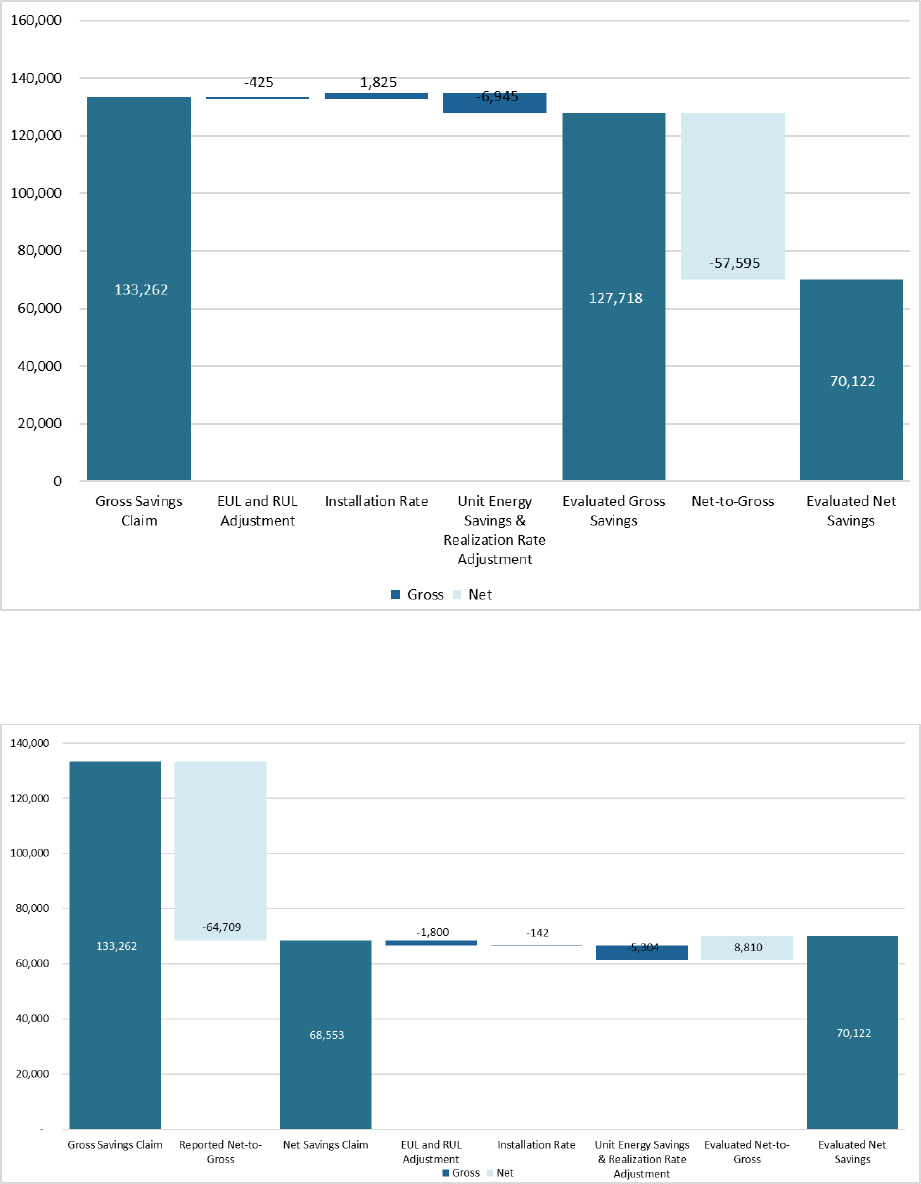
Energy Efficiency Report | 161
Figure I-2a: Statewide Evaluated Gross Waterfall Lifecycle - Electric (GWh)
Figure I-2b: Statewide Evaluated Net Waterfall Lifecycle - Electric (GWh)

Energy Efficiency Report | 162
Figure I-3a: PGE Evaluated Gross Waterfall First Year - Electric (GWh)
Figure I-3b: PGE Evaluated Net Waterfall First Year - Electric (GWh)
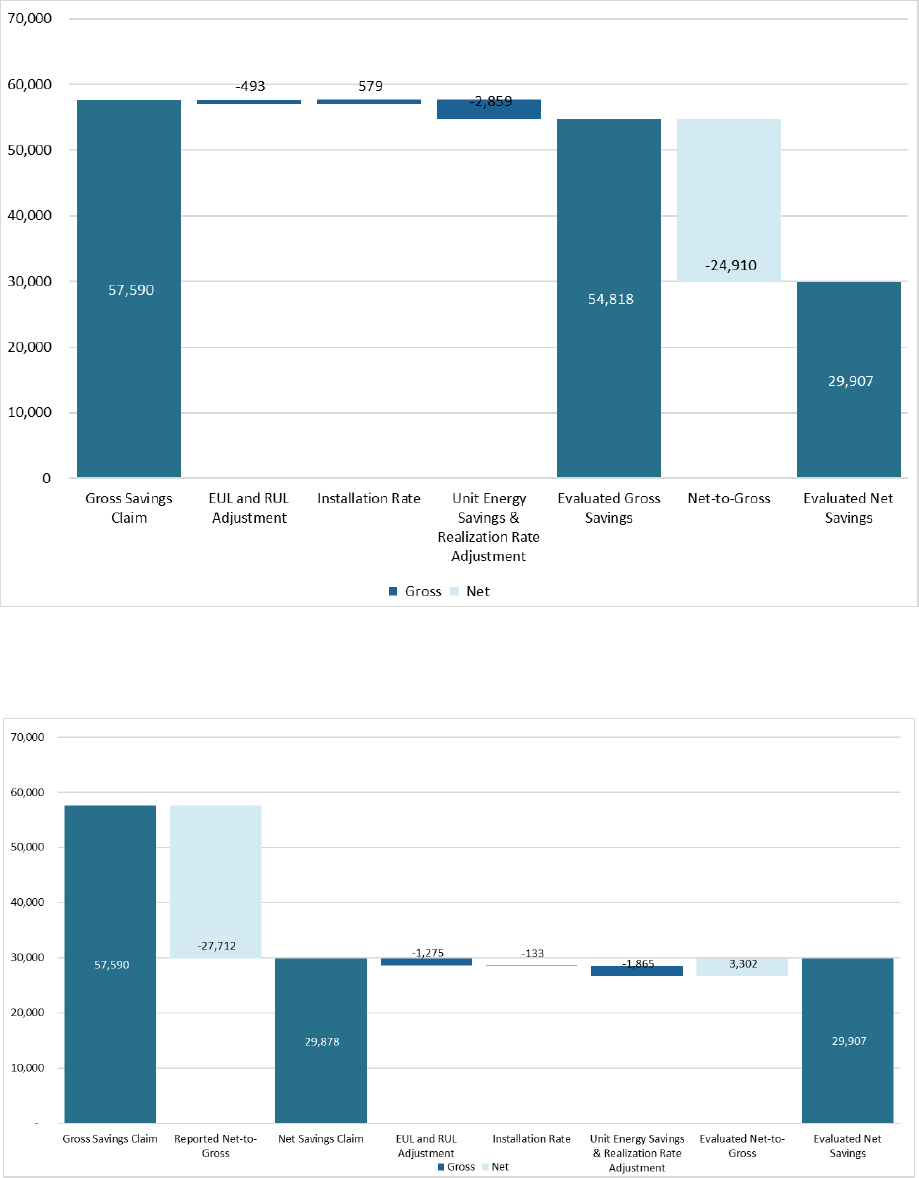
Energy Efficiency Report | 163
Figure I-4a: PGE Evaluated Gross Waterfall Lifecycle - Electric (GWh)
Figure I-4b: PGE Evaluated Net Waterfall Lifecycle - Electric (GWh)
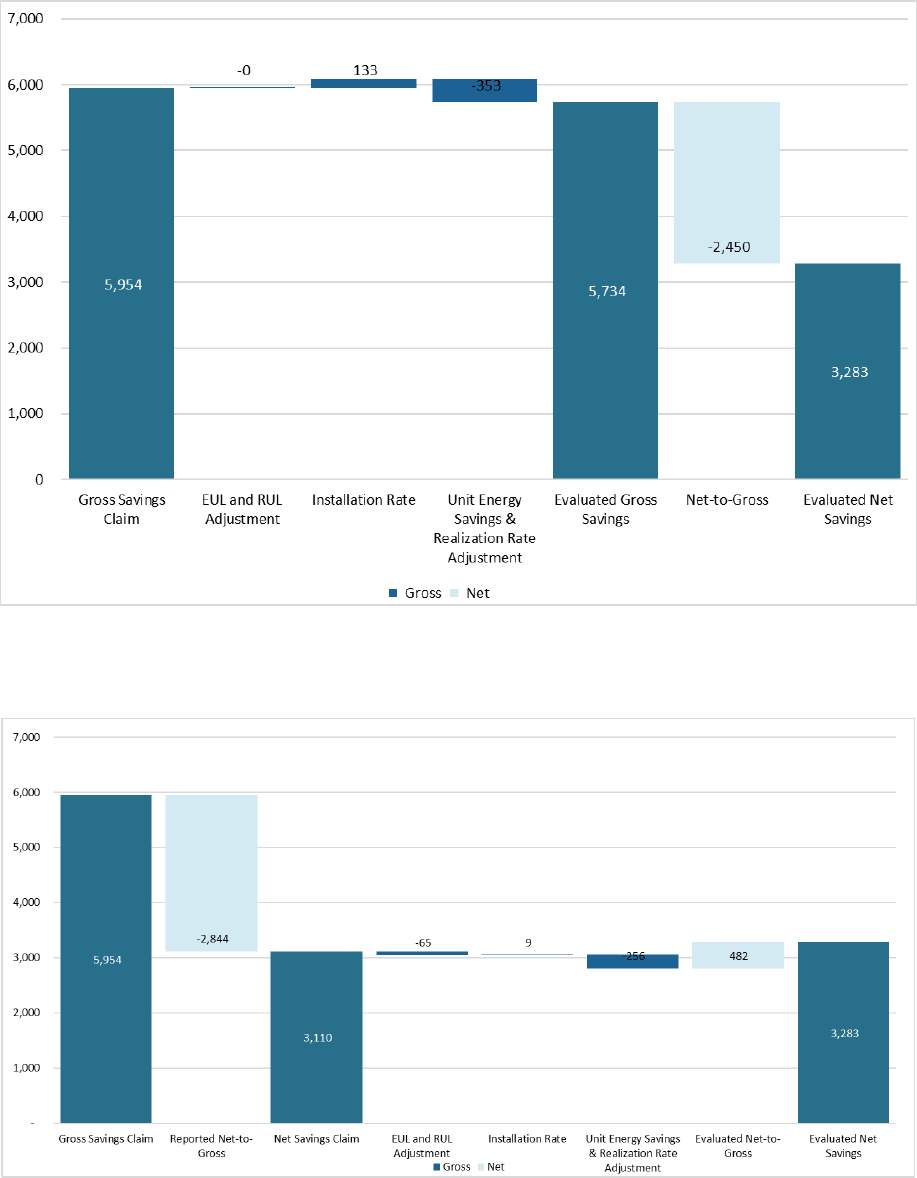
Energy Efficiency Report | 164
Figure I-5a: SCE Evaluated Gross Waterfall First Year - Electric (GWh)
Figure I-5b: SCE Evaluated Net Waterfall First Year - Electric (GWh)
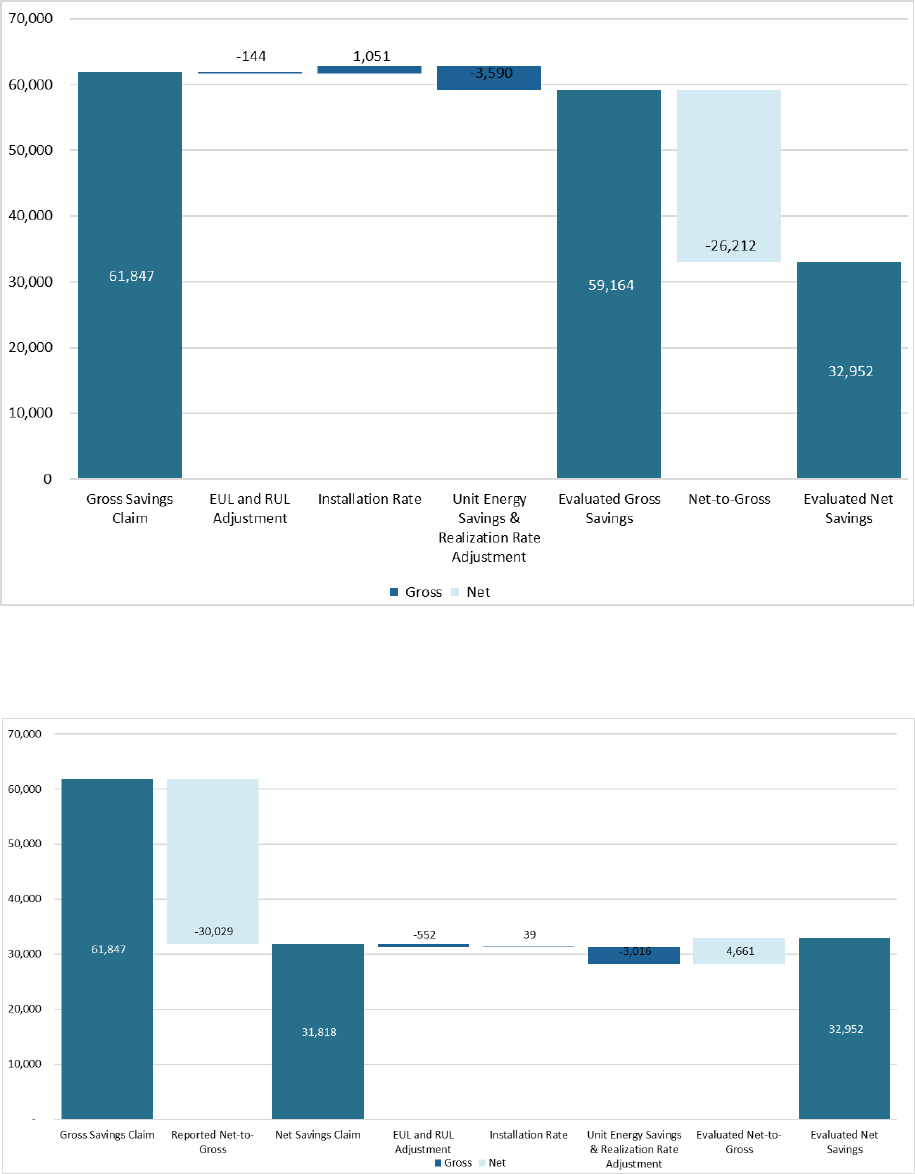
Energy Efficiency Report | 165
Figure I-6a: SCE Evaluated Gross Waterfall Lifecycle - Electric (GWh)
Figure I-6b: SCE Evaluated Net Waterfall Lifecycle - Electric (GWh)
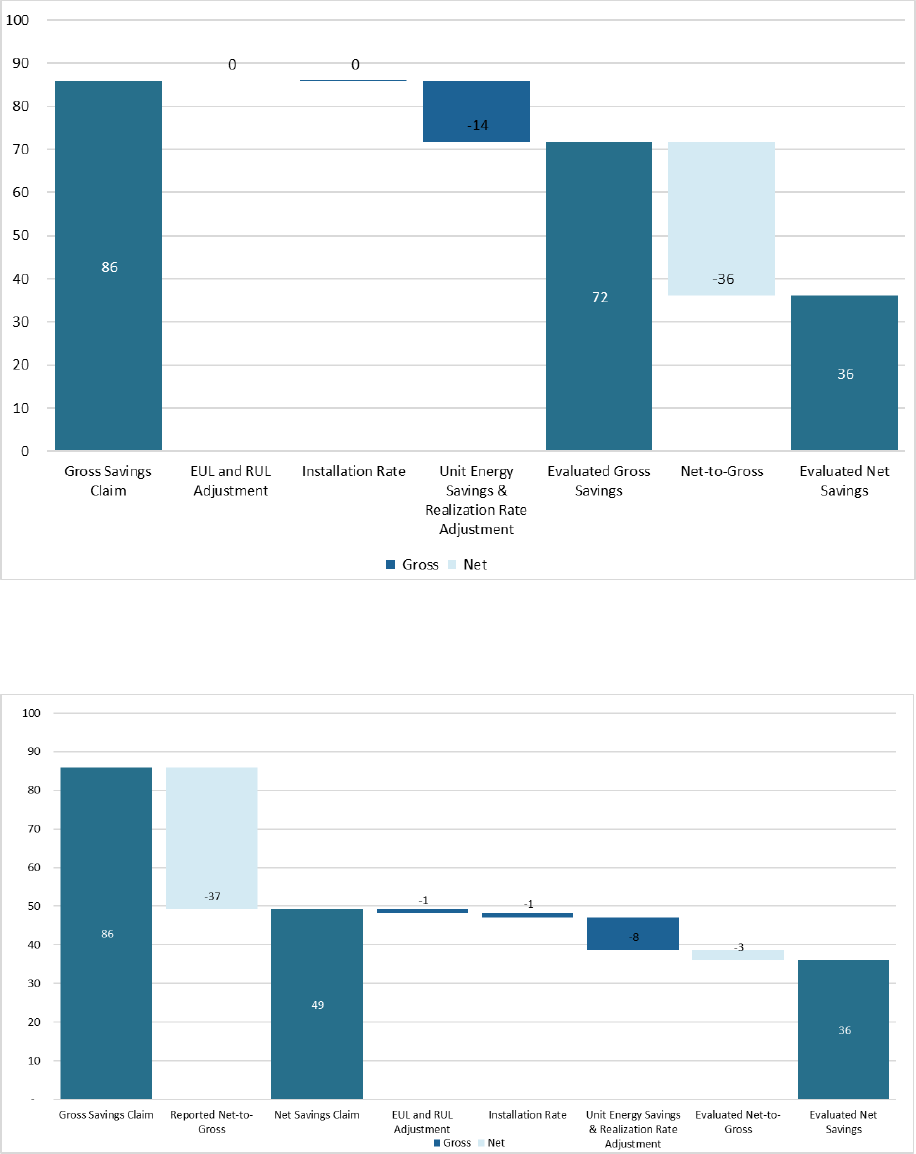
Energy Efficiency Report | 166
Figure I-7a: SCG Evaluated Gross Waterfall First Year - Natural Gas (MMTherms)
Figure I-7b: SCG Evaluated Net Waterfall First Year - Natural Gas (MMTherms)

Energy Efficiency Report | 167
Figure I-8a: SCG Evaluated Gross Waterfall Lifecycle - Natural Gas (MMTherms)
Figure I-8b: SCG Evaluated Net Waterfall Lifecycle - Natural Gas (MMTherms)

Energy Efficiency Report | 168
Figure I-9a: SDGE Evaluated Gross Waterfall First Year - Electric (GWh)
Figure I-9b: SDGE Evaluated Net Waterfall First Year - Electric (GWh)
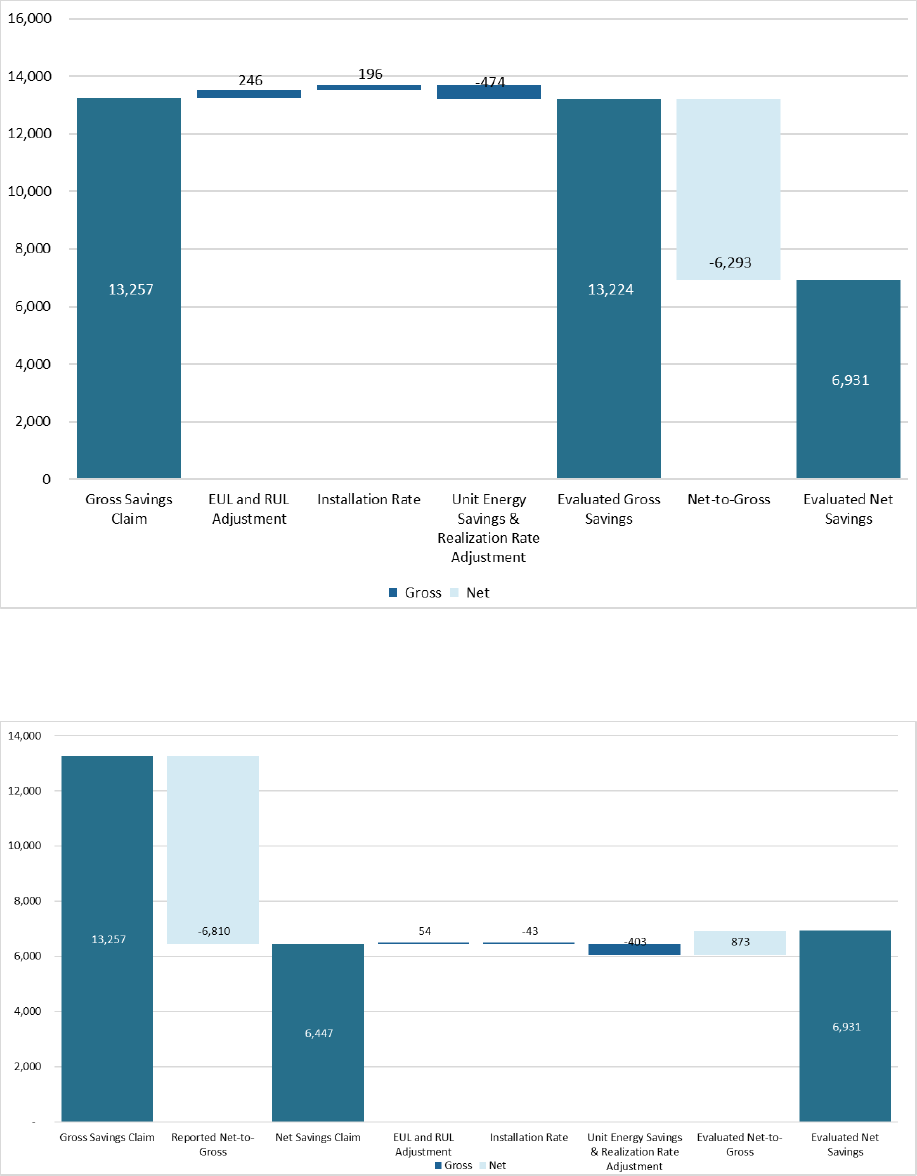
Energy Efficiency Report | 169
Figure I-10a: SDGE Evaluated Gross Waterfall Lifecycle - Electric (GWh)
Figure I-10b: SDGE Evaluated Net Waterfall Lifecycle - Electric (GWh)
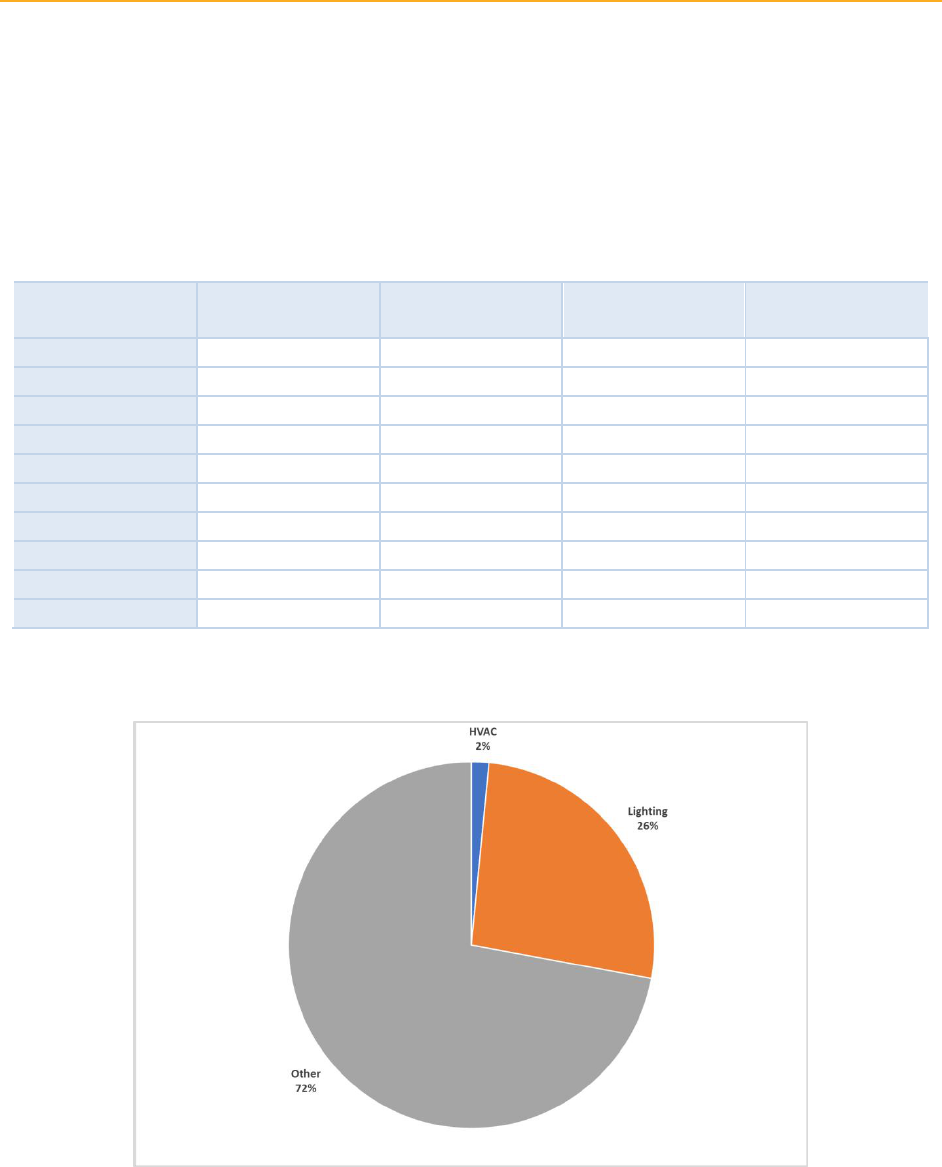
Energy Efficiency Report | 170
Appendix J: Chapter Data Overlaps
An excel file containing the data used in this appendix is available.
The 2013-2015 Evaluation Report chapters present findings from the 2013-2015 energy efficiency evaluation
studies by sector -- residential, commercial, industrial and agricultural – but also by end uses such as lighting
and HVAC, which provide substantial savings across market sectors. This appendix provides an explanation
of the relative impacts of these end uses on each market sector.
Table J-1: Savings Impacts of Lighting and HVAC Measures on Market Sectors
Chapter Sector
Chapter End
Use
First Year
Gross MW
Lifecycle Gross
GWhEval
Lifecycle Gross
MMThEval
Residential
HVAC
61.1
721.9
20.4
Residential
Lighting
135.1
12476.6
-229.8
Other
Other
0.0
0.0
0.0
Residential
Other
850.2
34116.7
379.7
Commercial
Lighting
271.0
13750.1
-36.3
Commercial
Other
878.9
53357.0
907.7
Commercial
HVAC
97.1
5968.4
121.3
Industrial & Ag
Lighting
18.7
1274.2
-1.4
Industrial & Ag
Other
77.1
5096.9
519.4
Industrial & Ag
HVAC
18.4
955.7
25.5
Figure J-1: Residential Chapter Lifecycle Gross Evaluated Electricity Savings by End Use Chapters
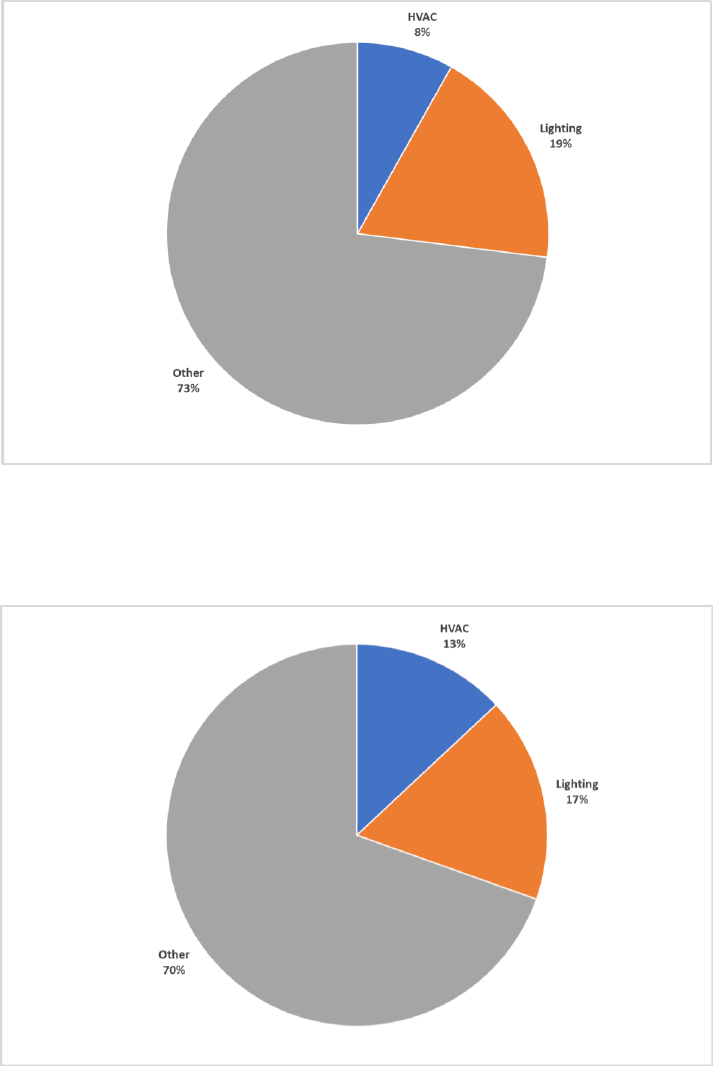
Energy Efficiency Report | 171
Figure J-2: Commercial Chapter Lifecycle Gross Evaluated Electricity Savings by End Use Chapters
Figure J-3: Industrial & Agriculture Chapter Lifecycle Gross Evaluated Electricity Savings by End Use
Chapters

Energy Efficiency Report | 172
Figure J-4: Lighting Chapter Lifecycle Gross Evaluated Electricity Savings by Market Sector Chapters
Figure J-5: HVAC Chapter Lifecycle Gross Evaluated Electricity Savings by Market Sector Chapters
